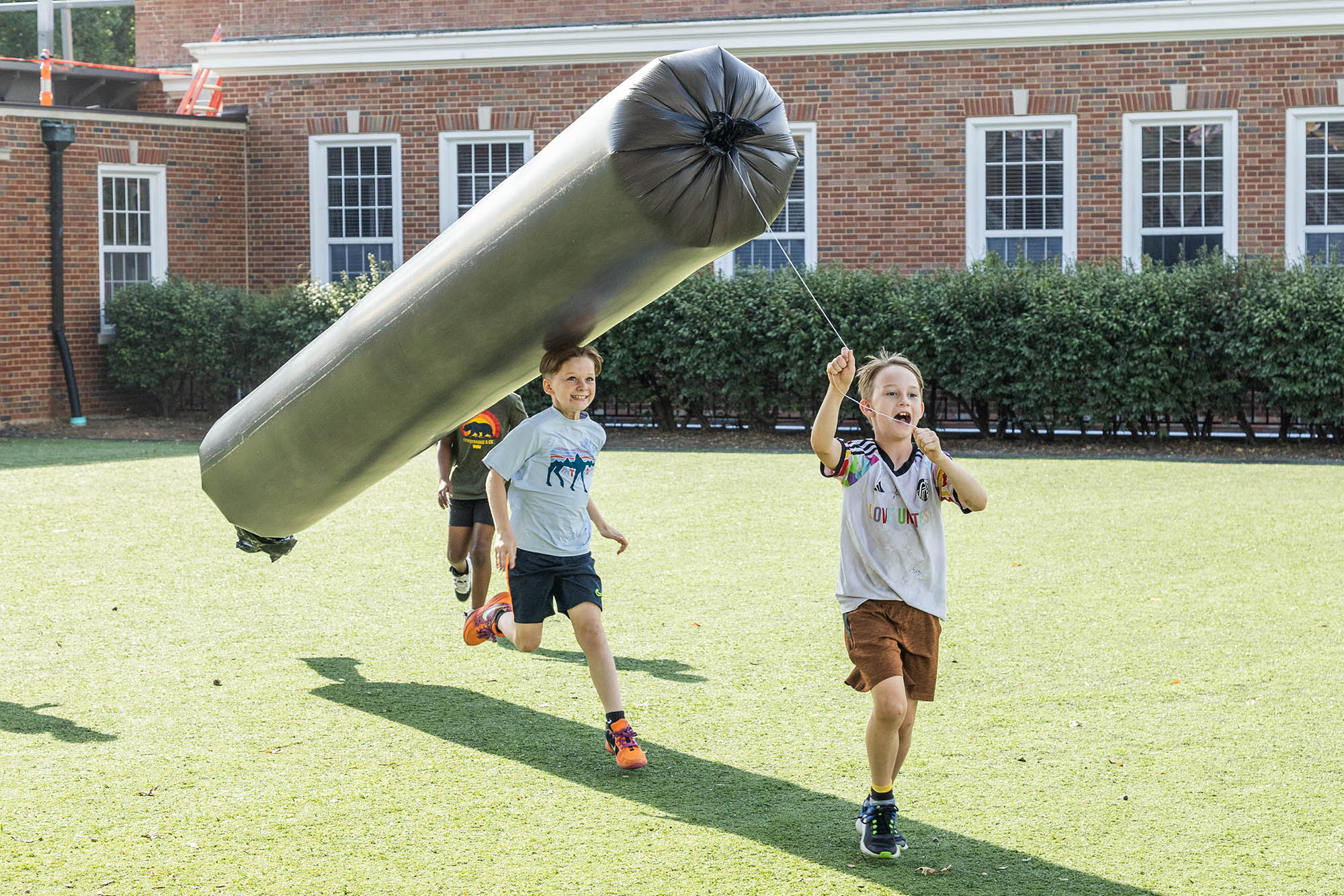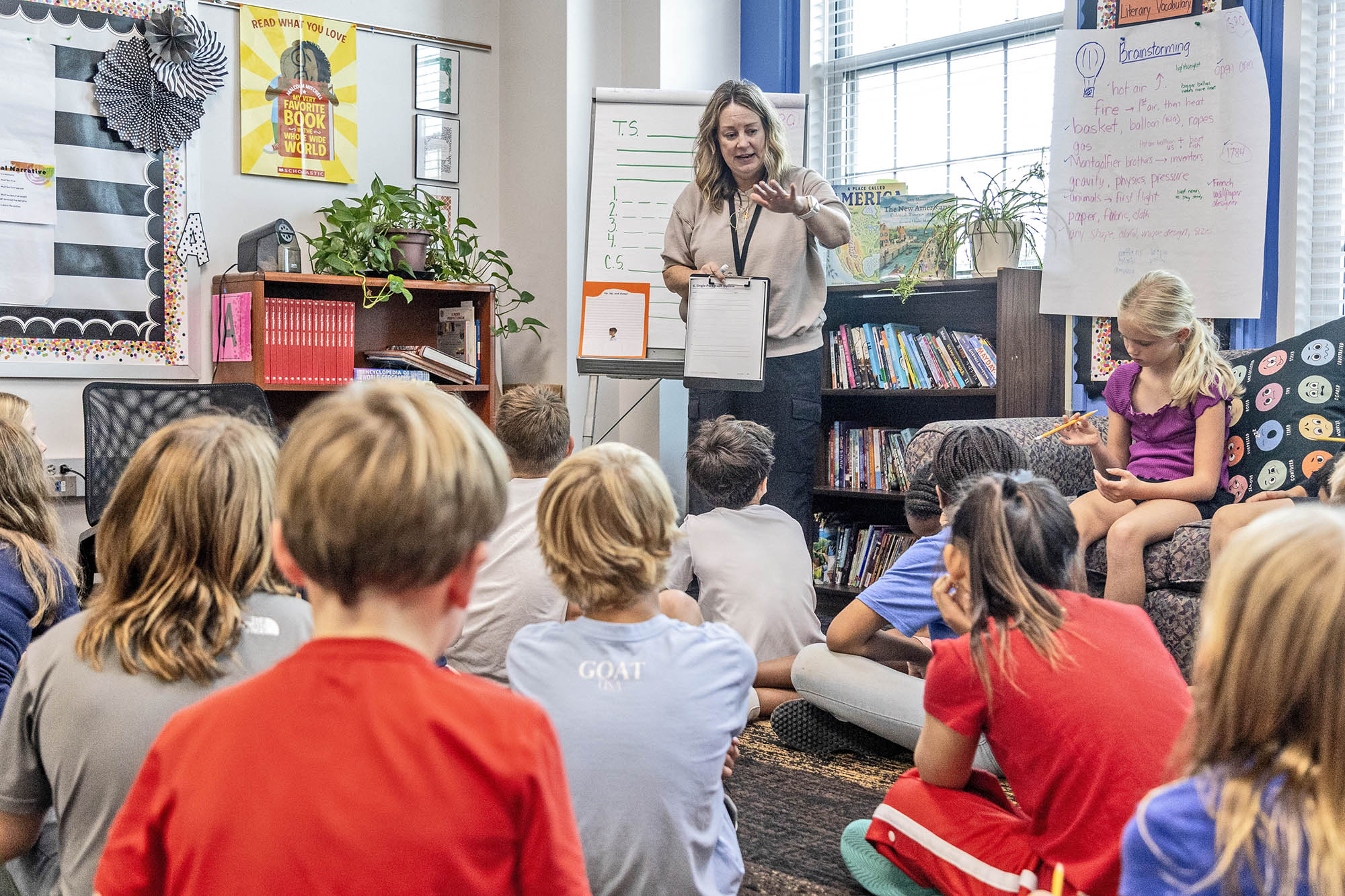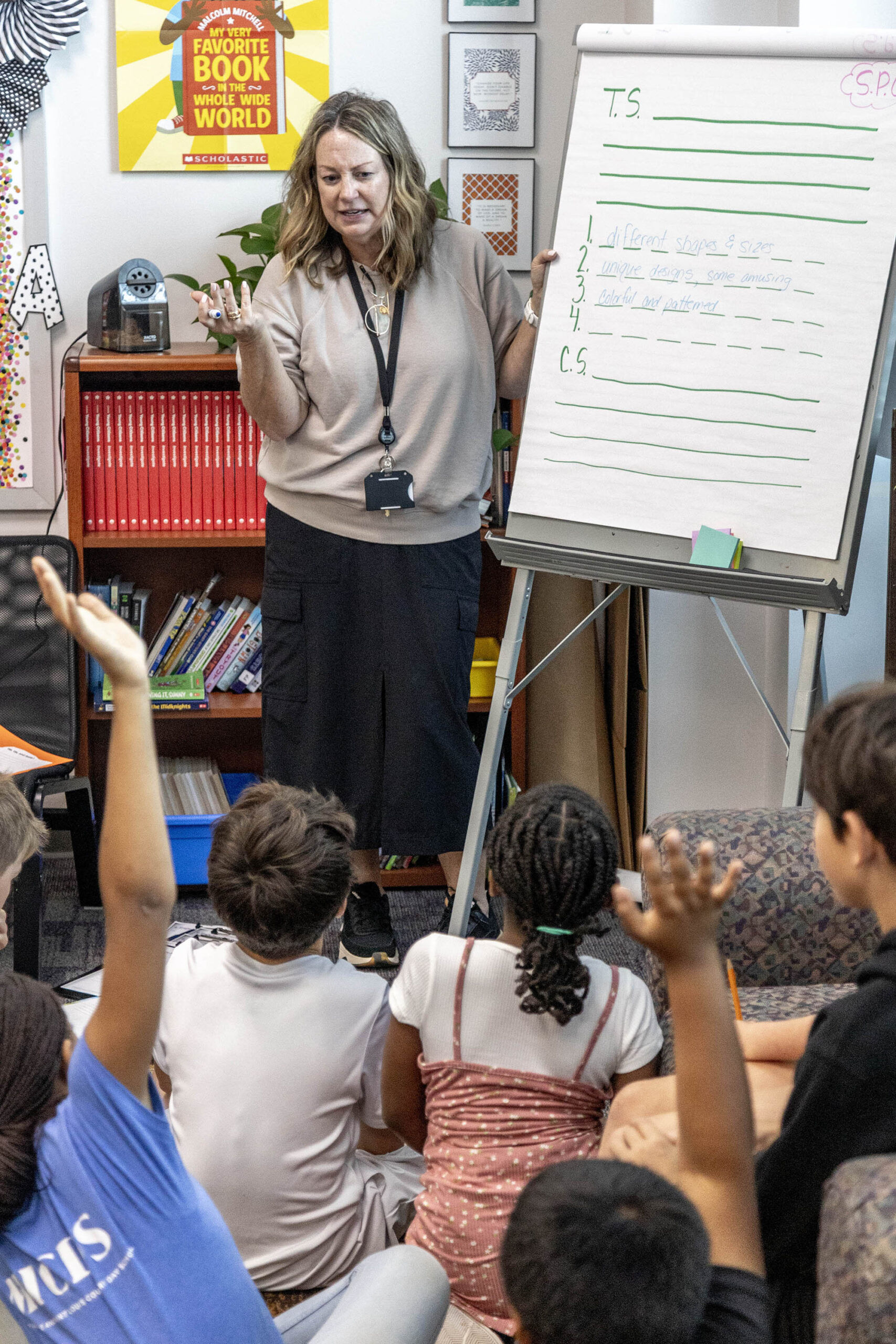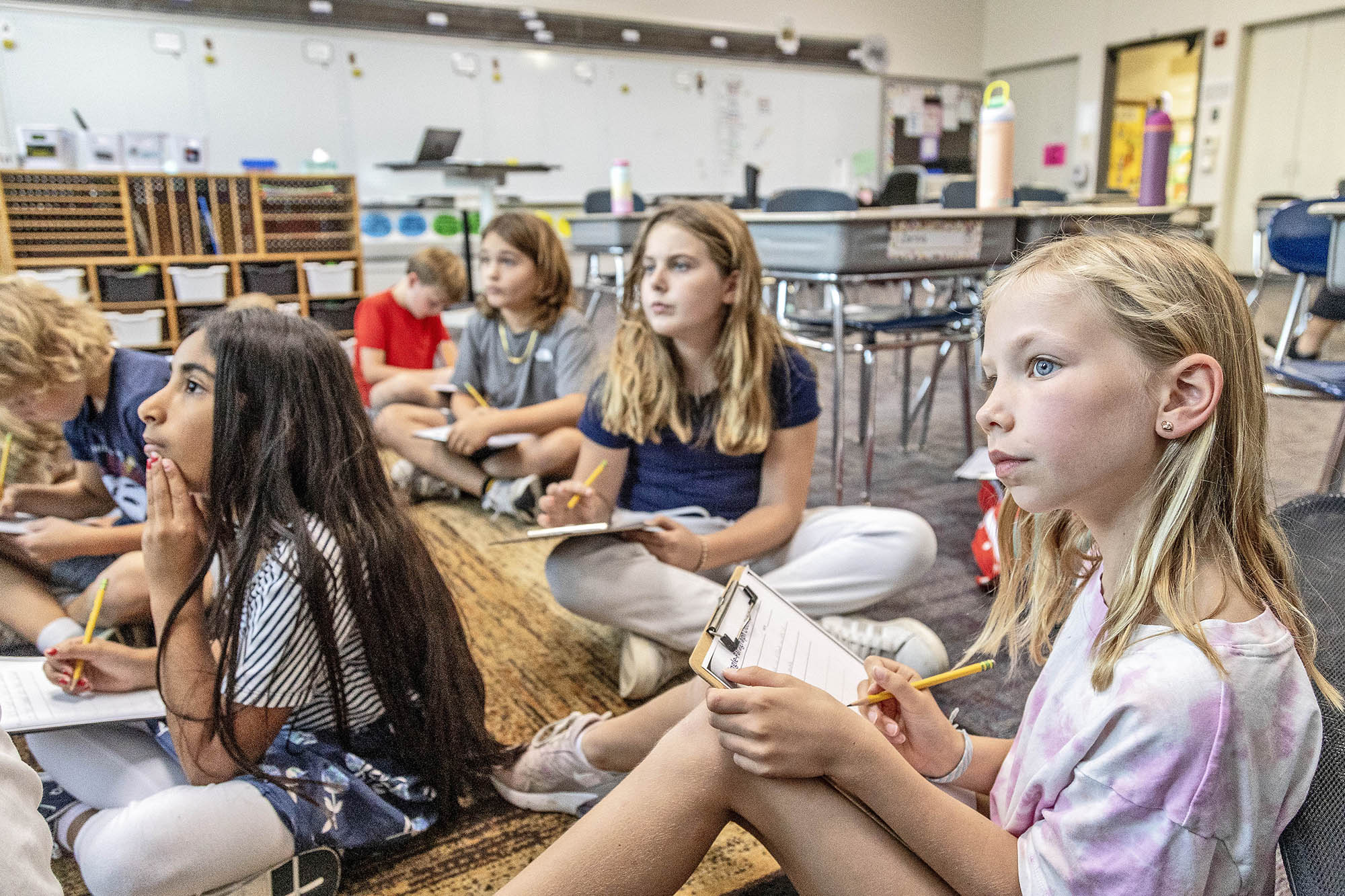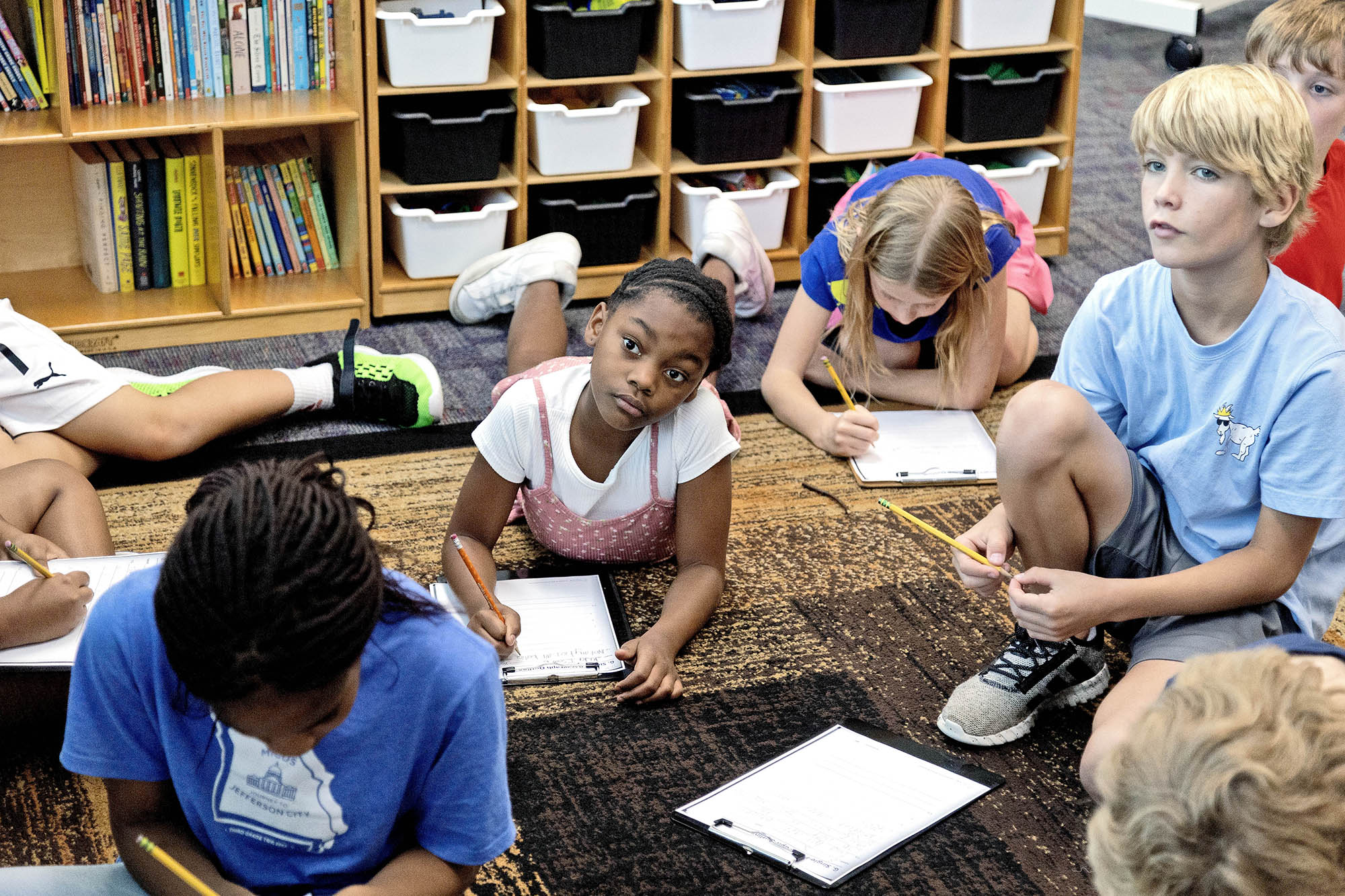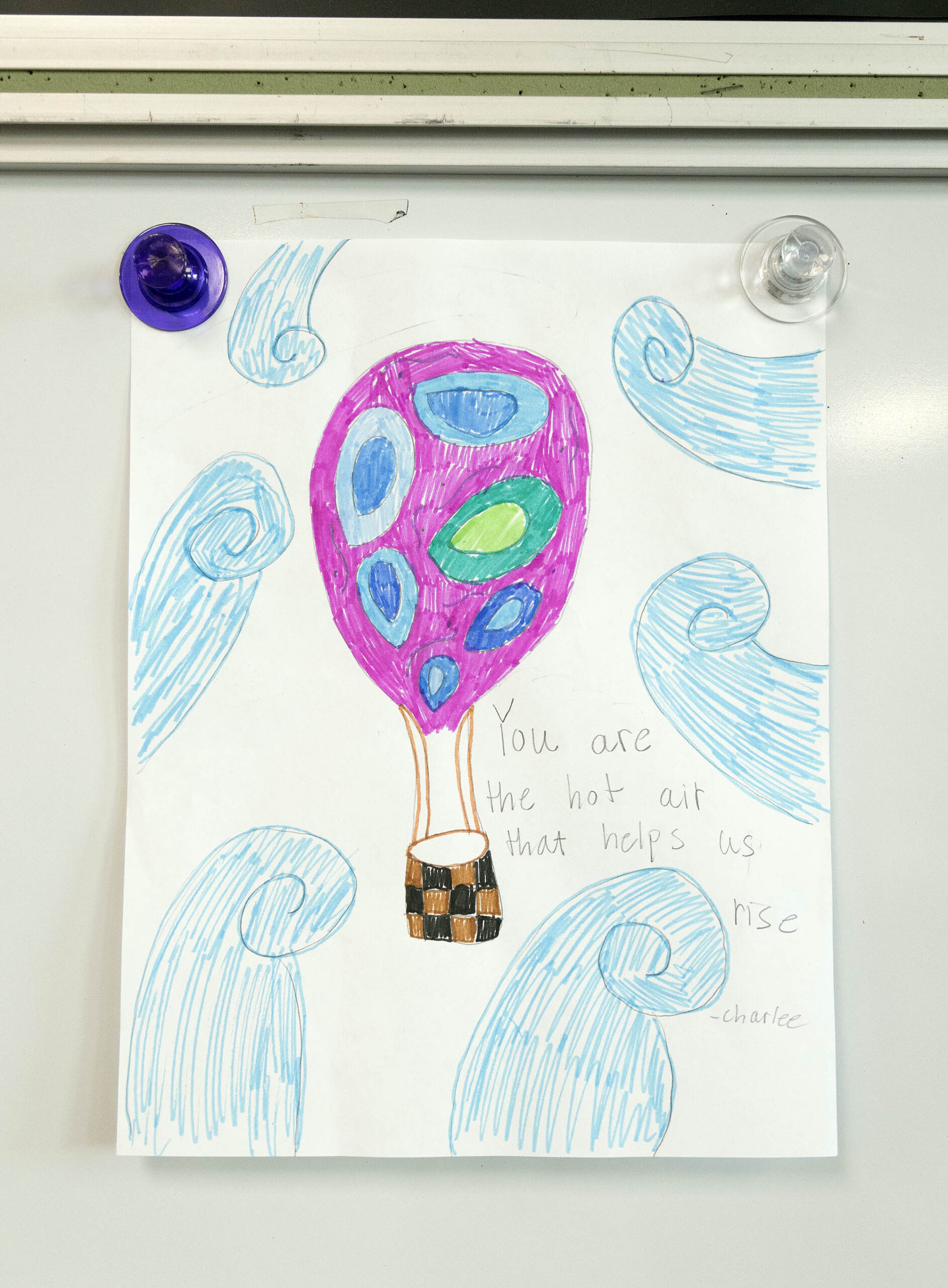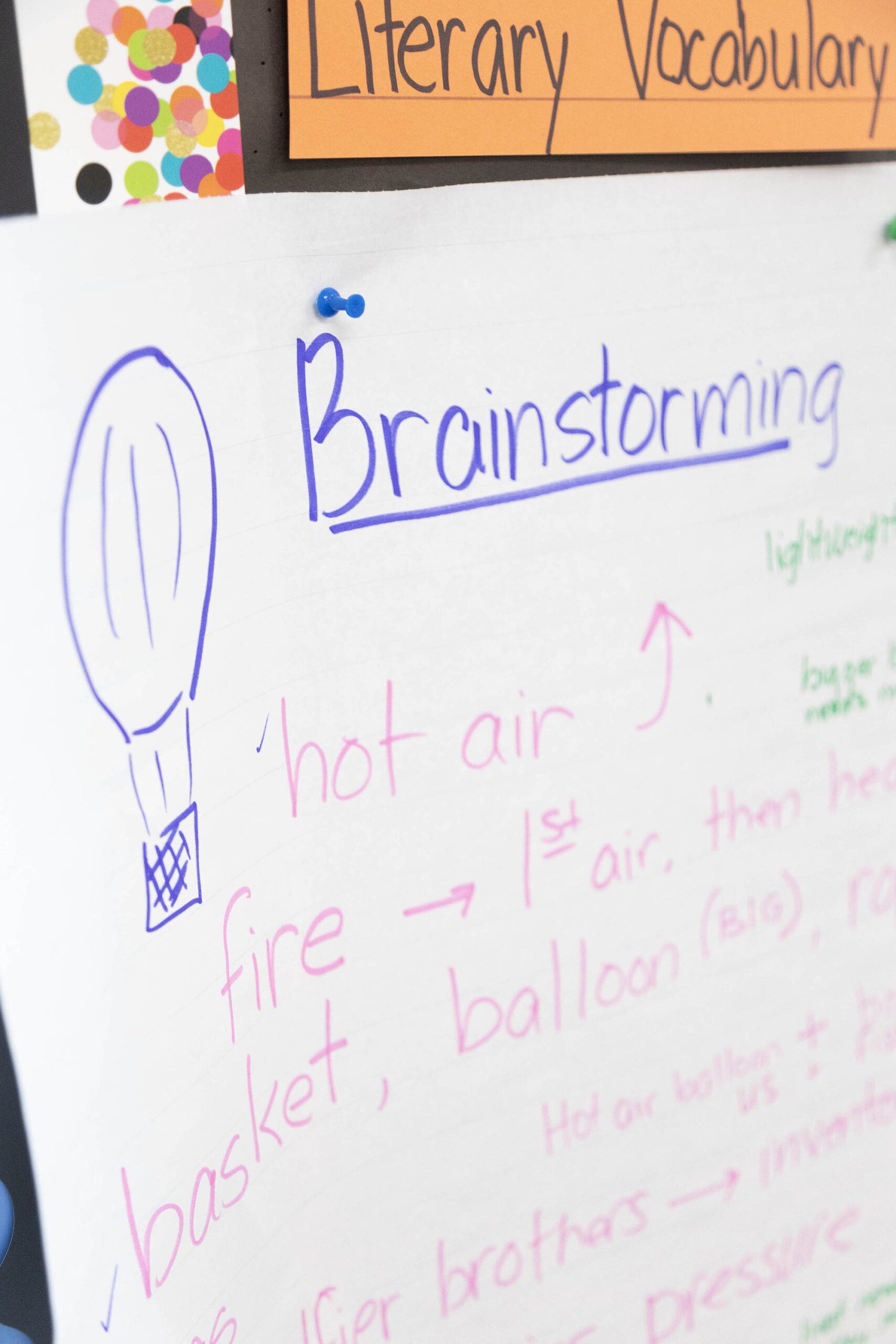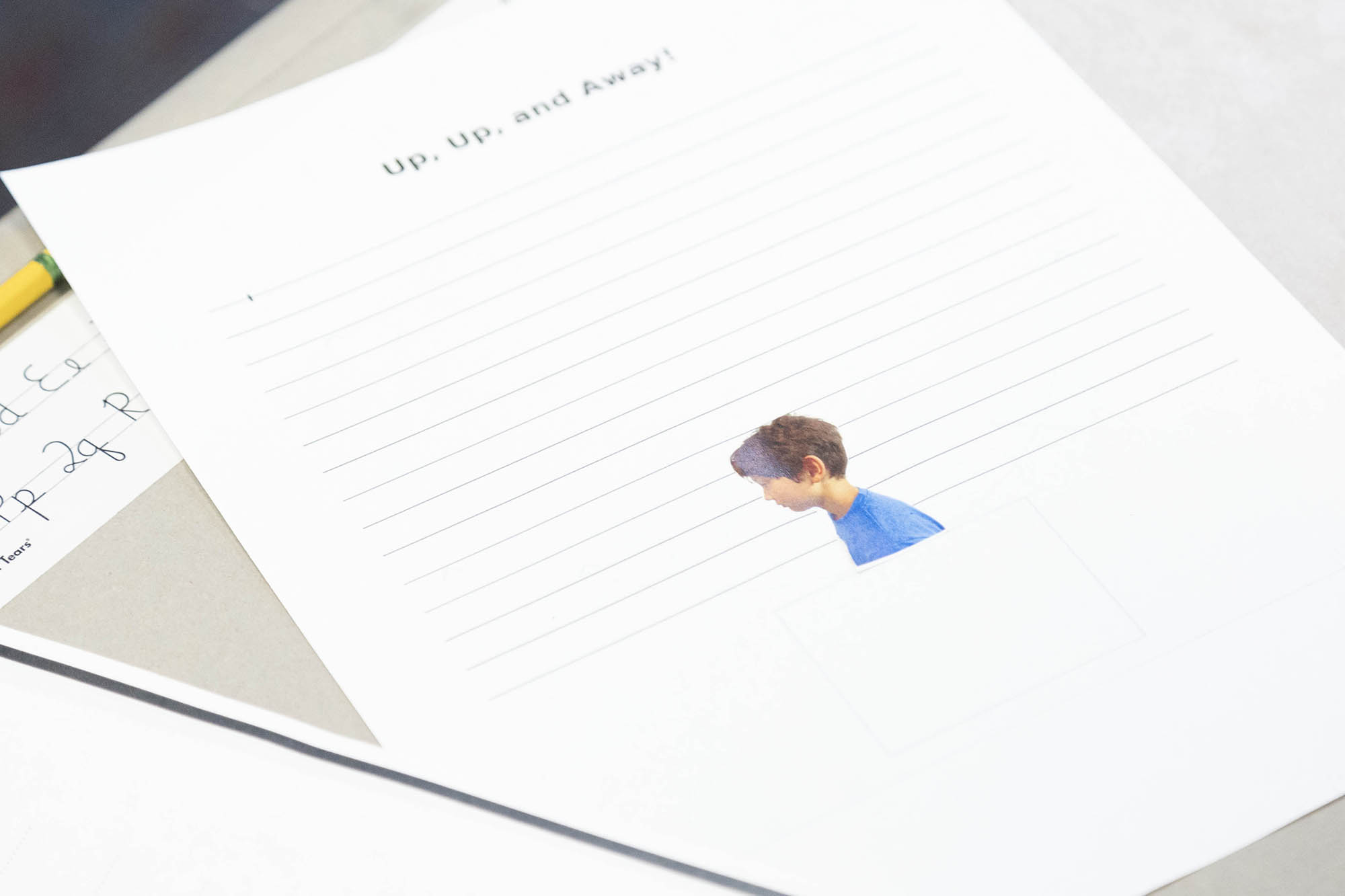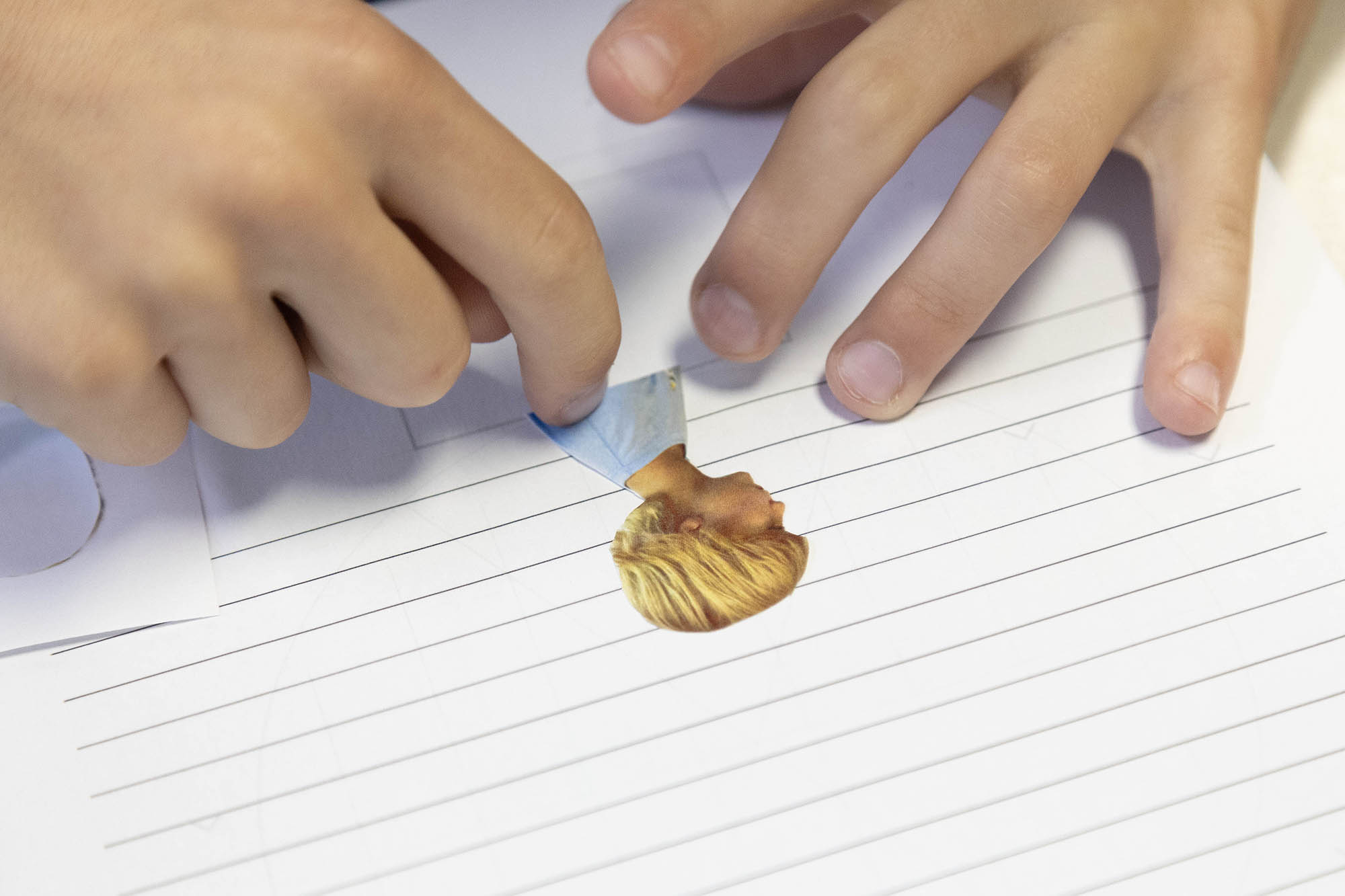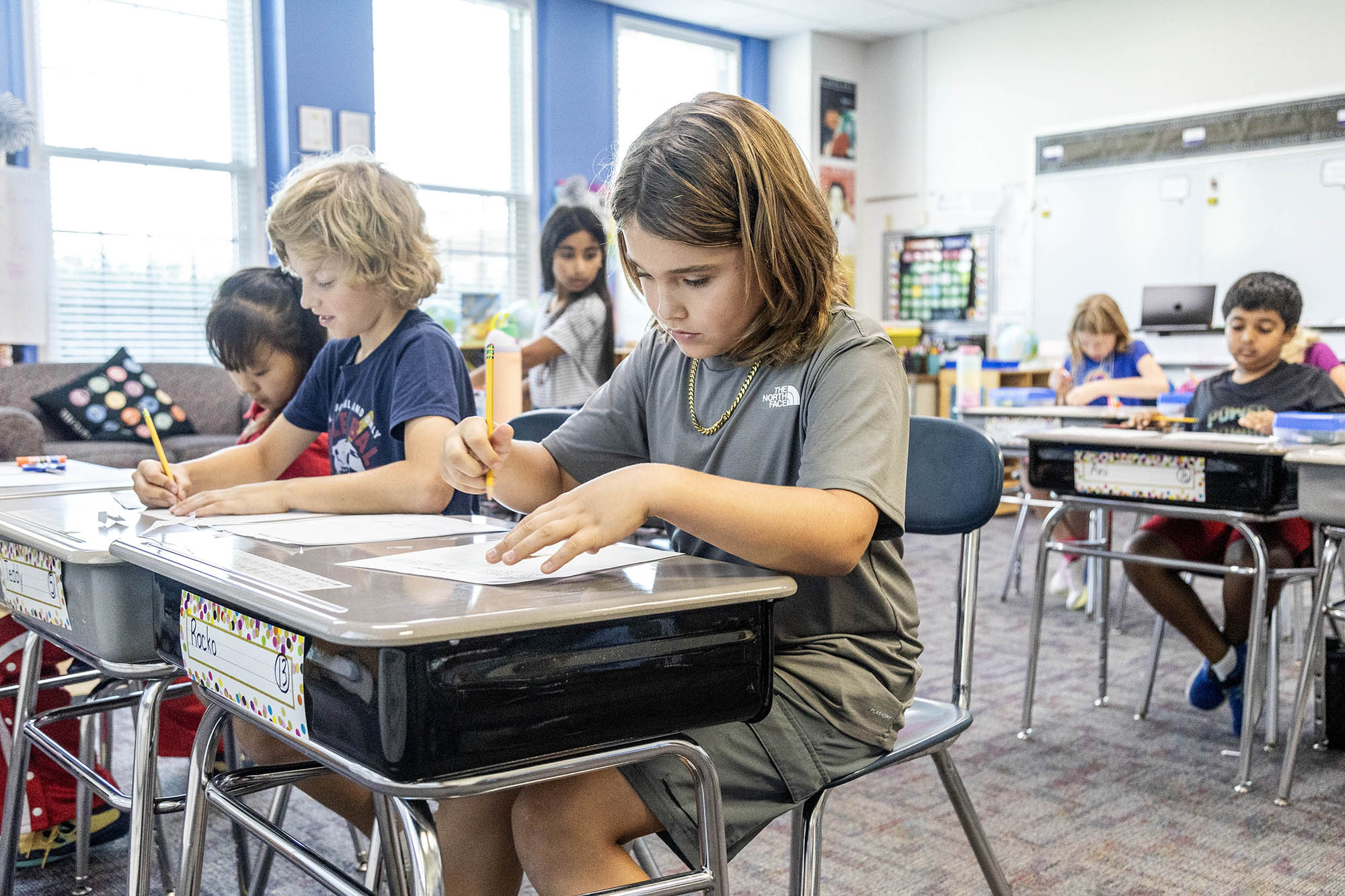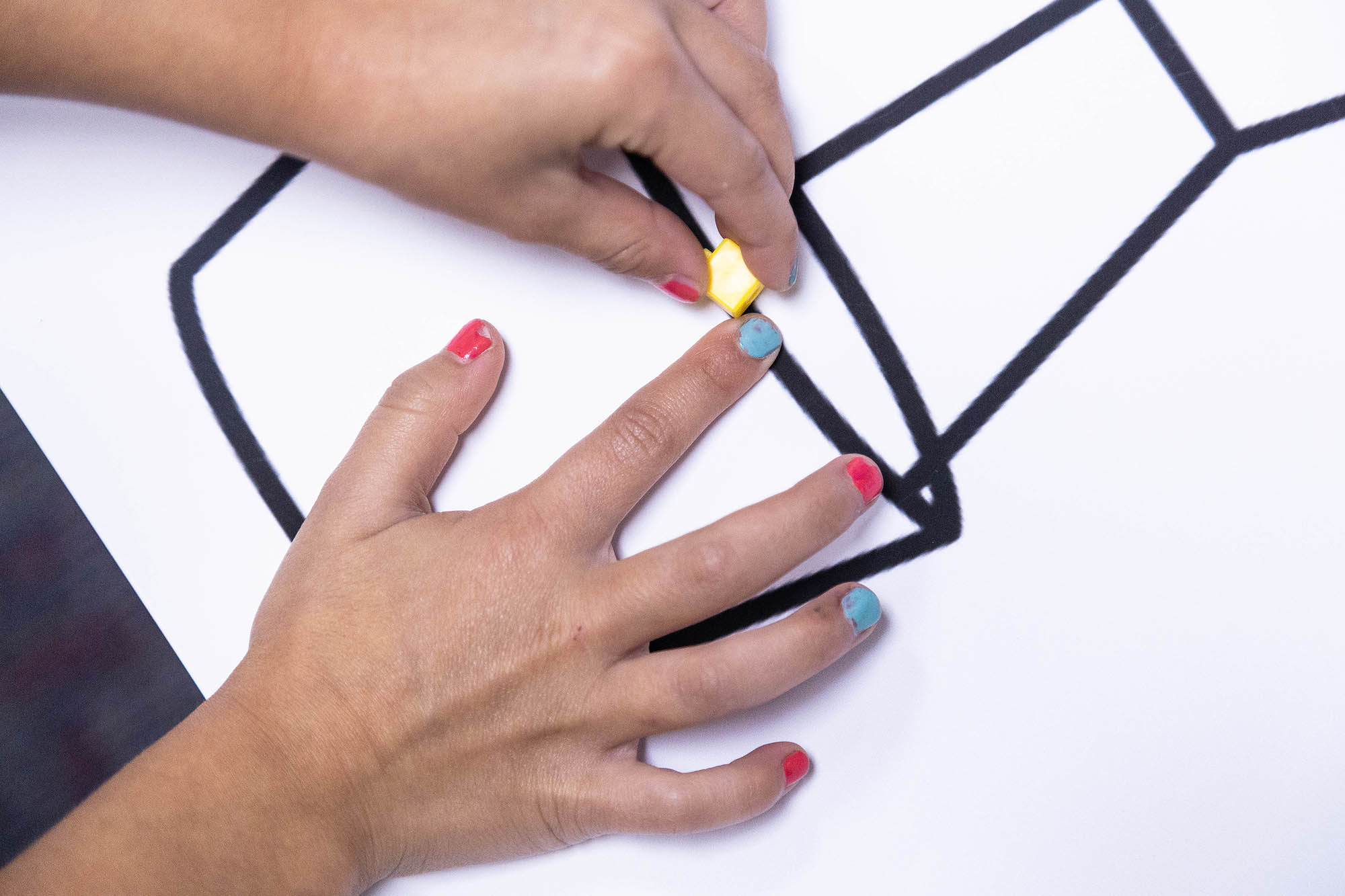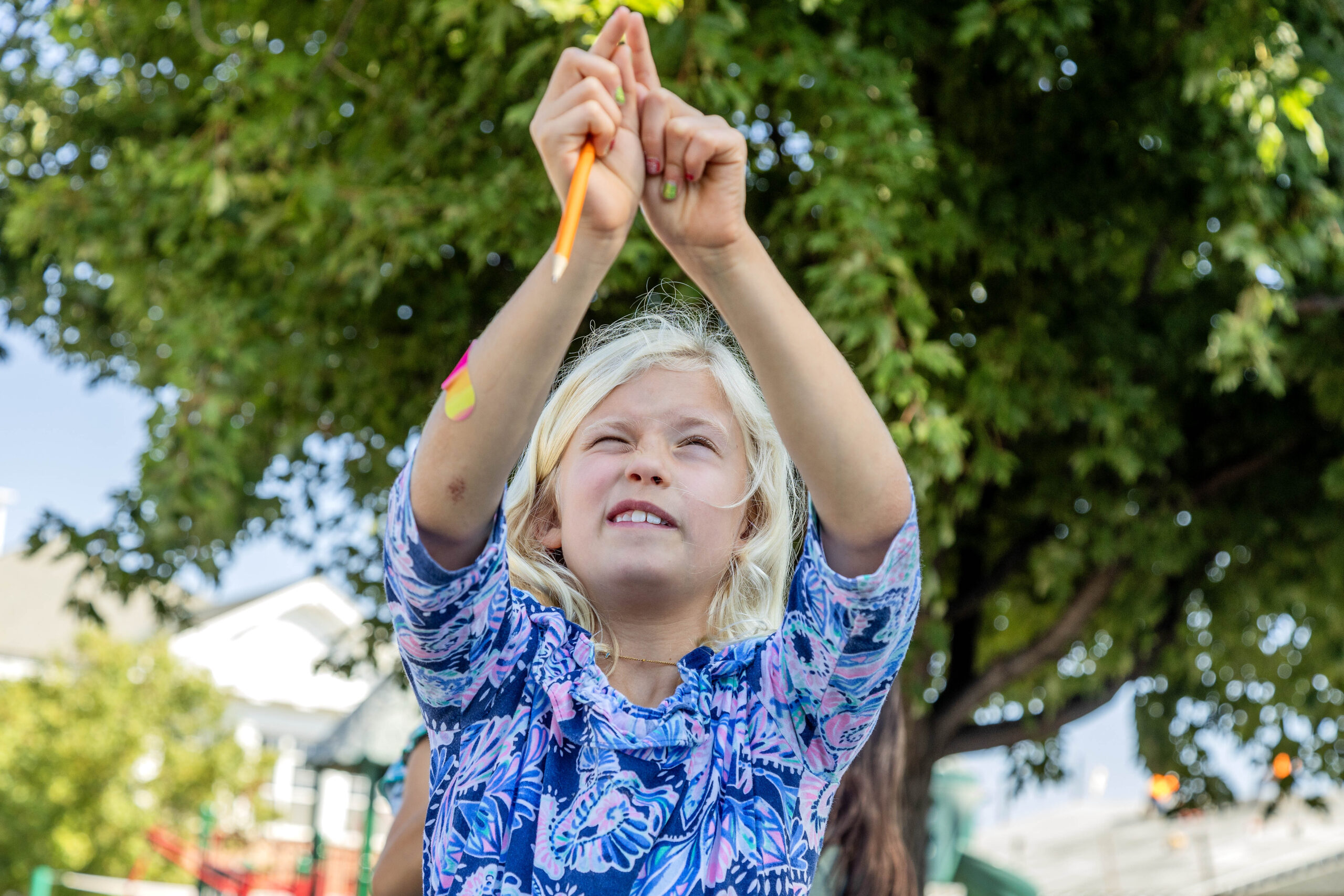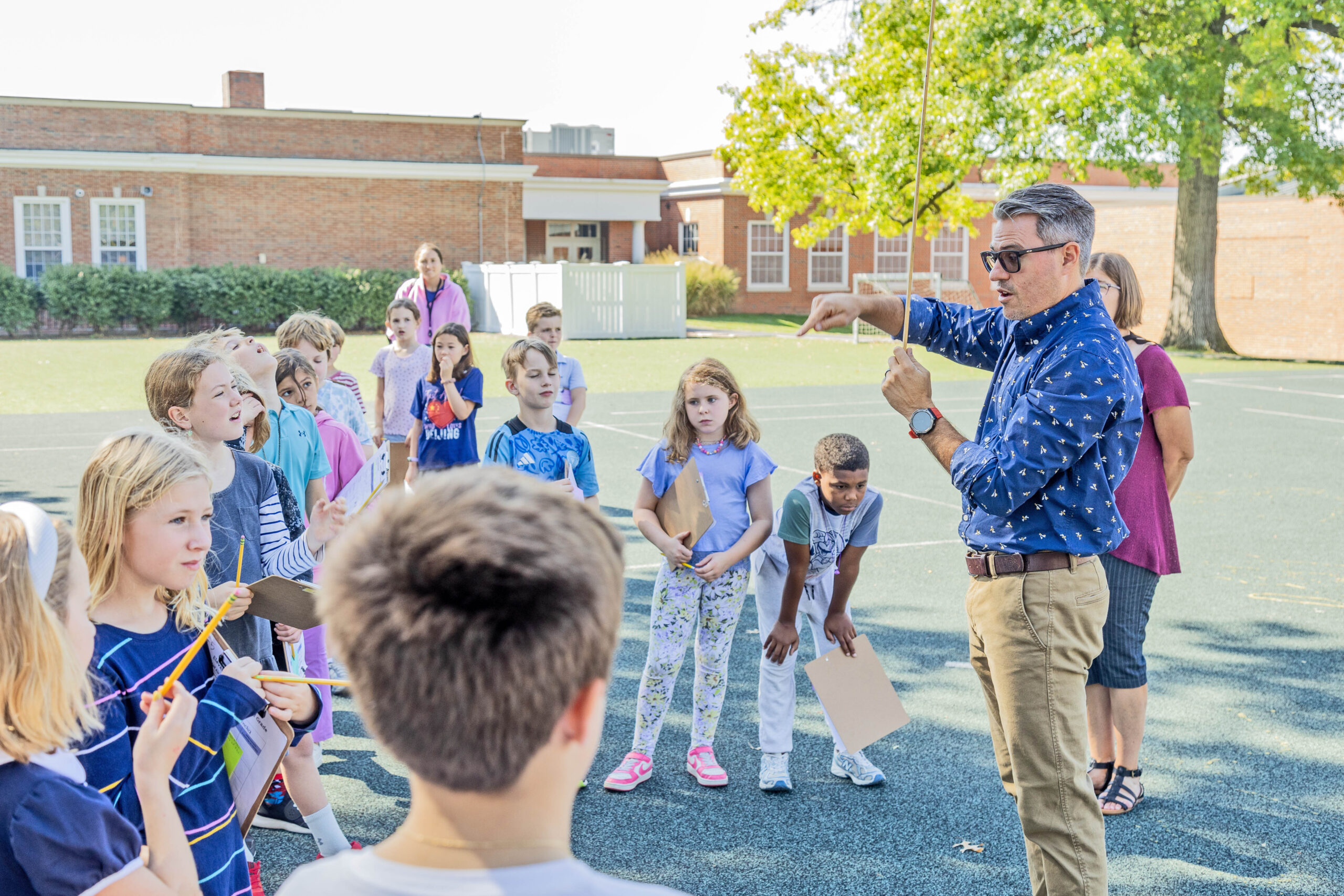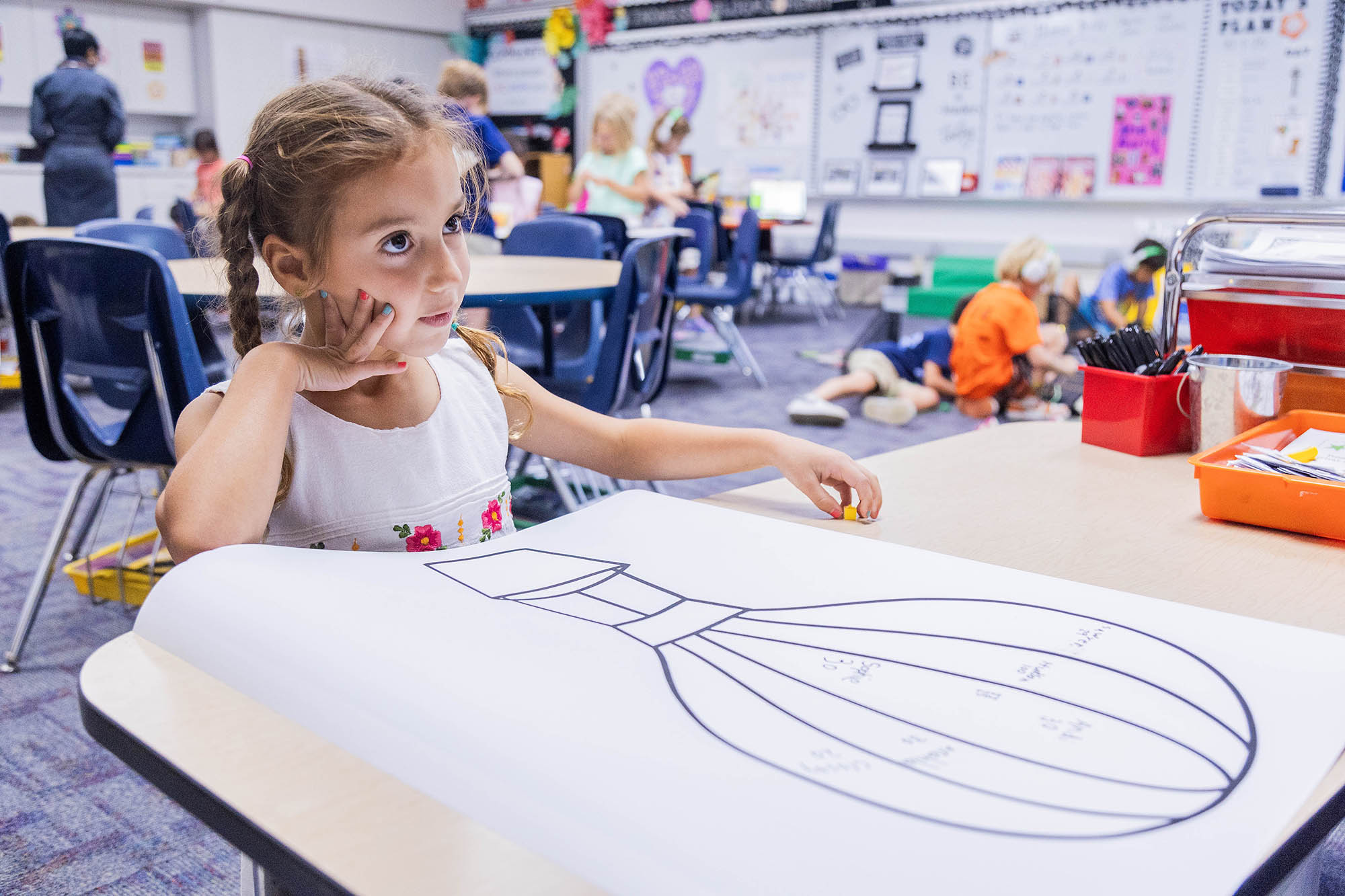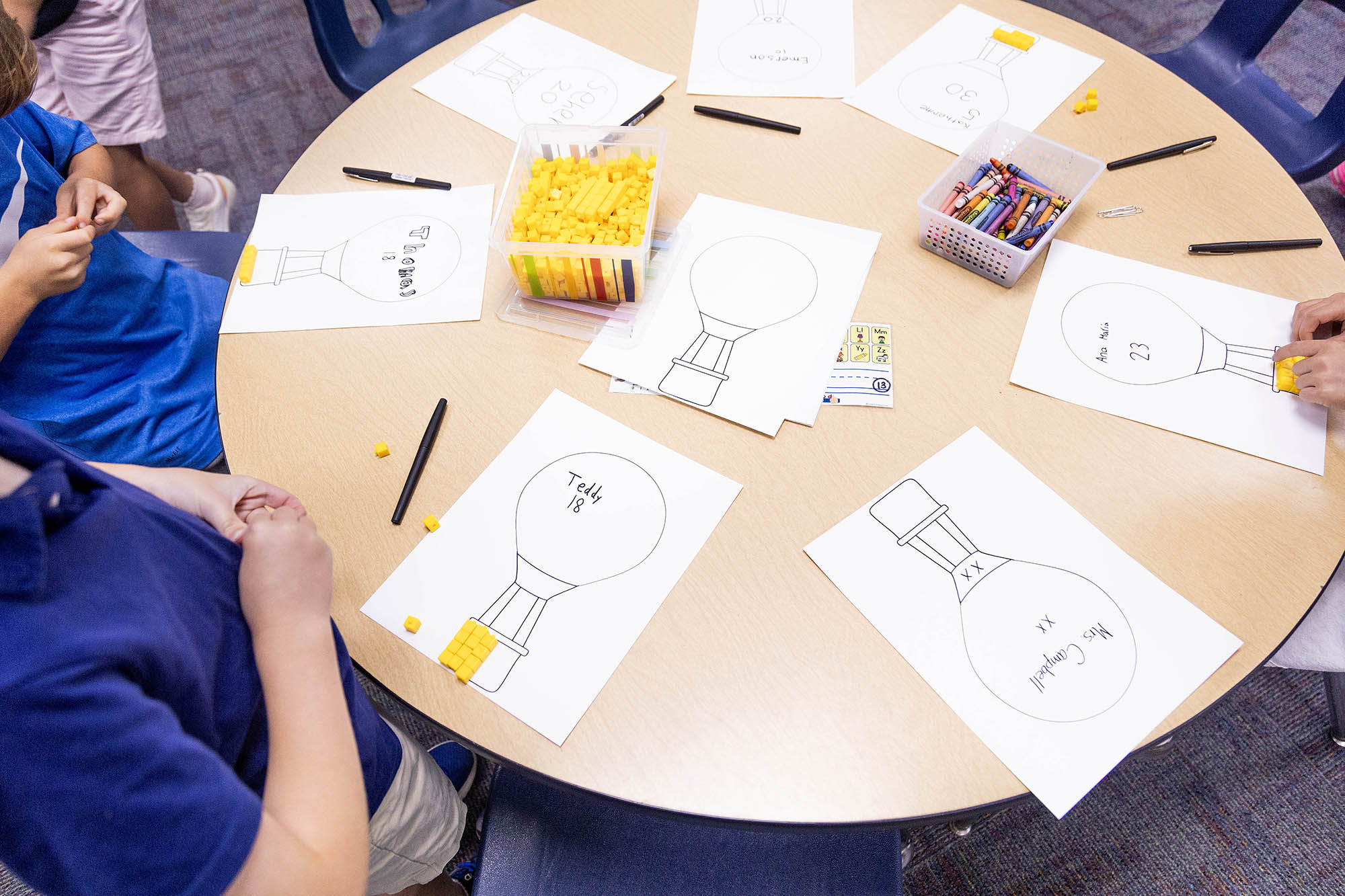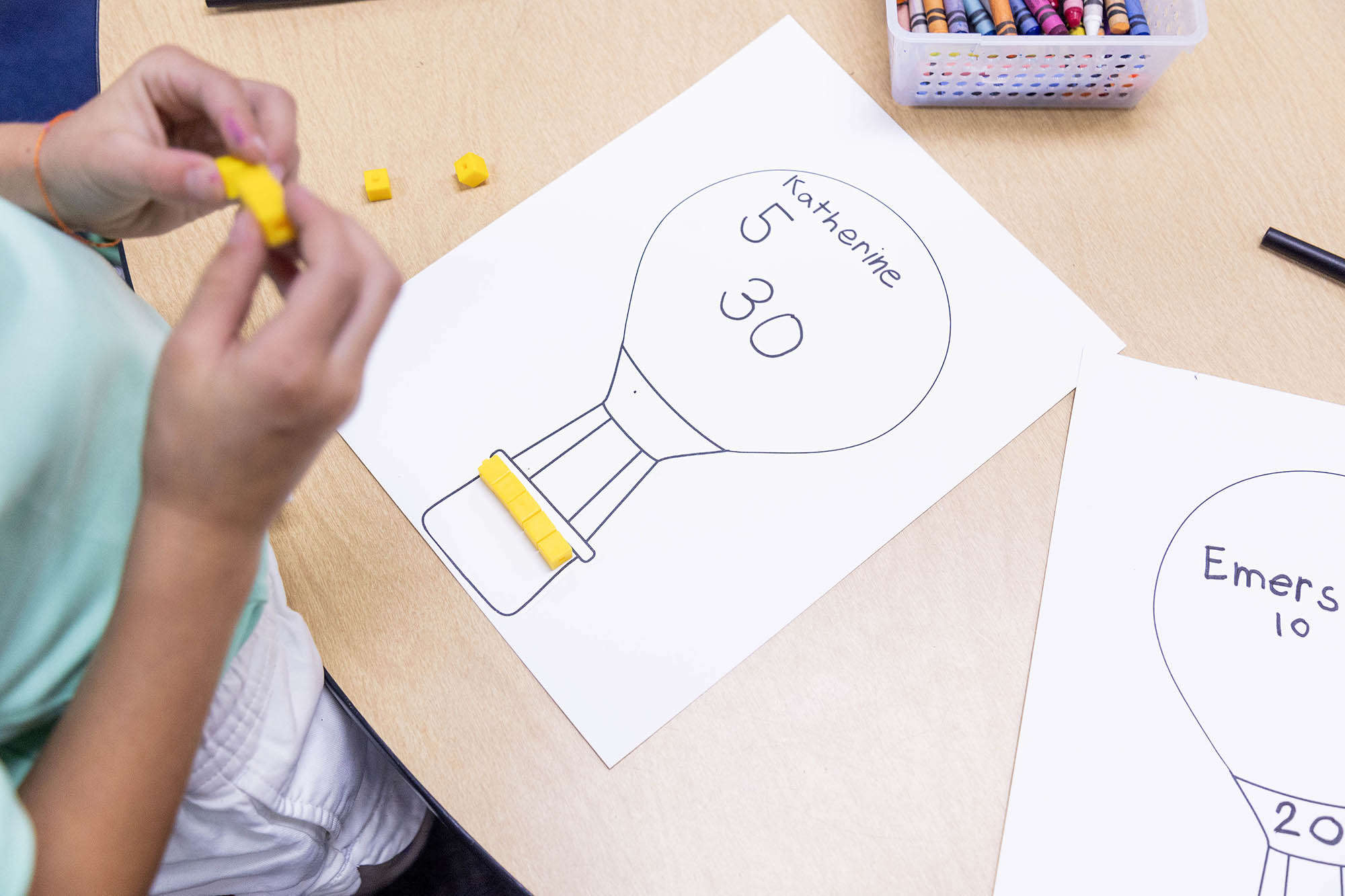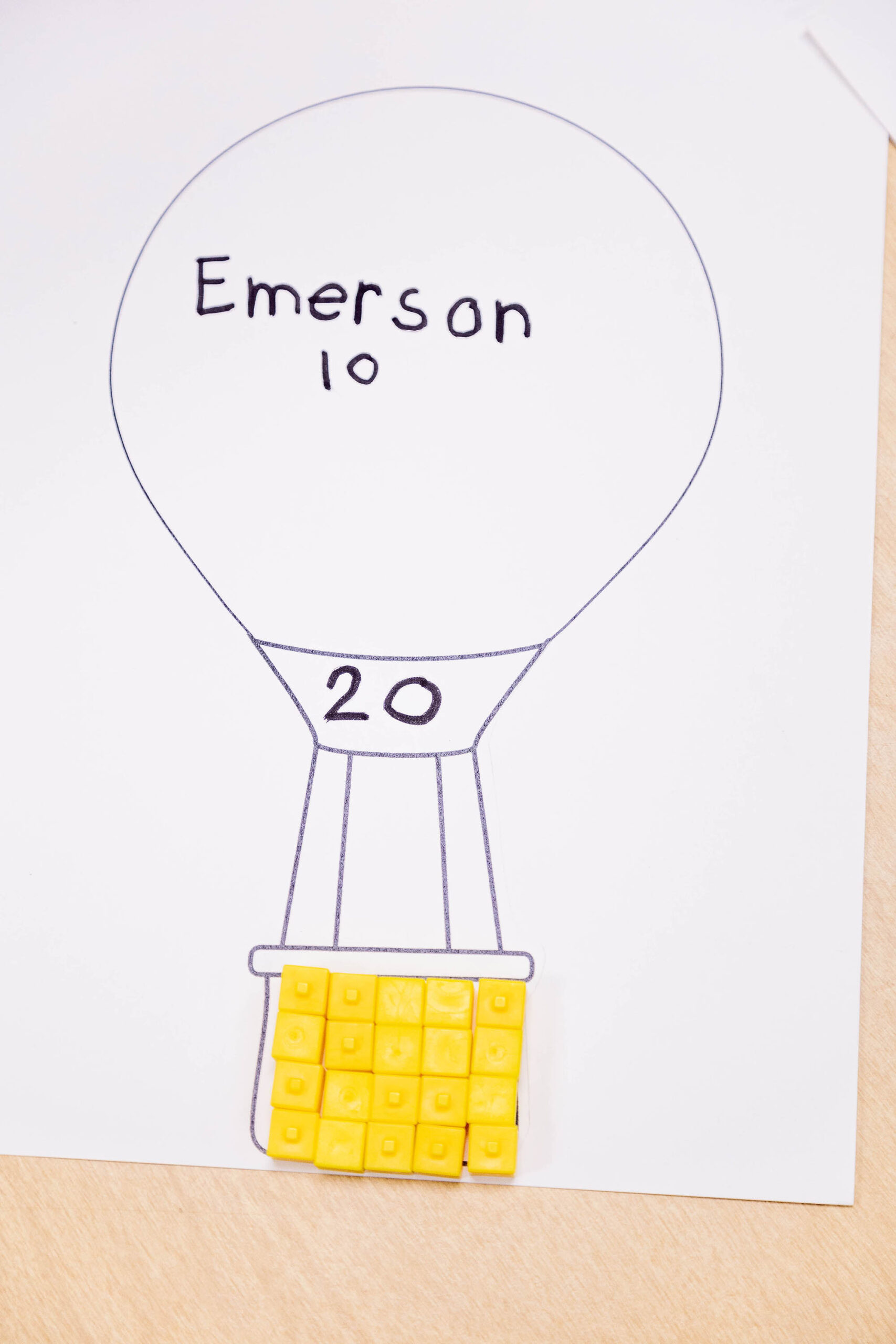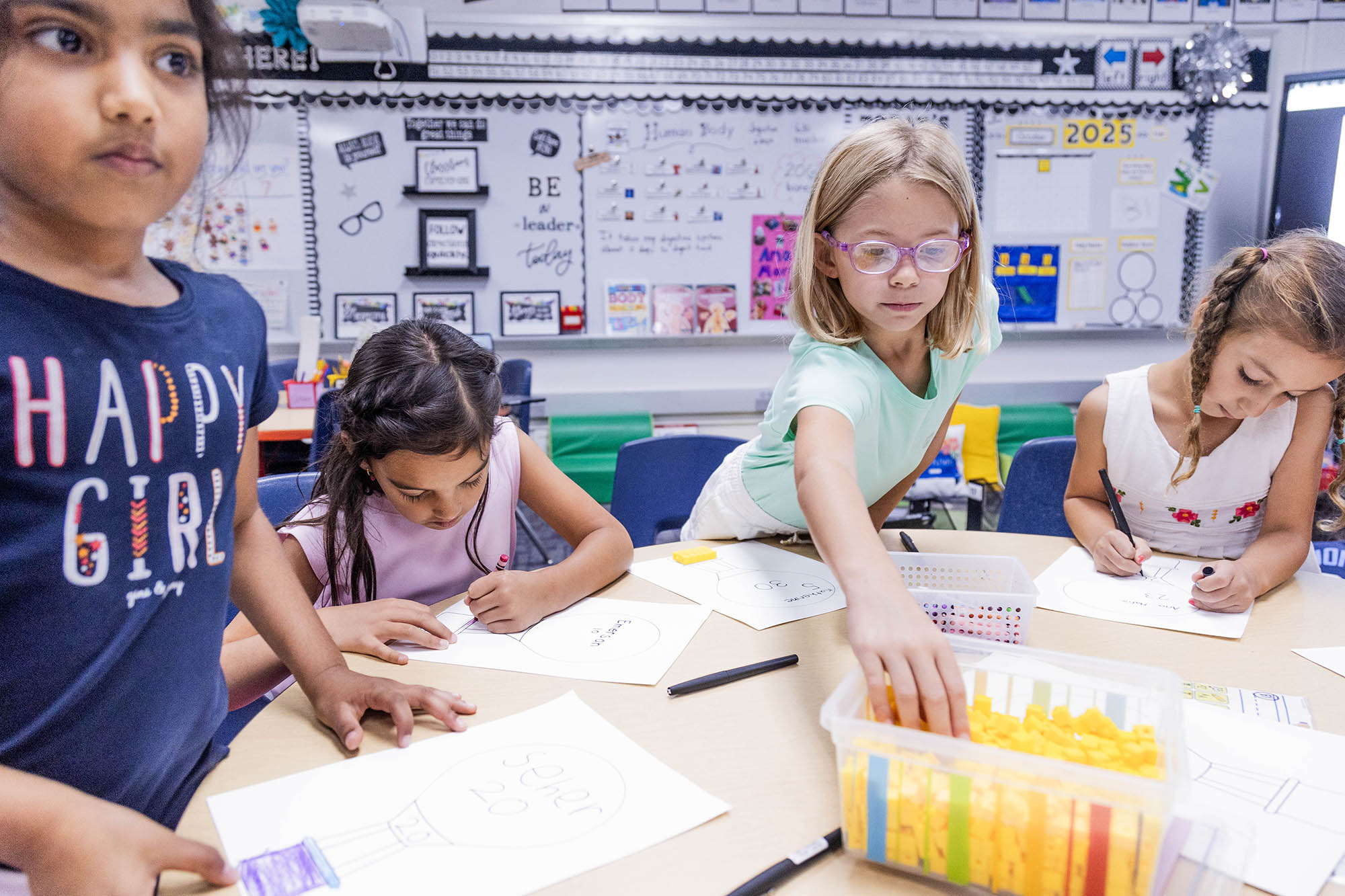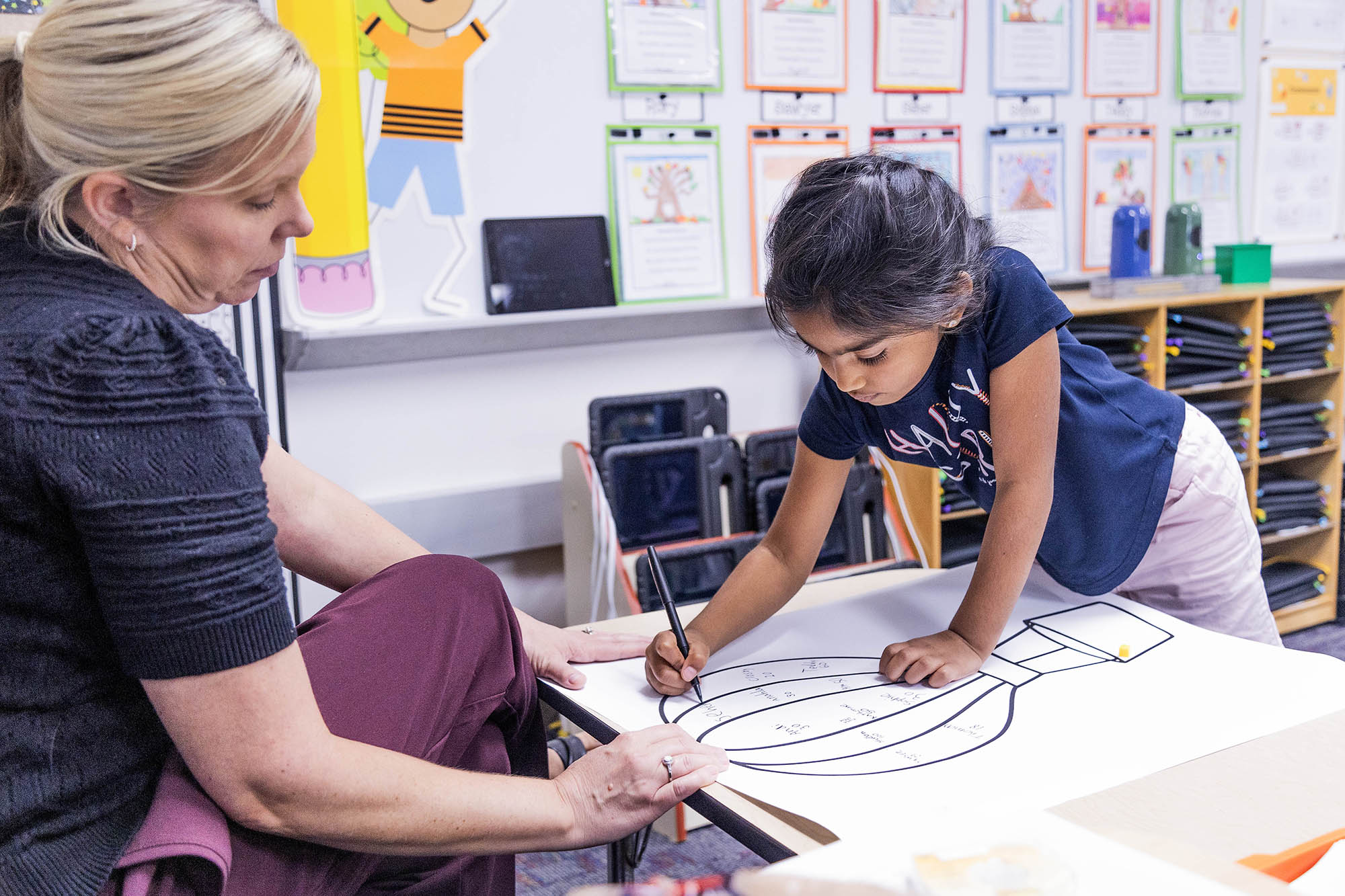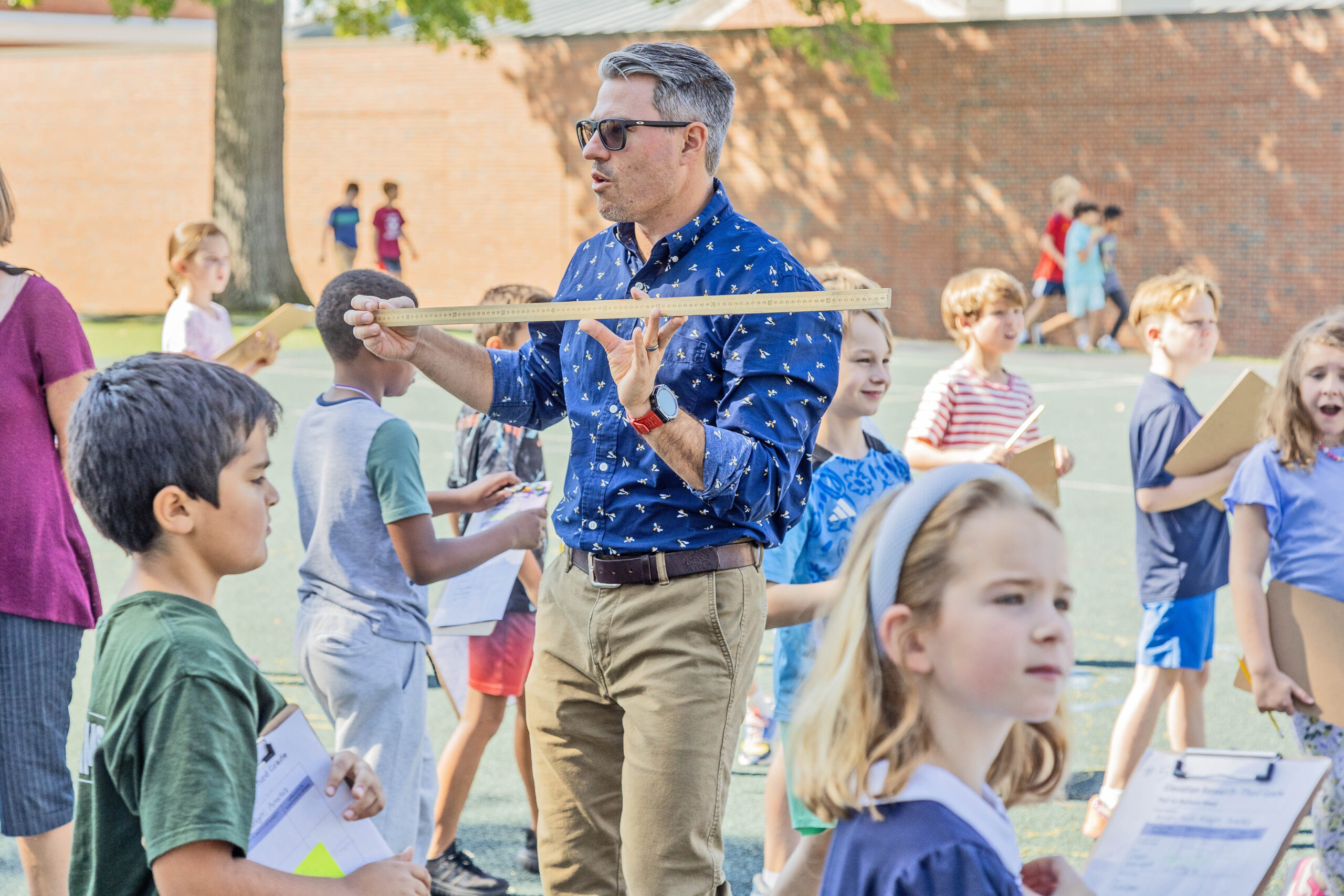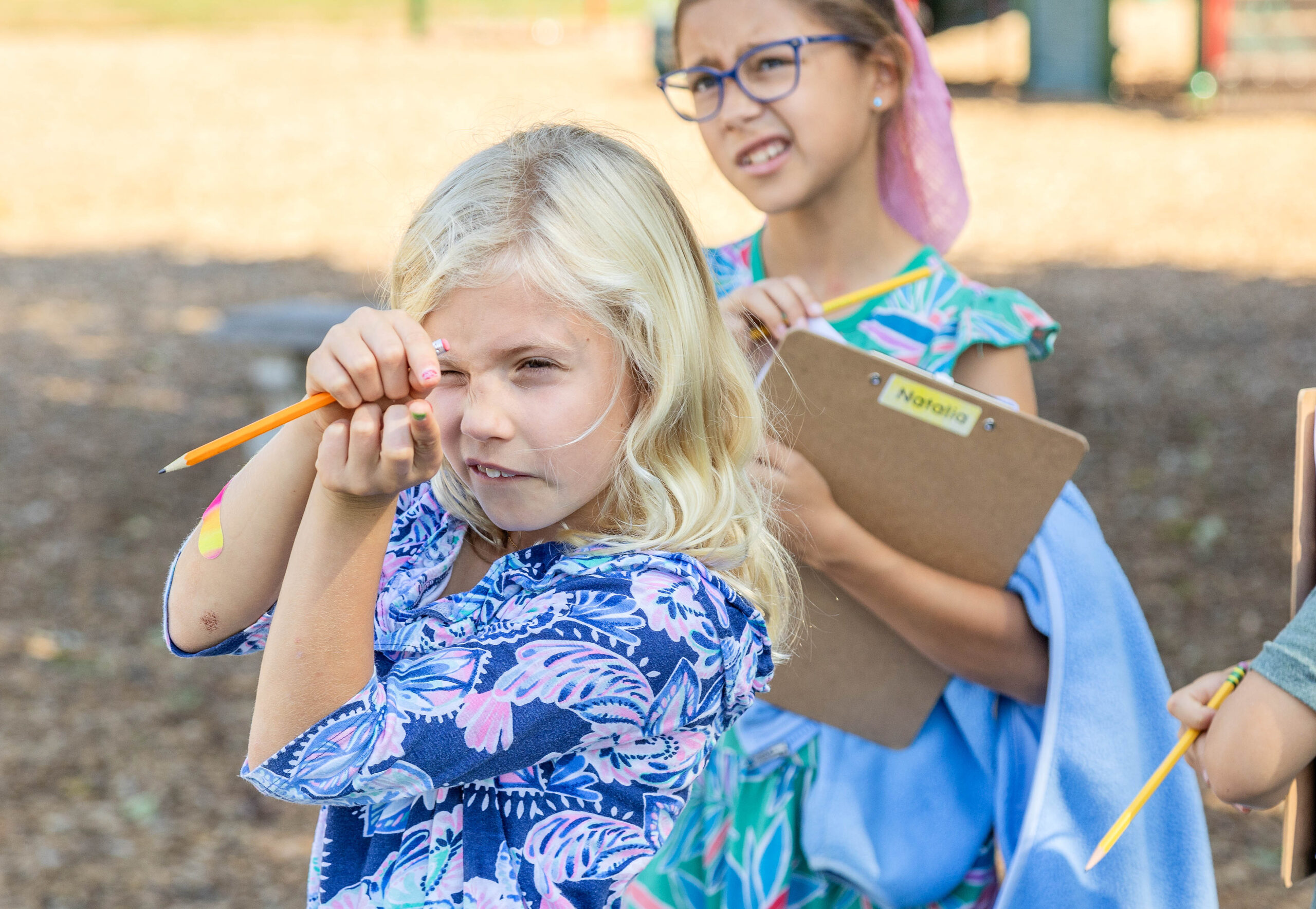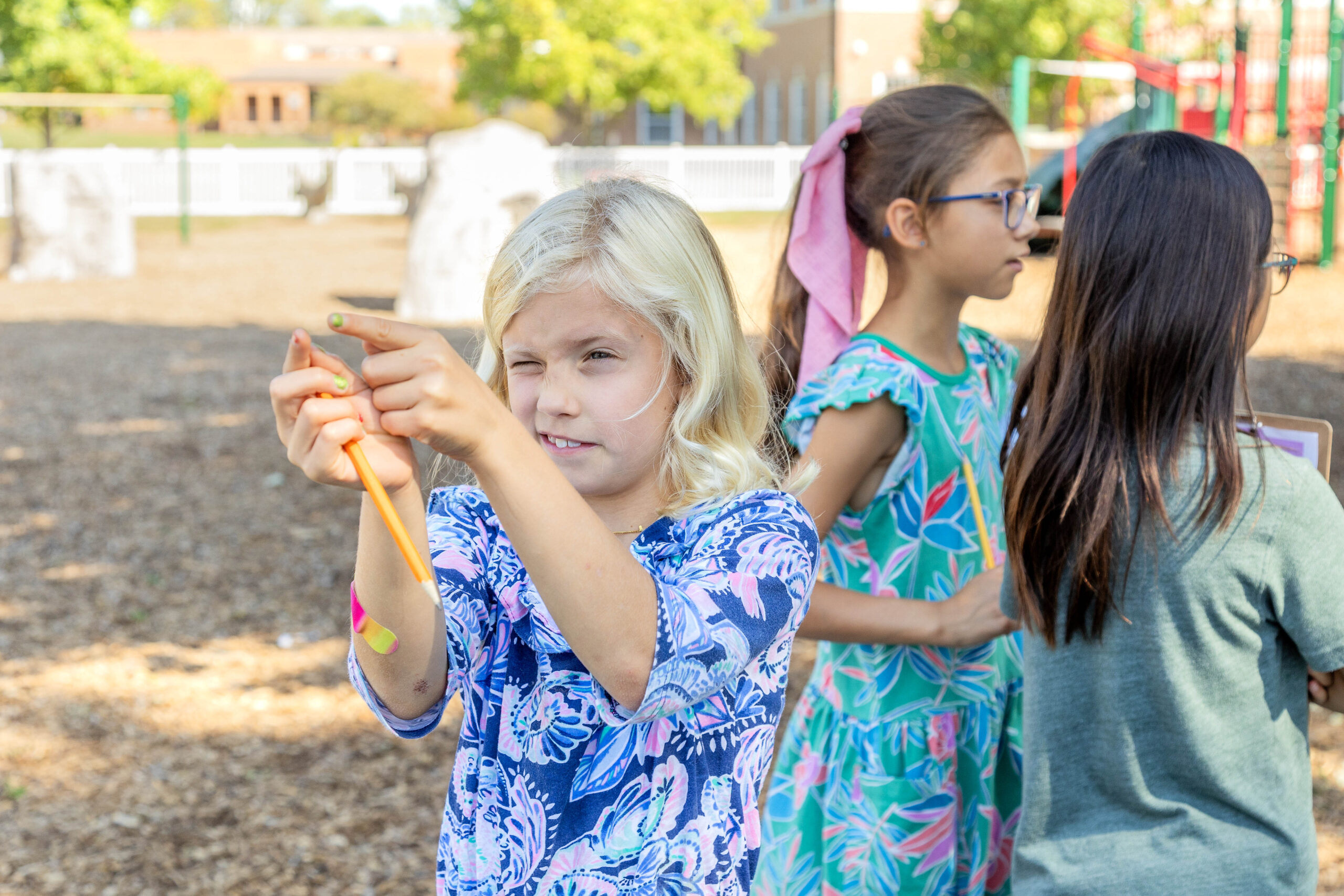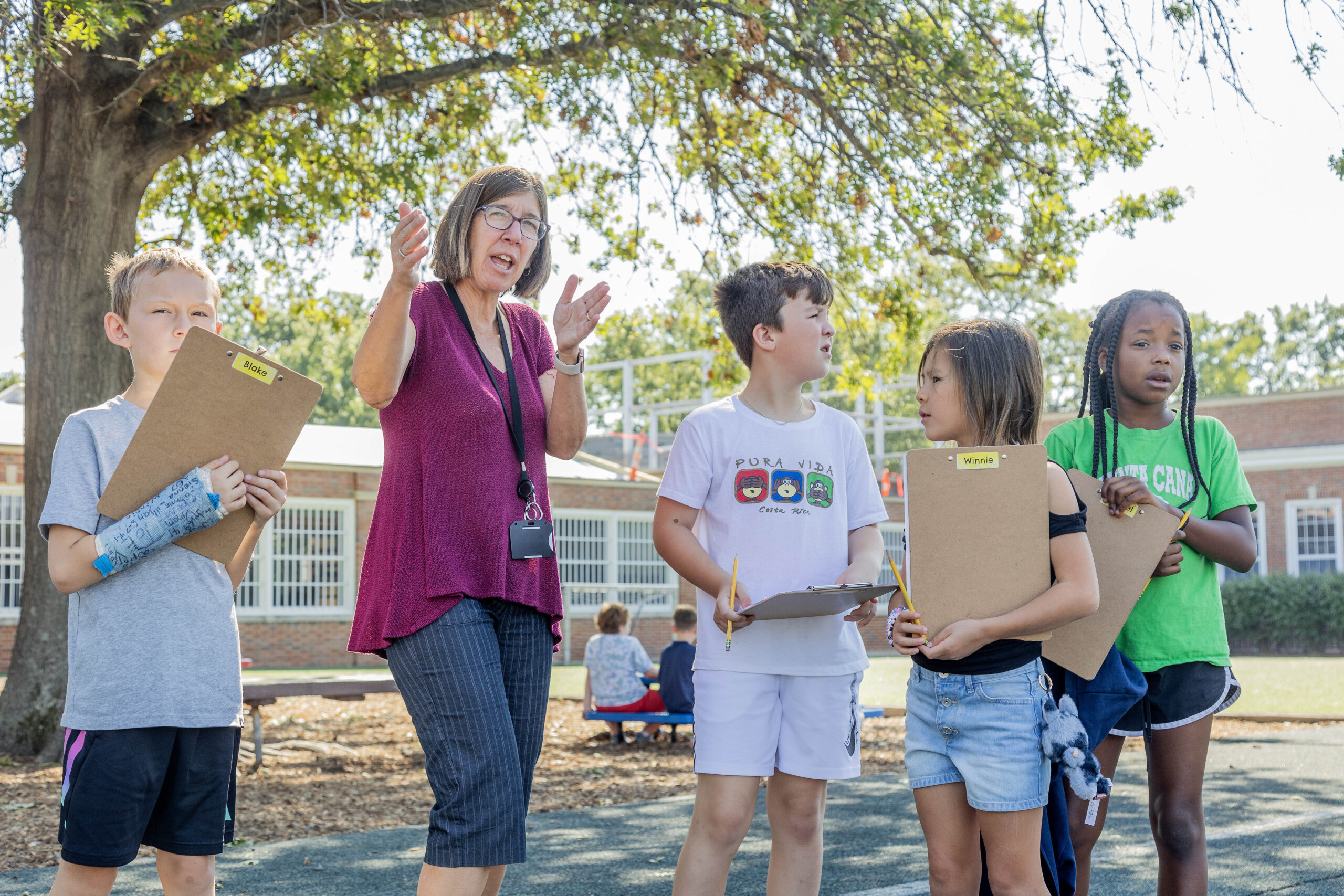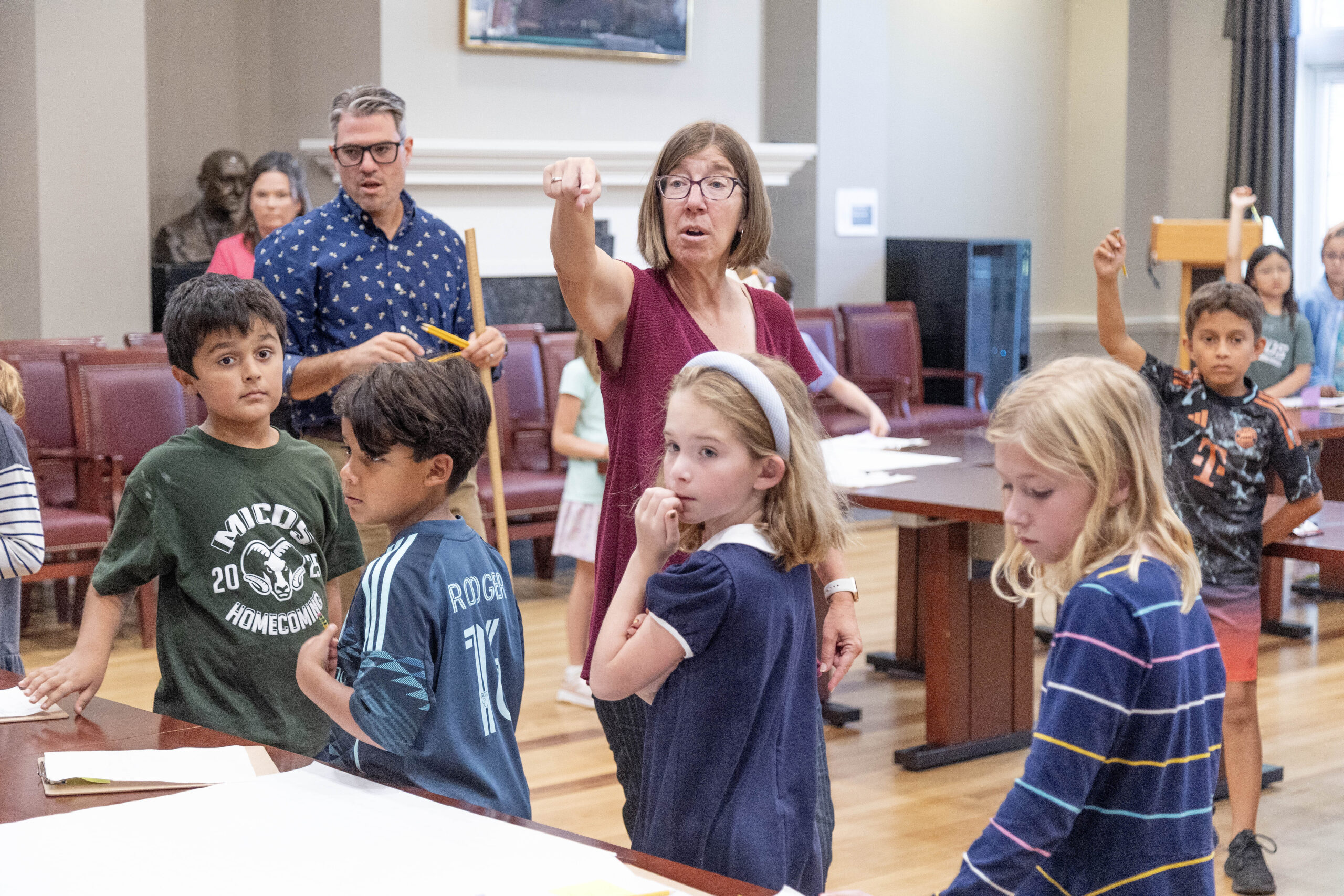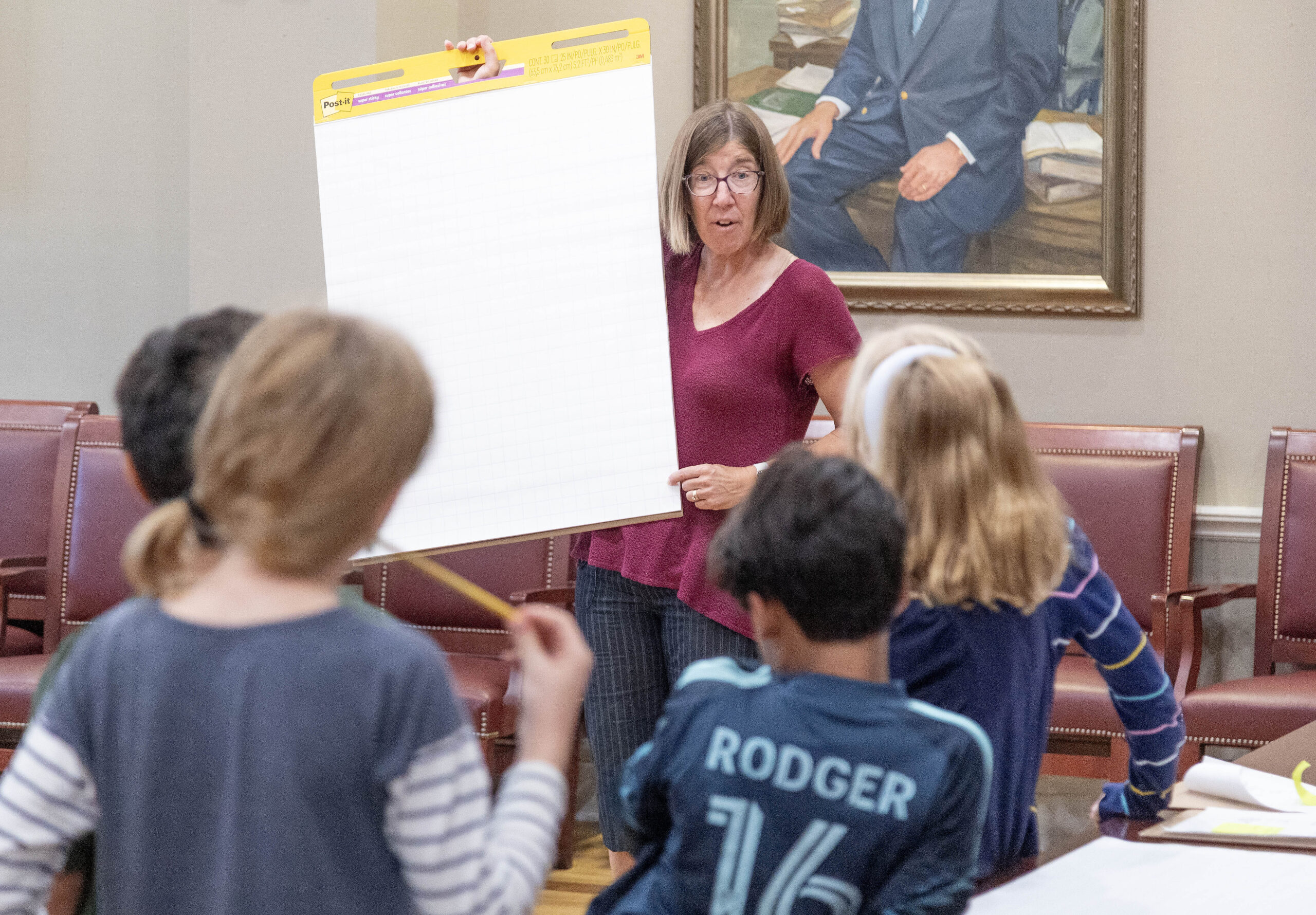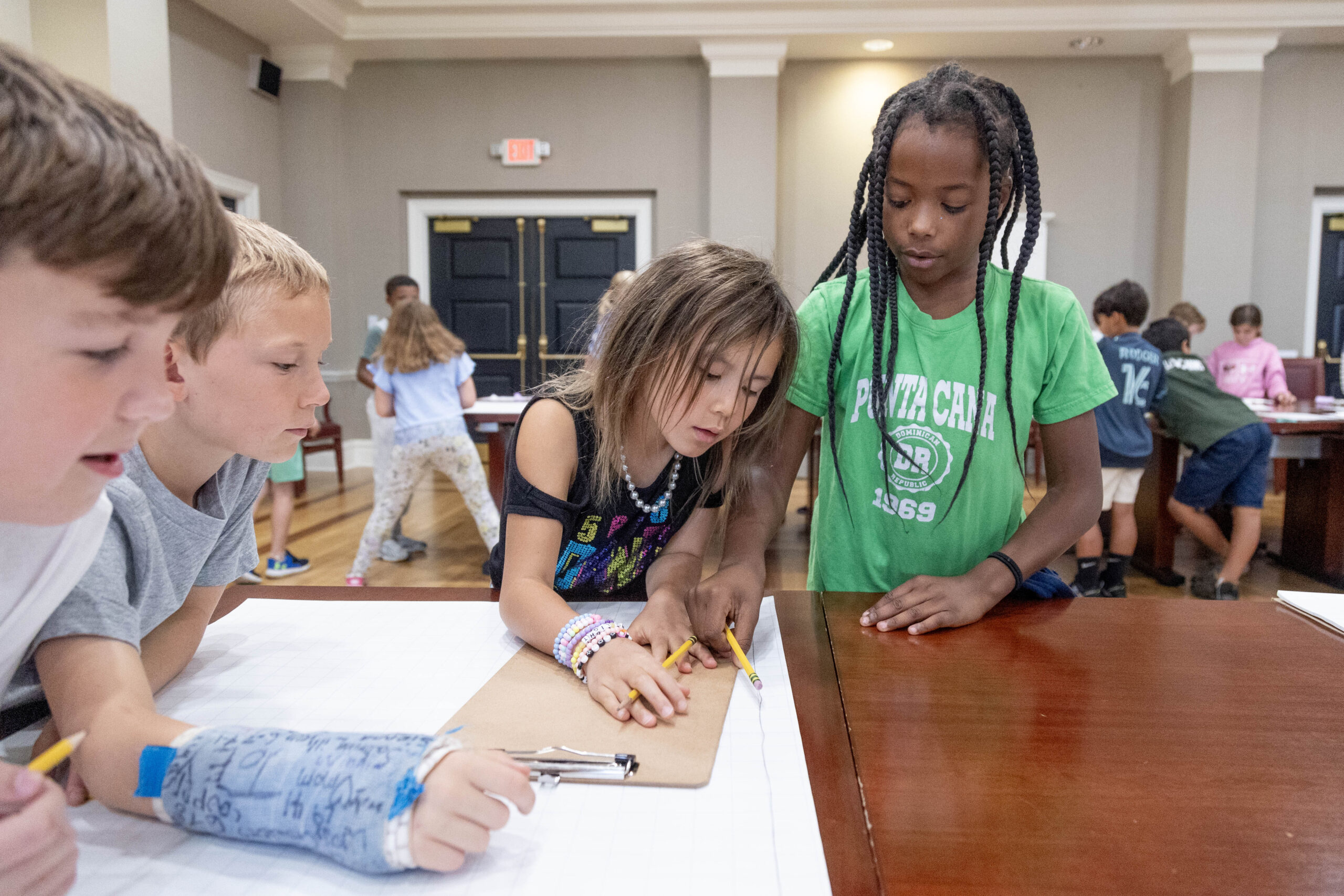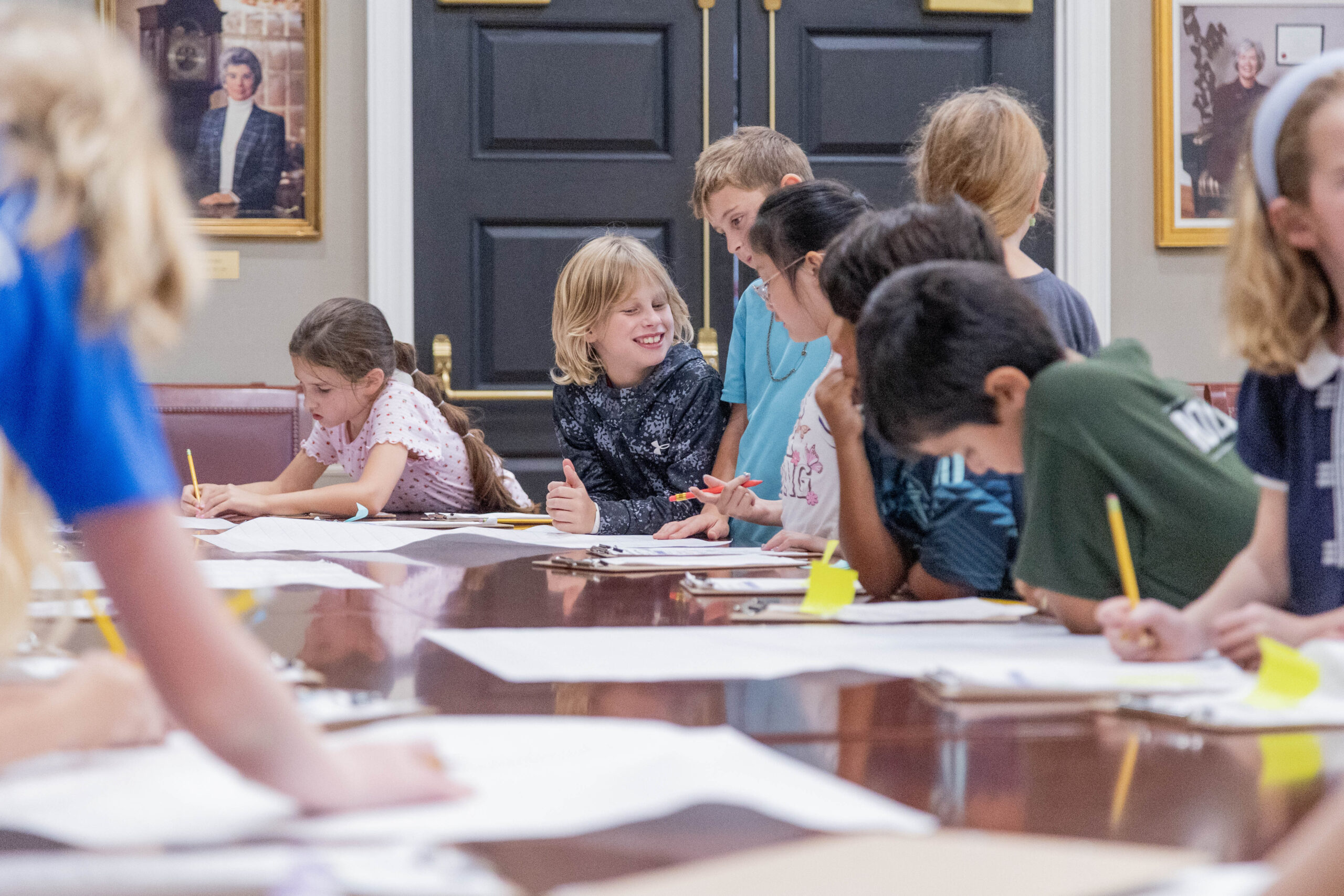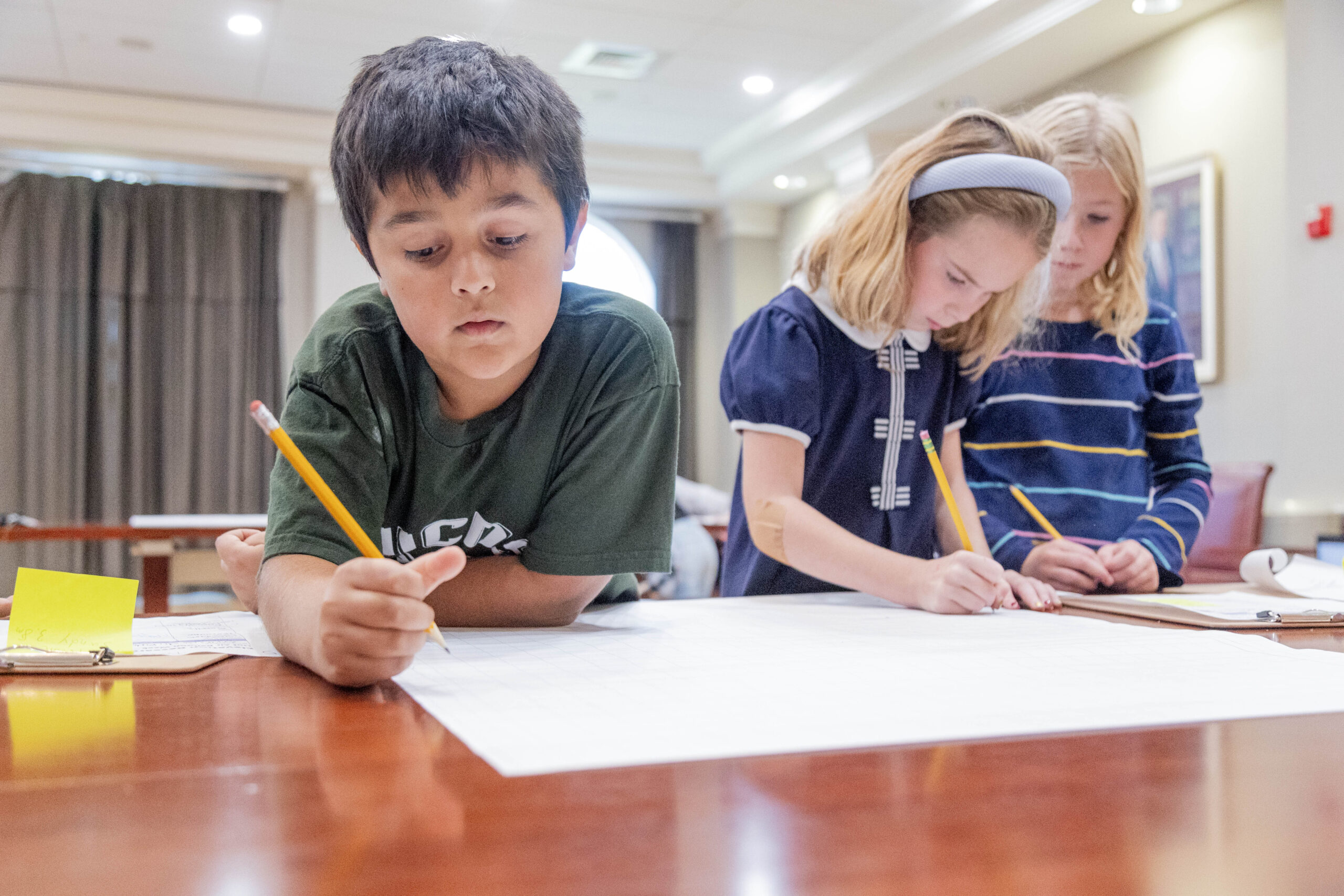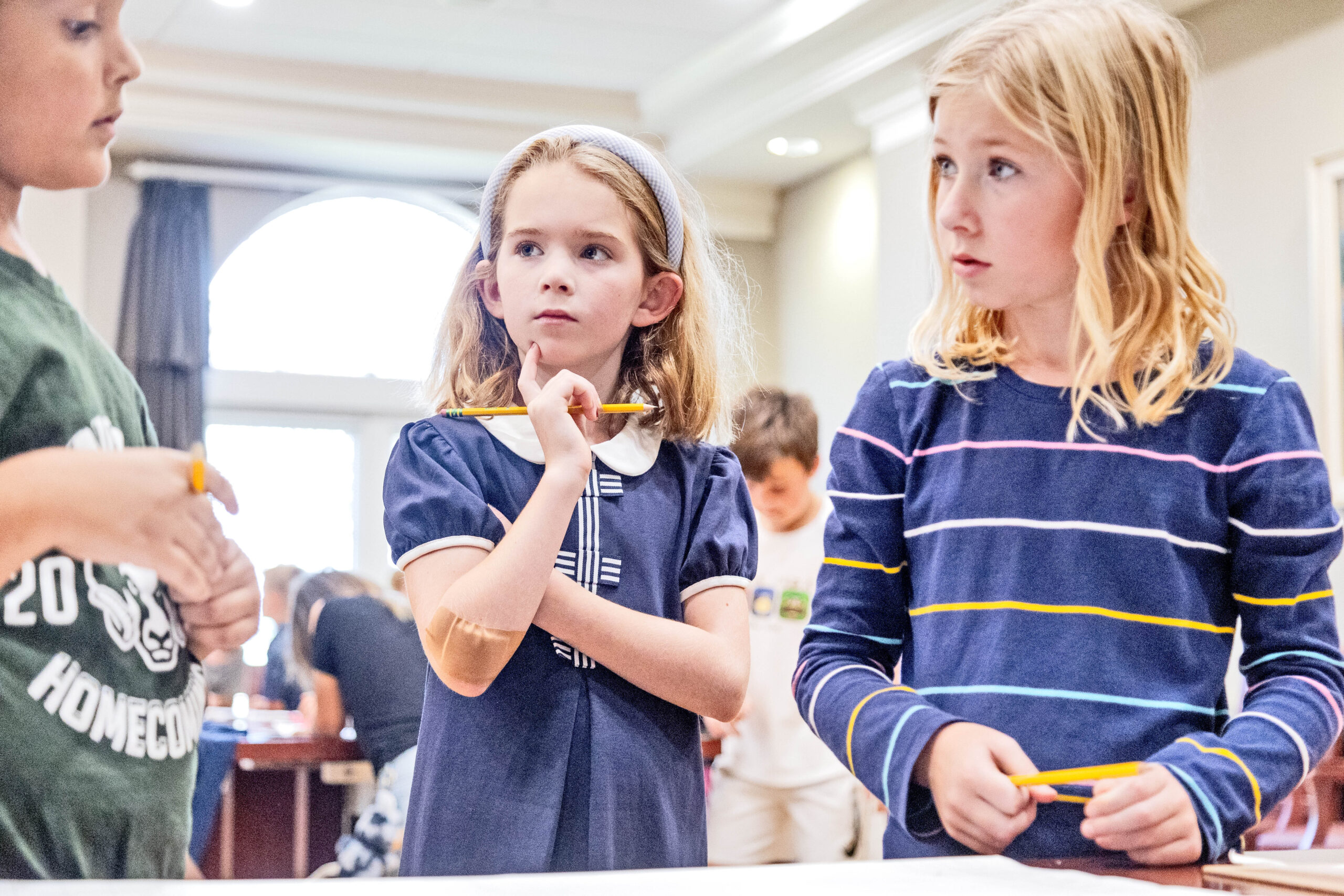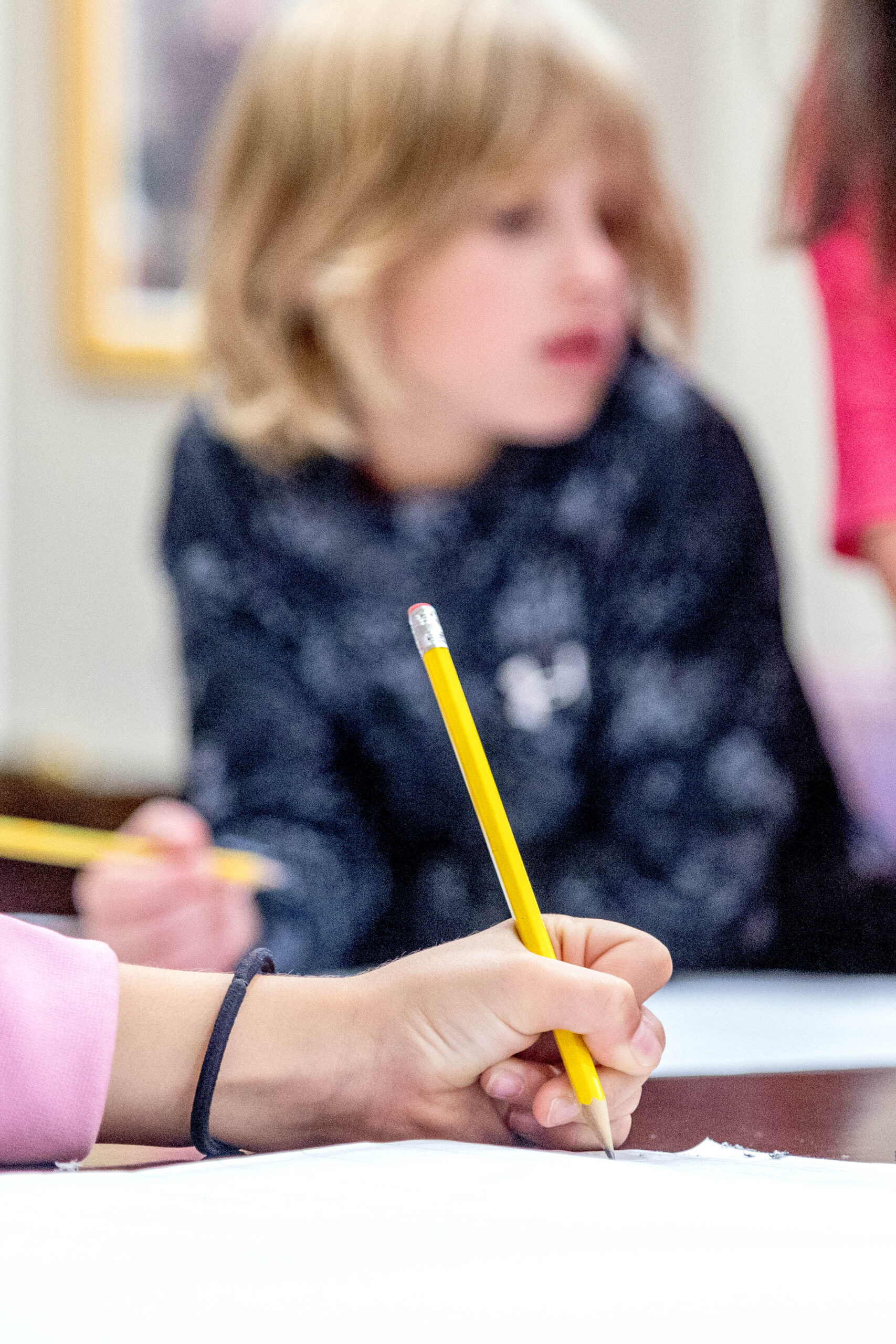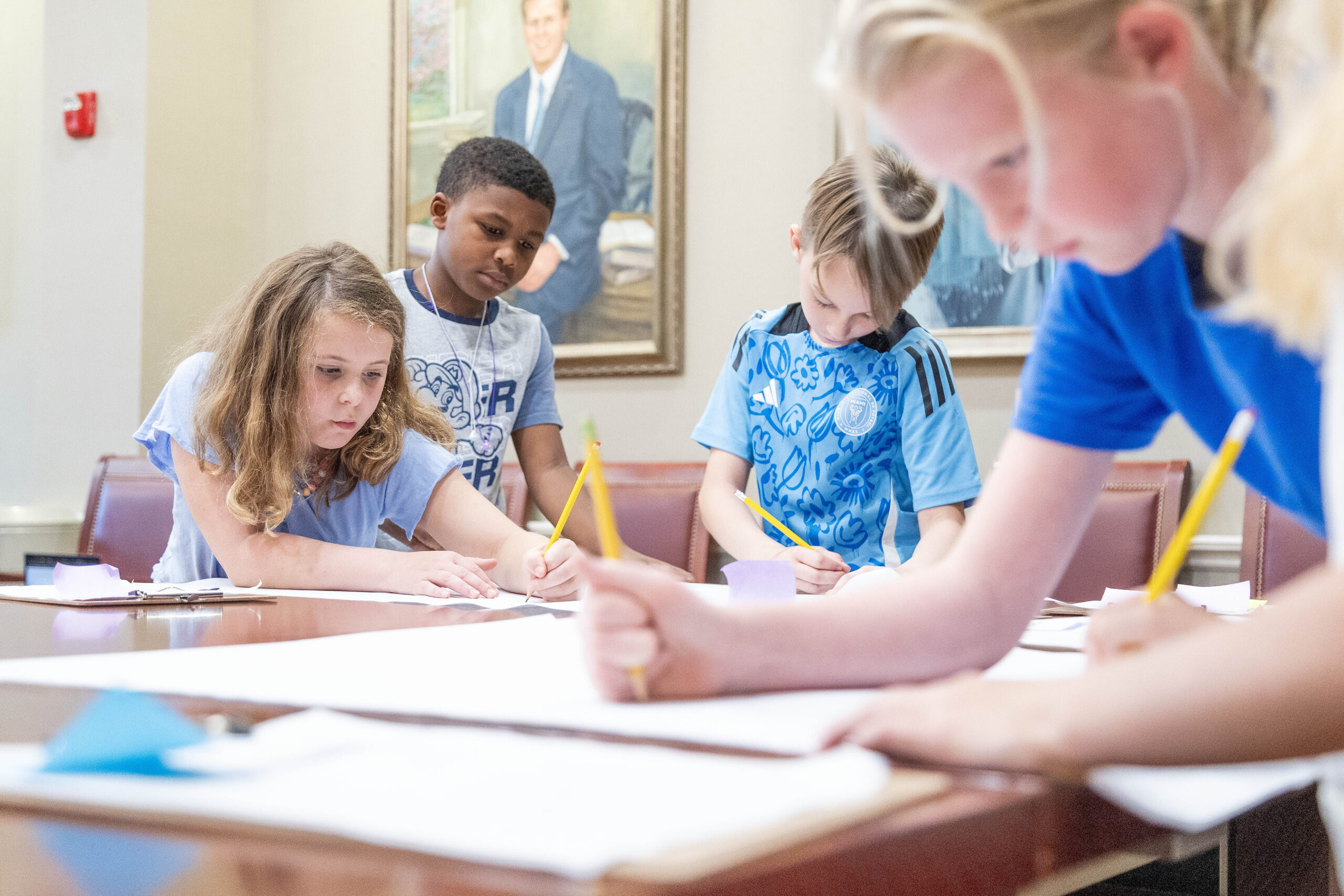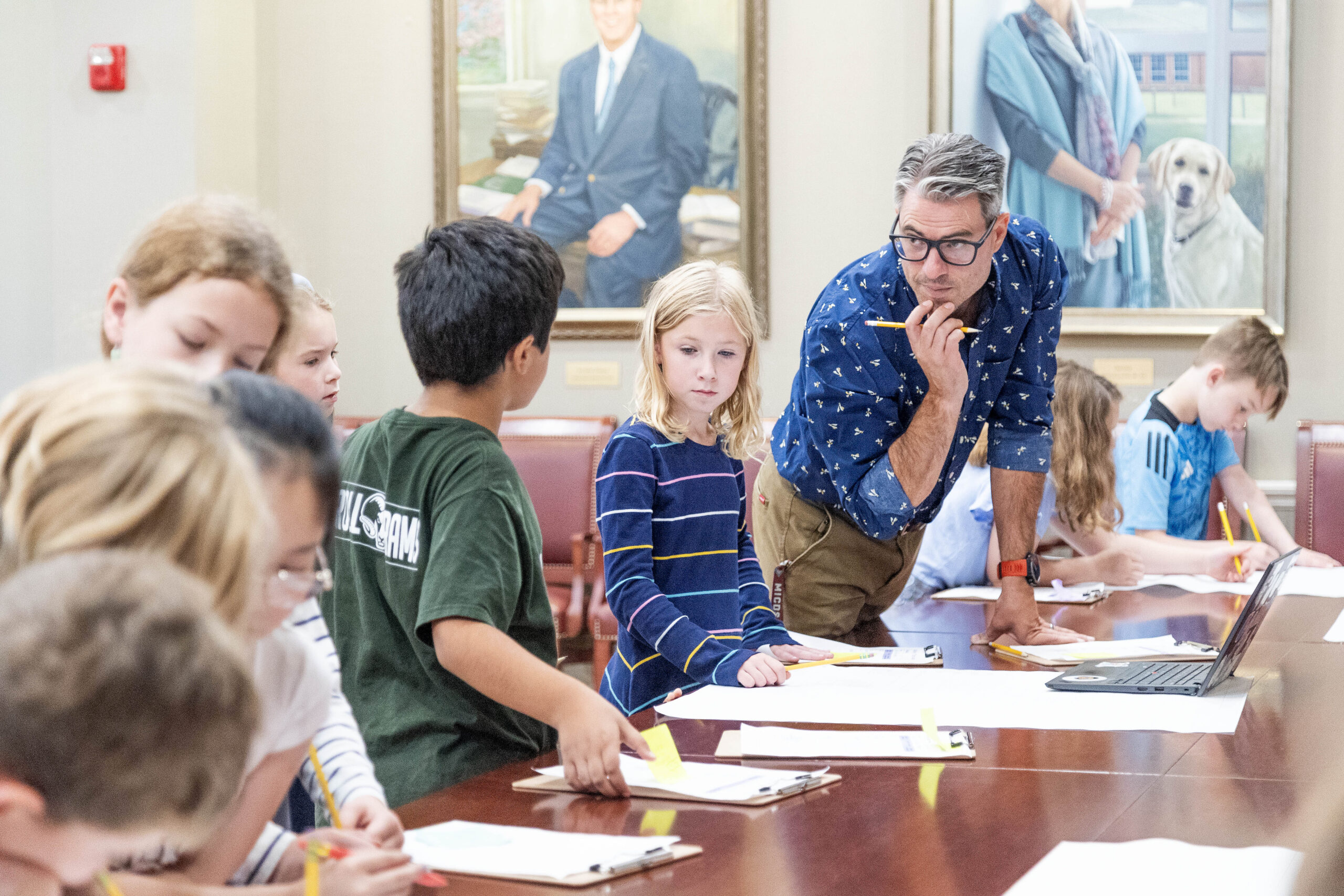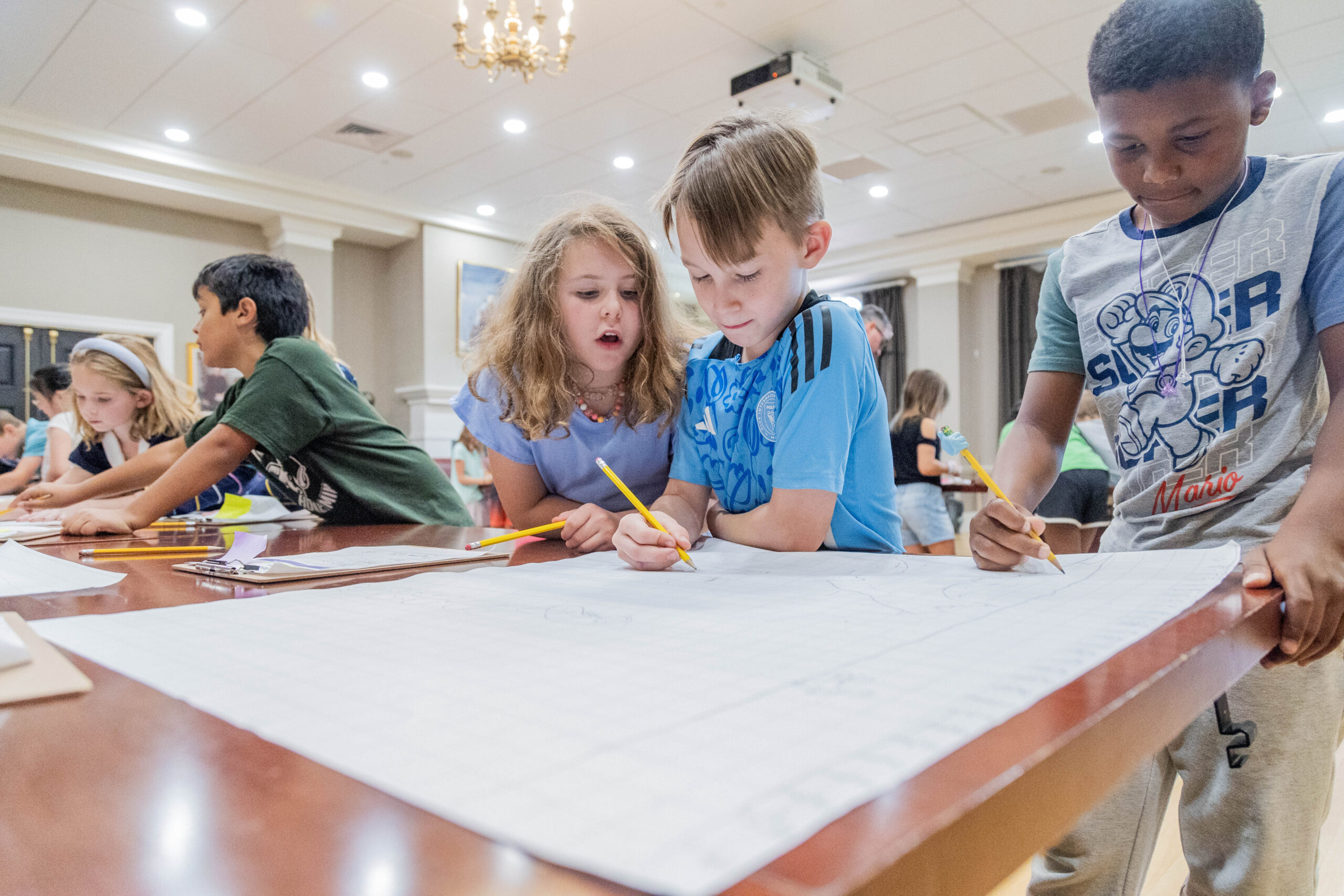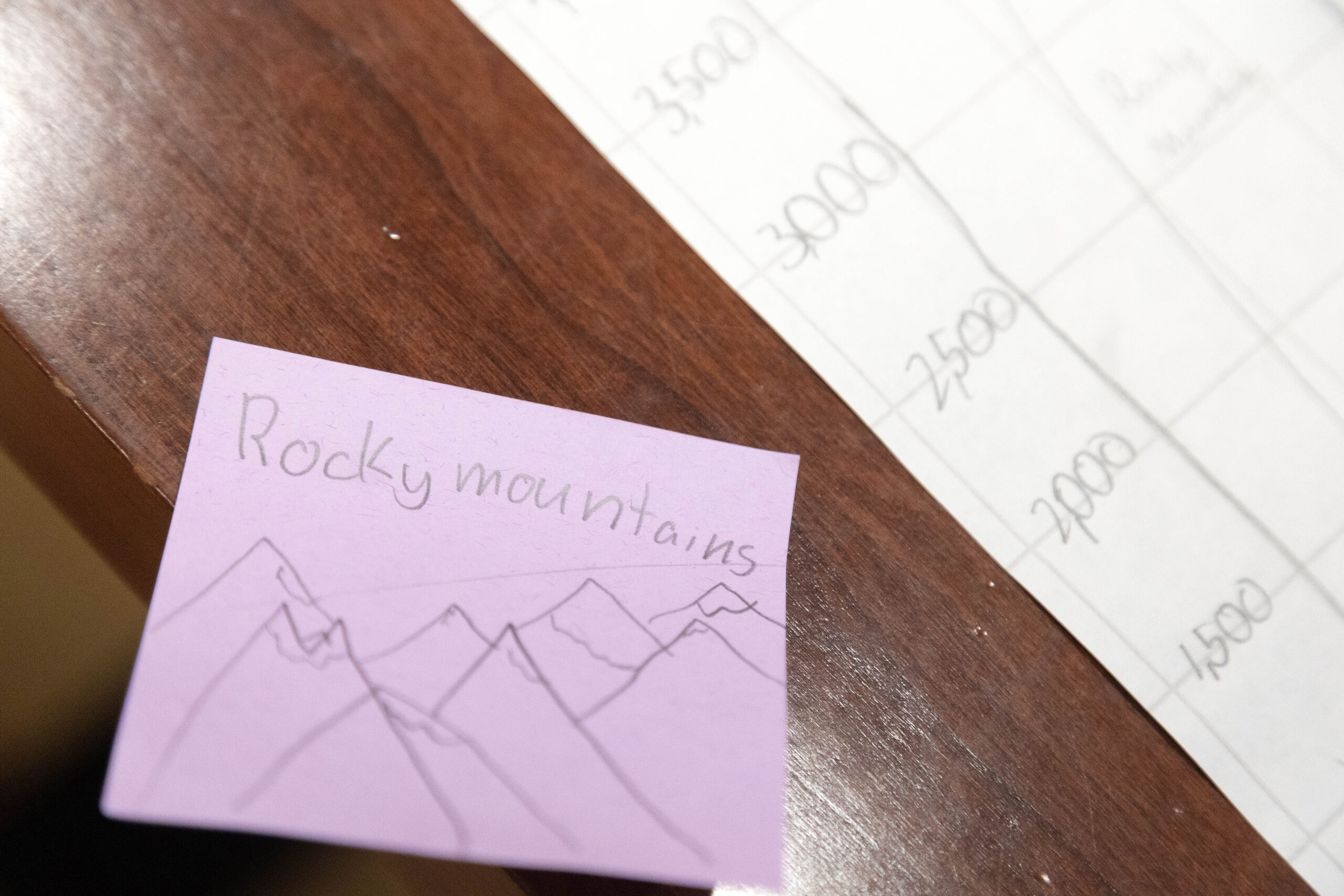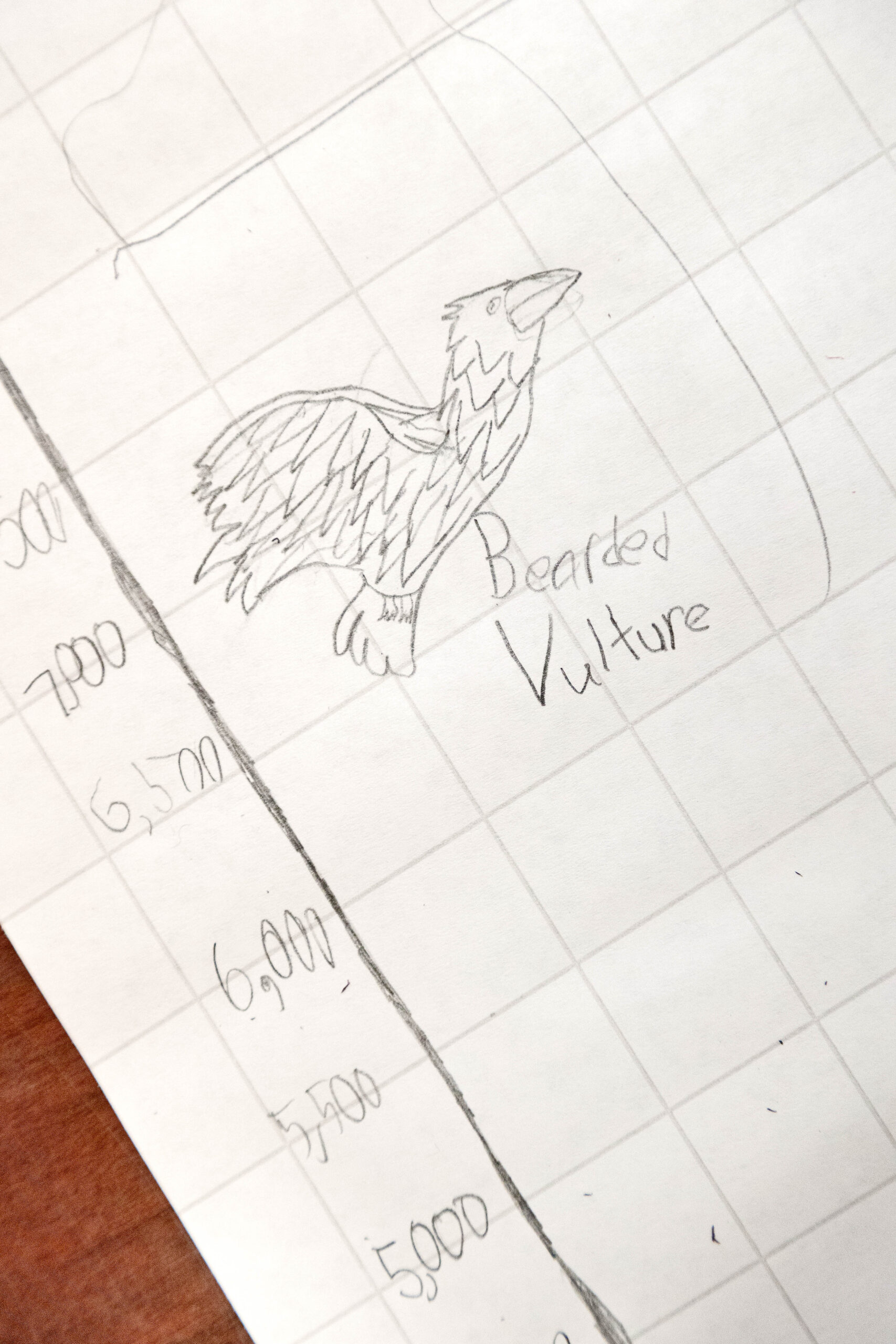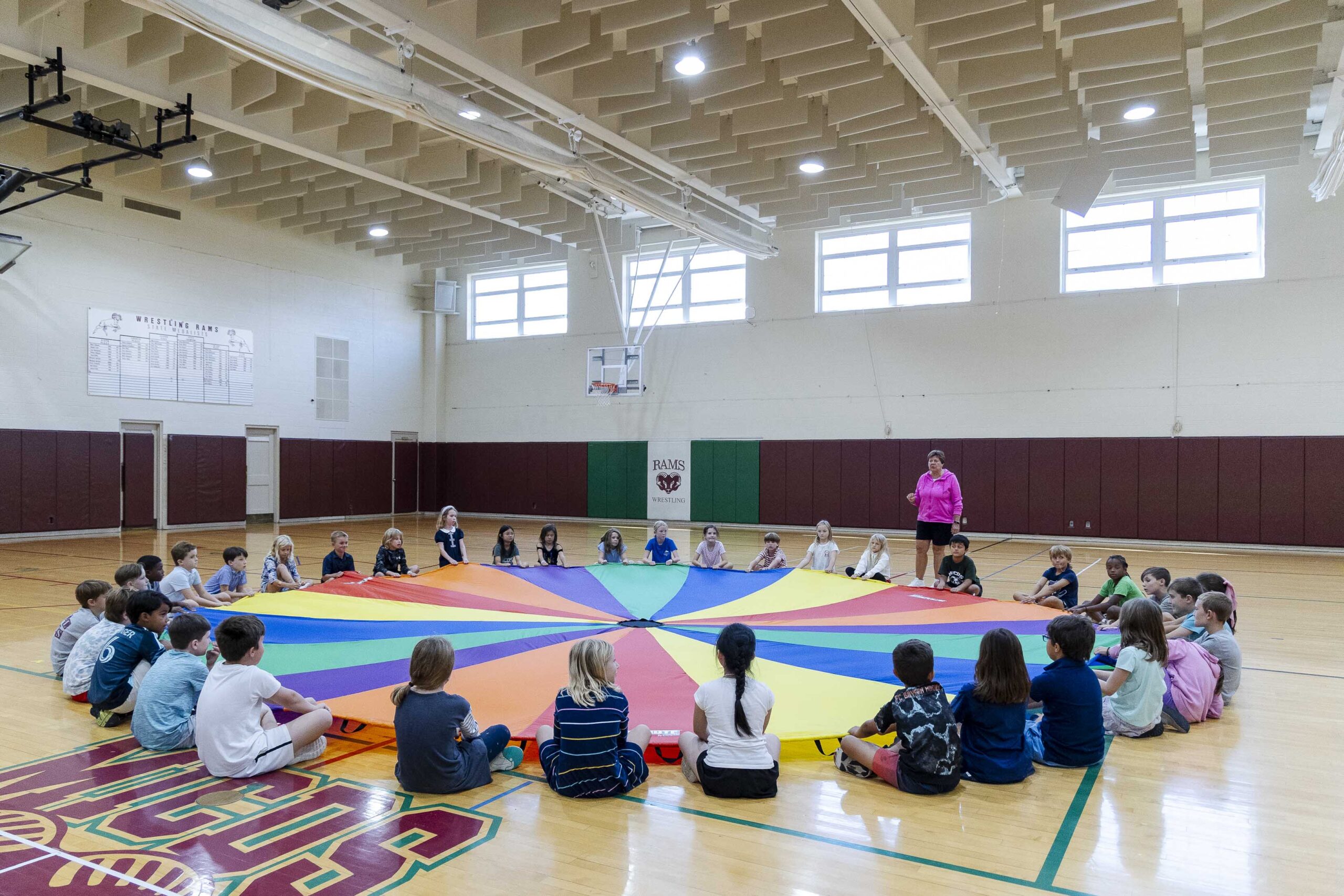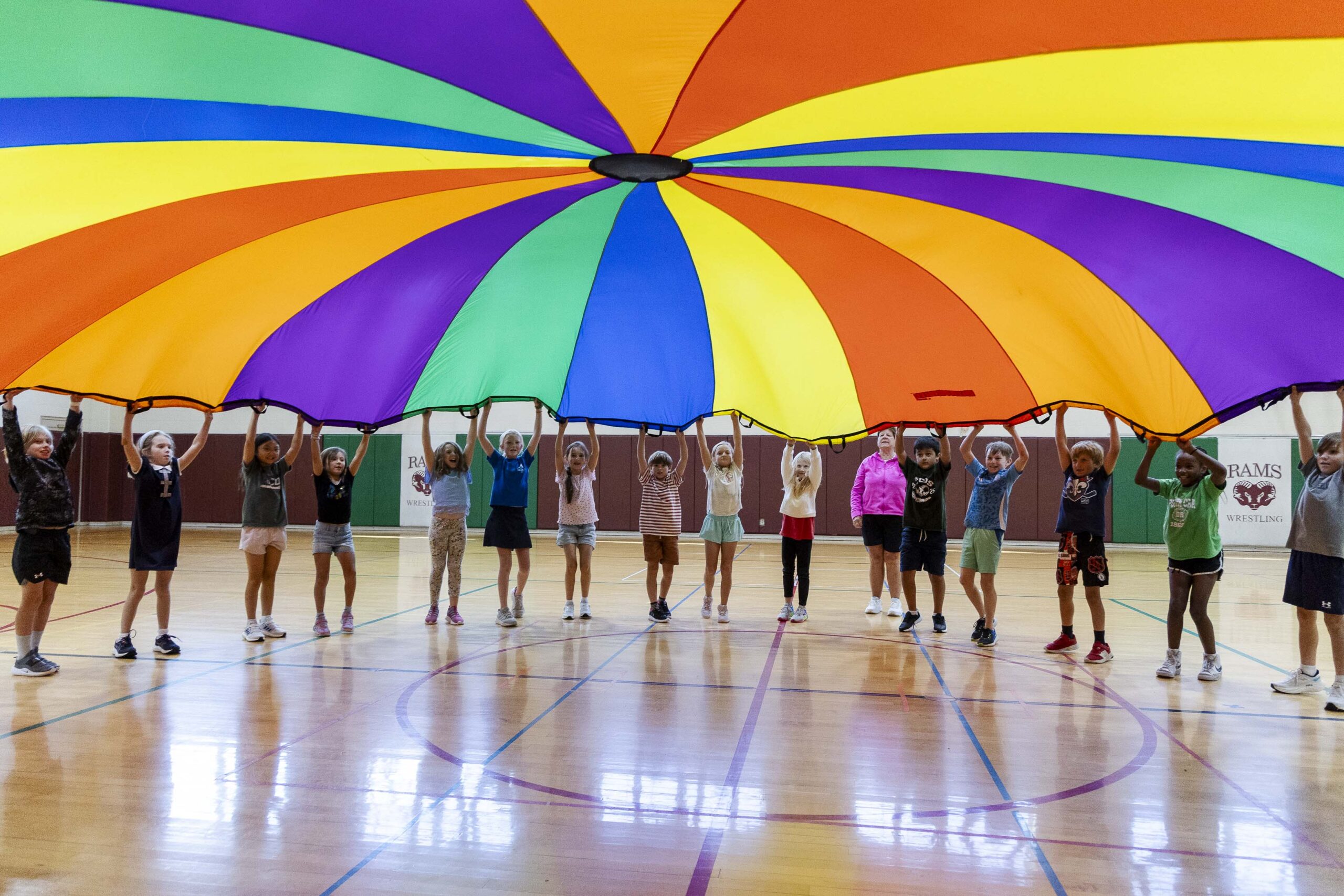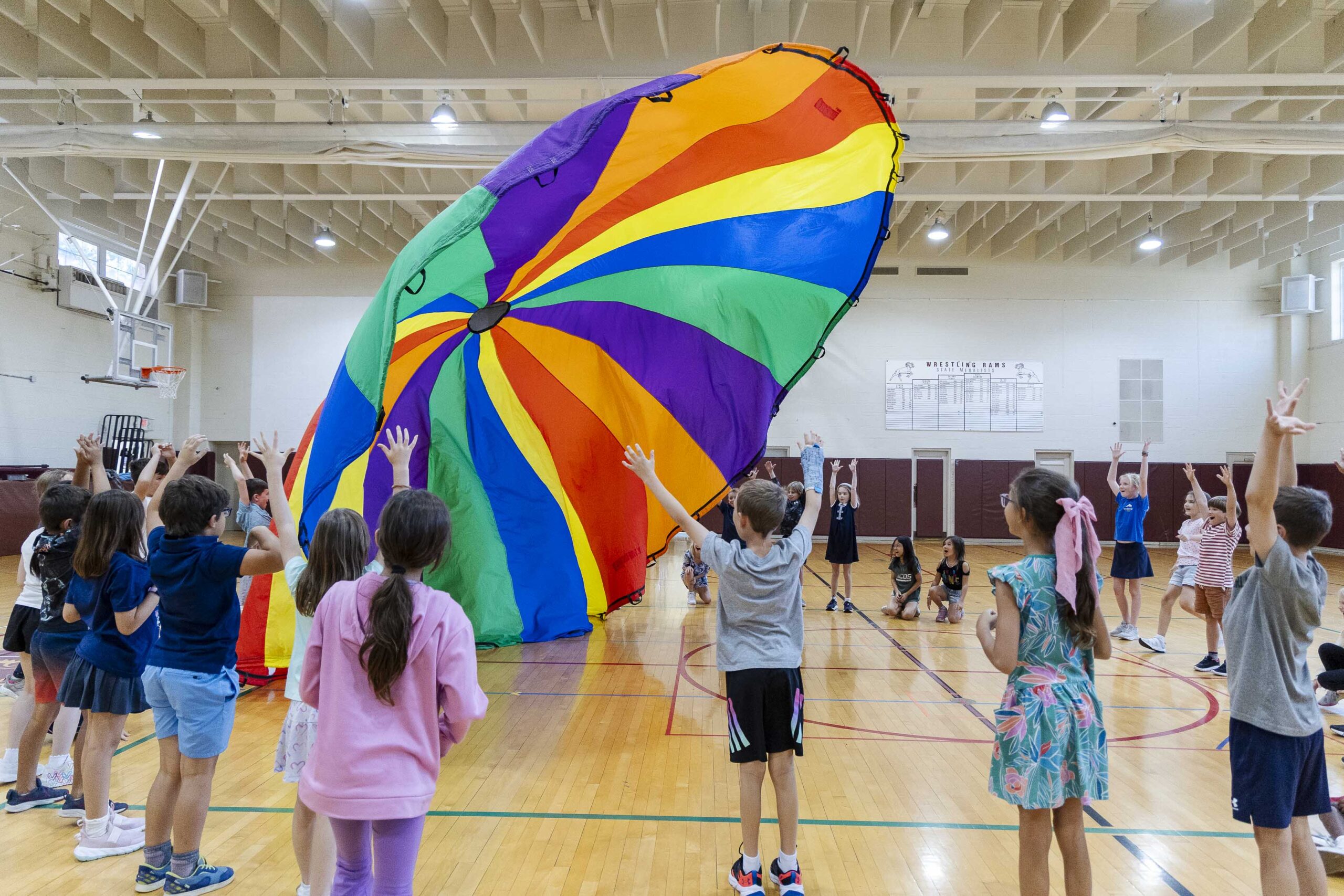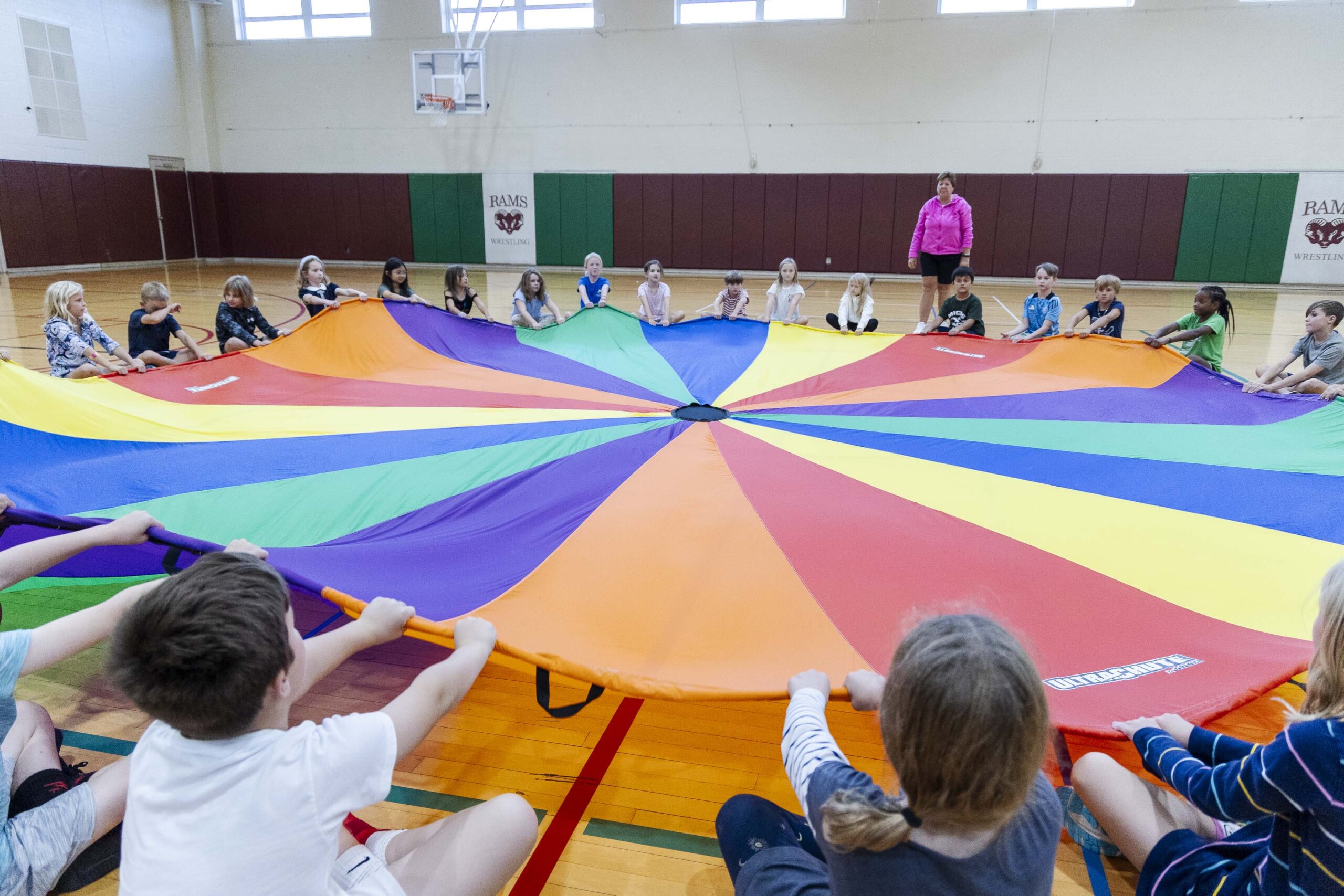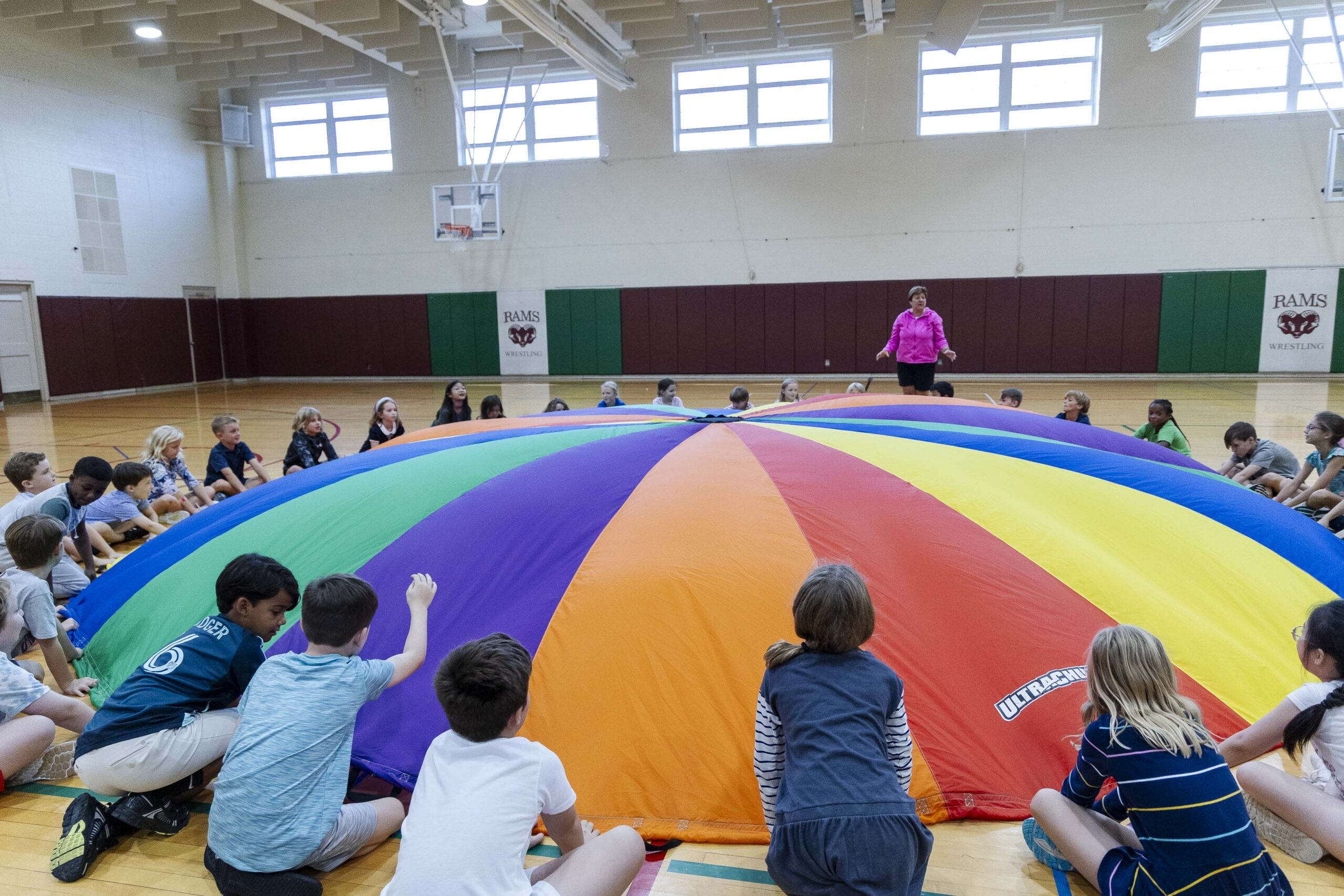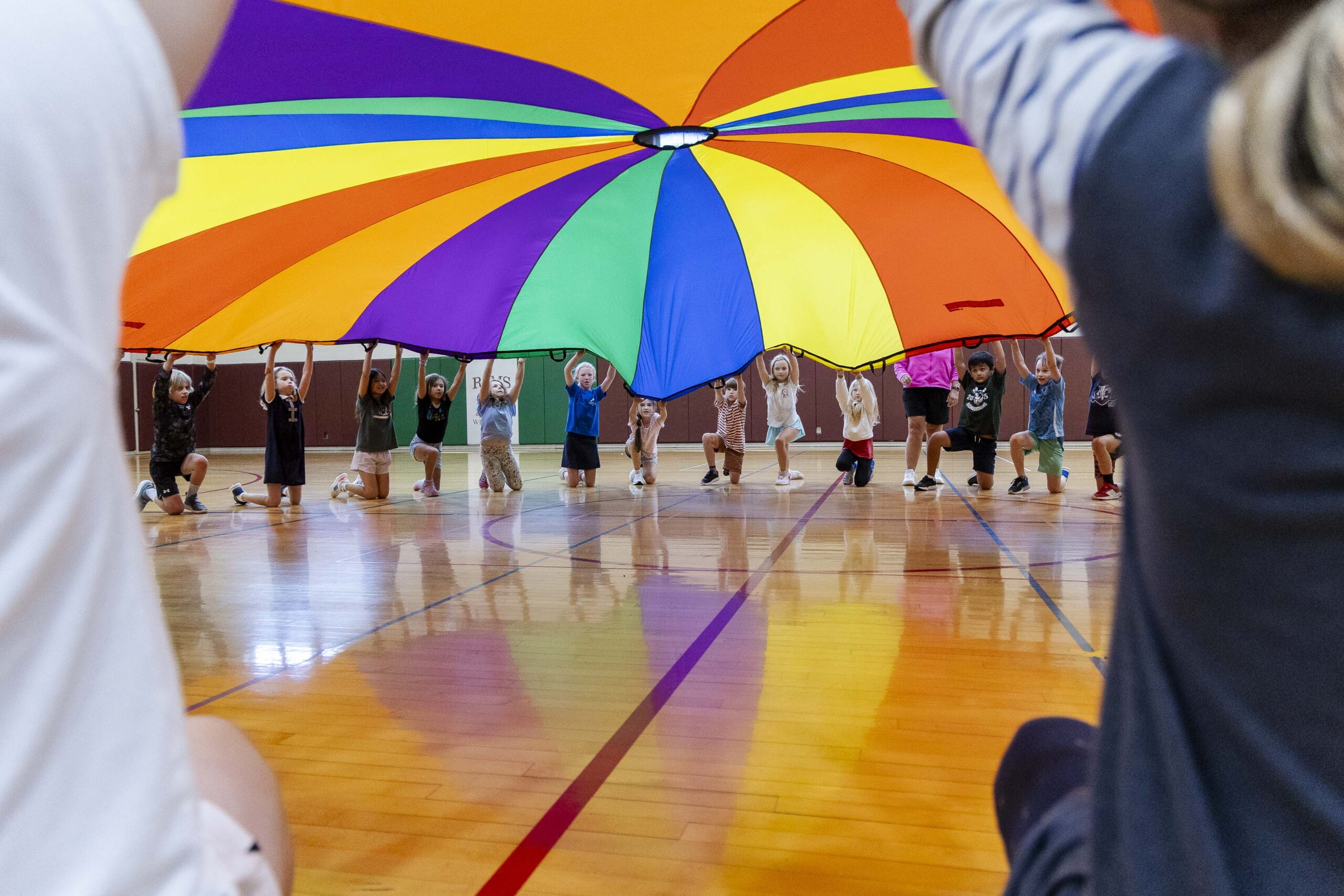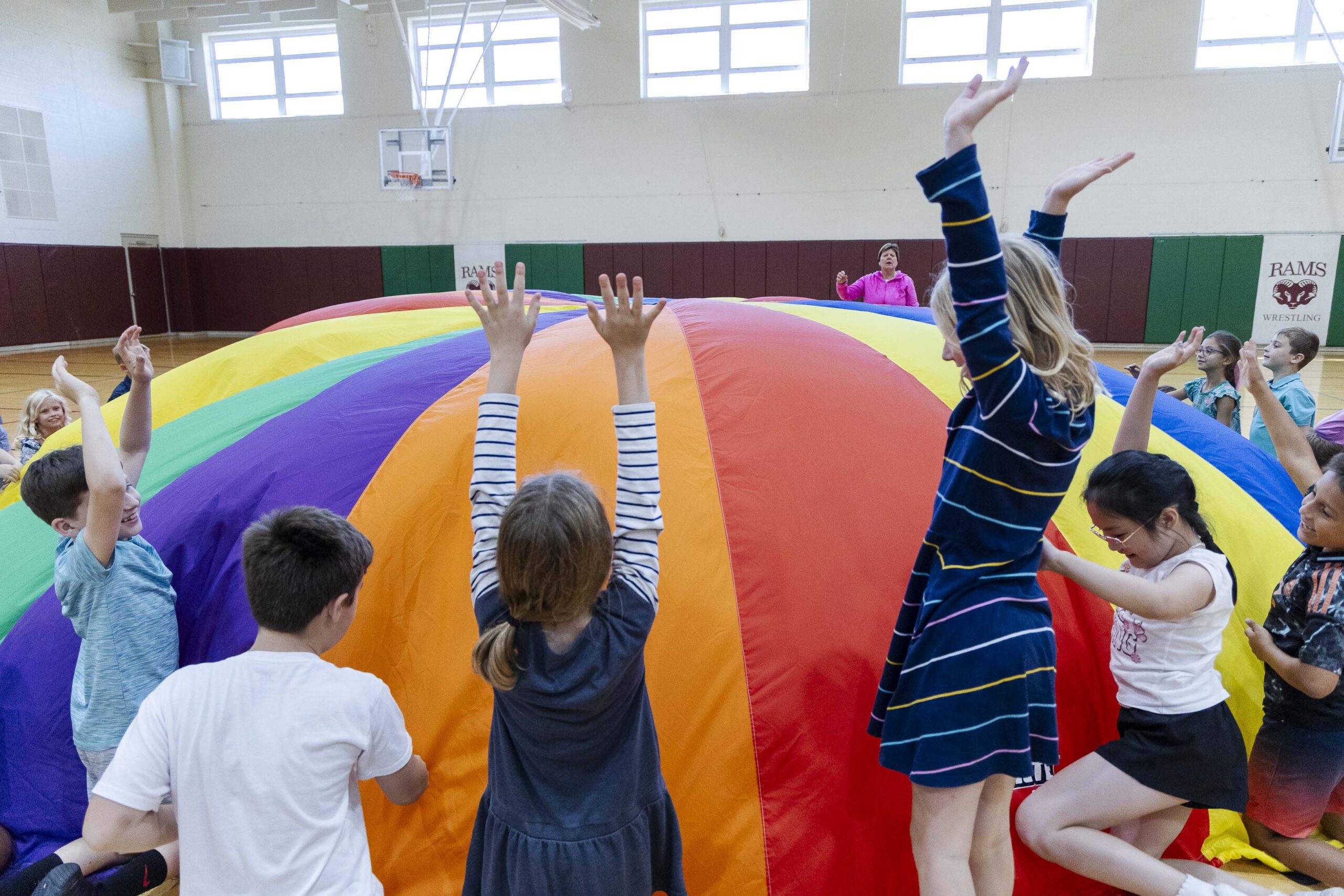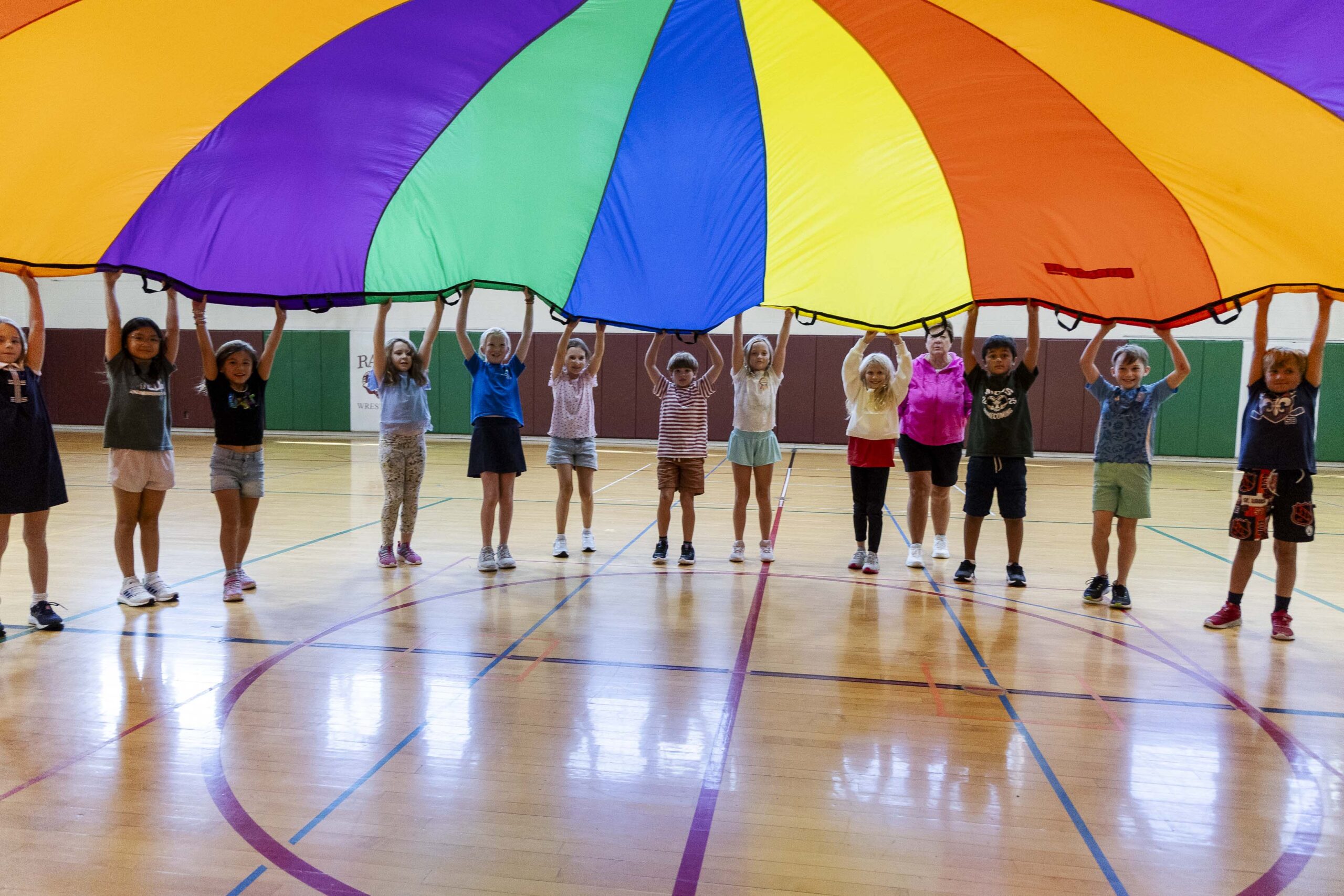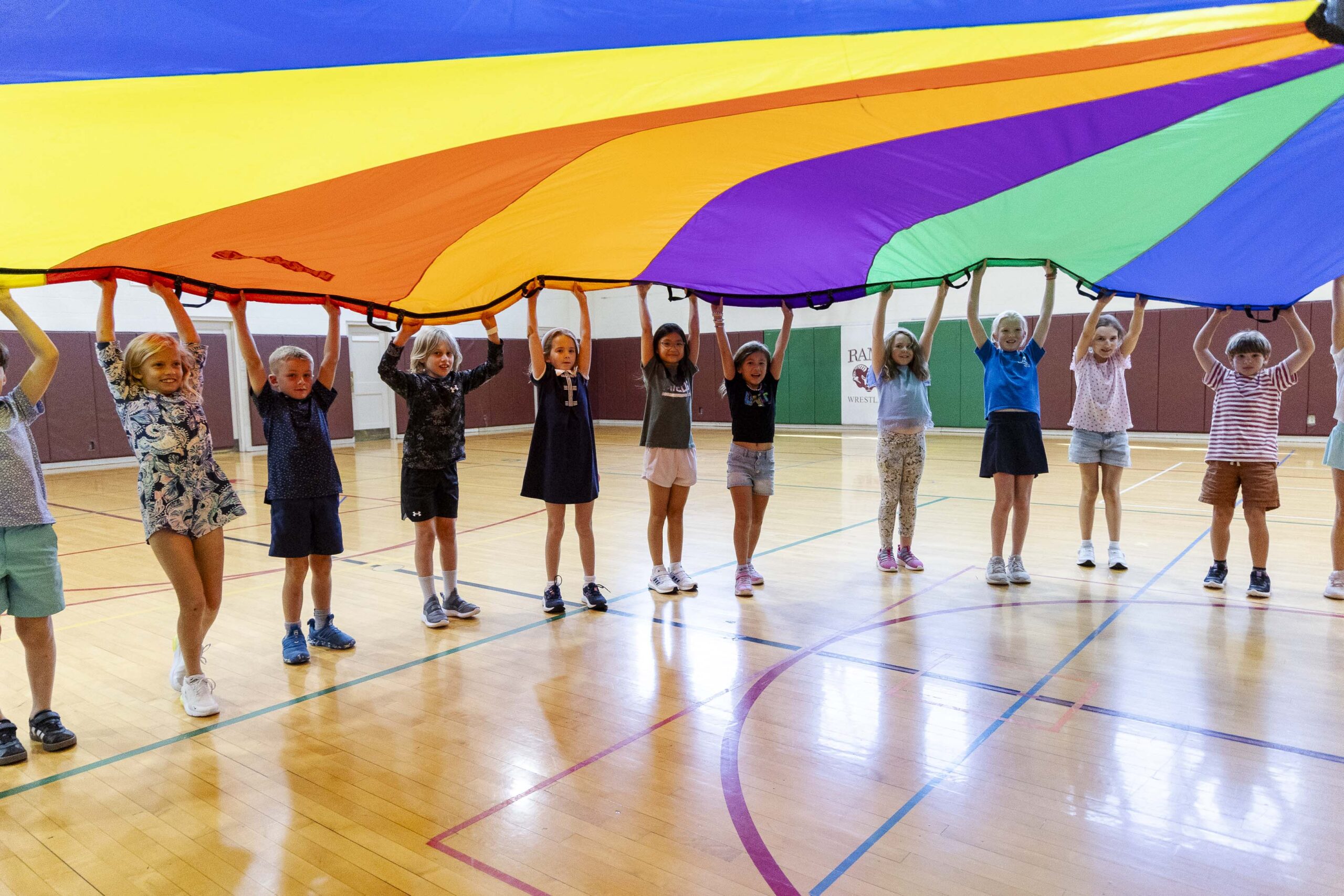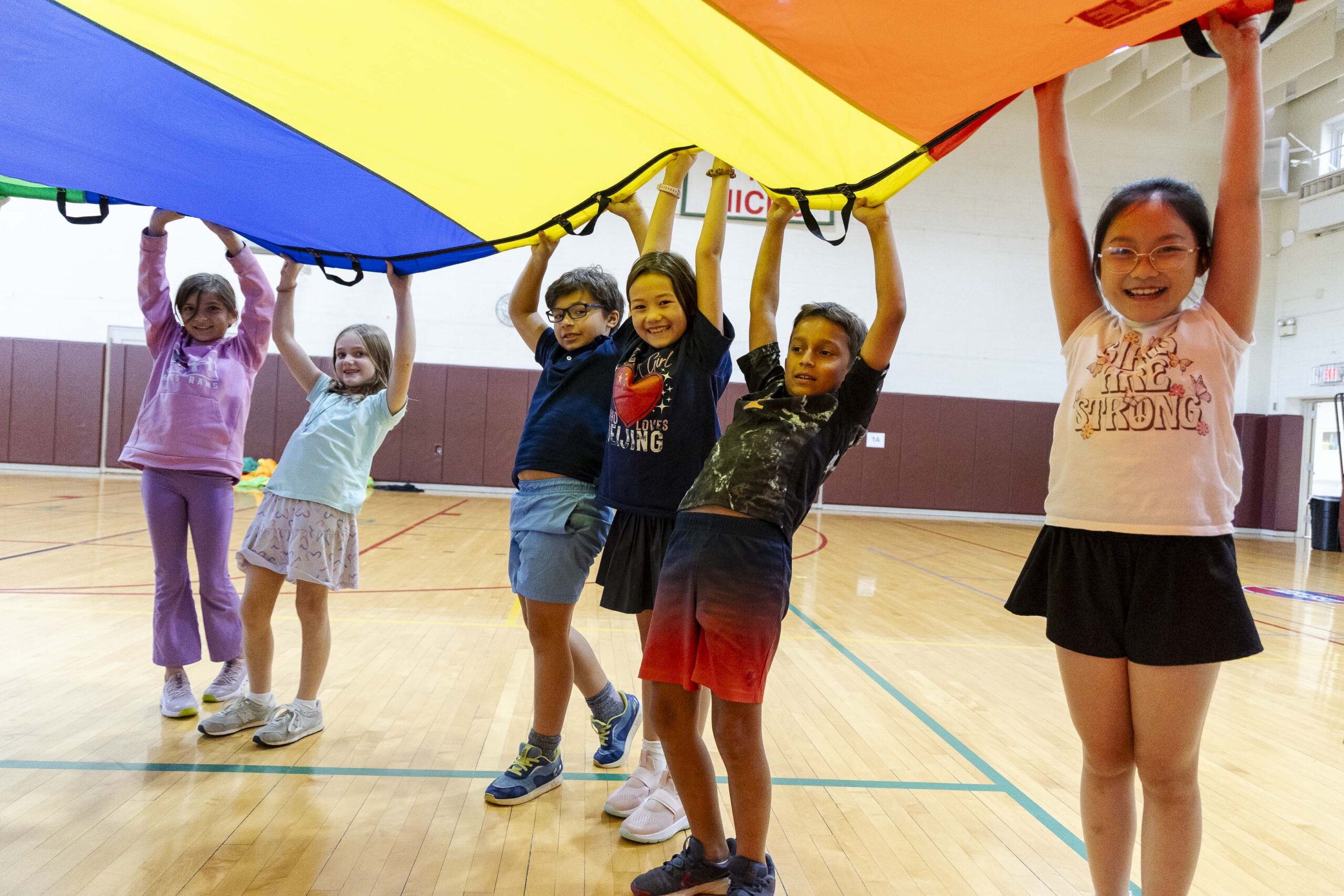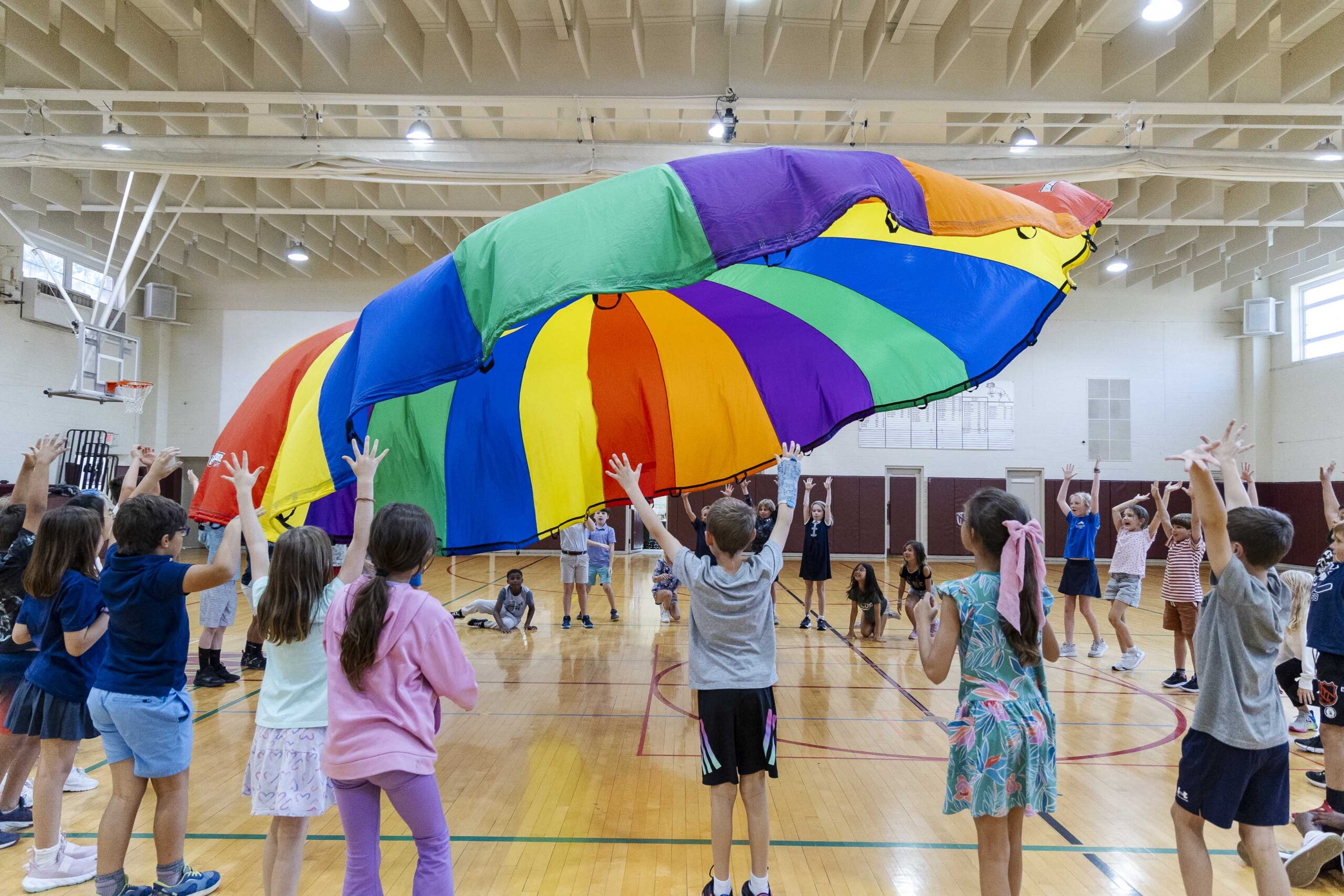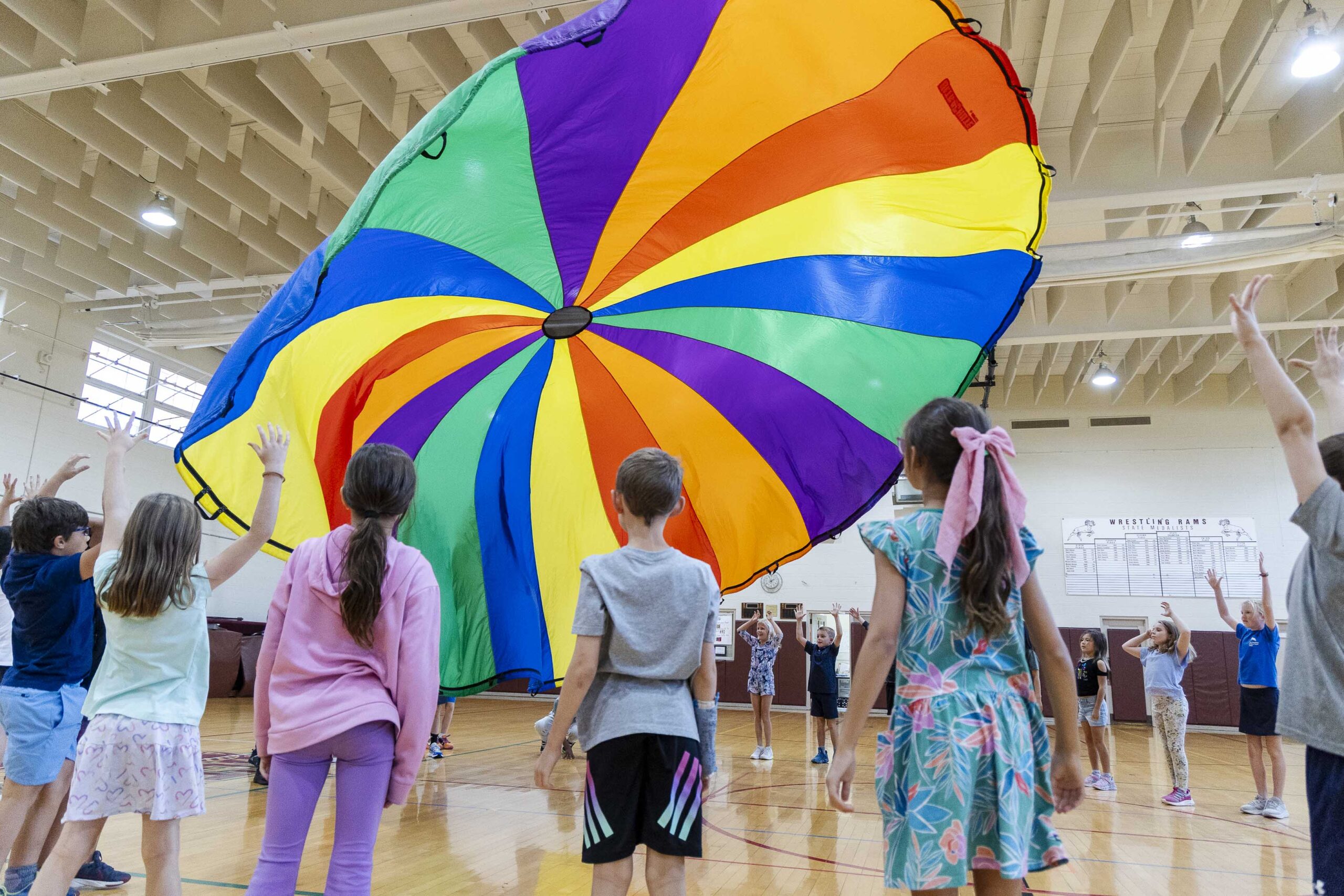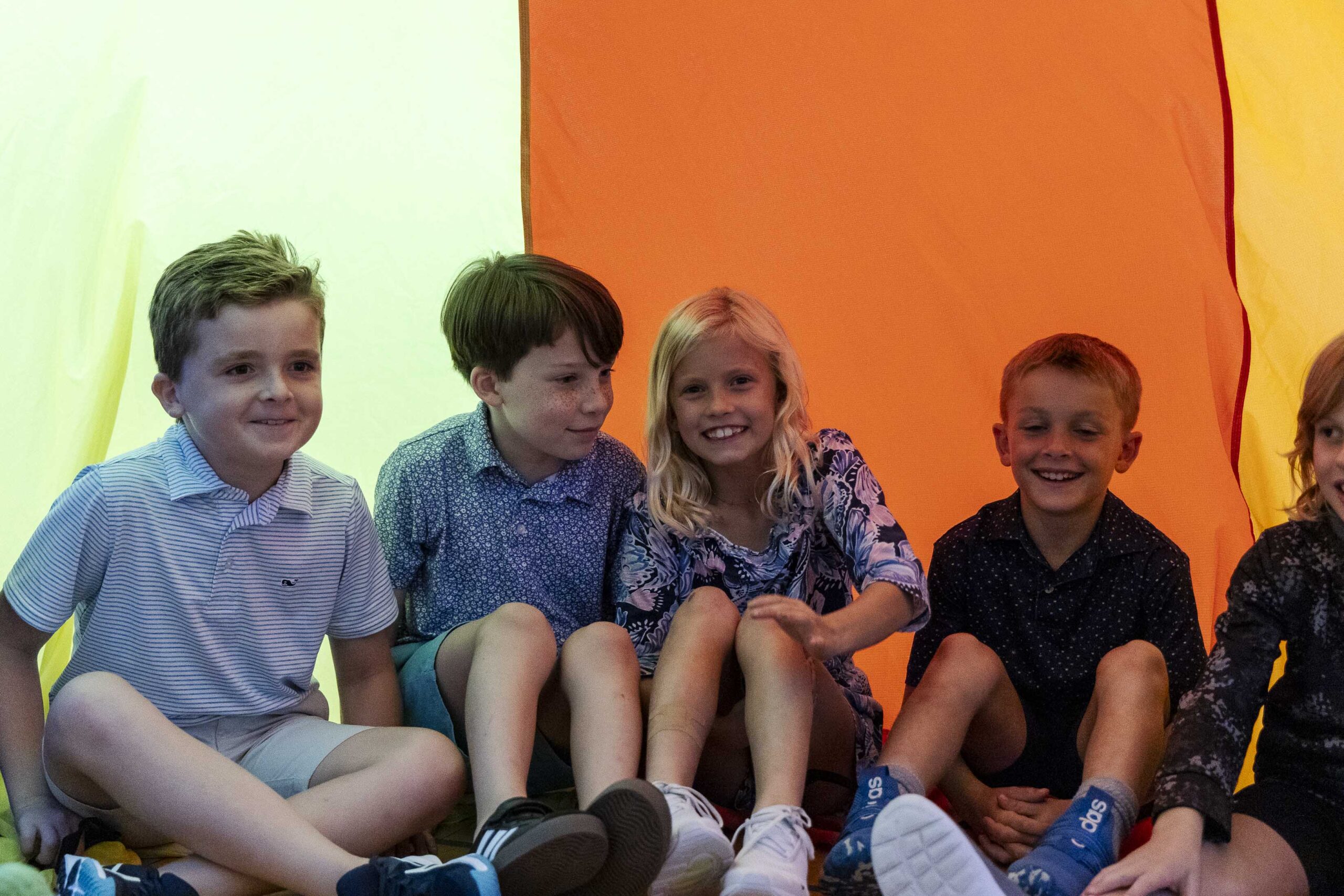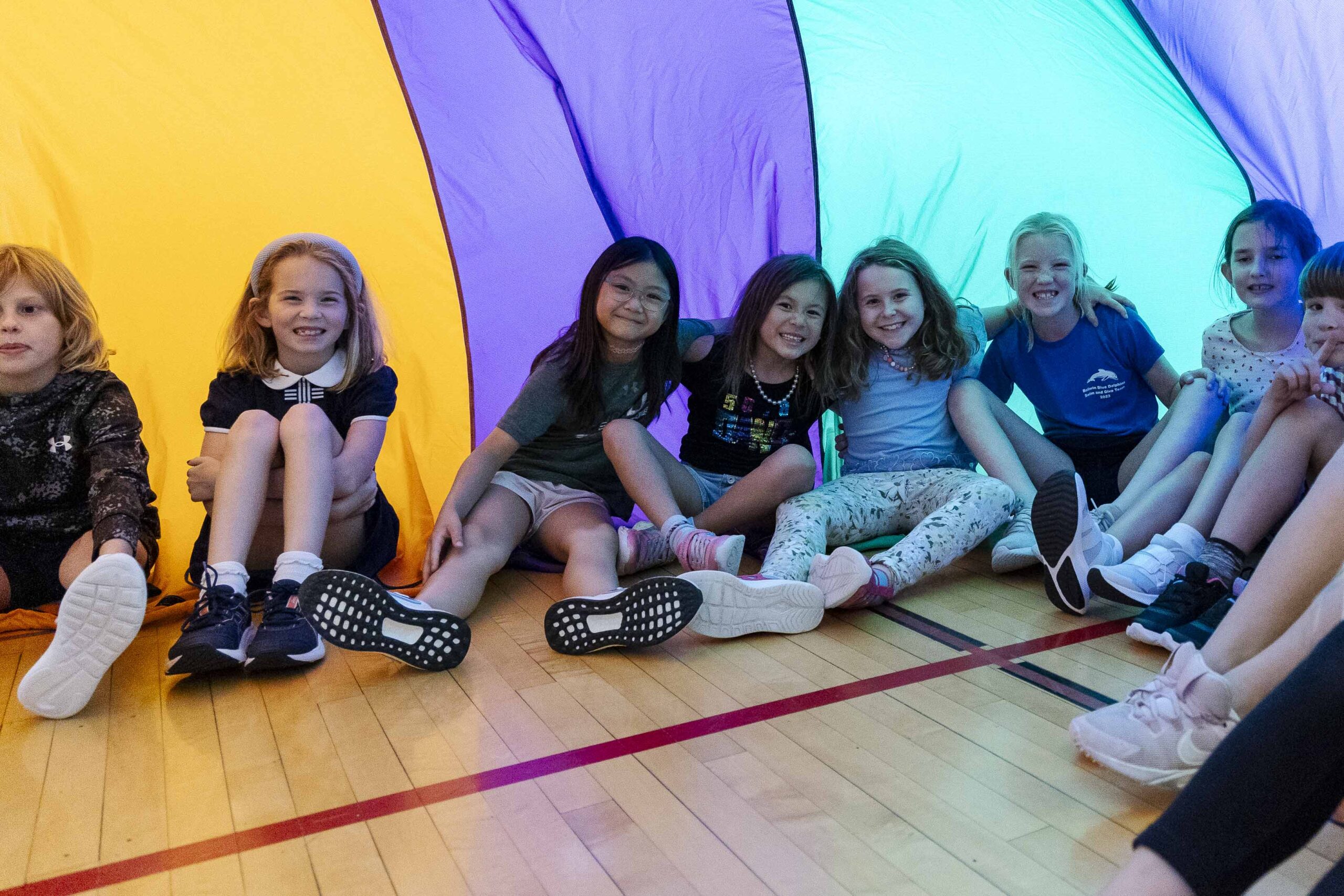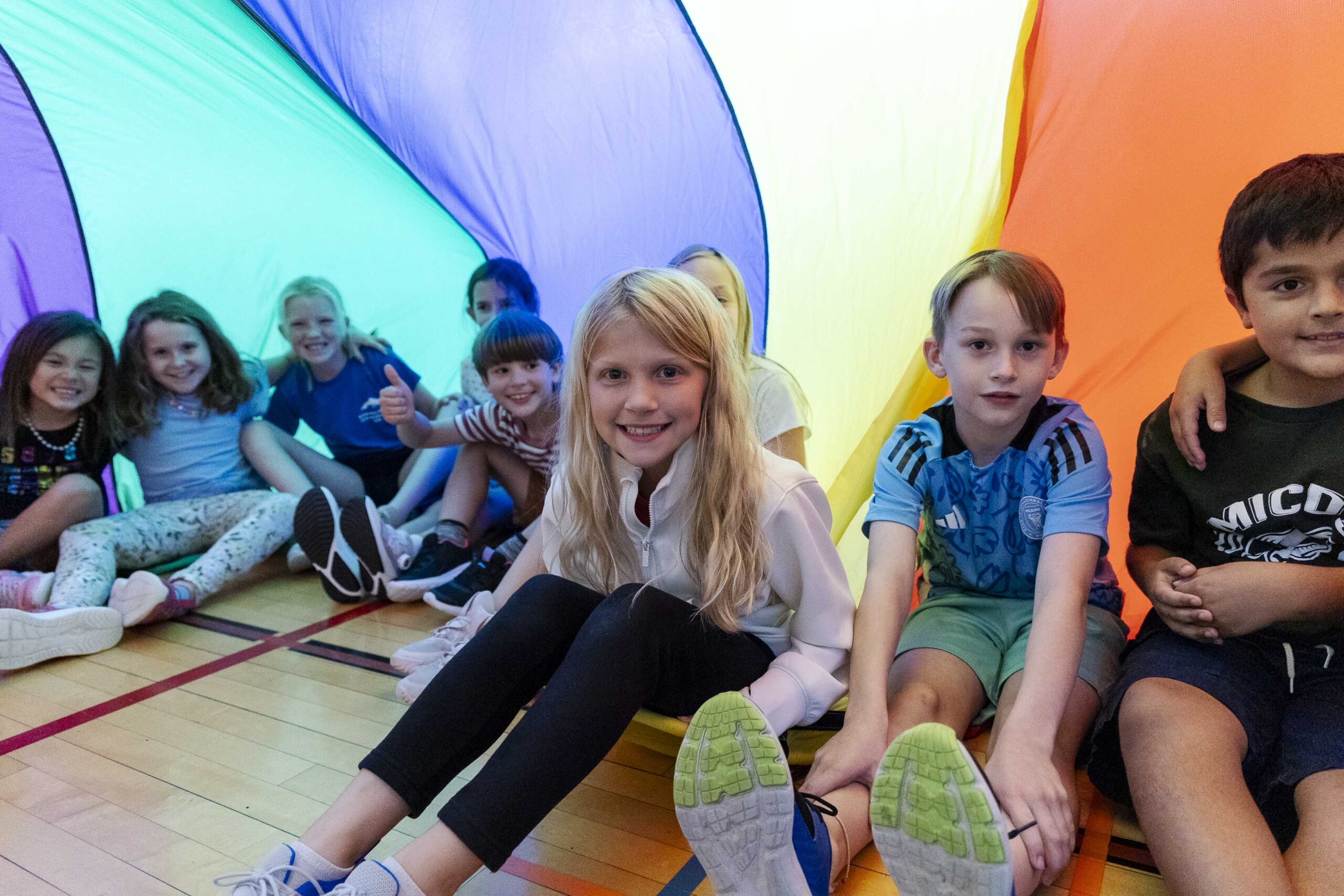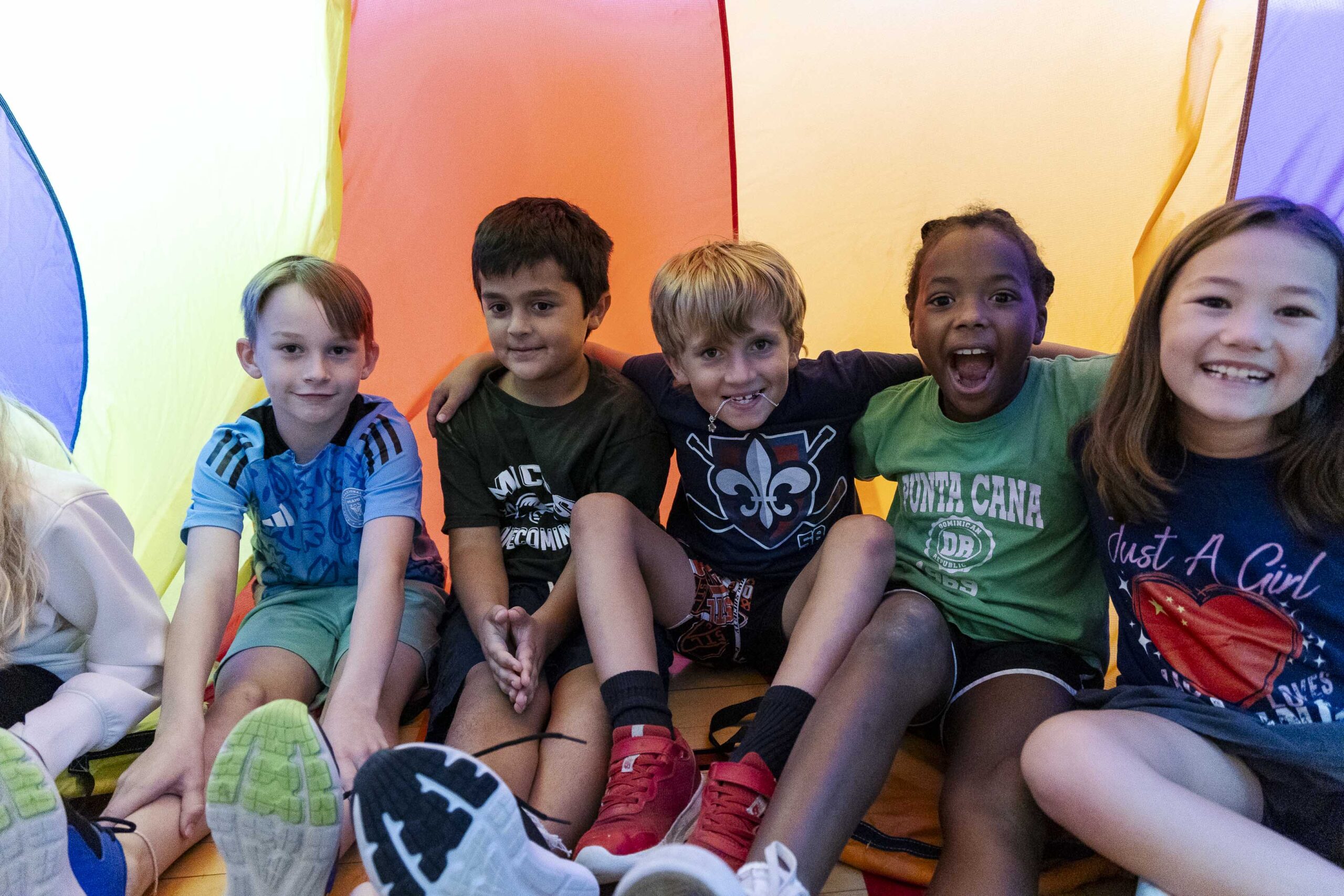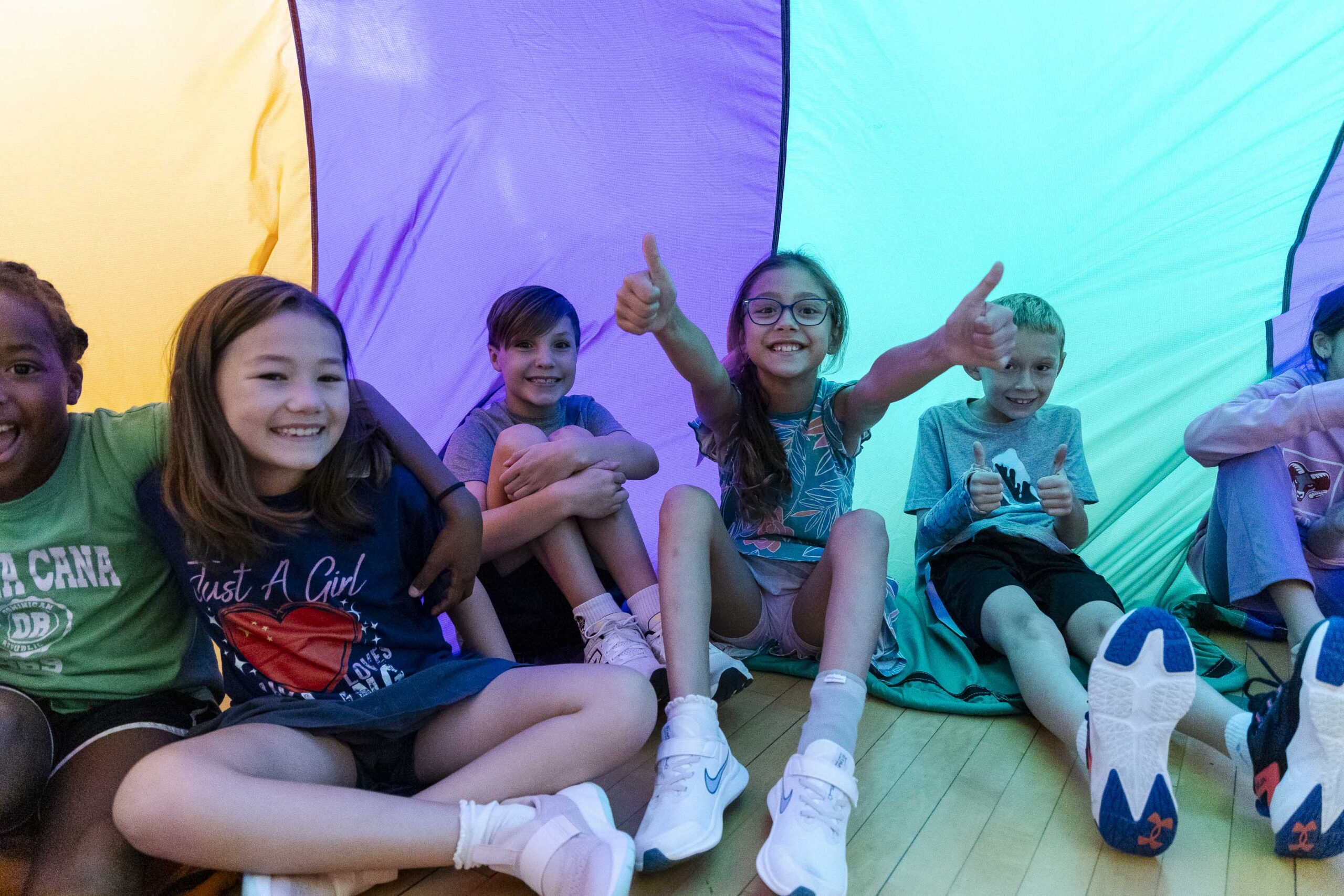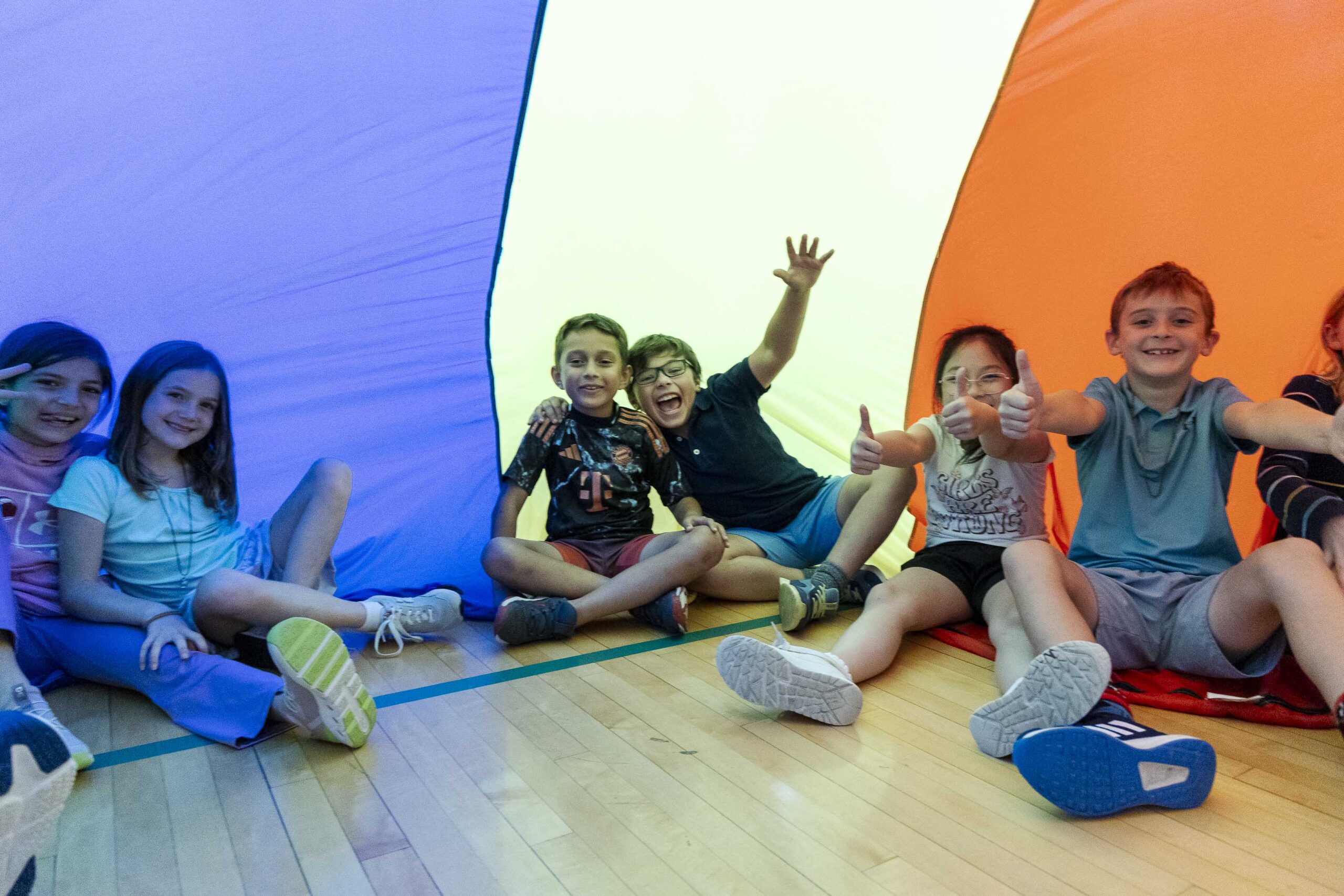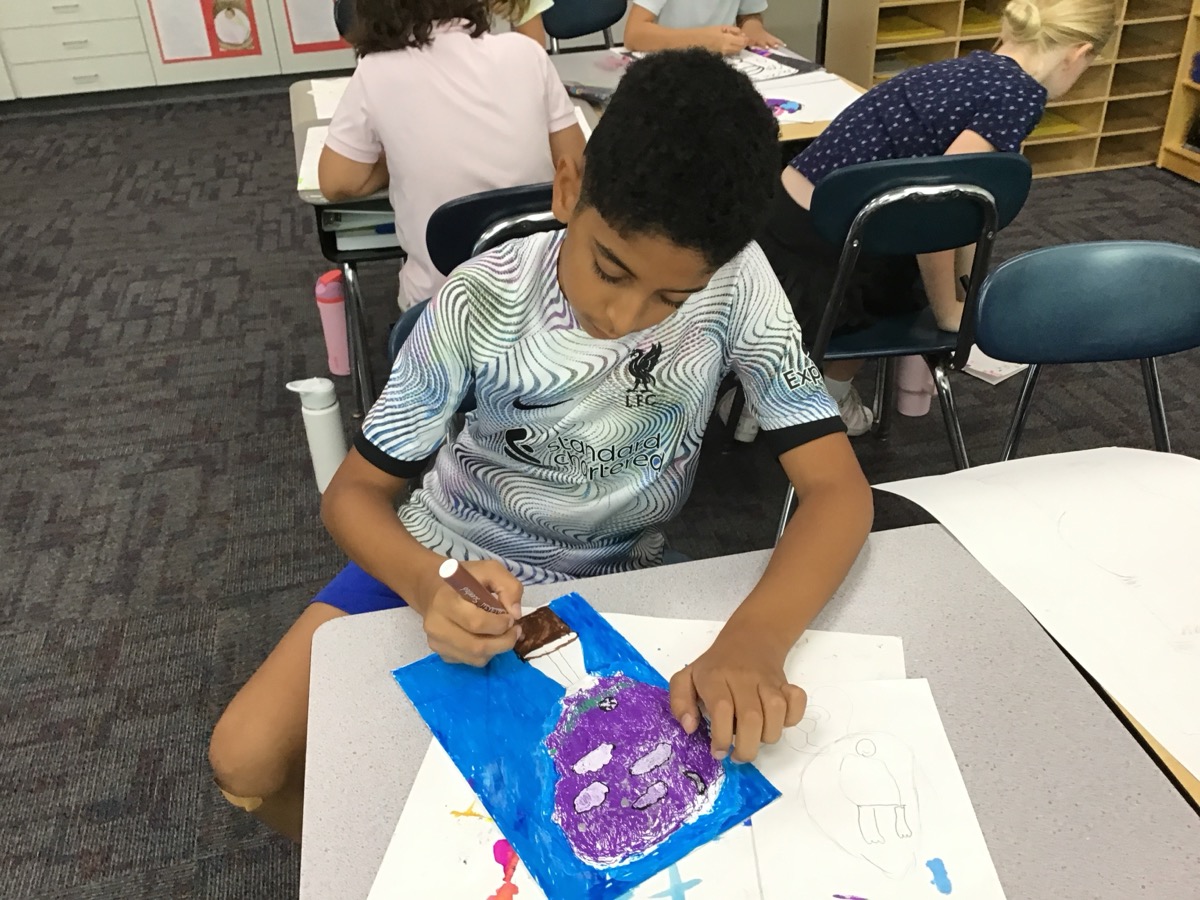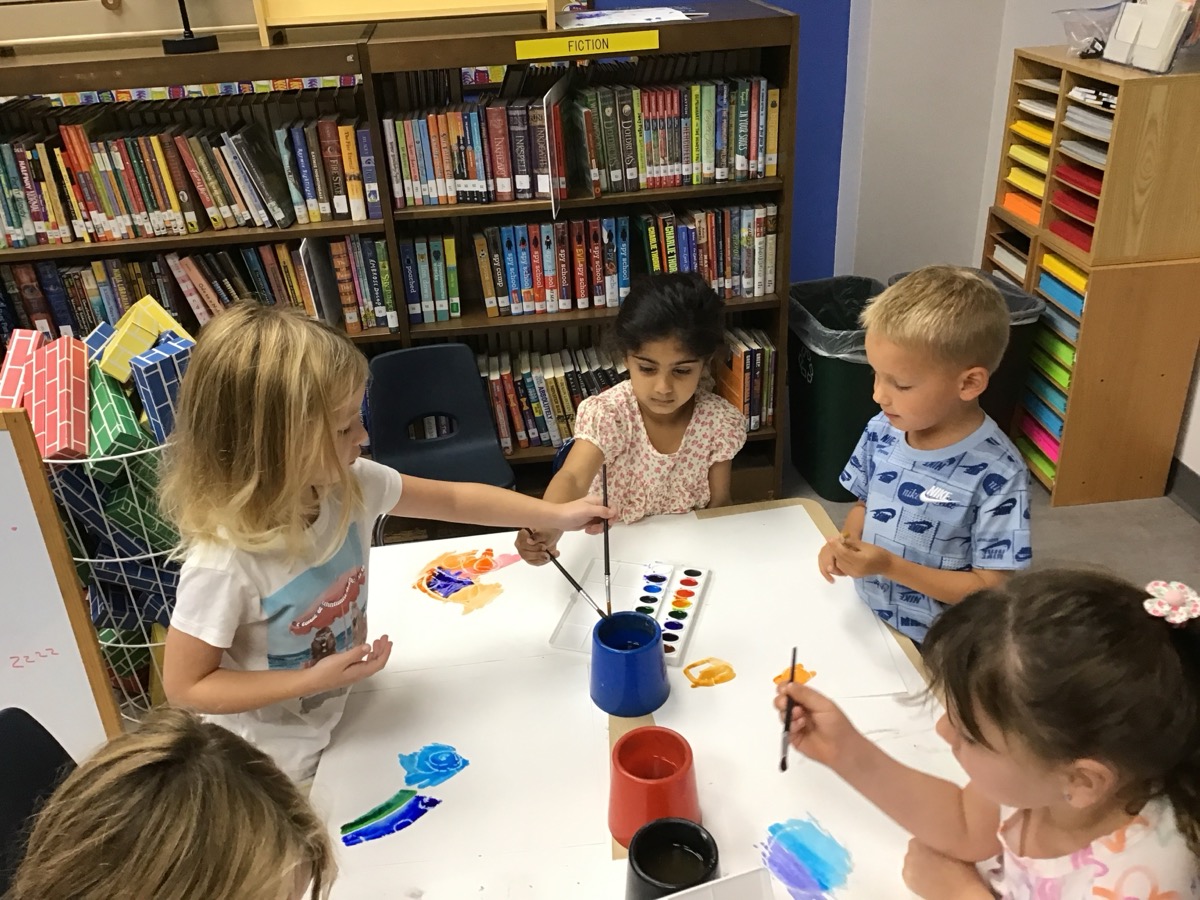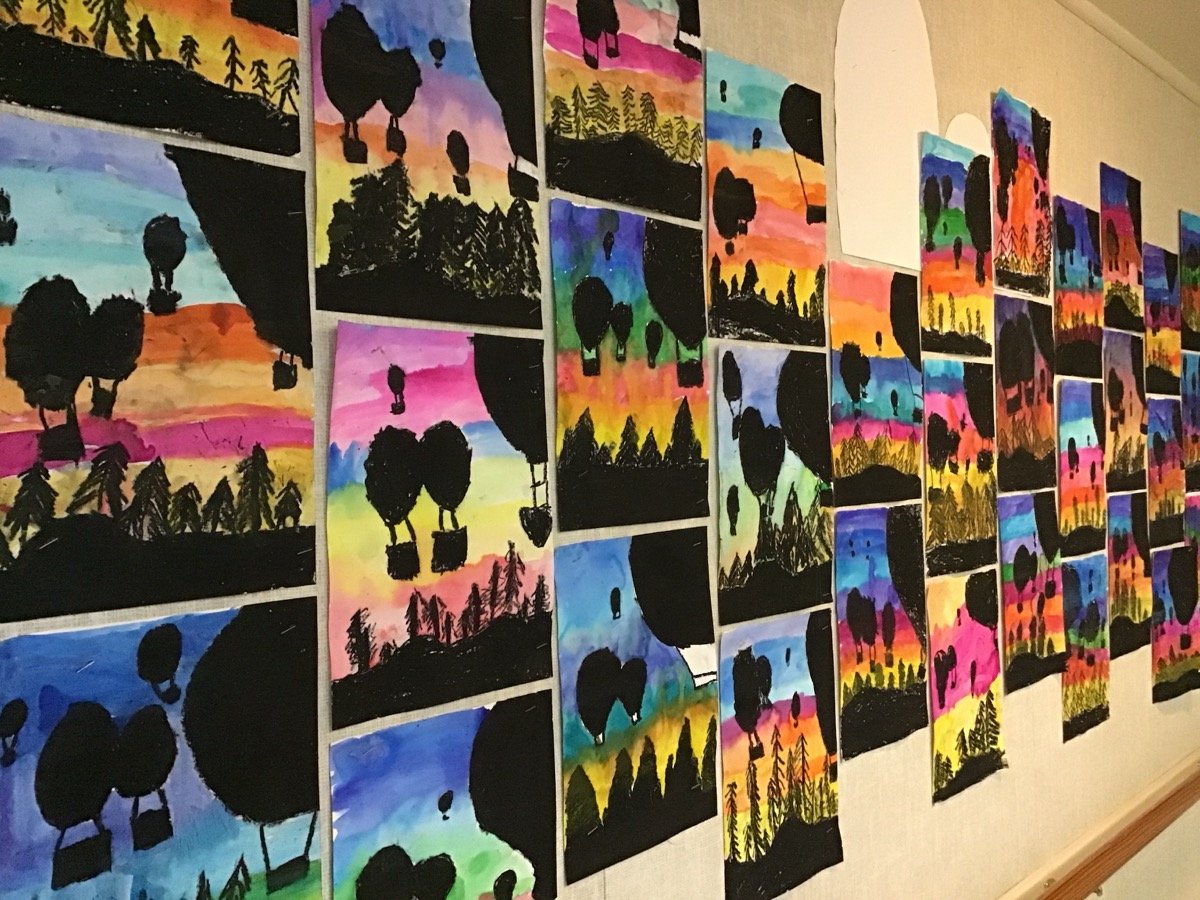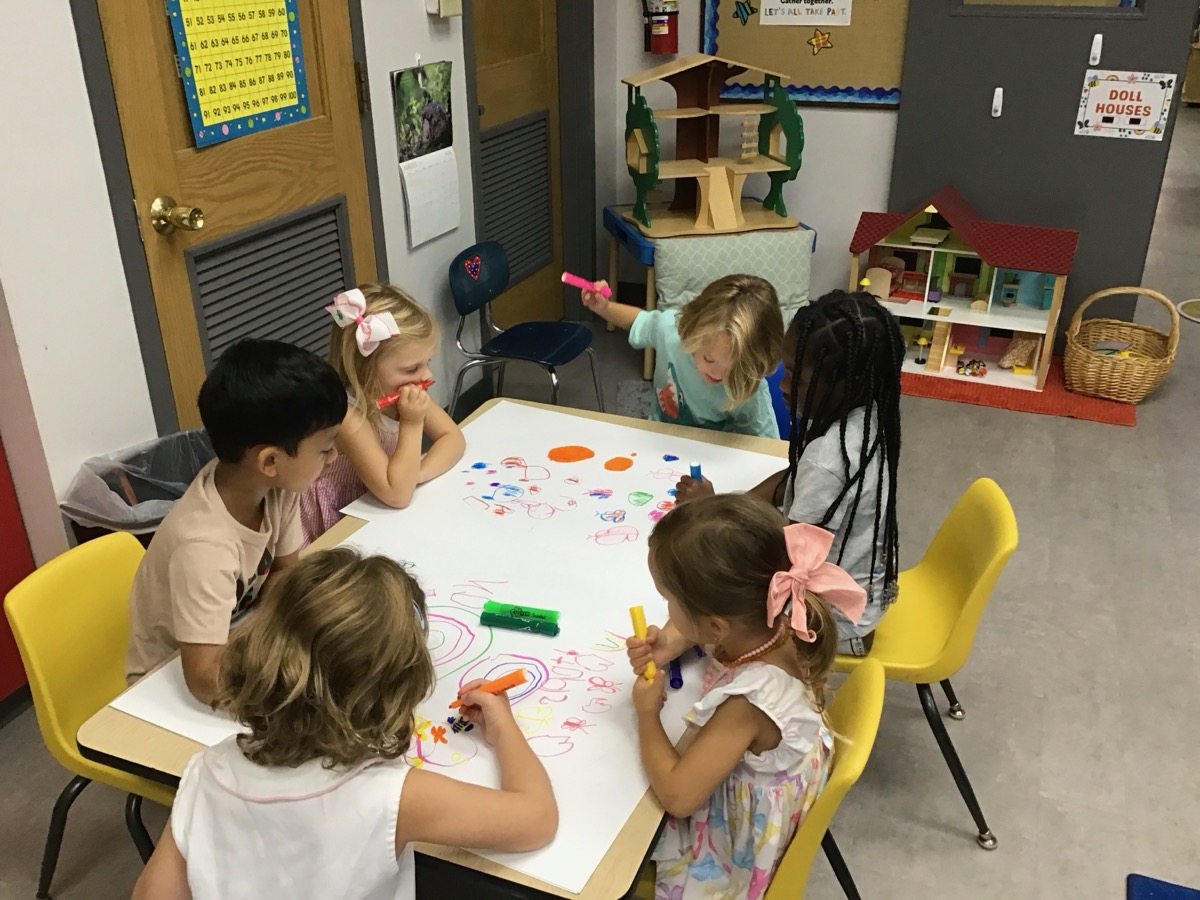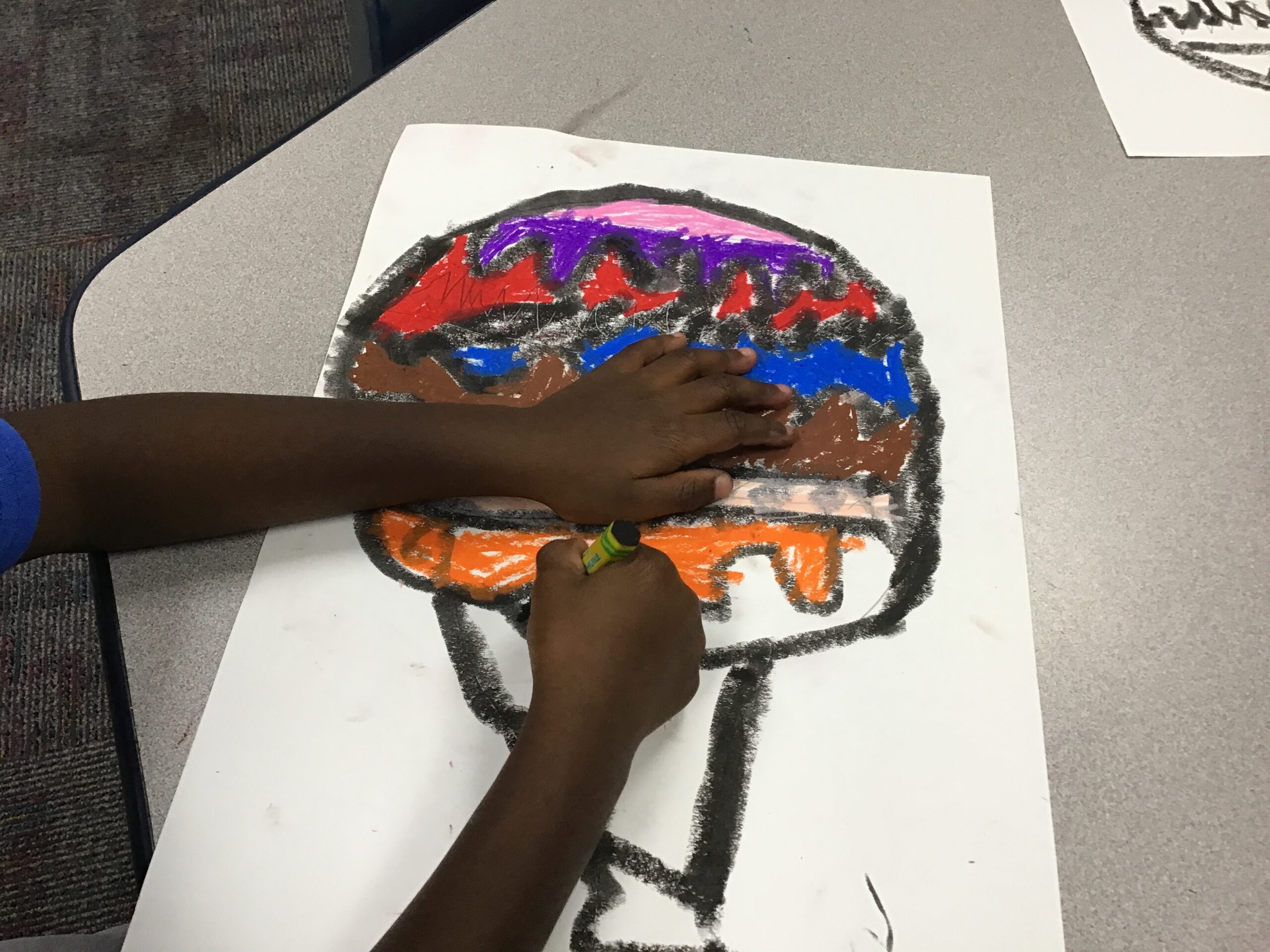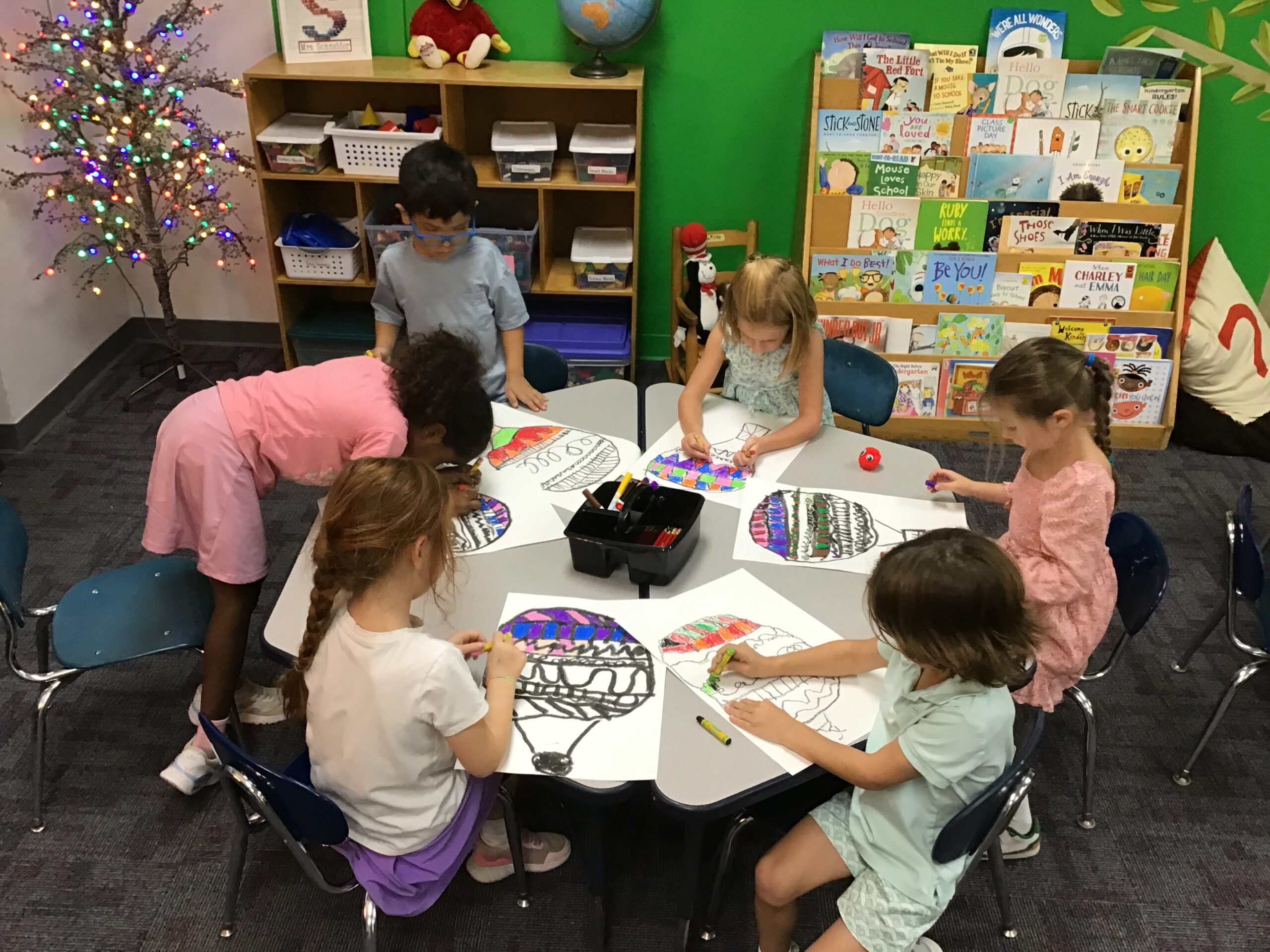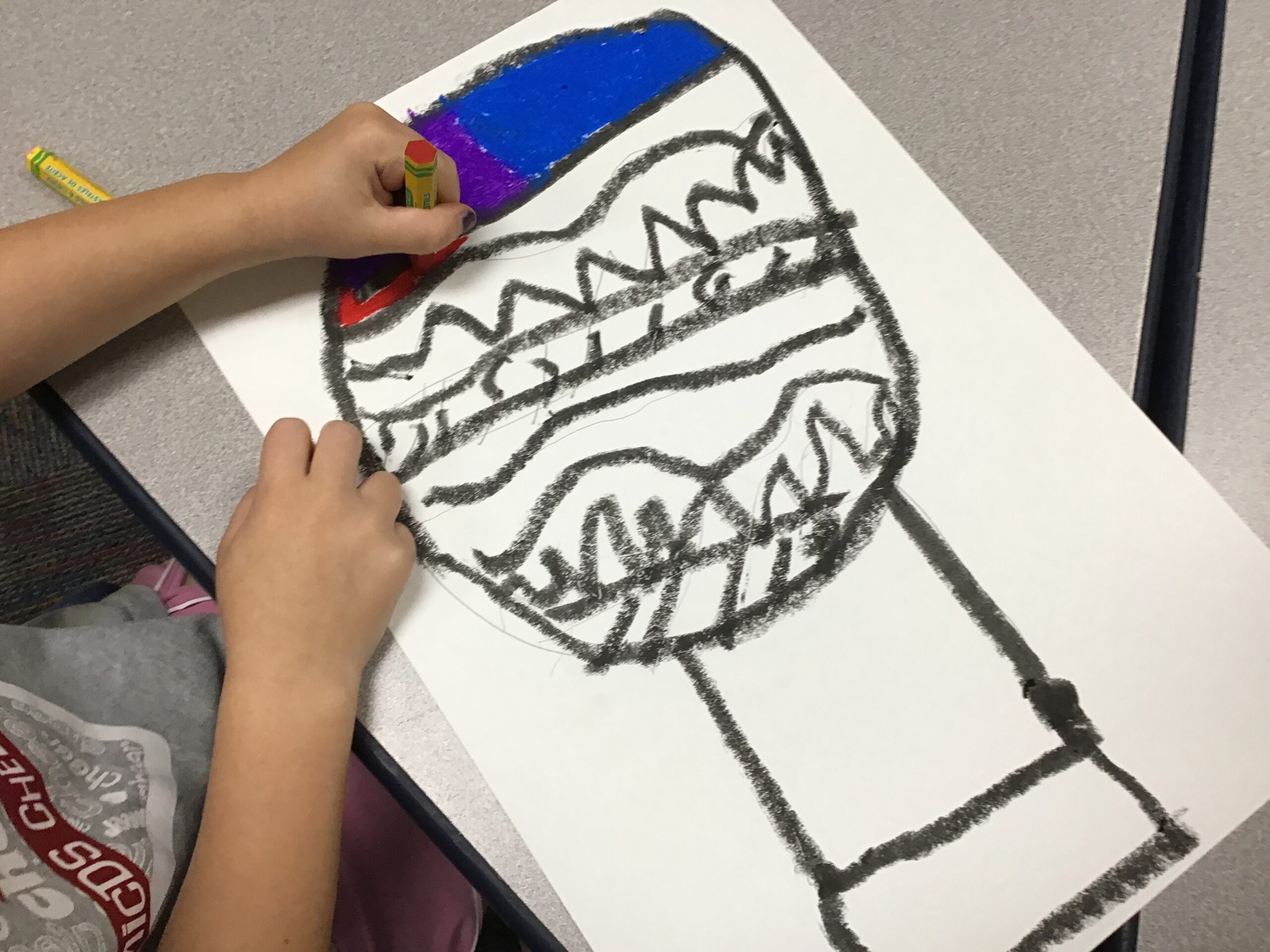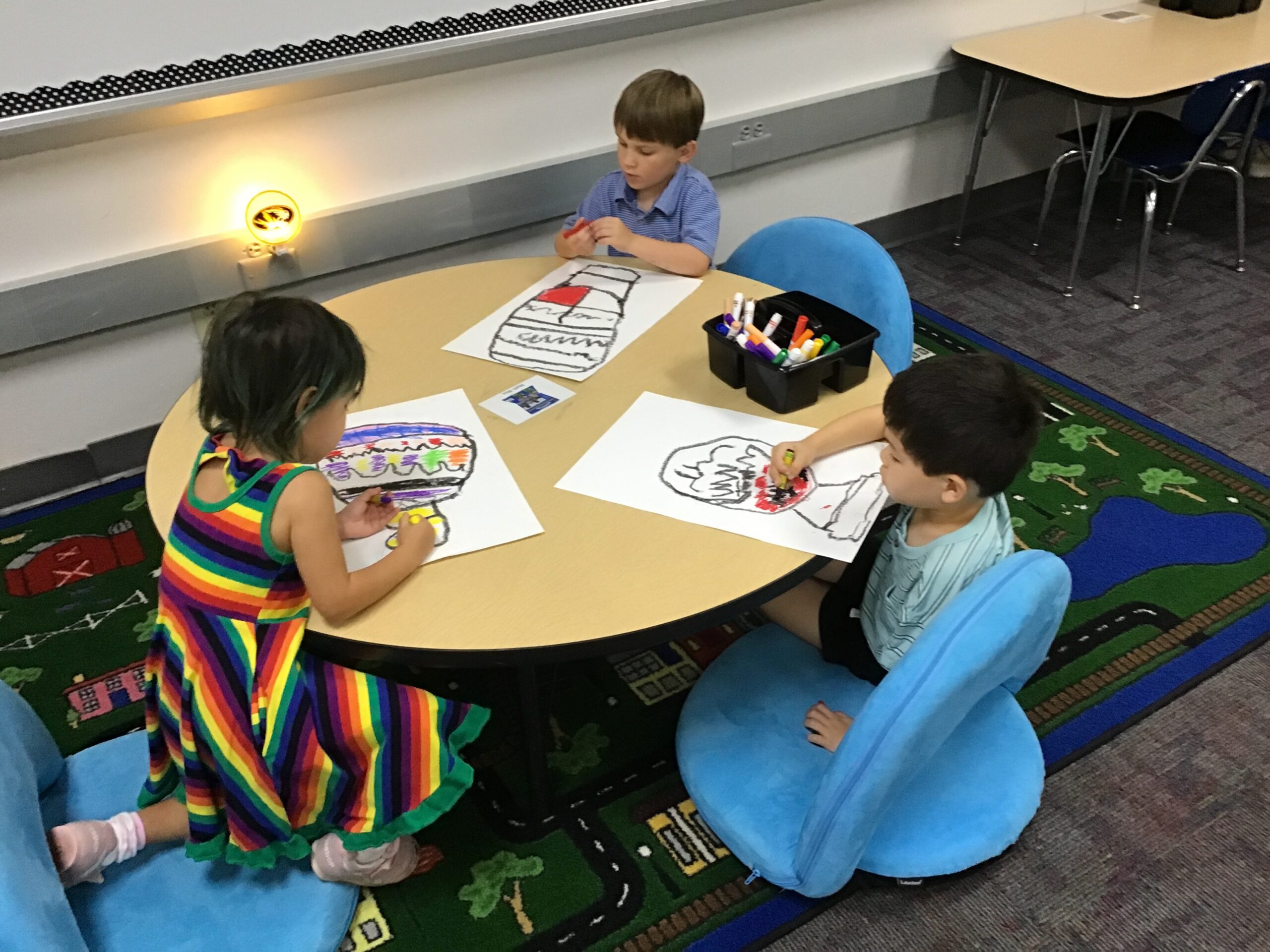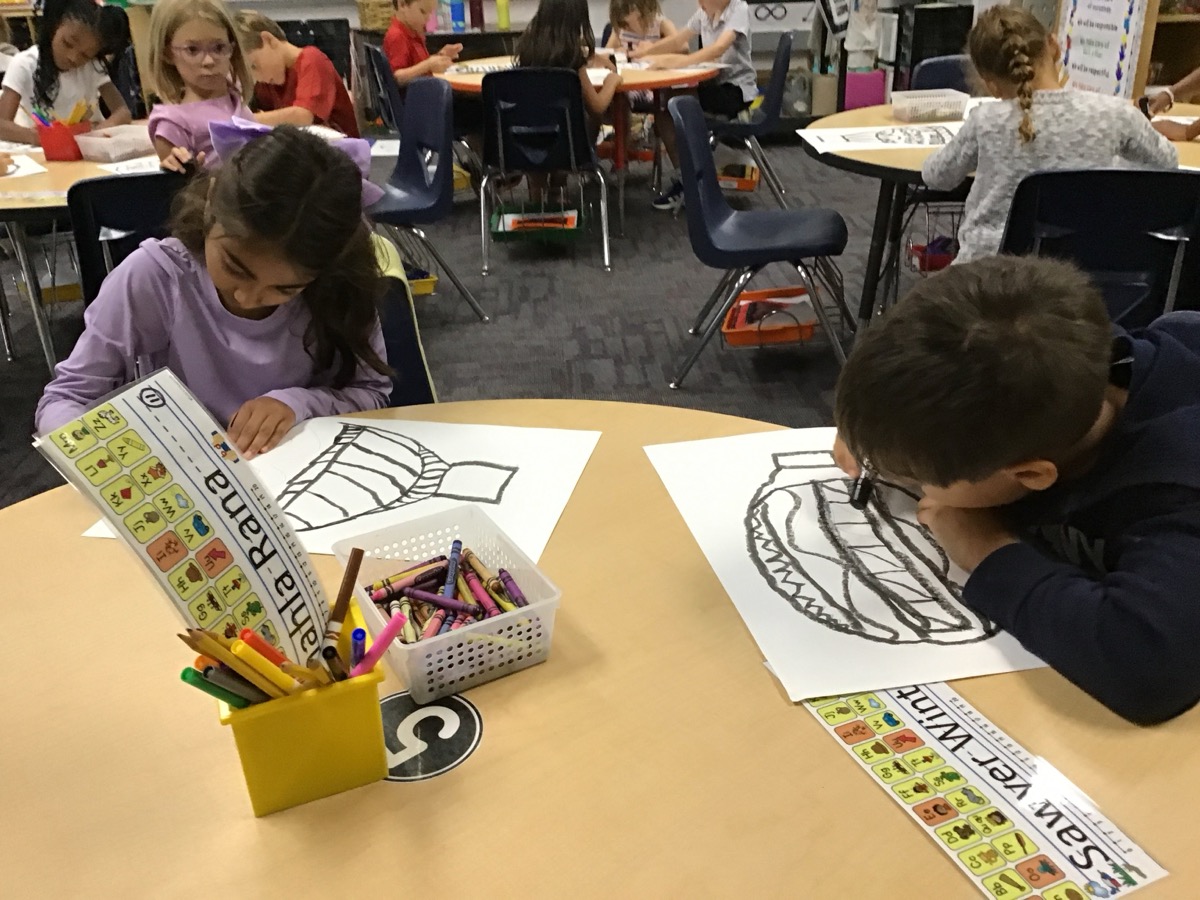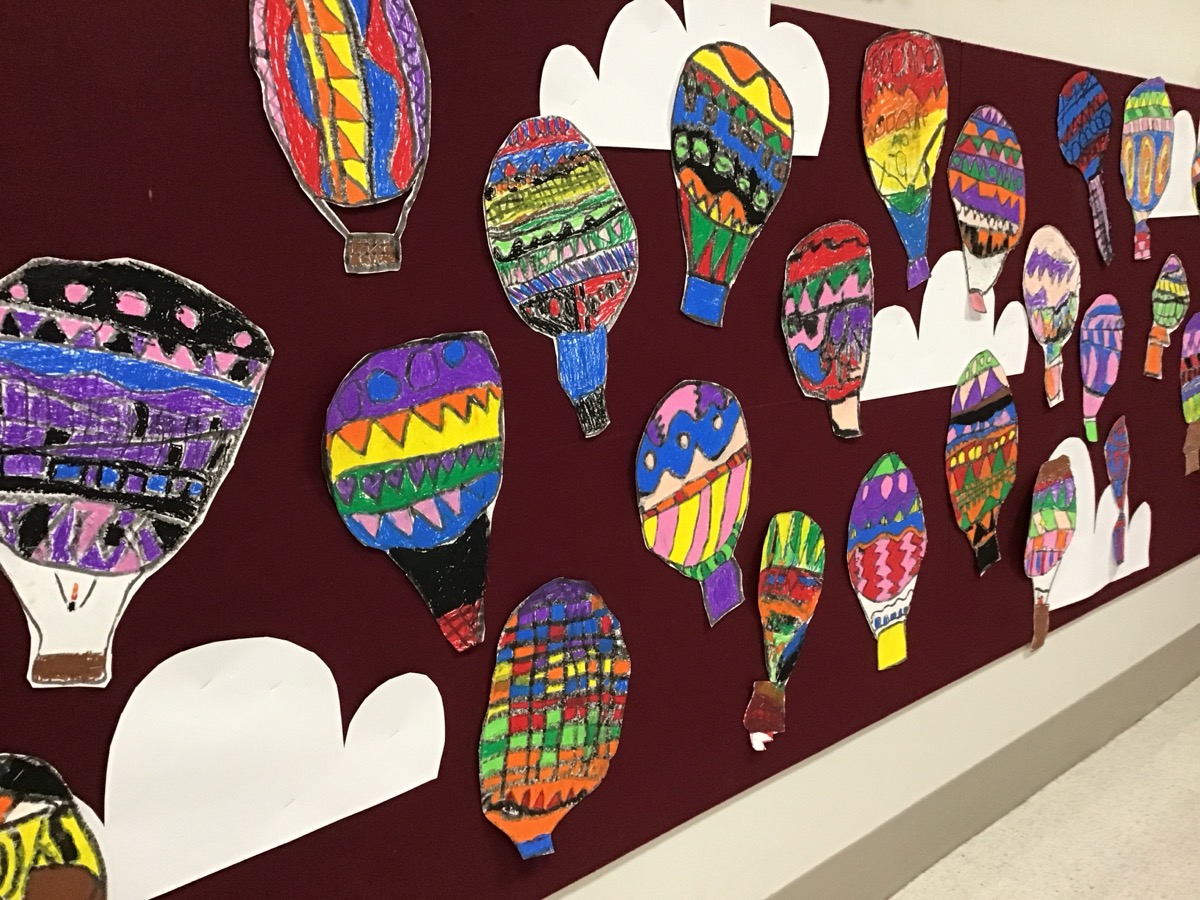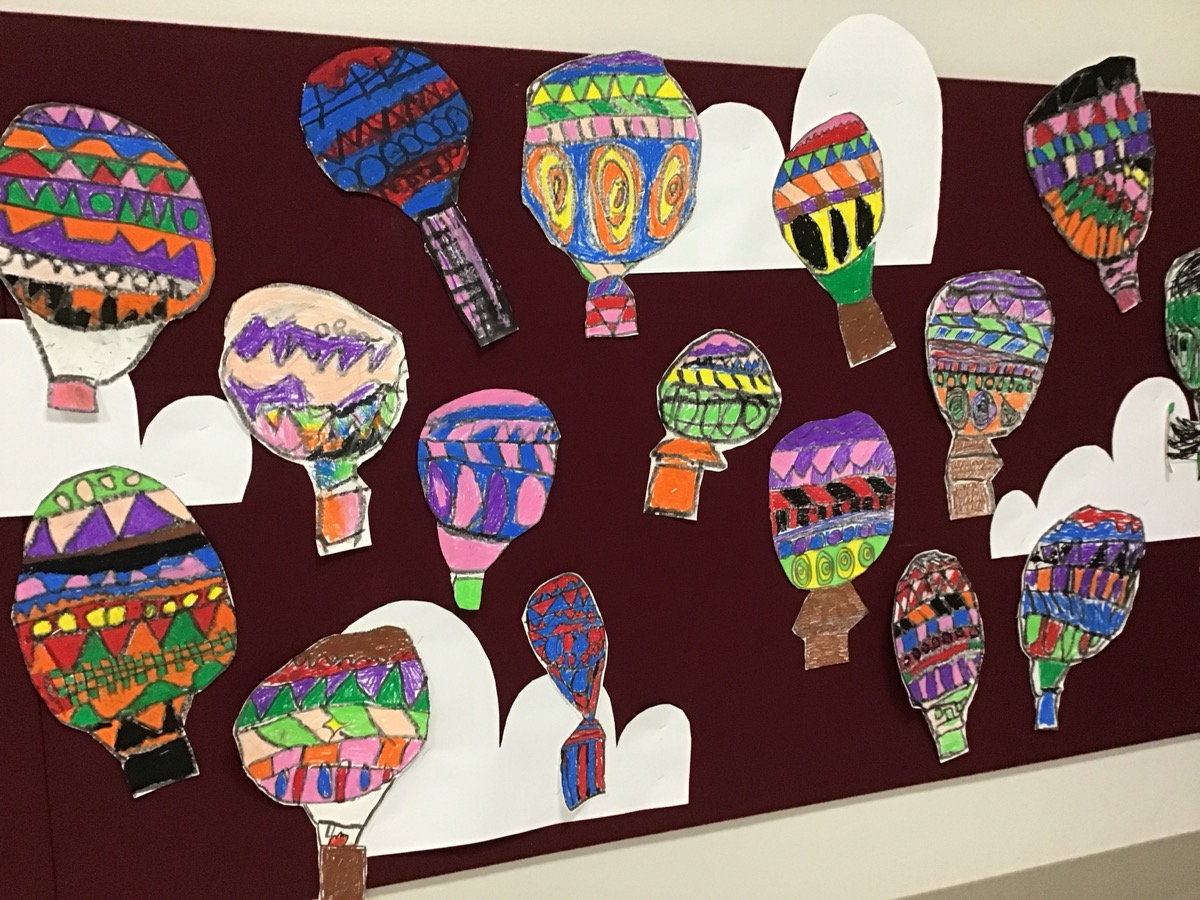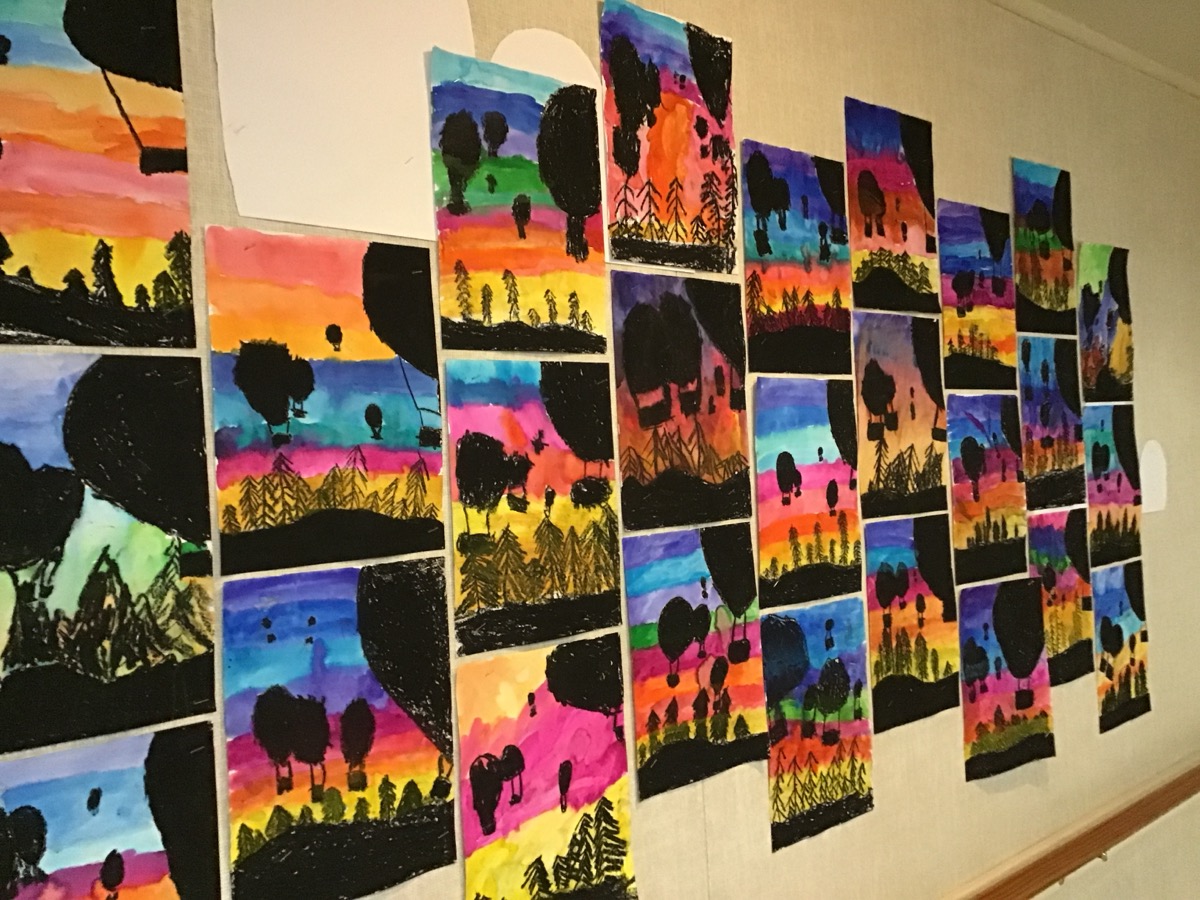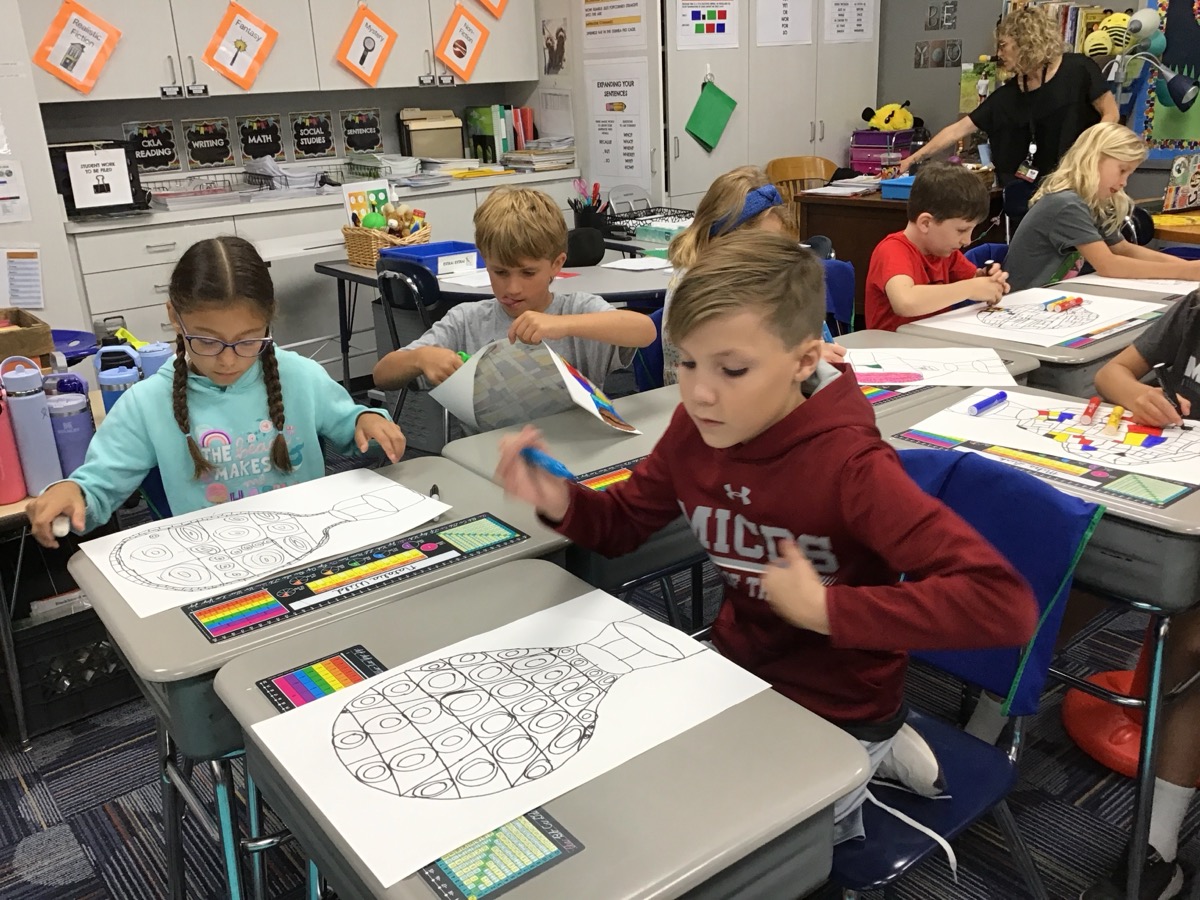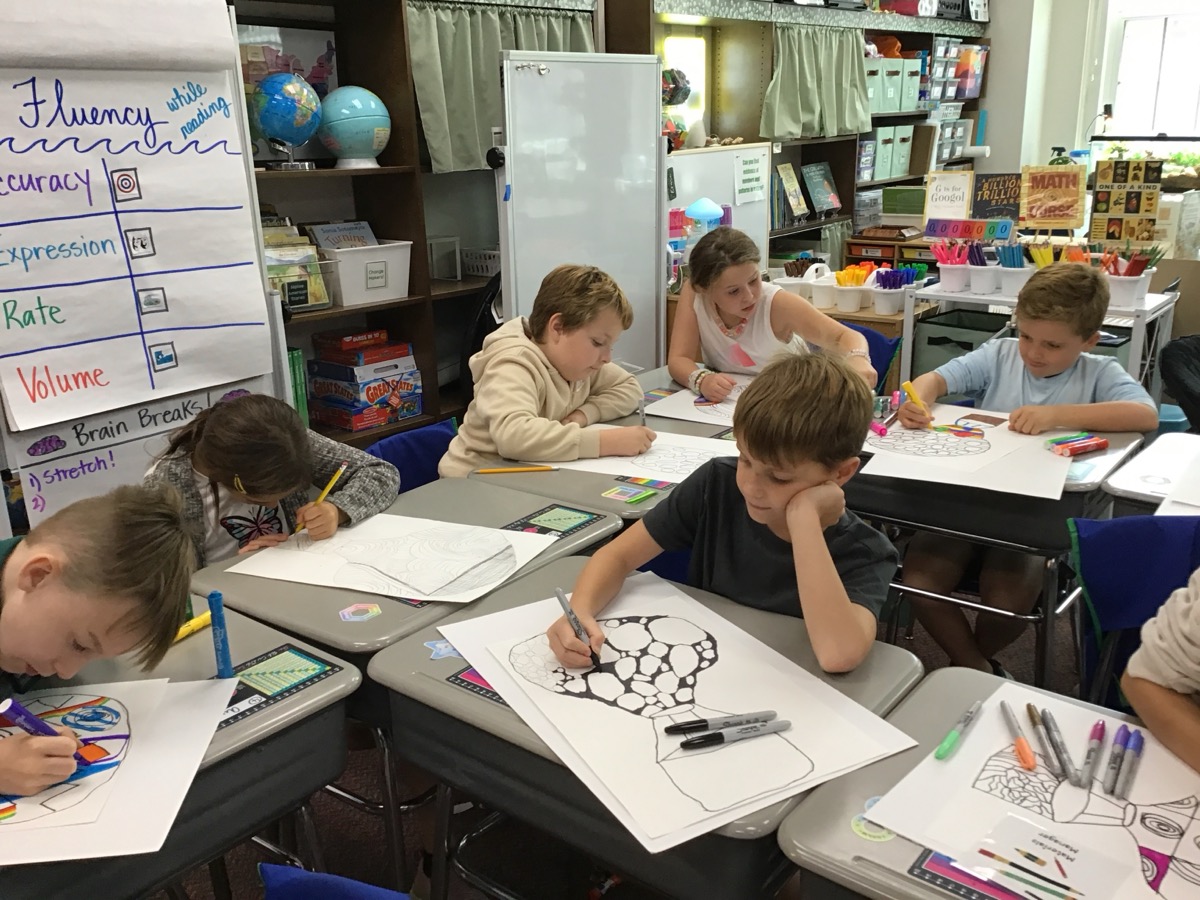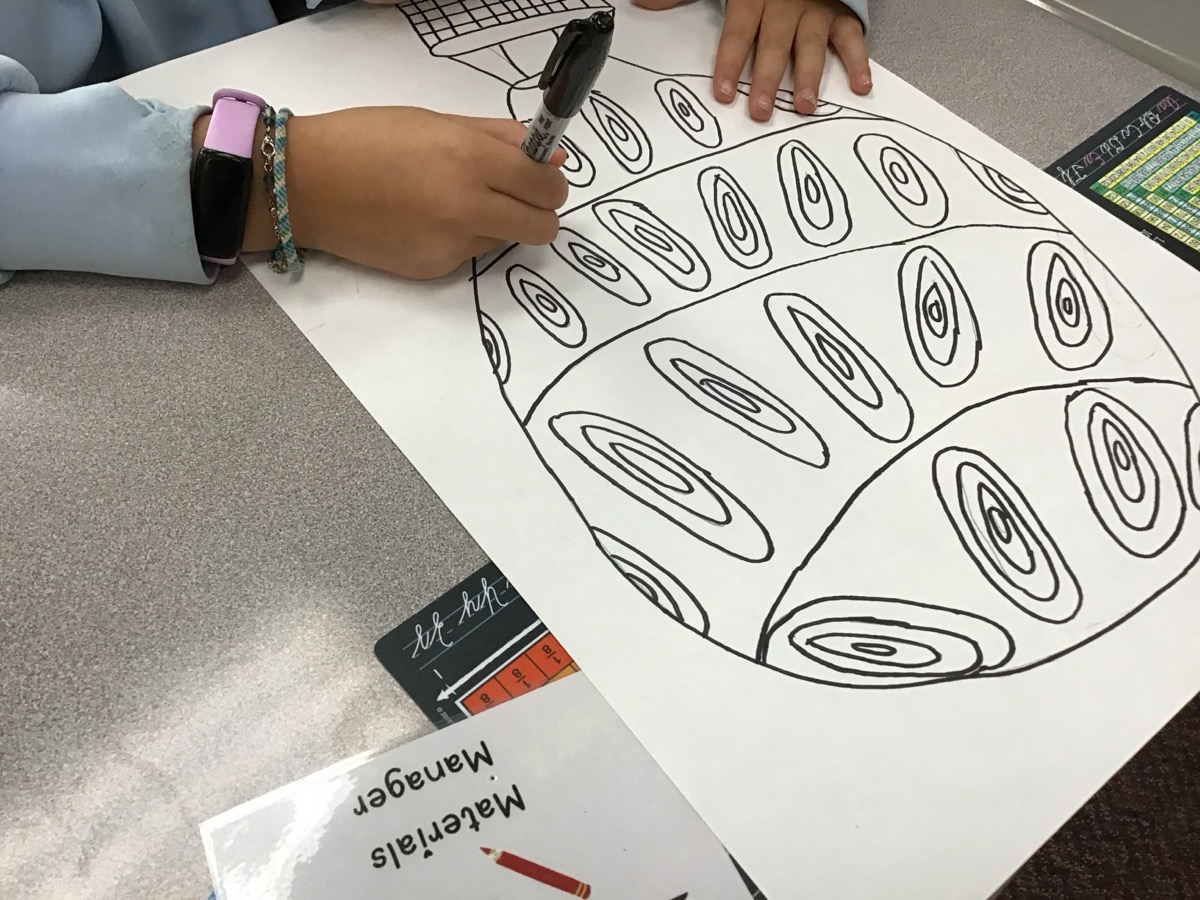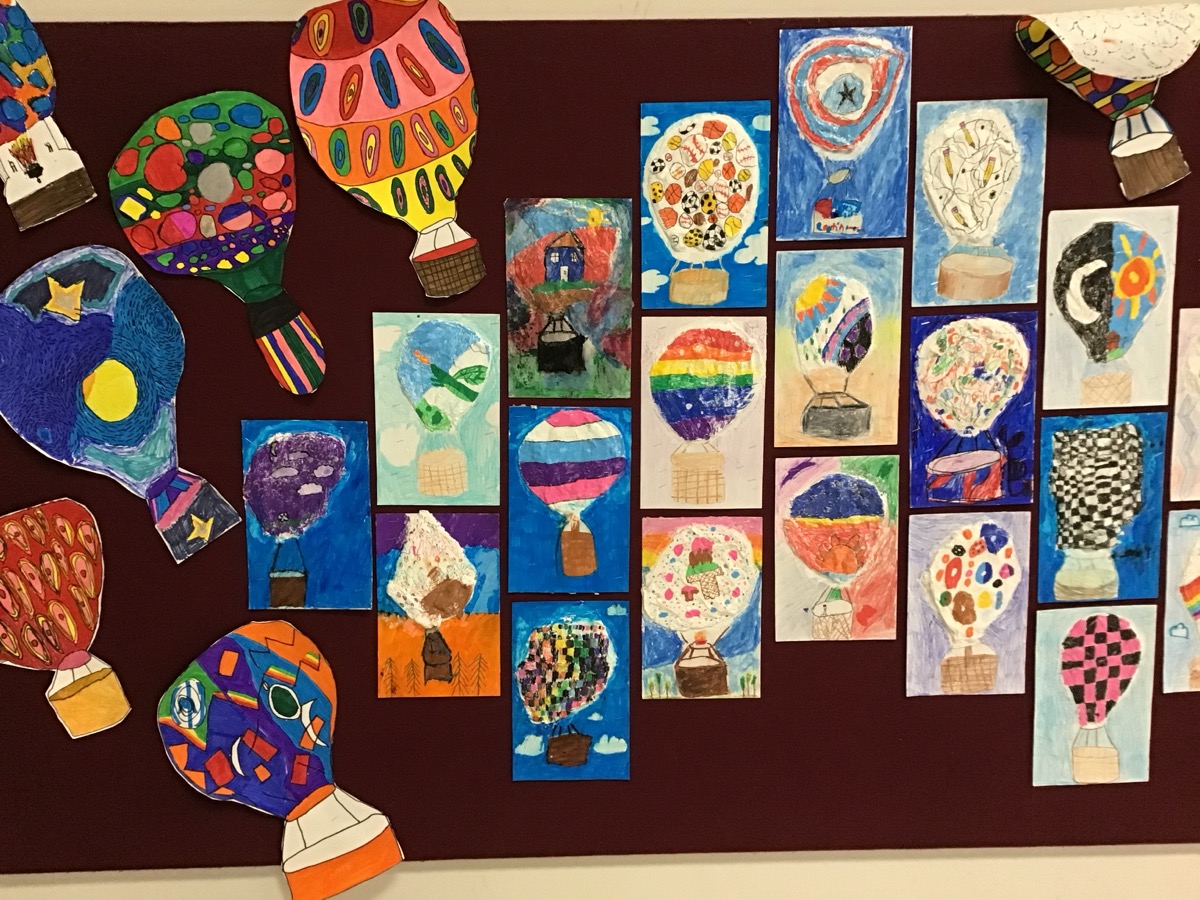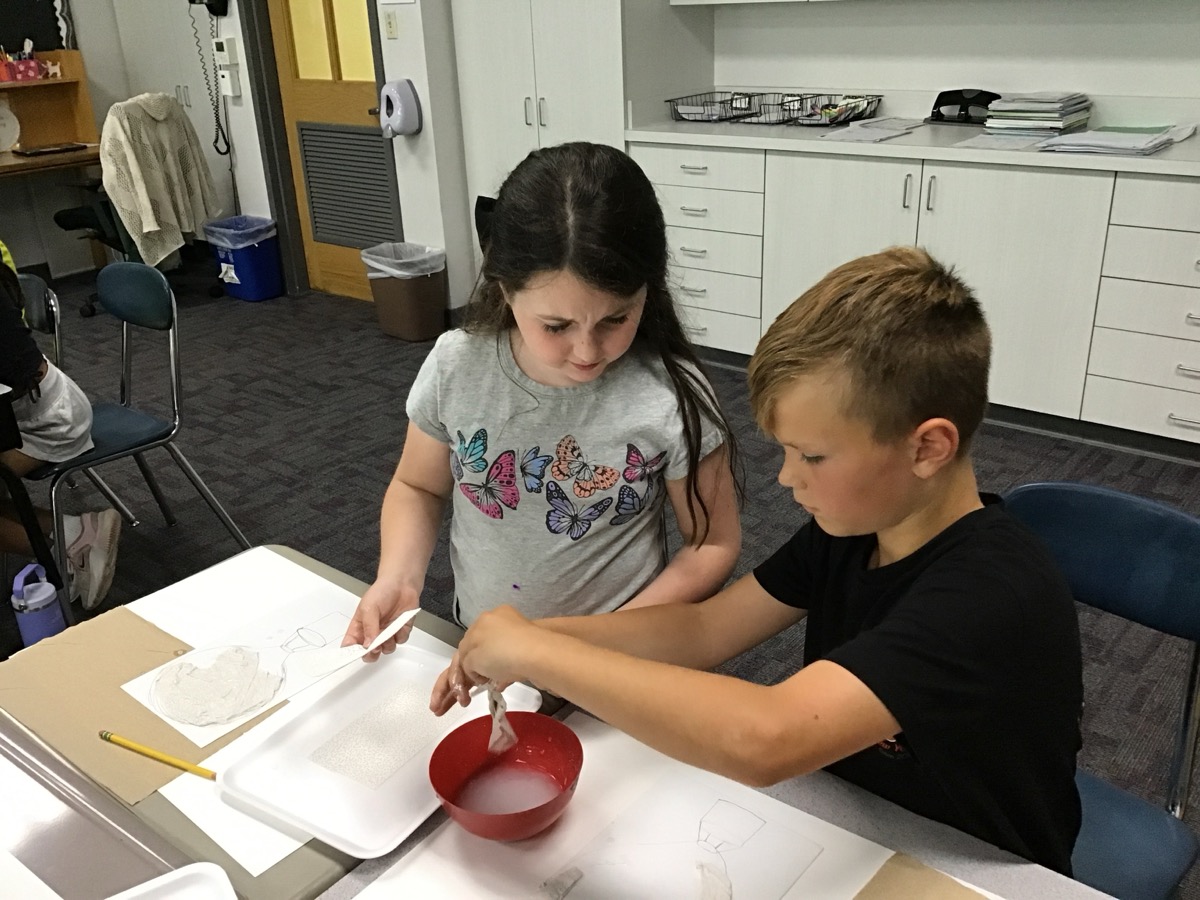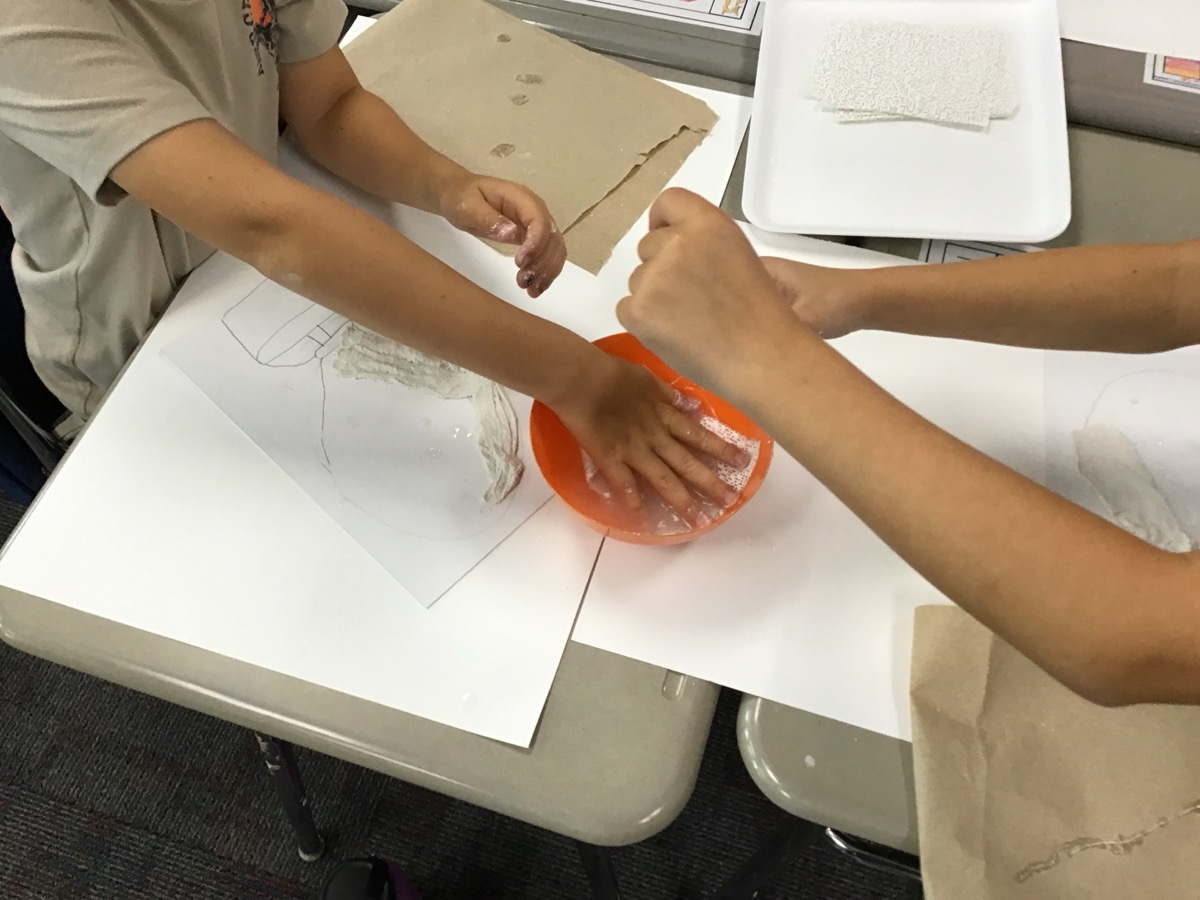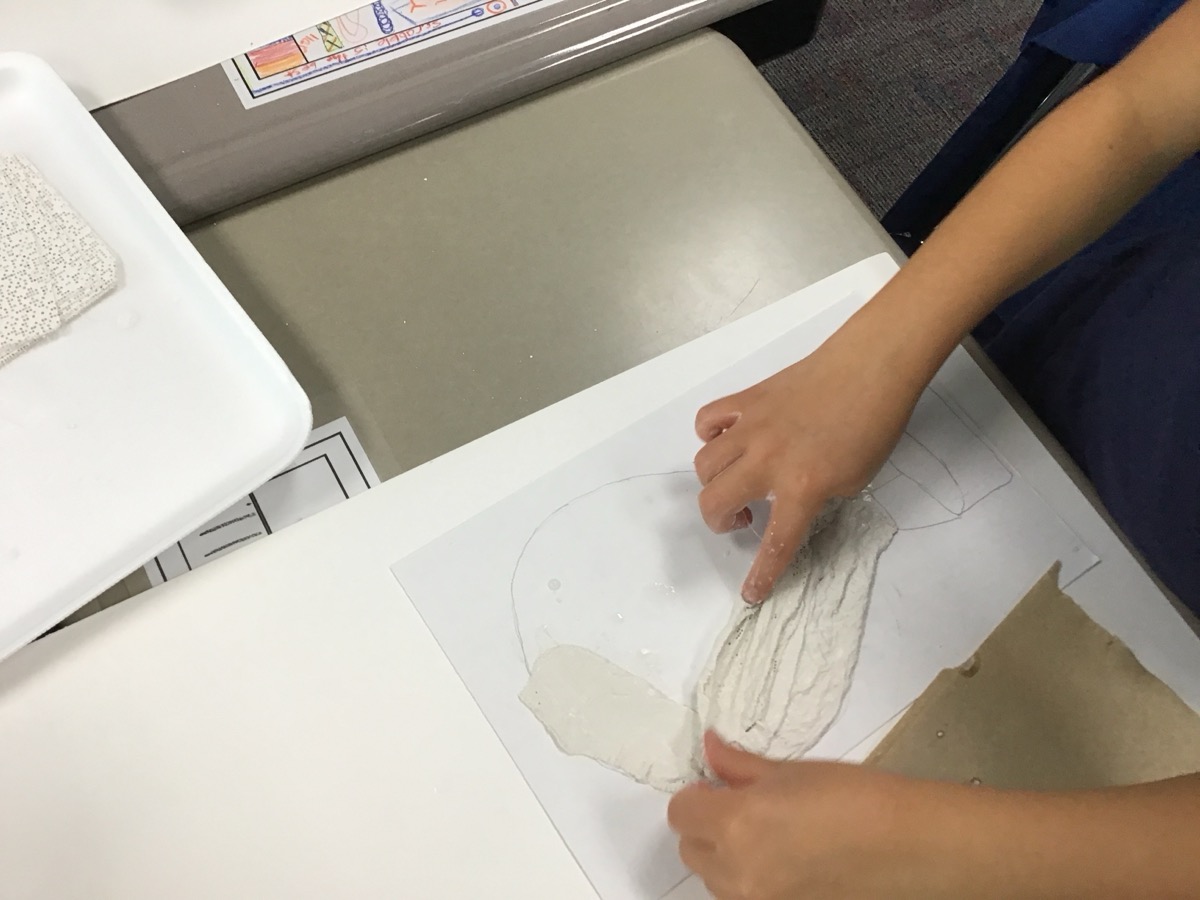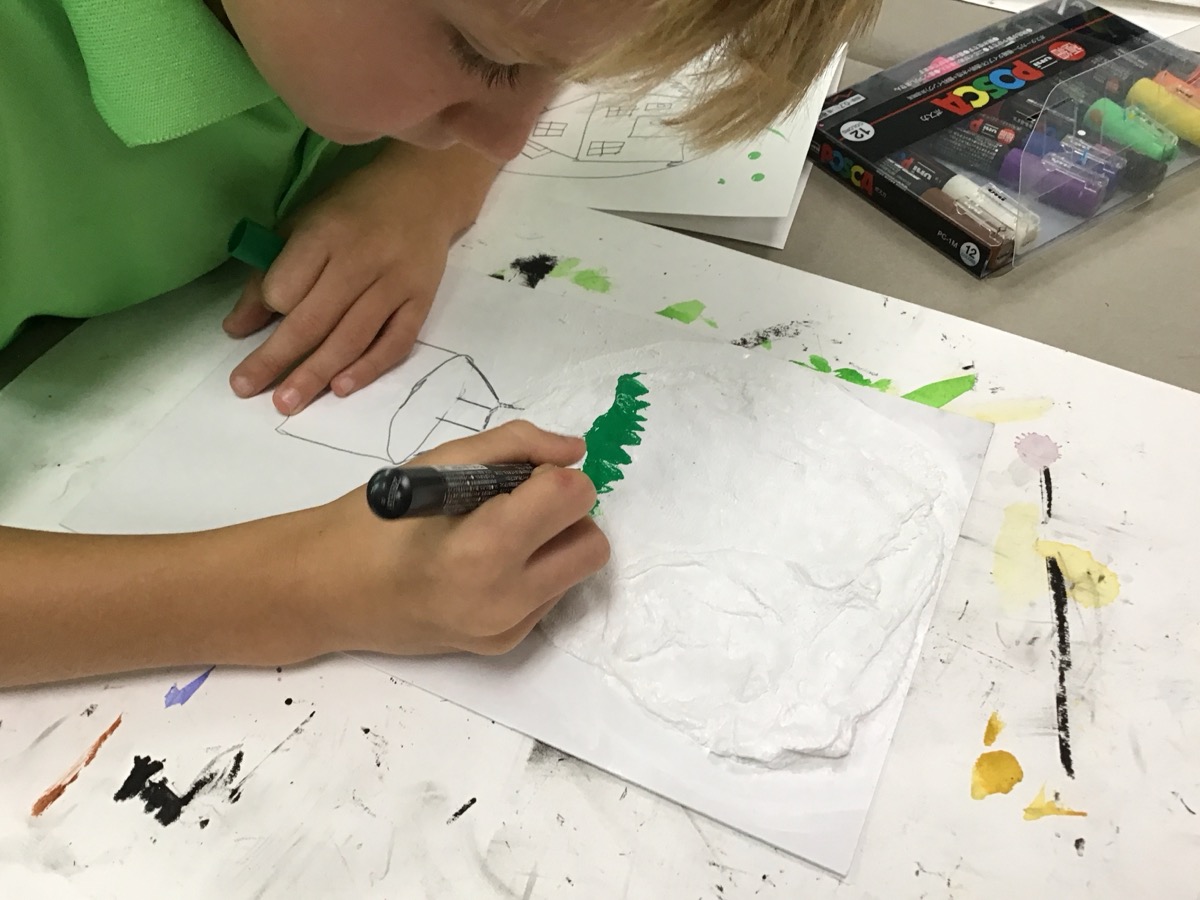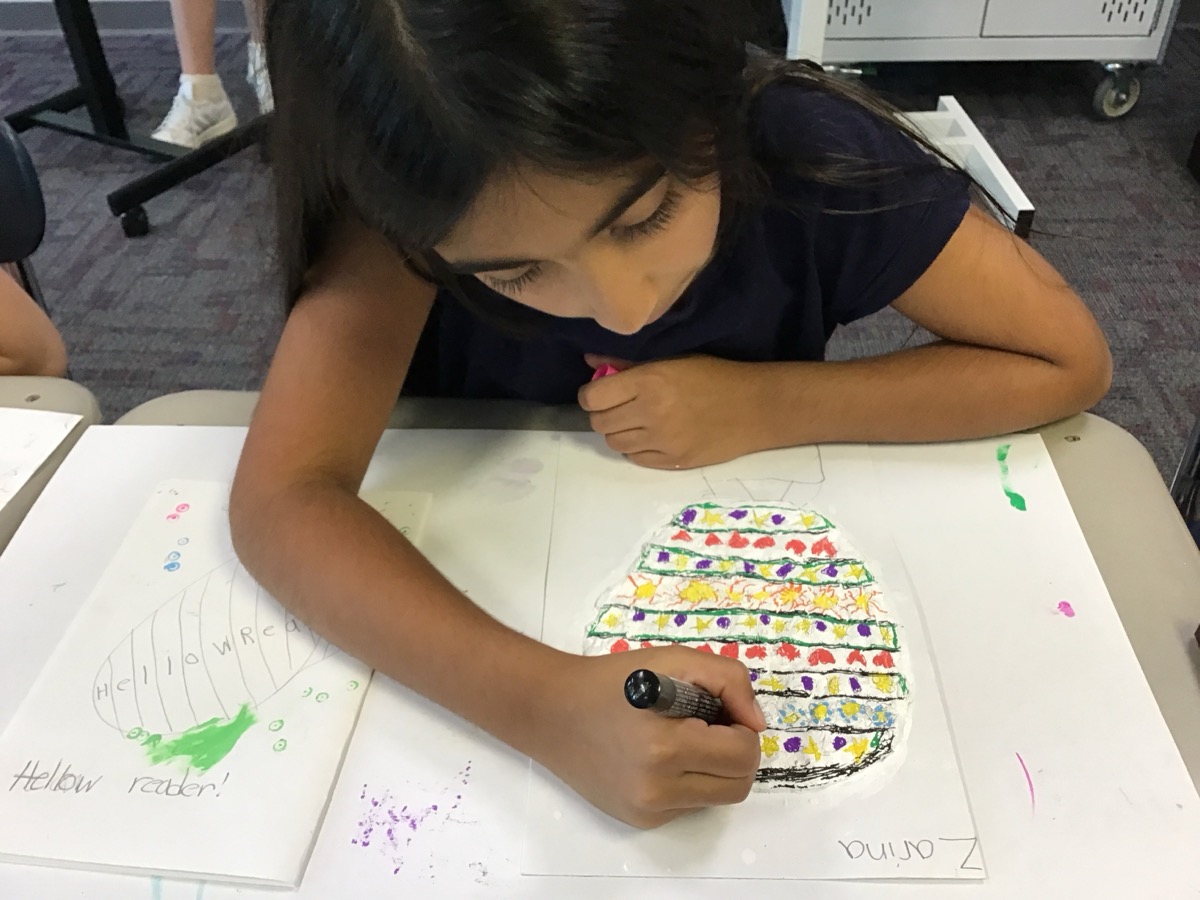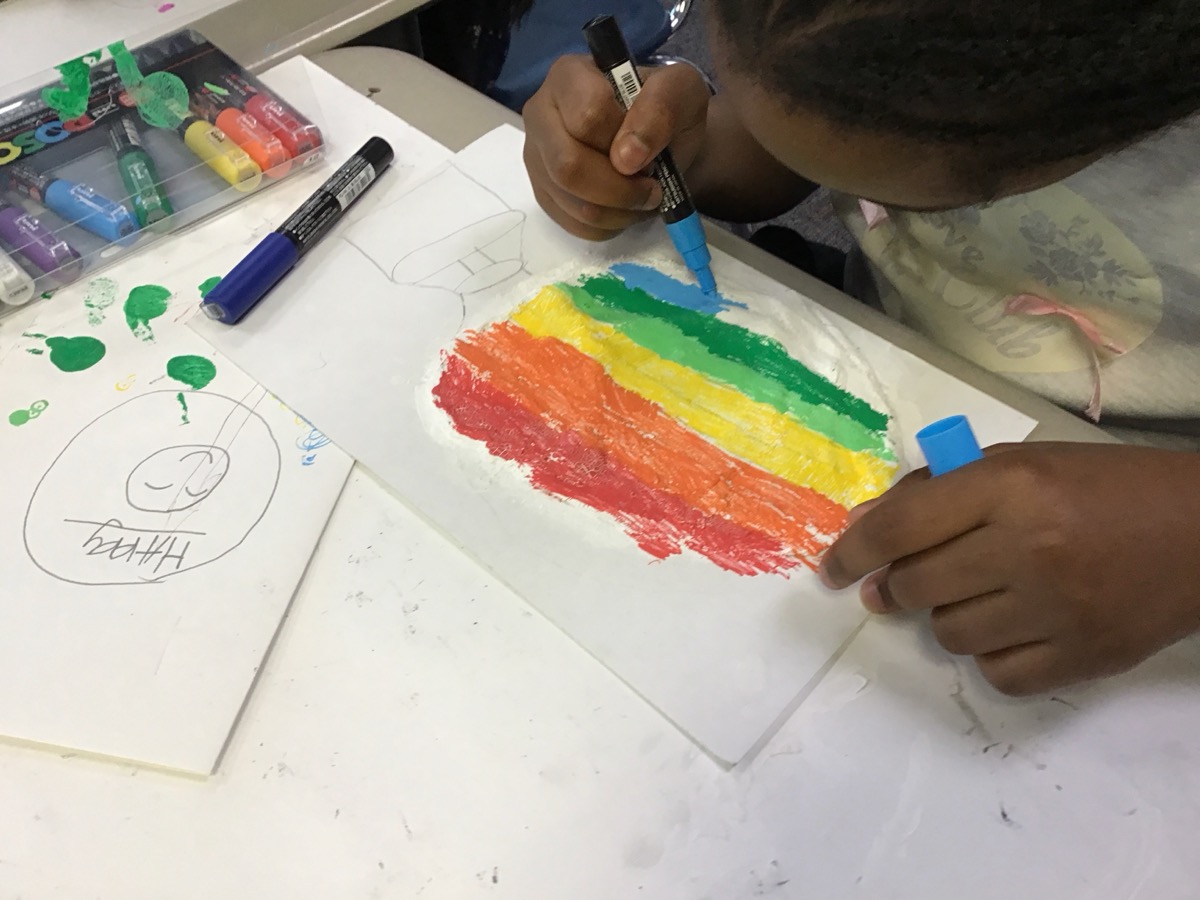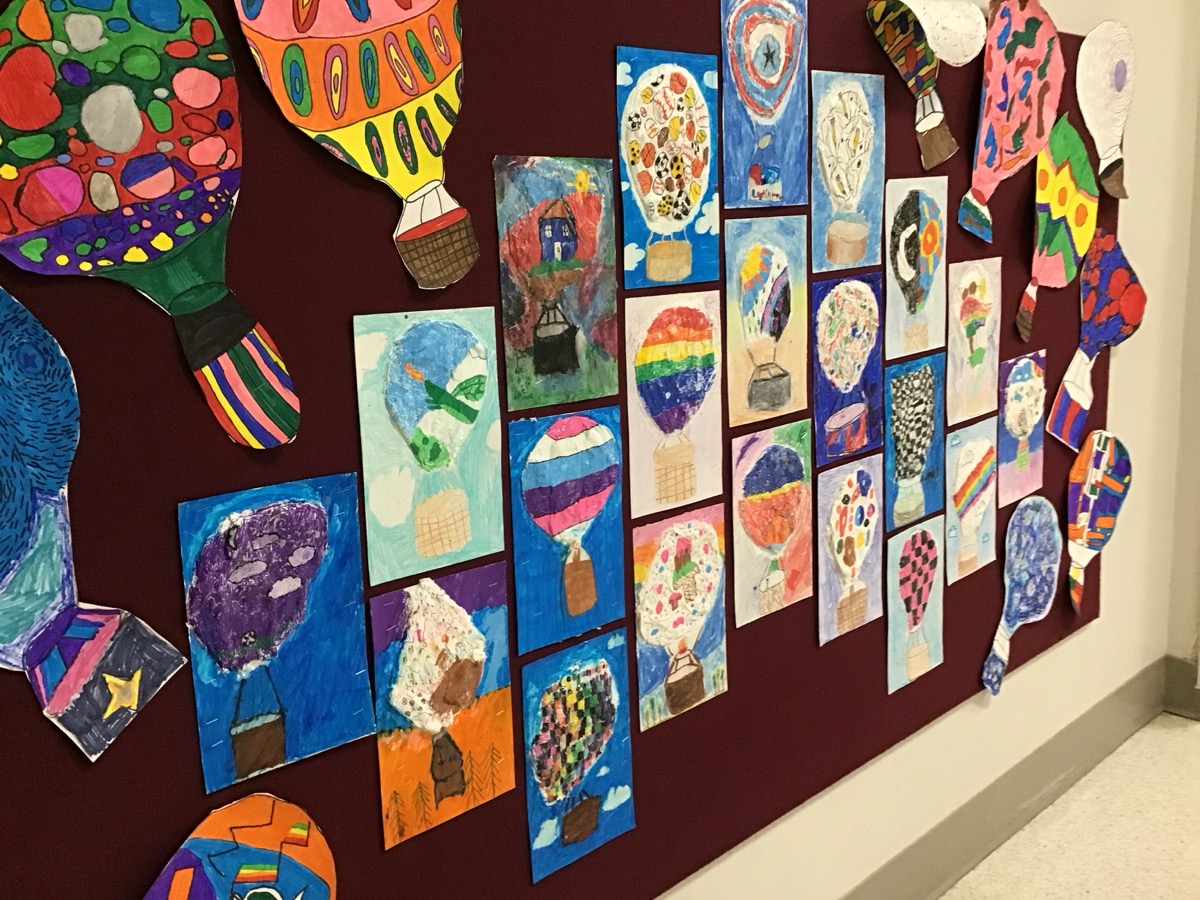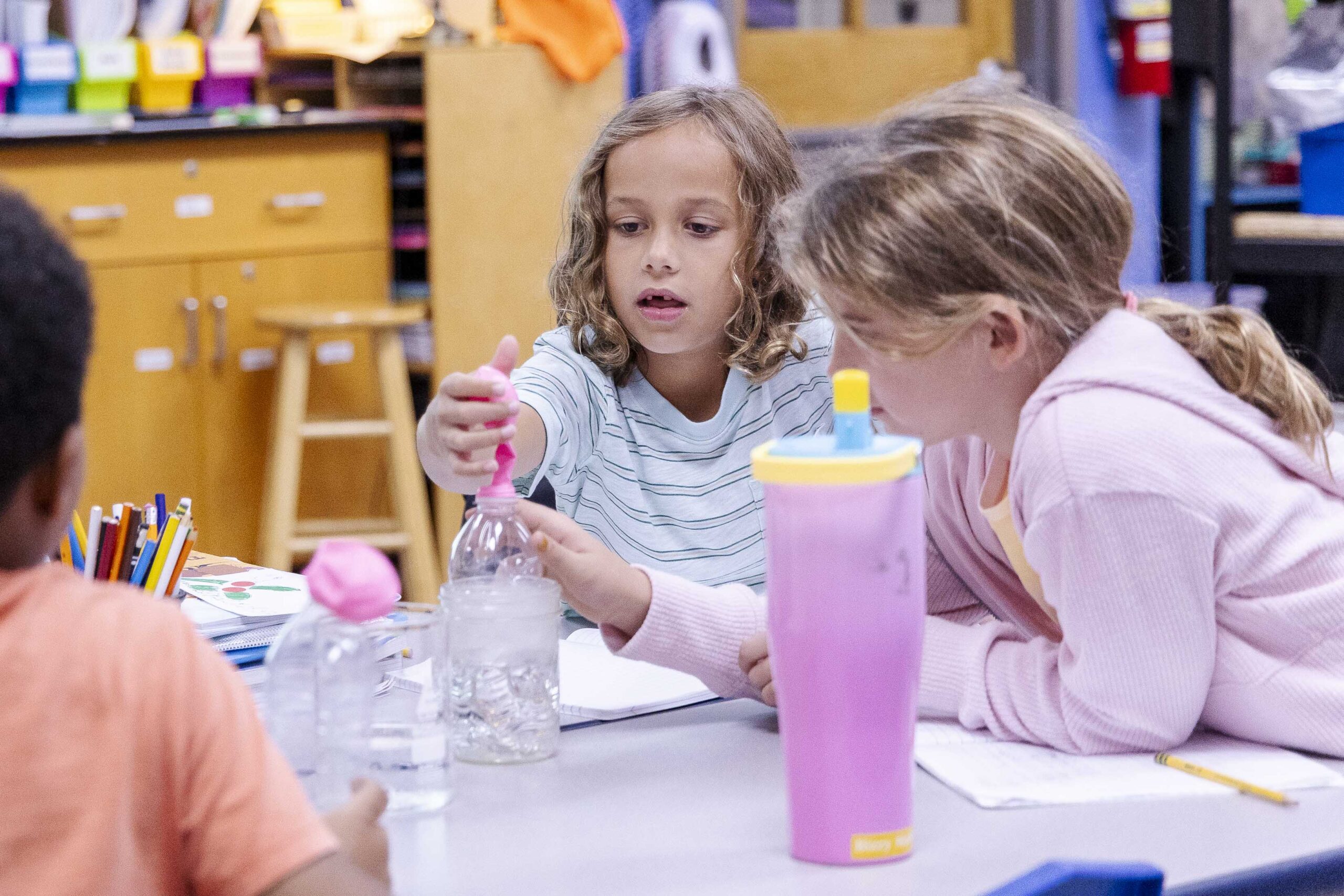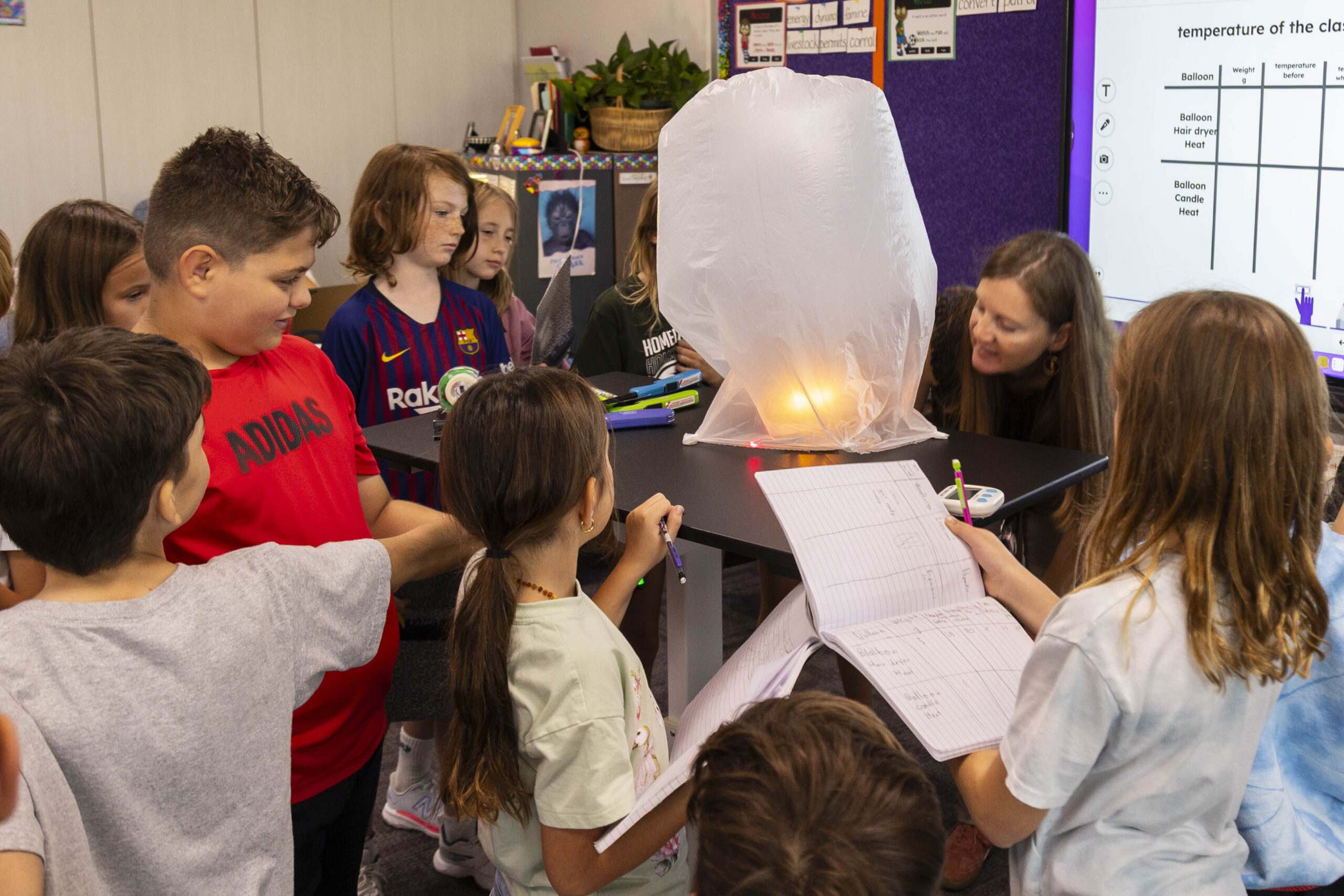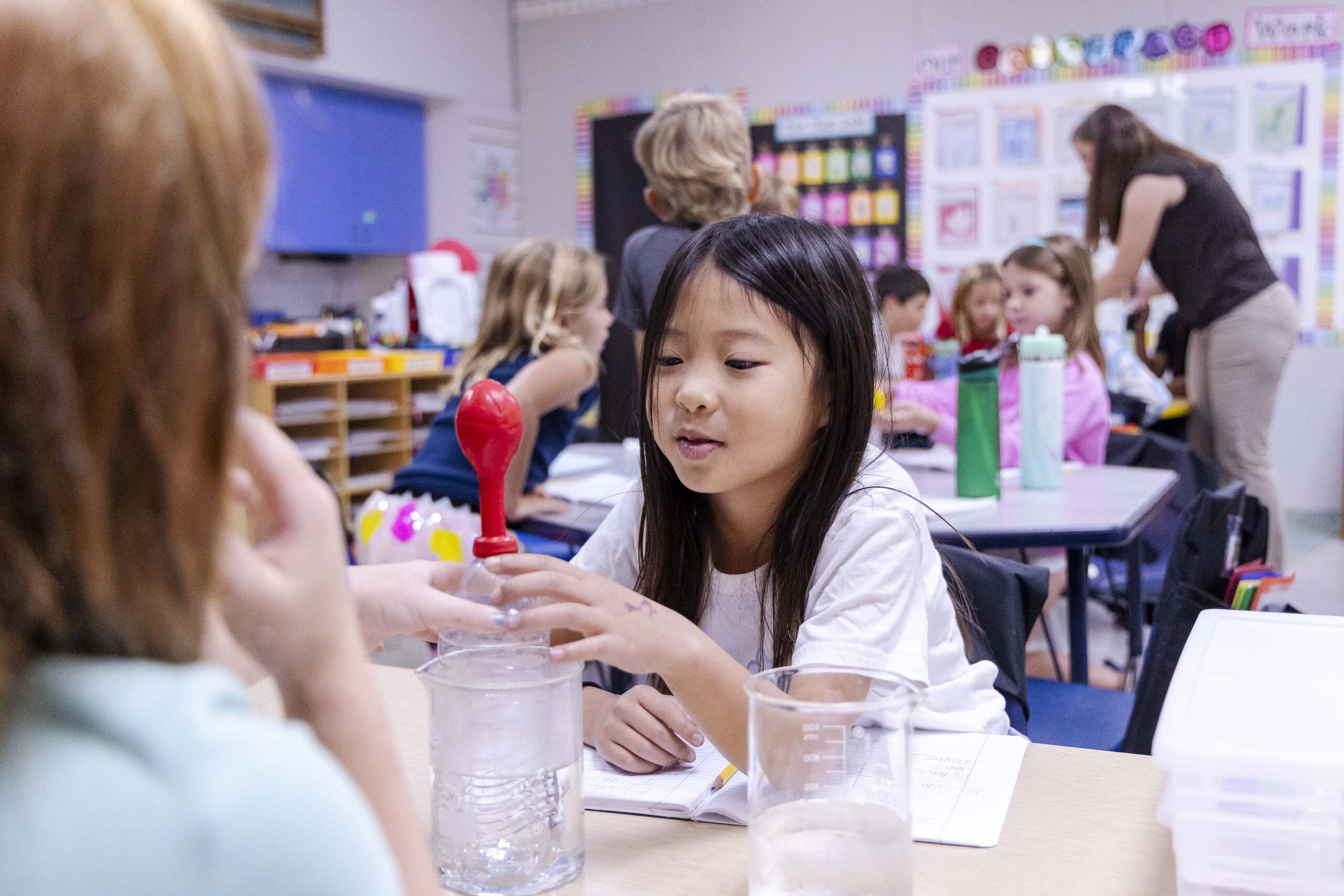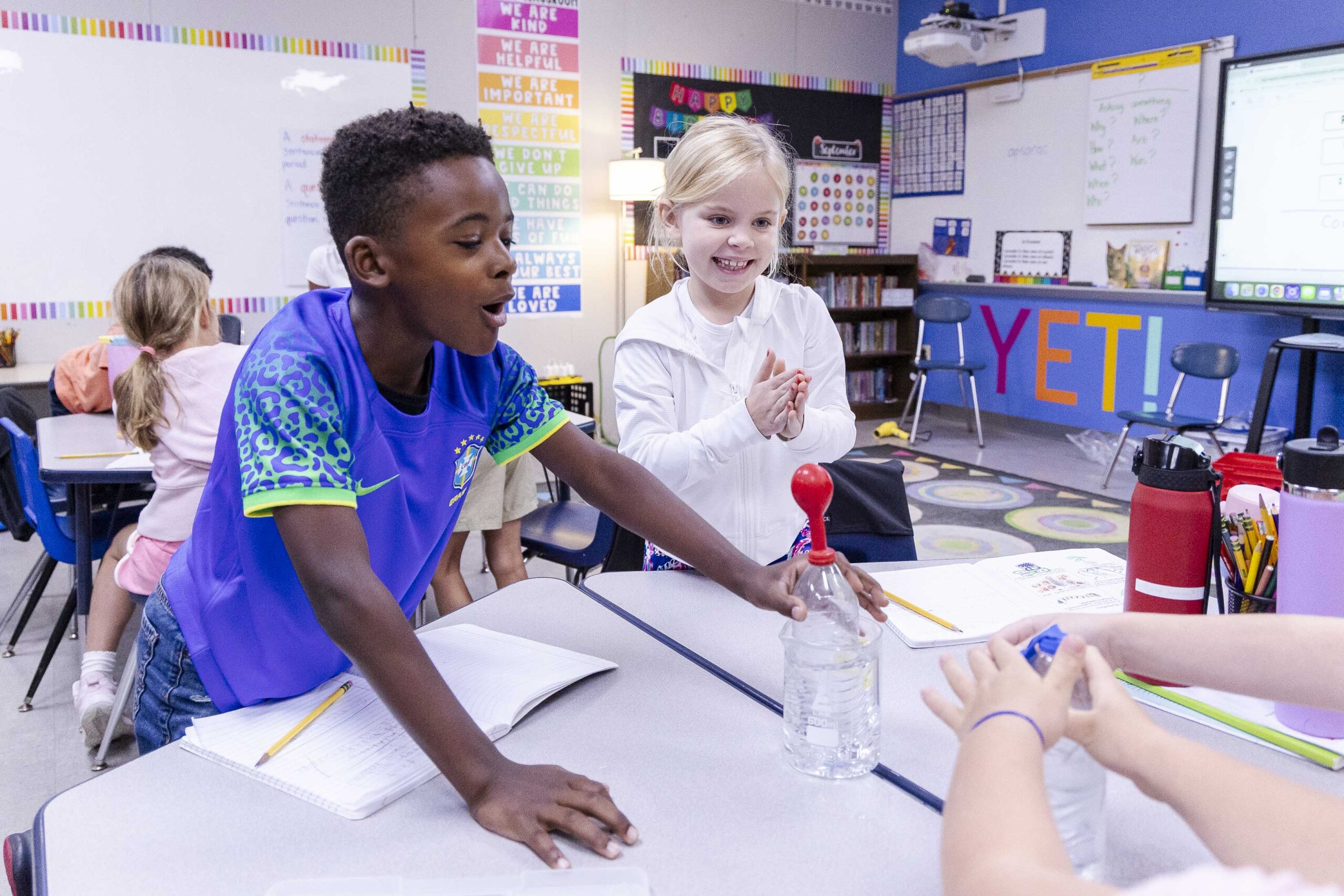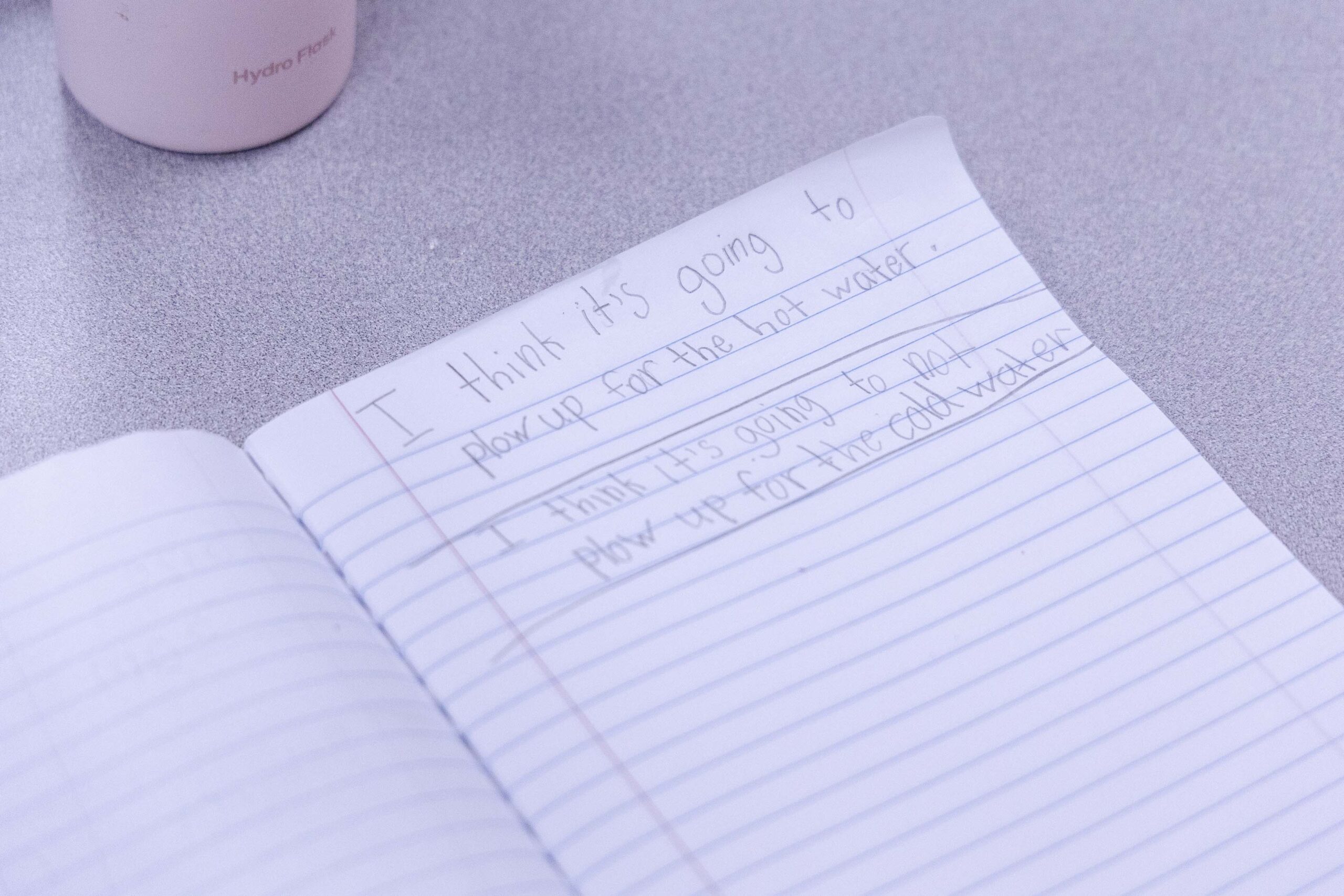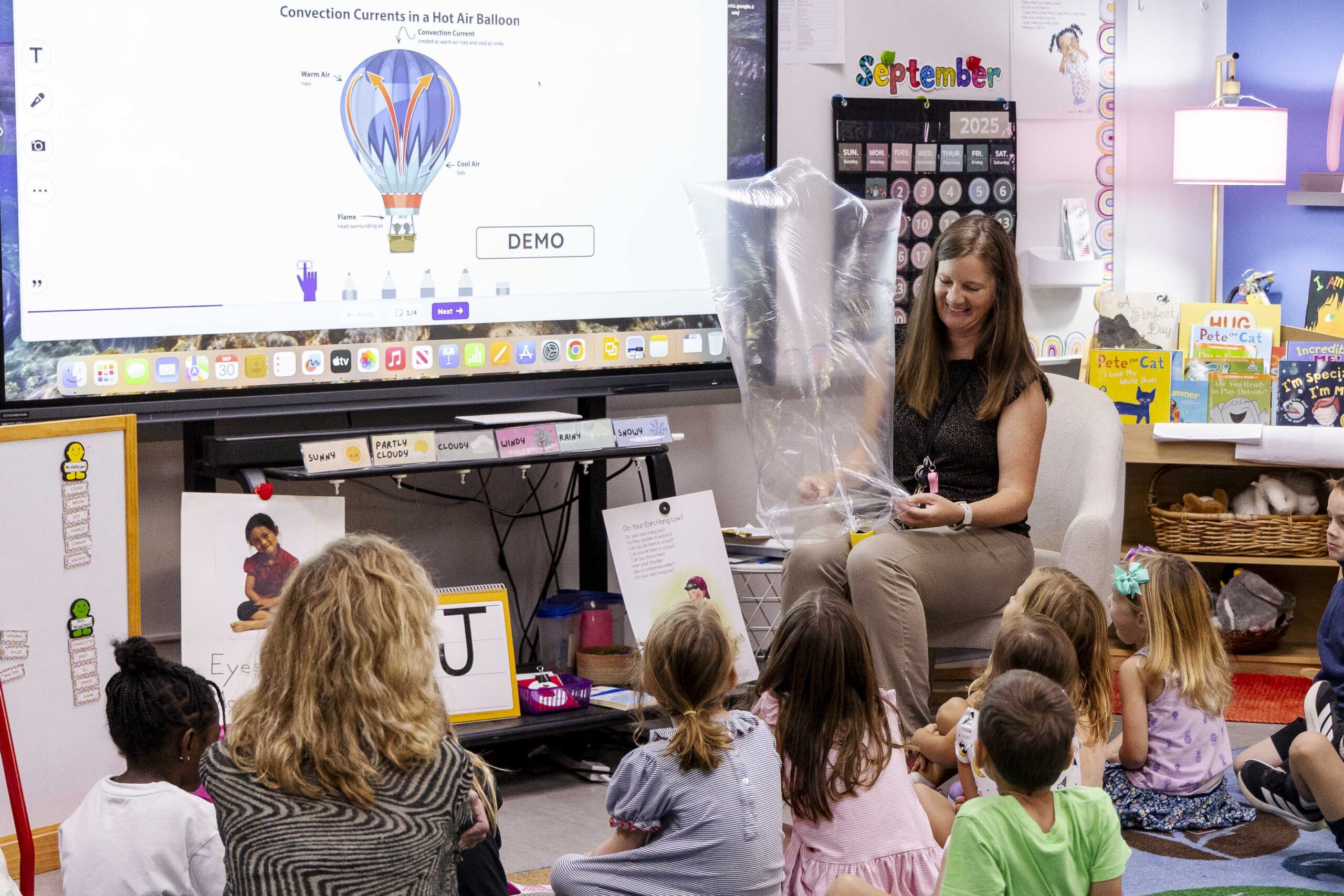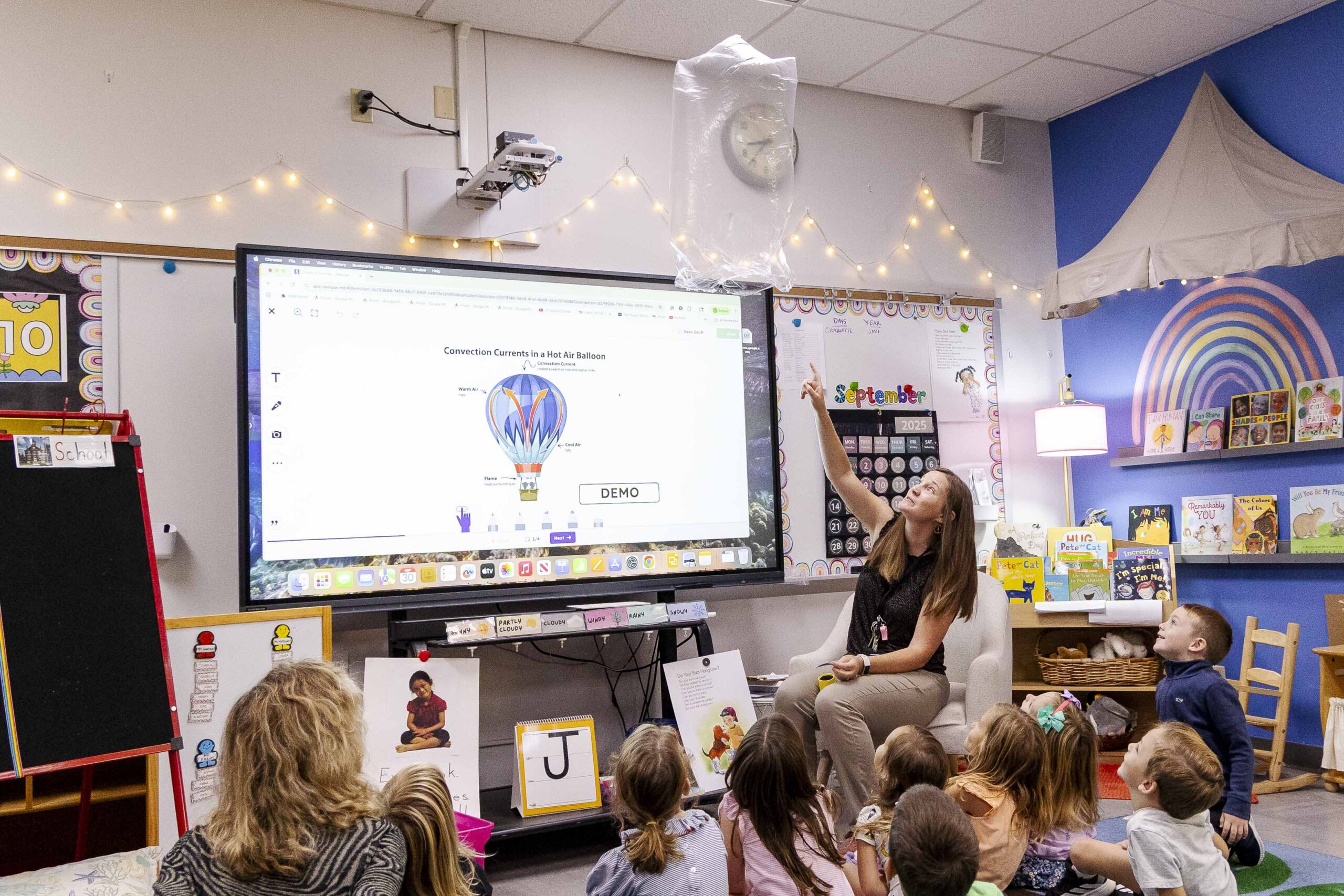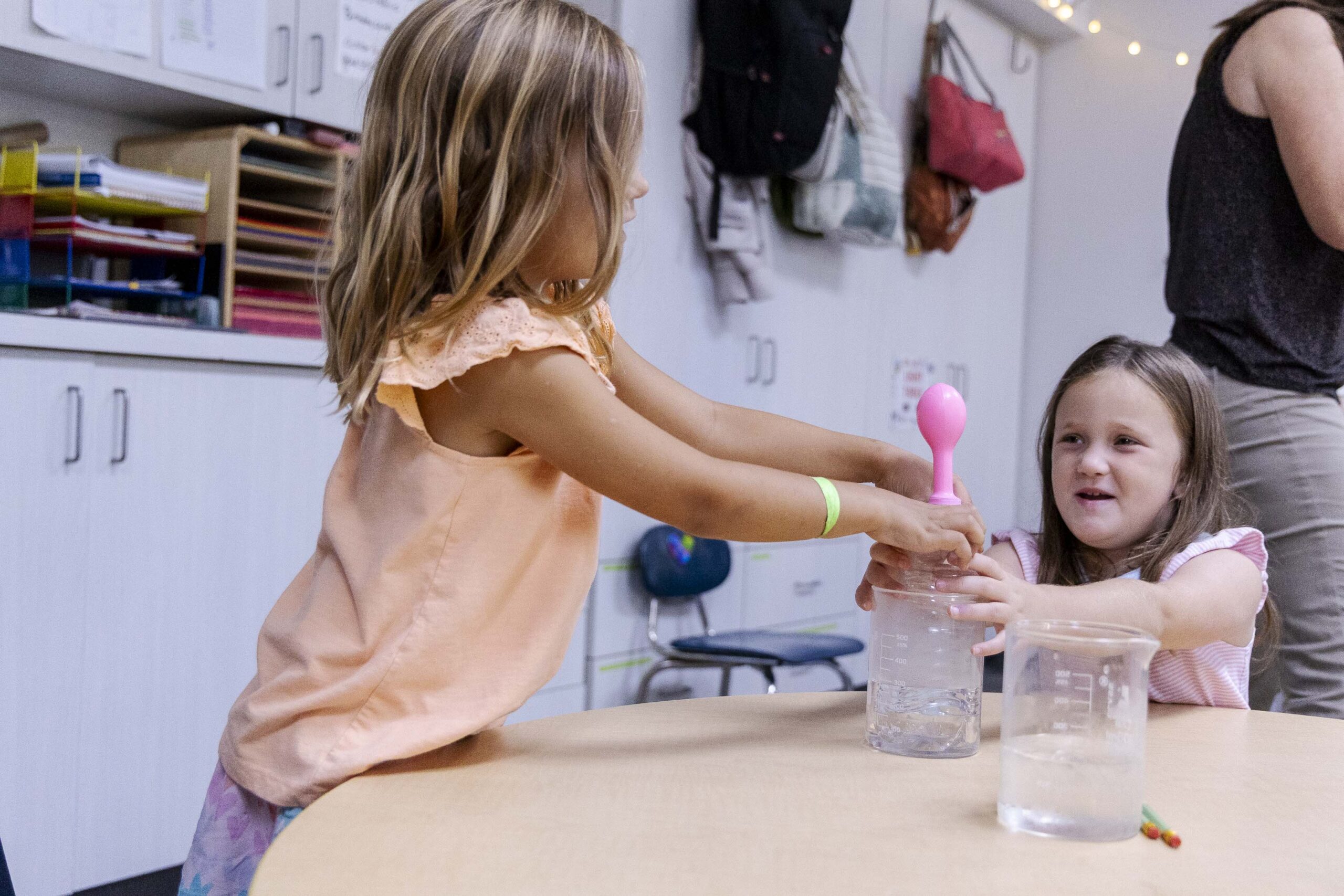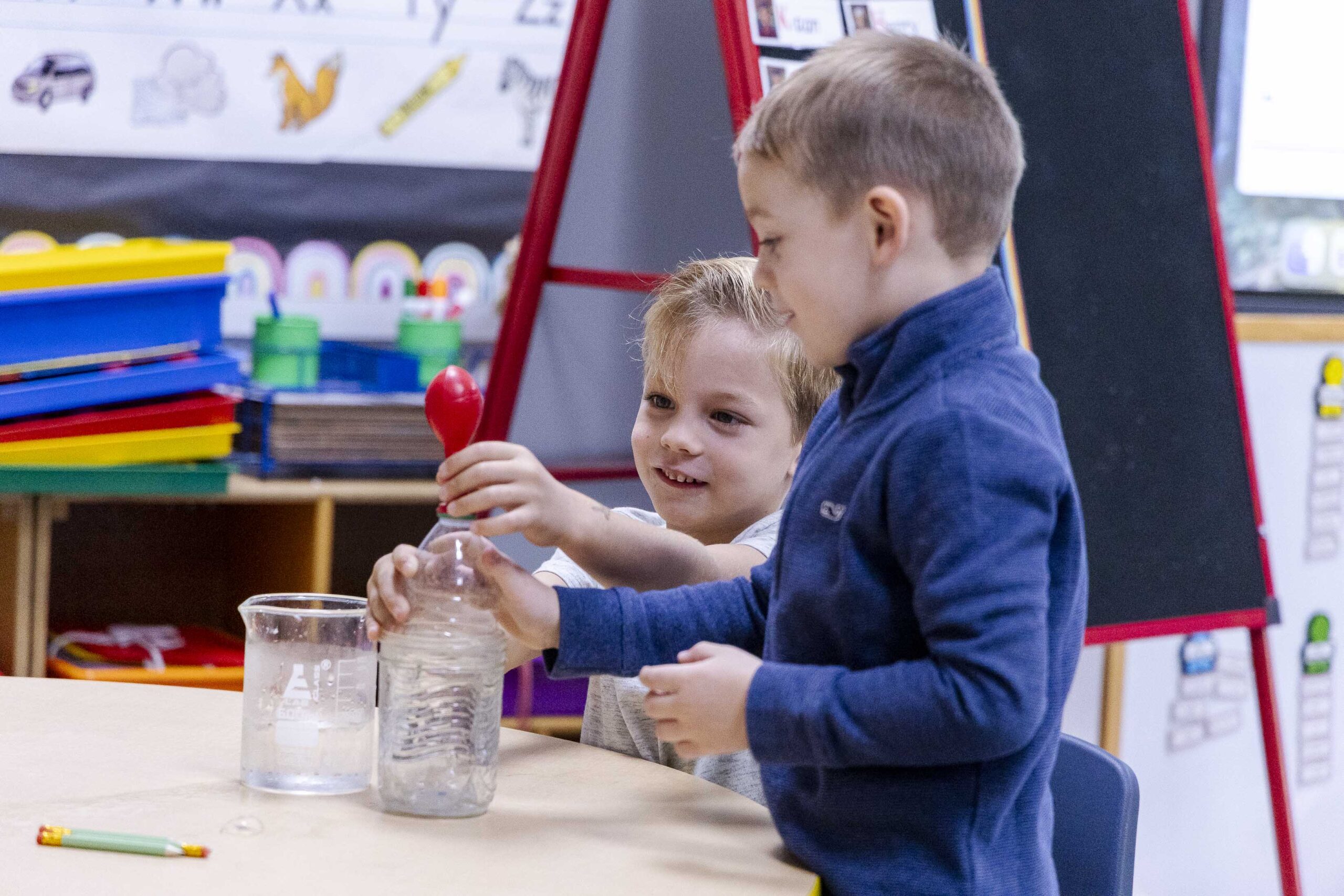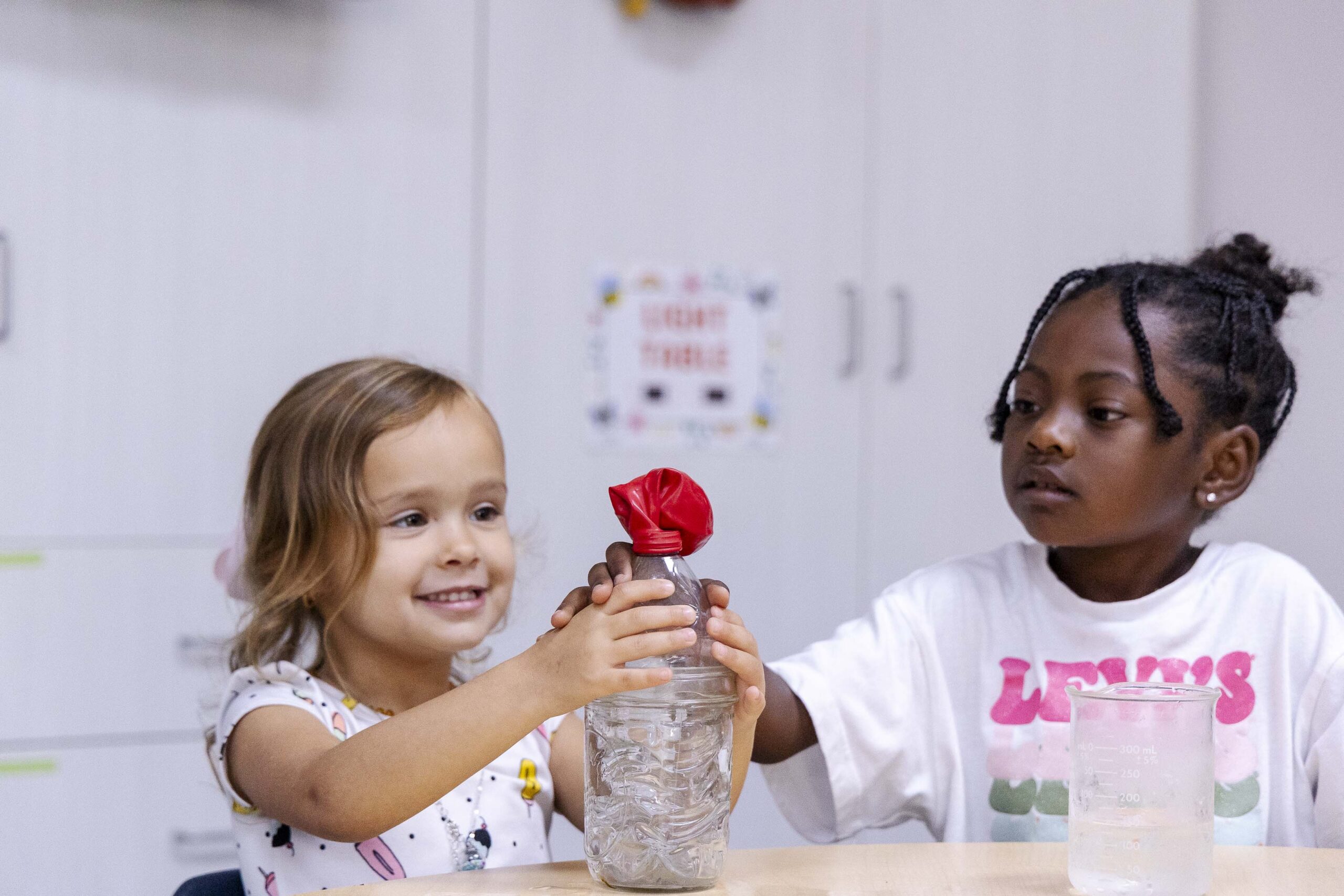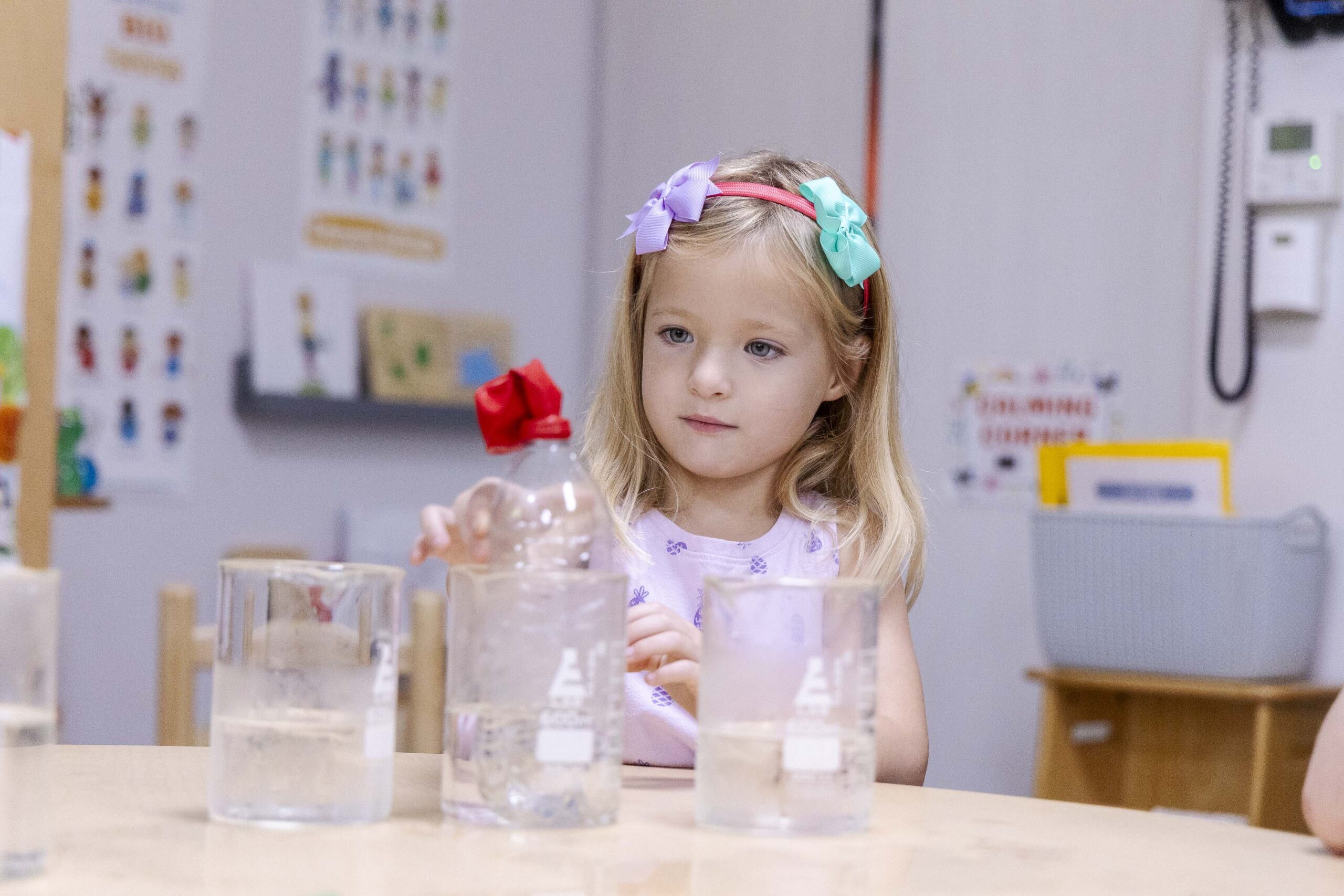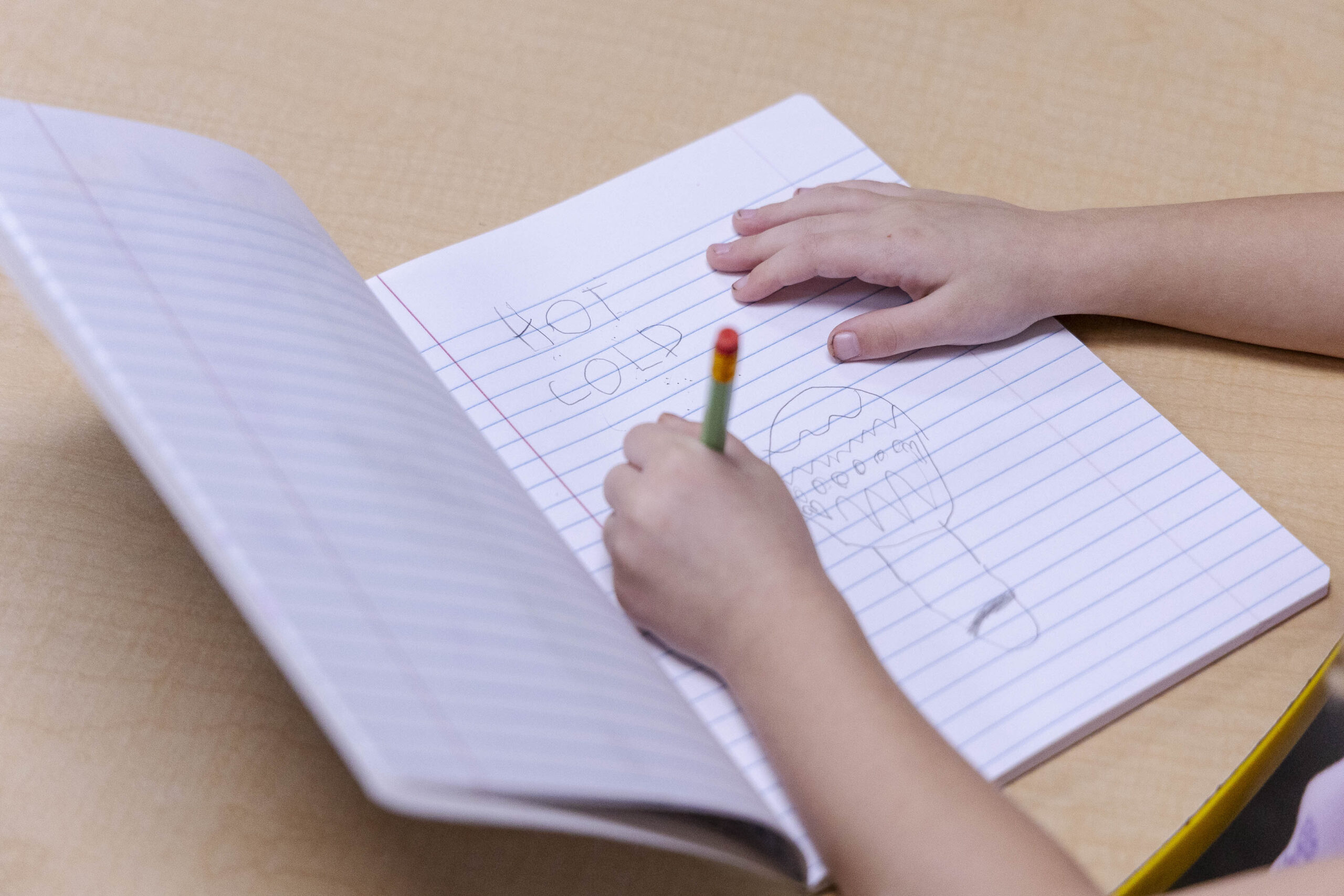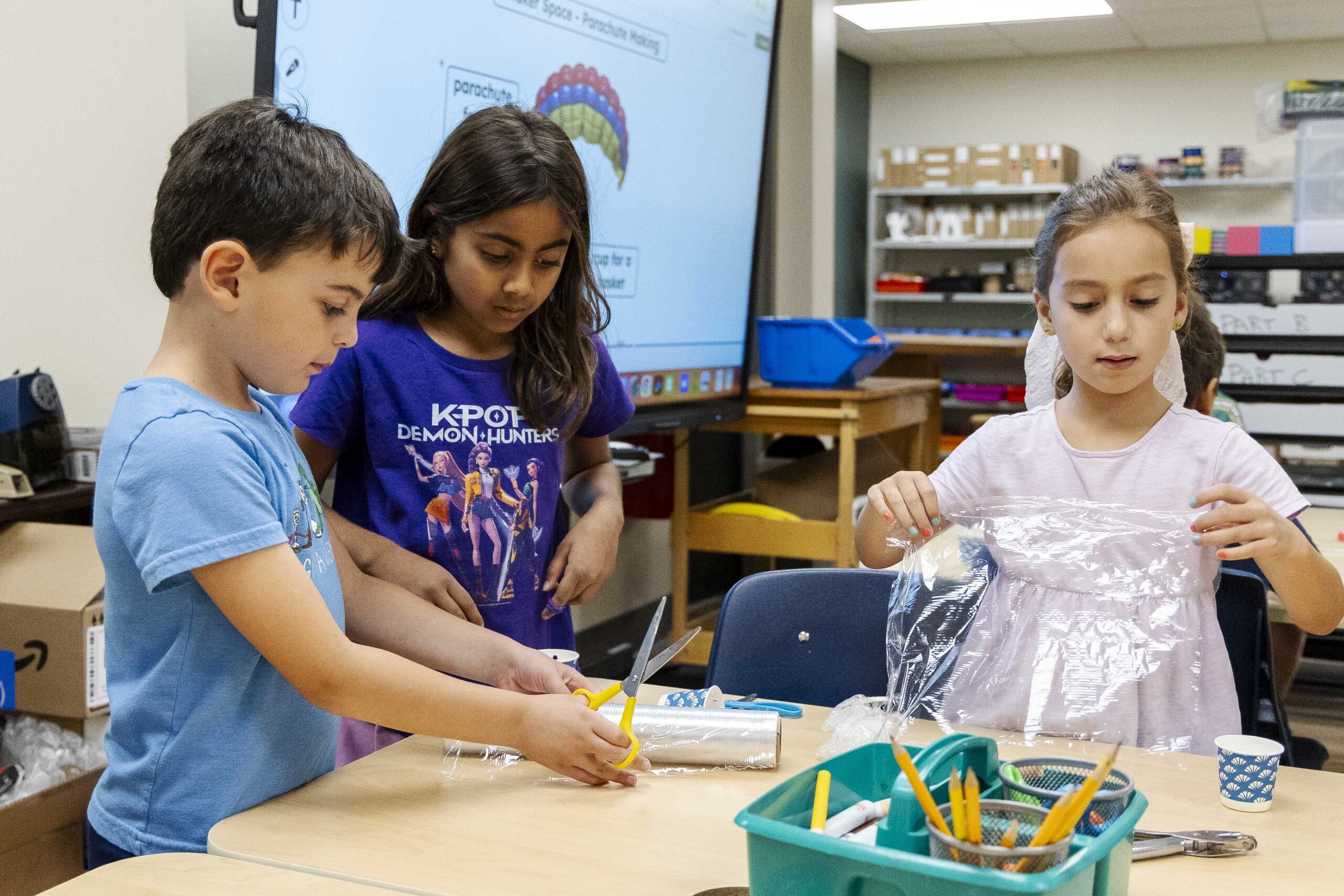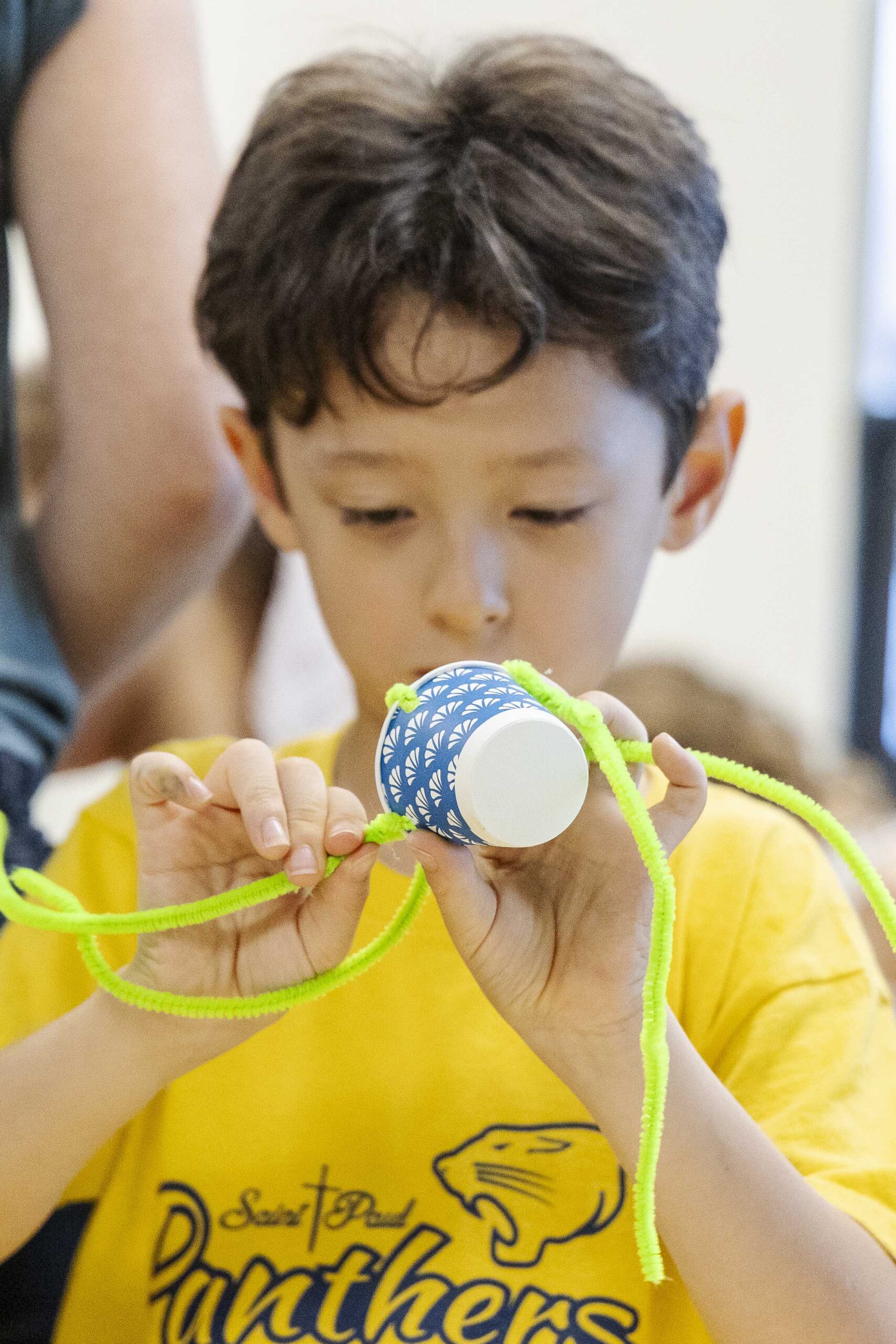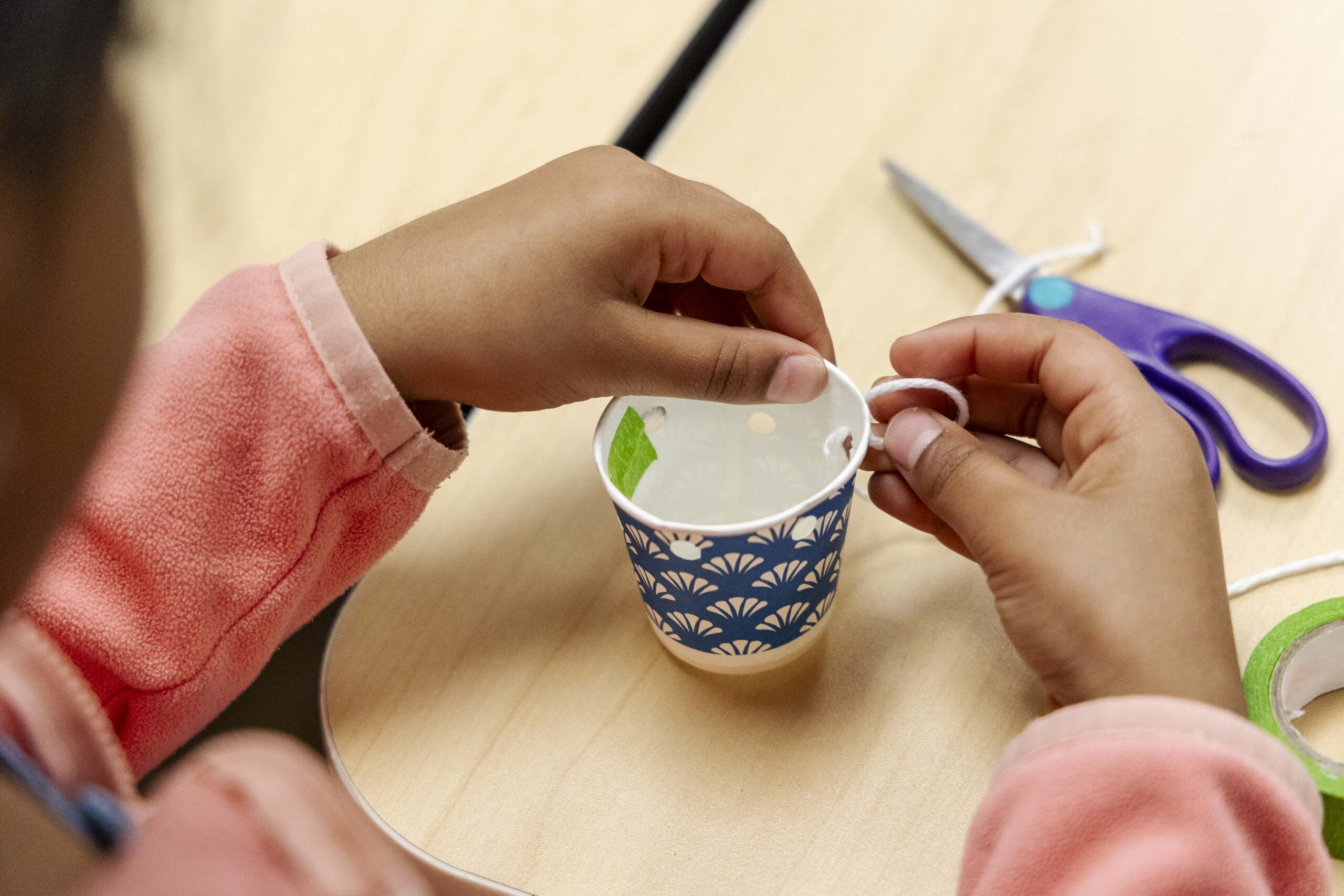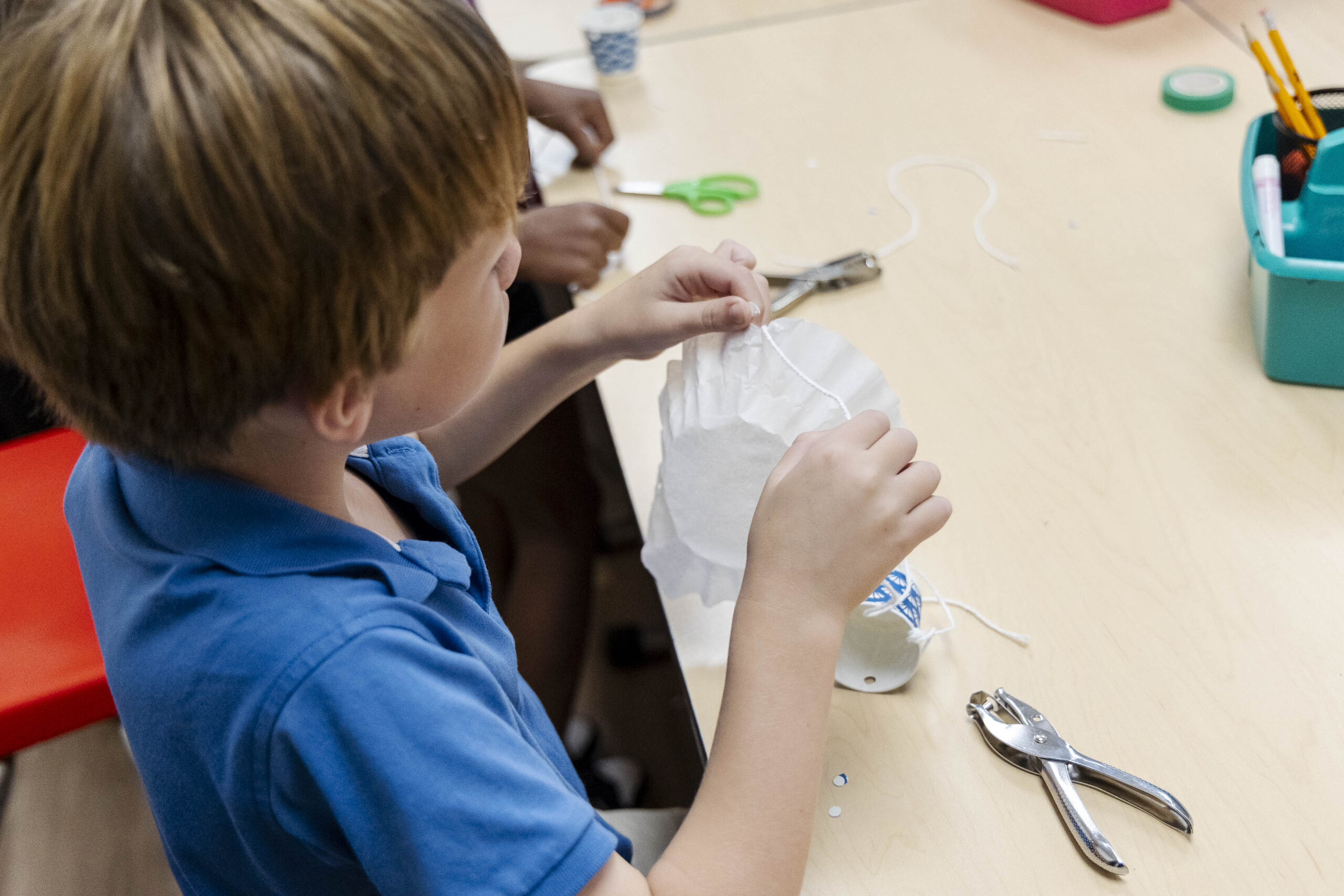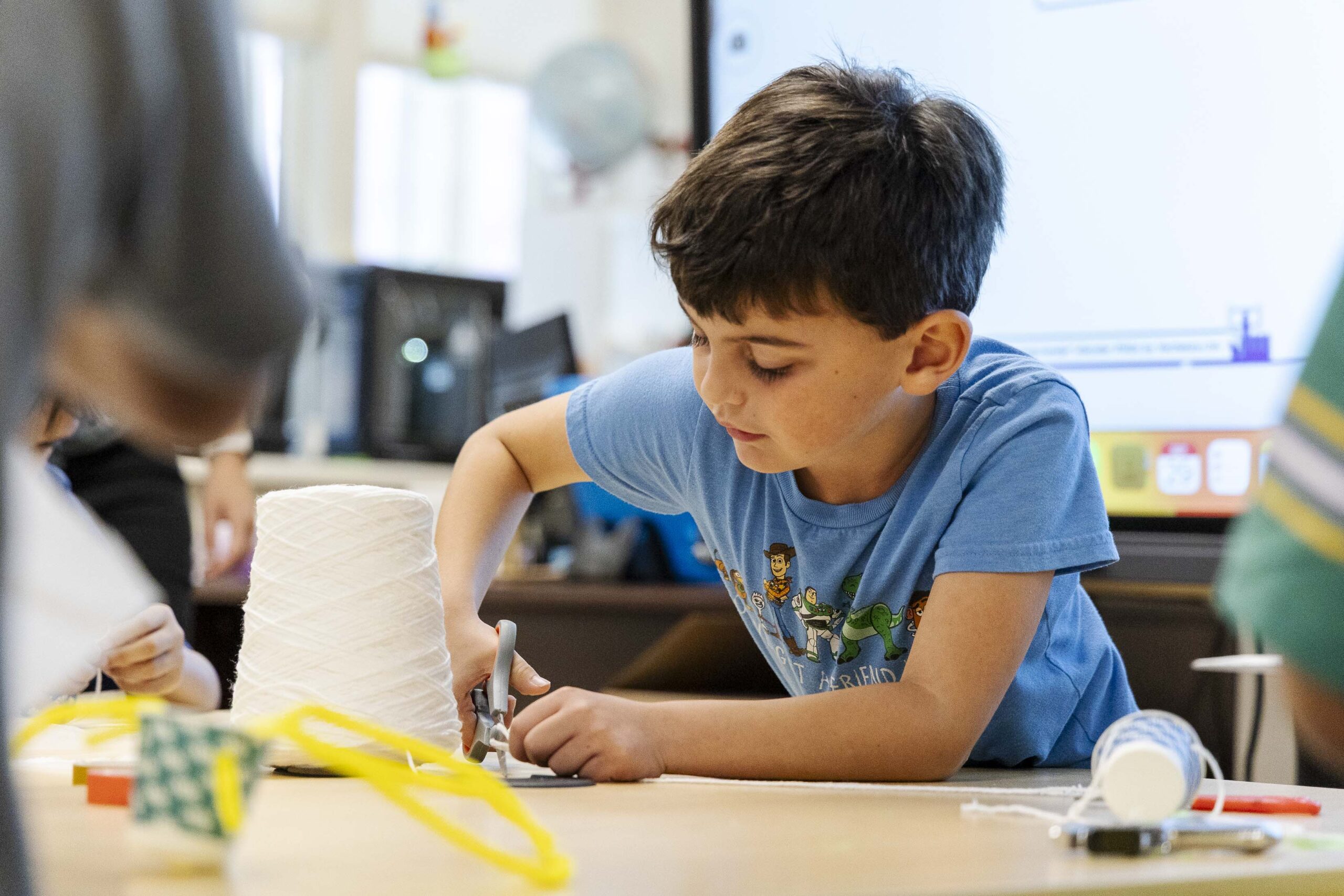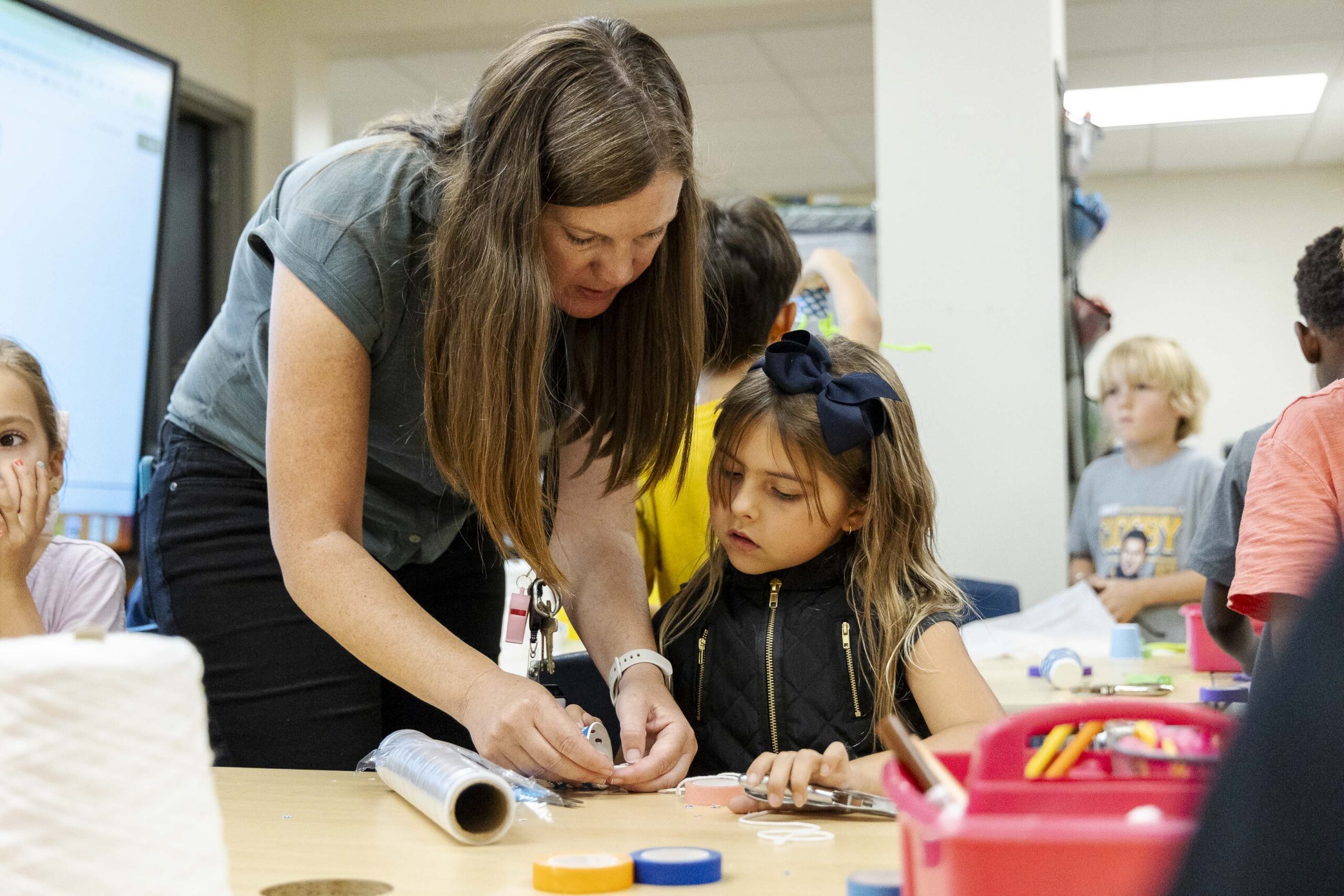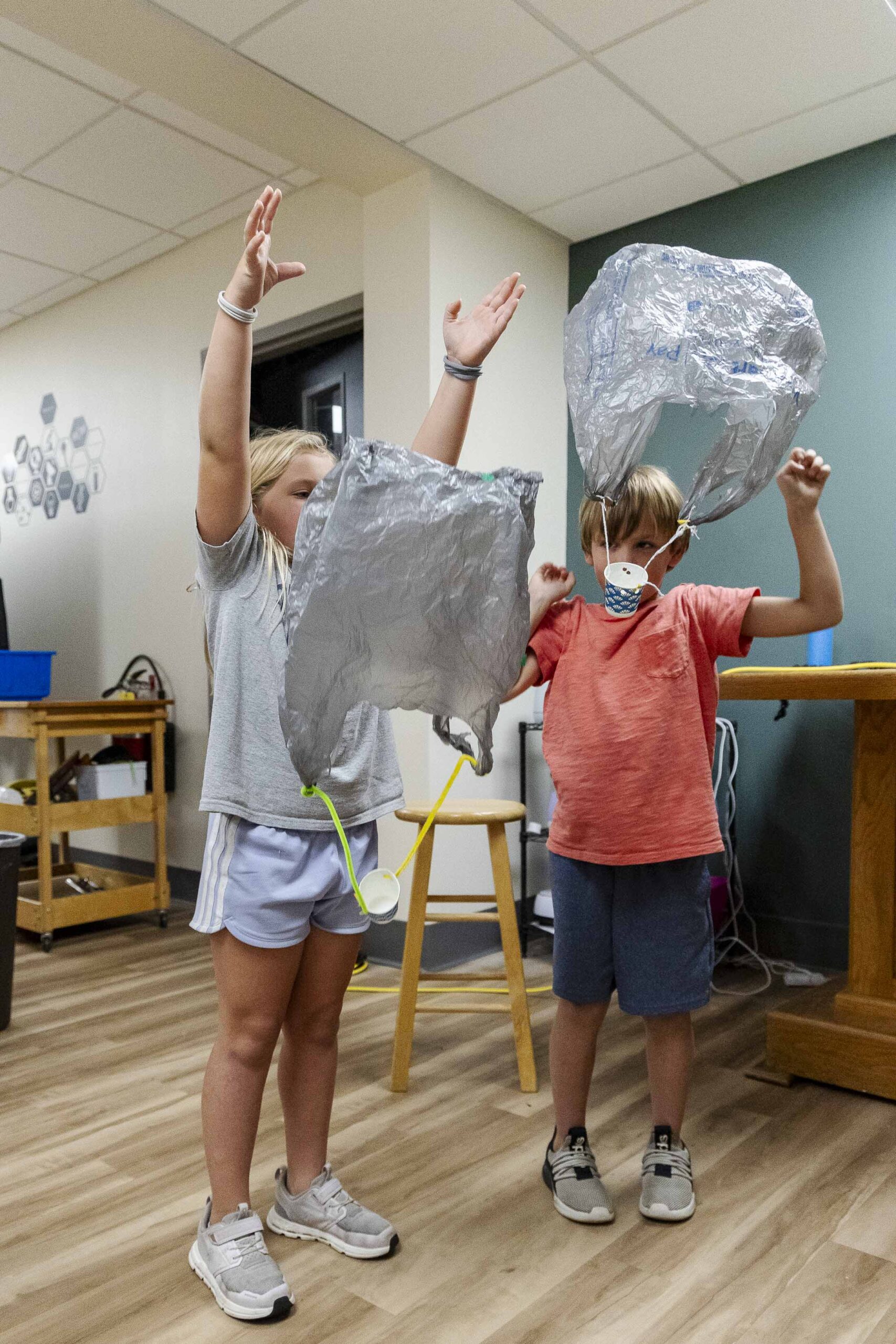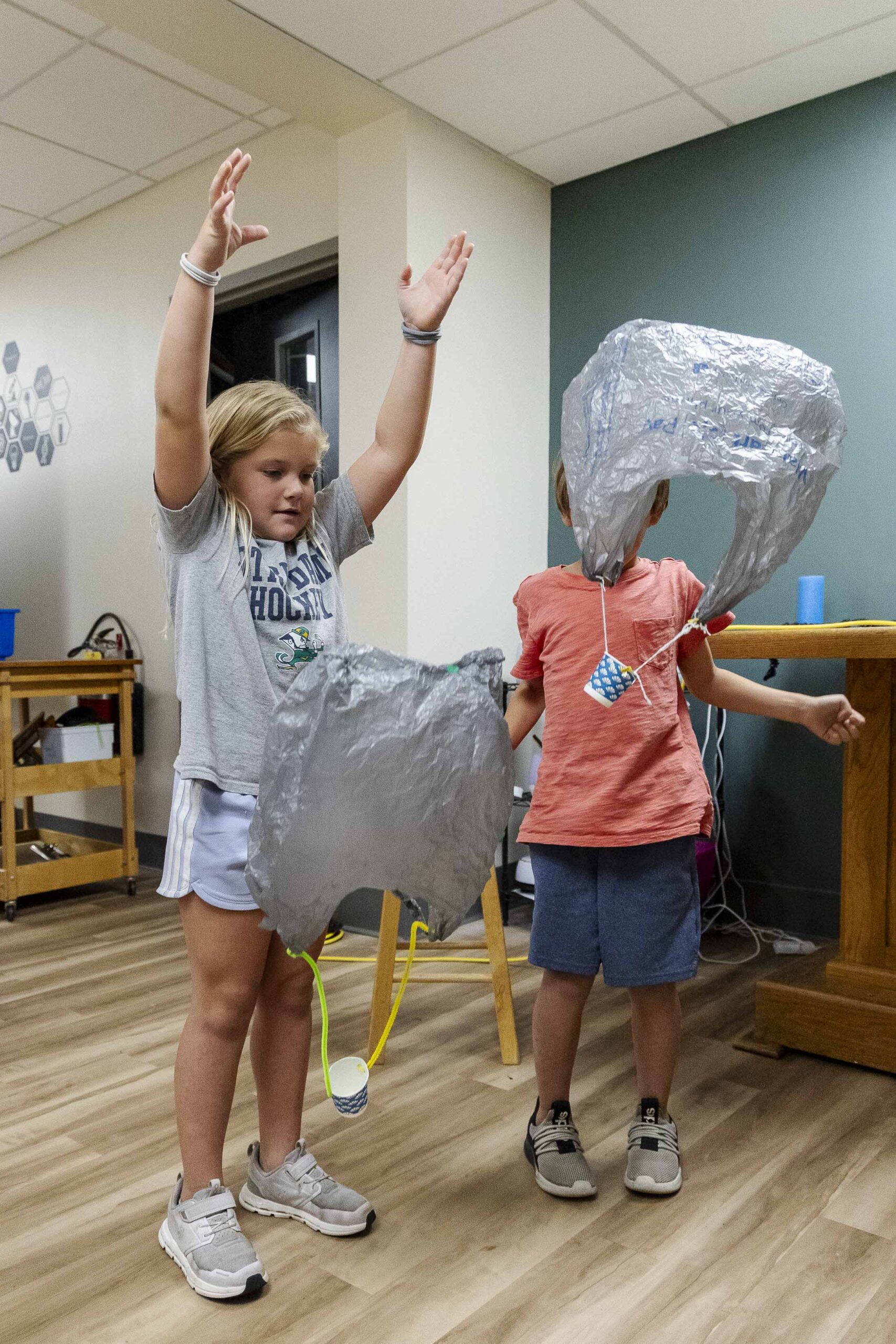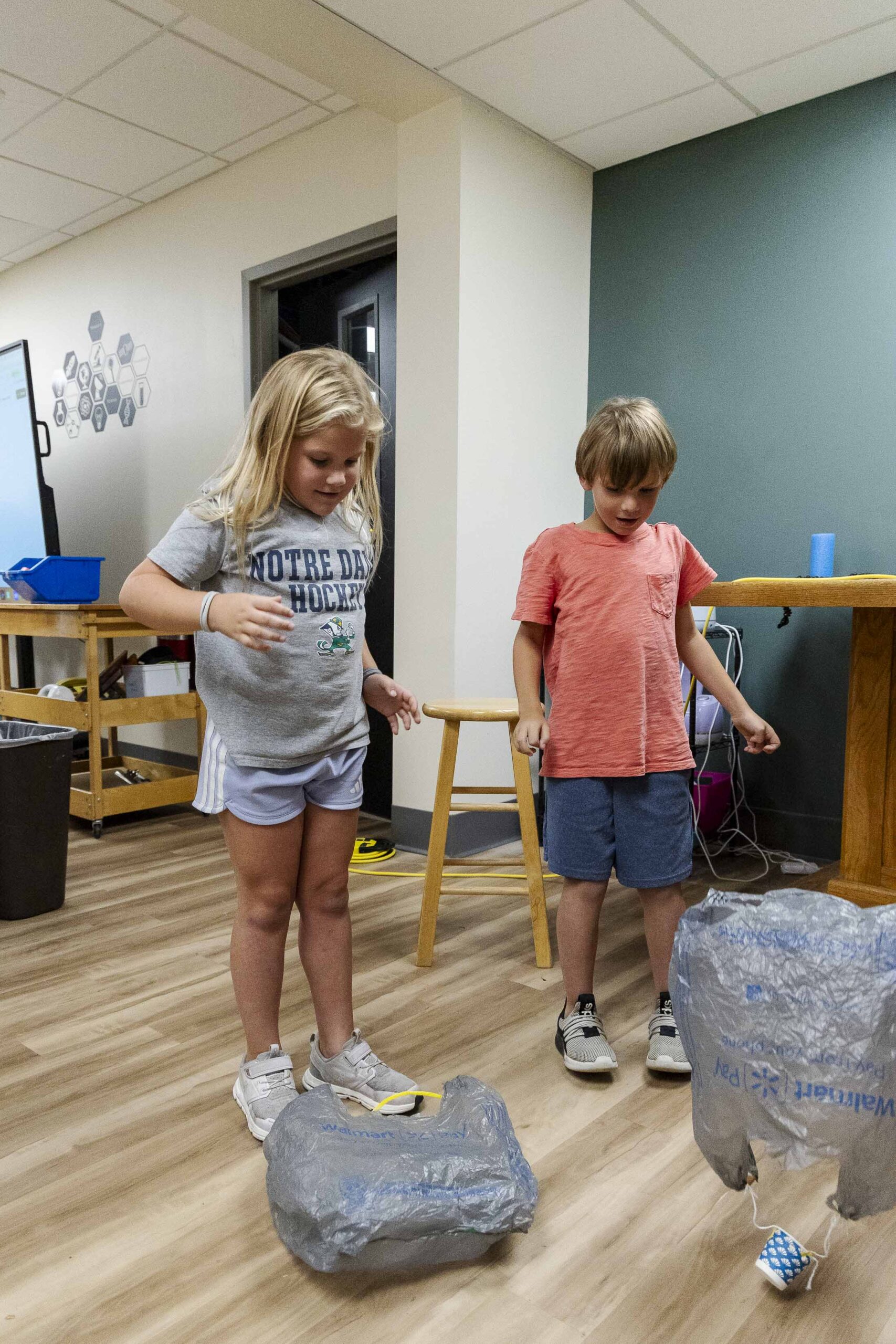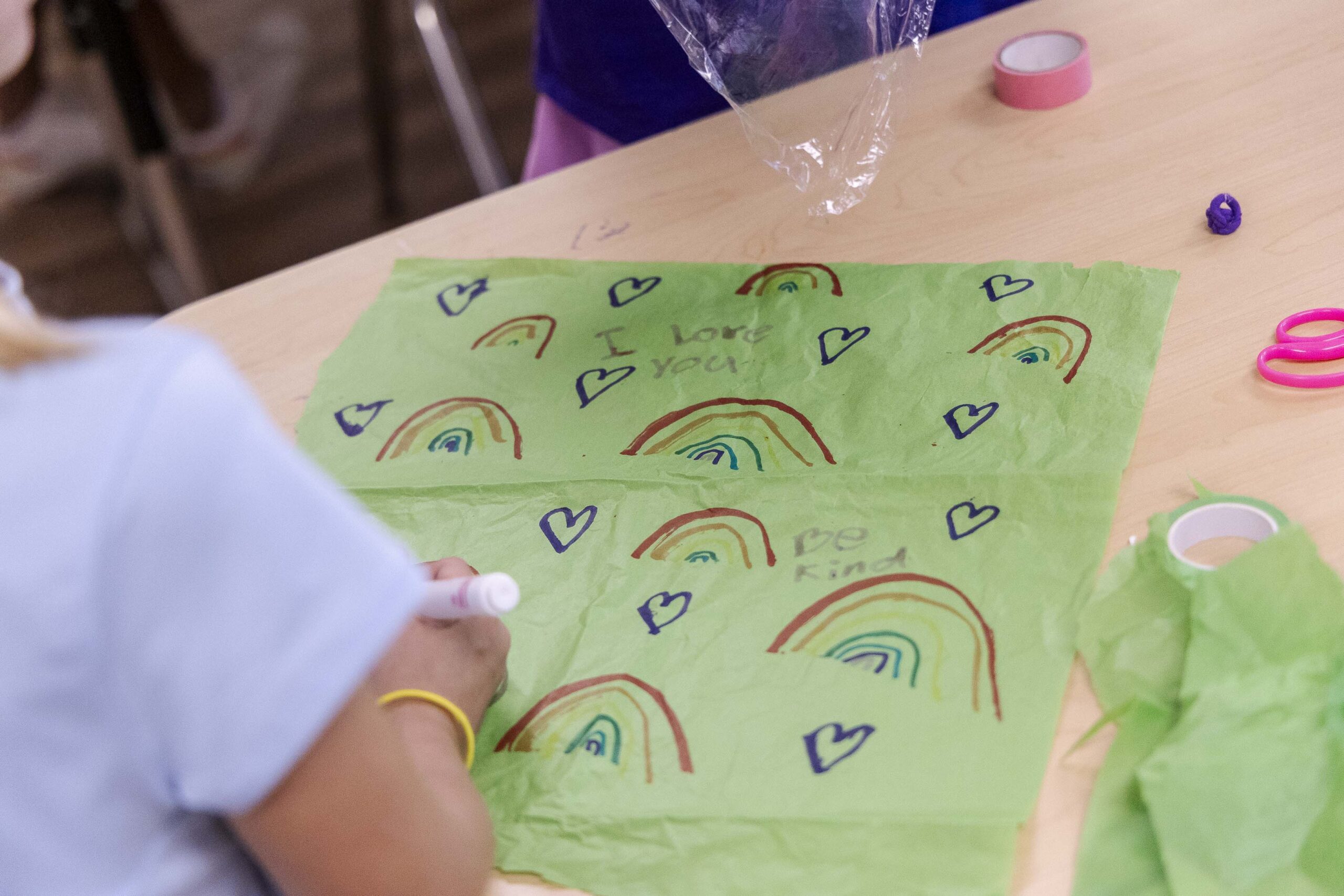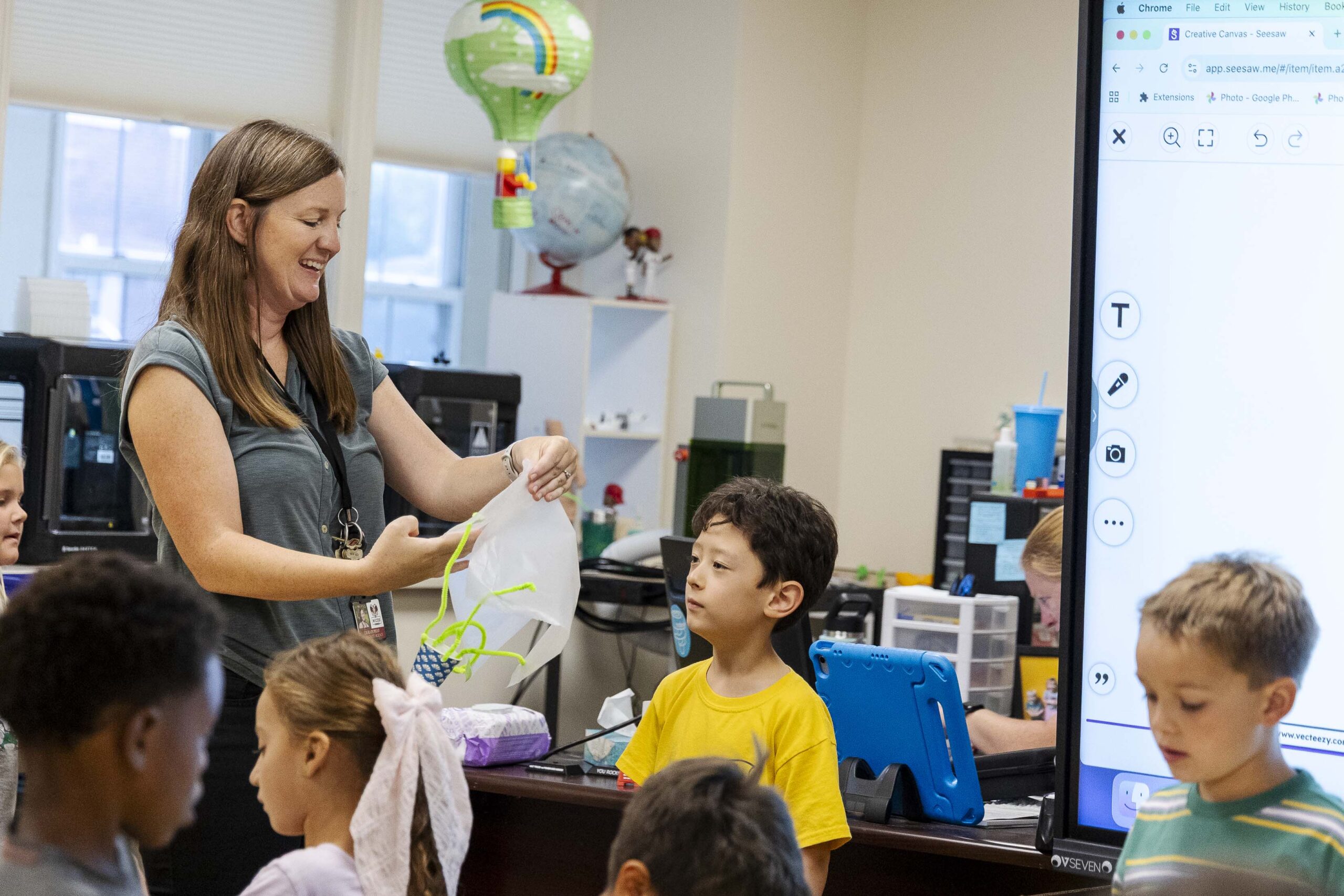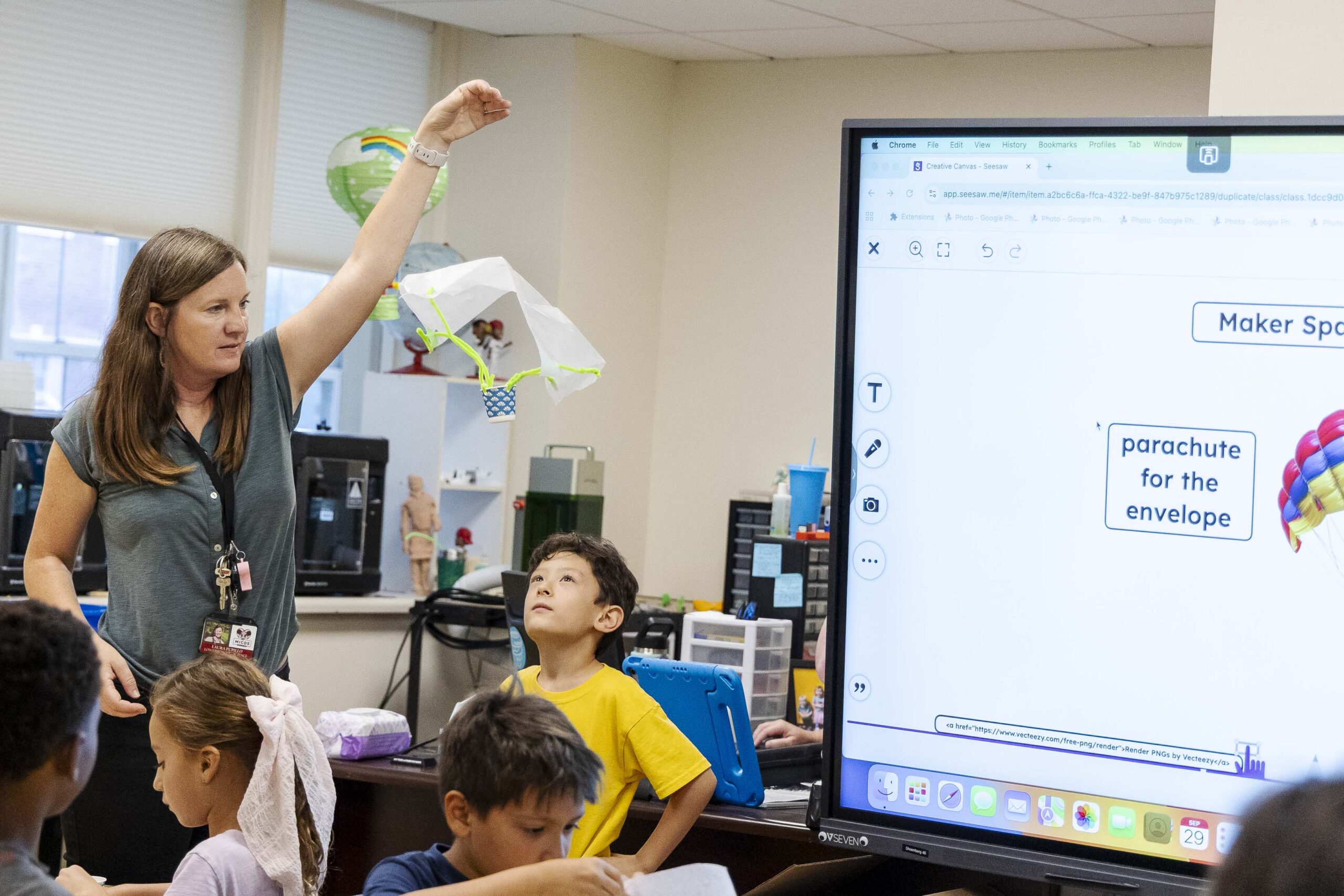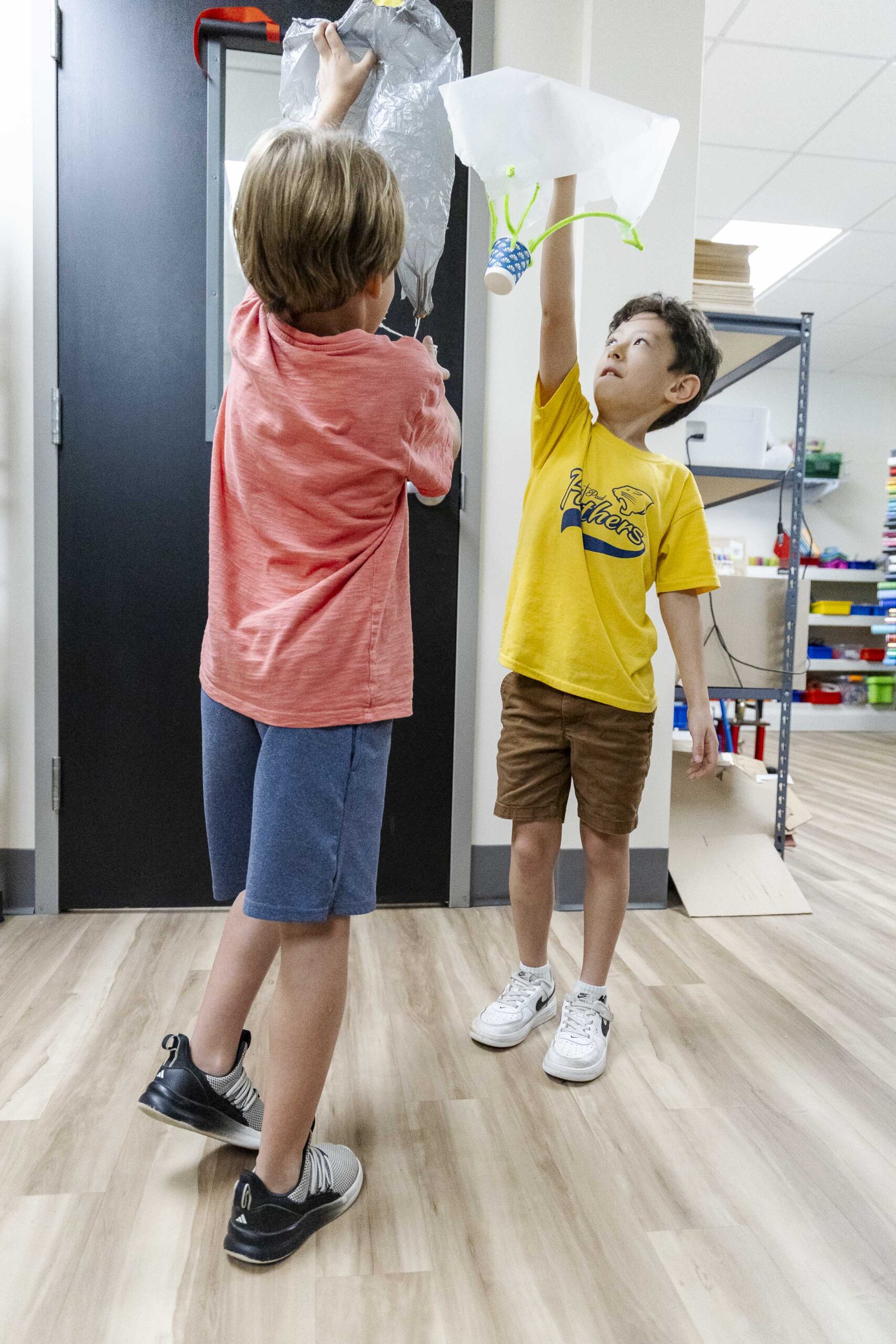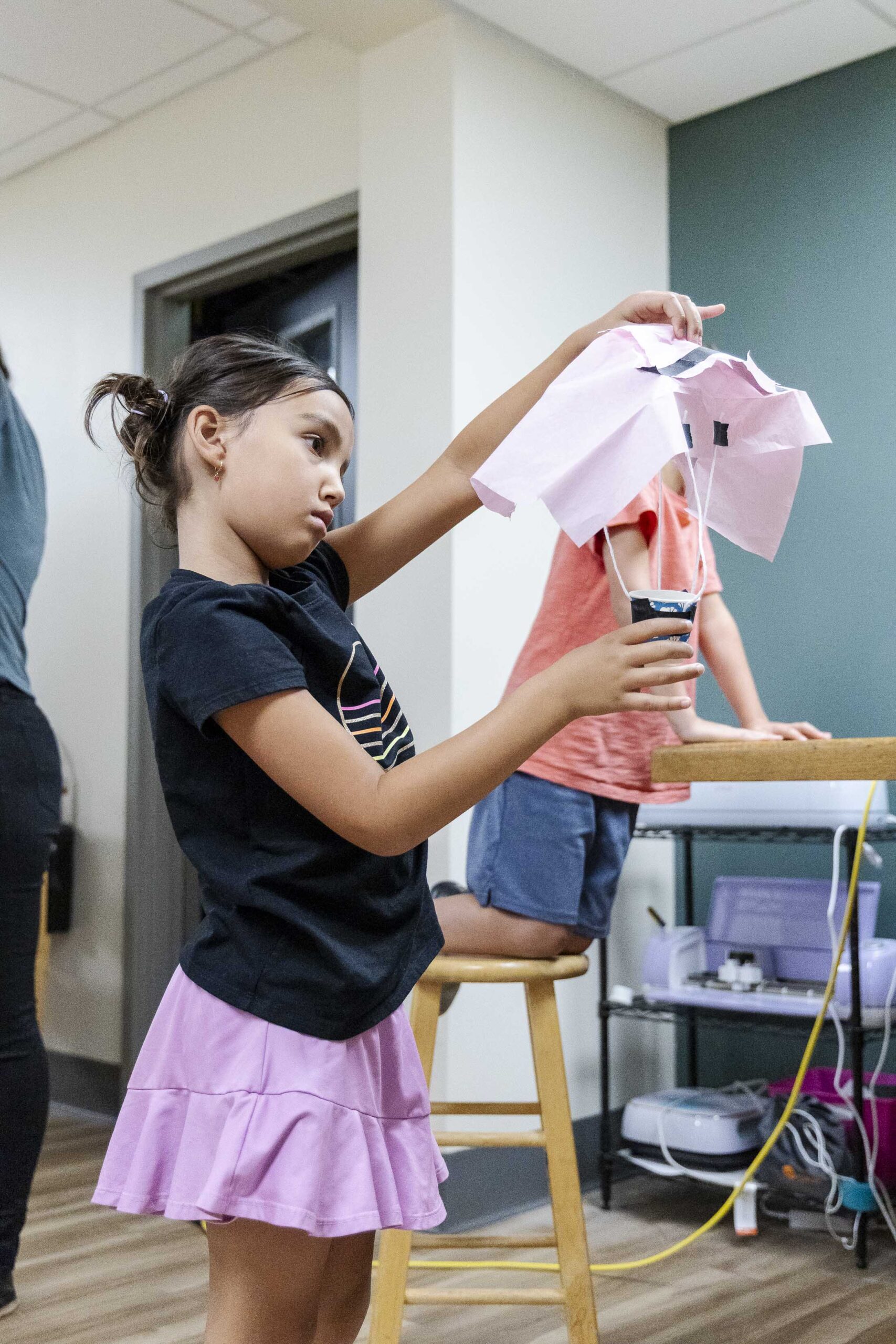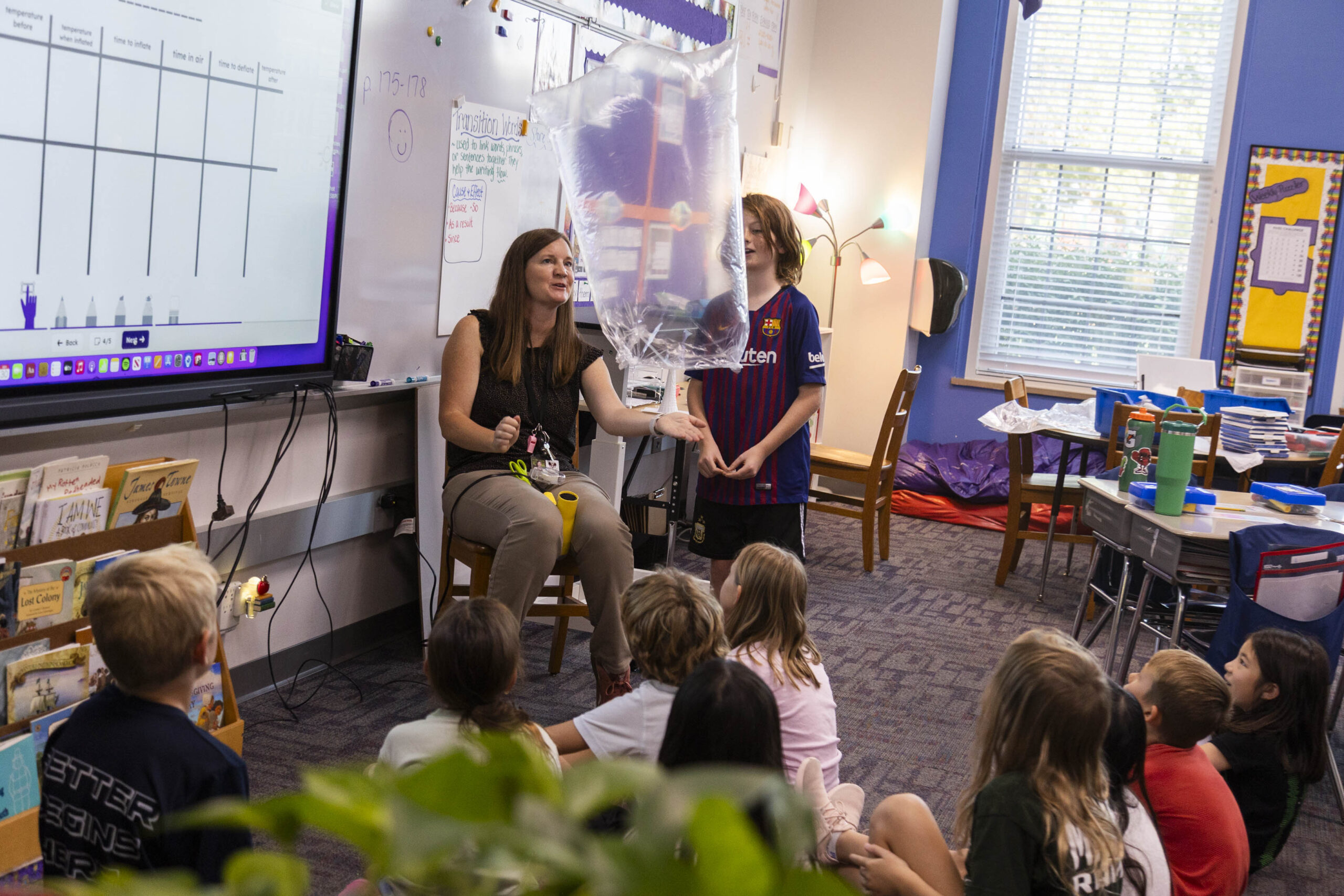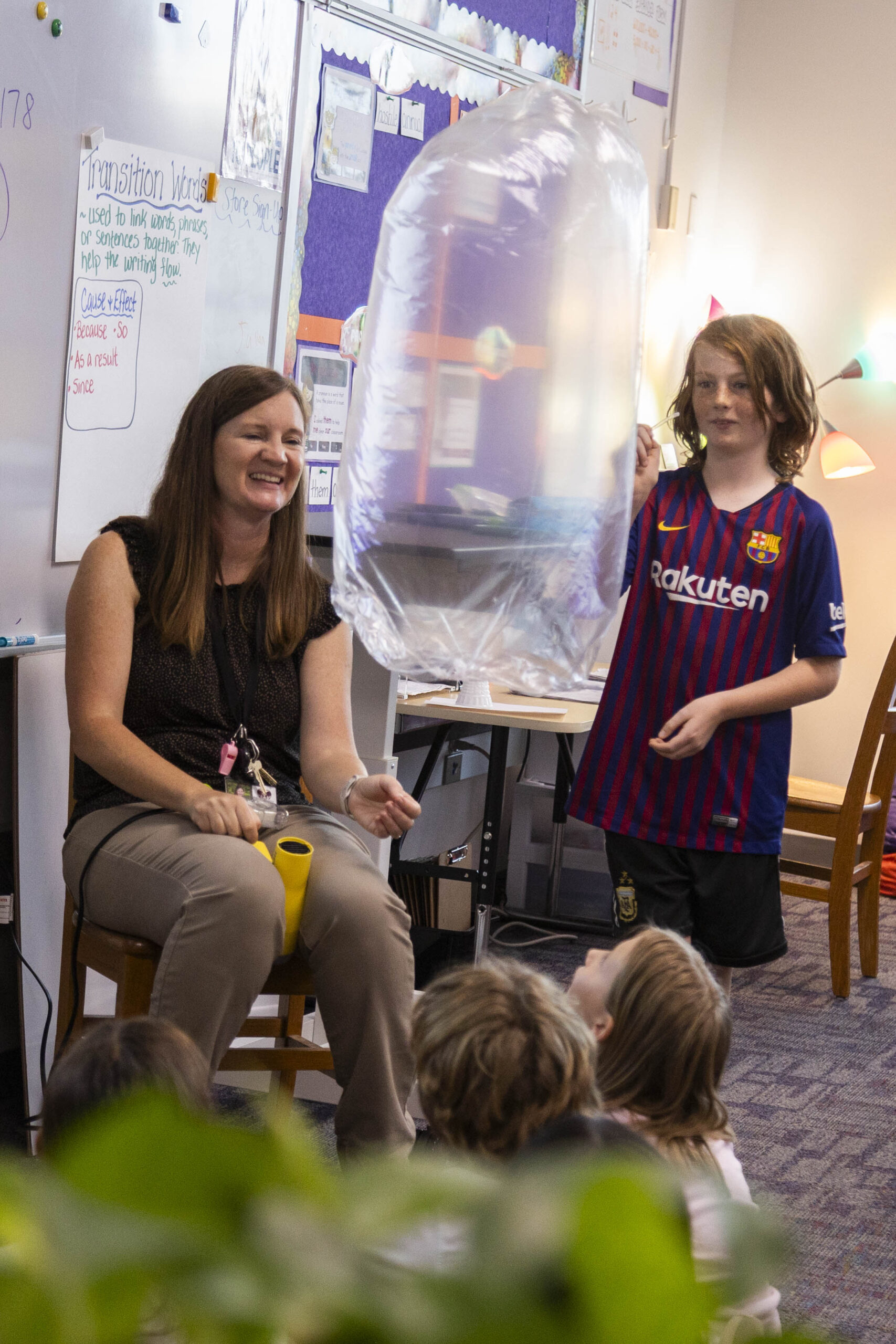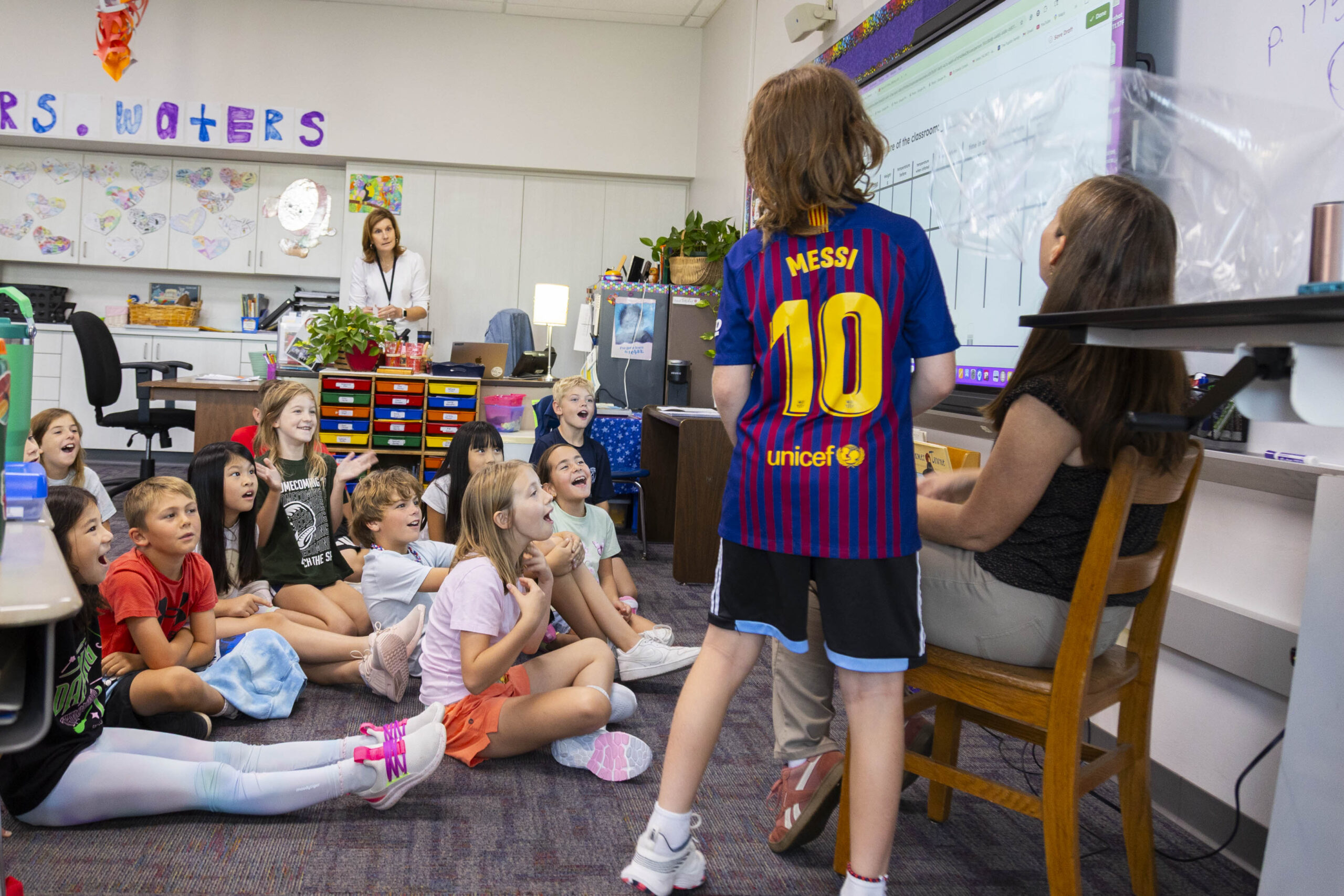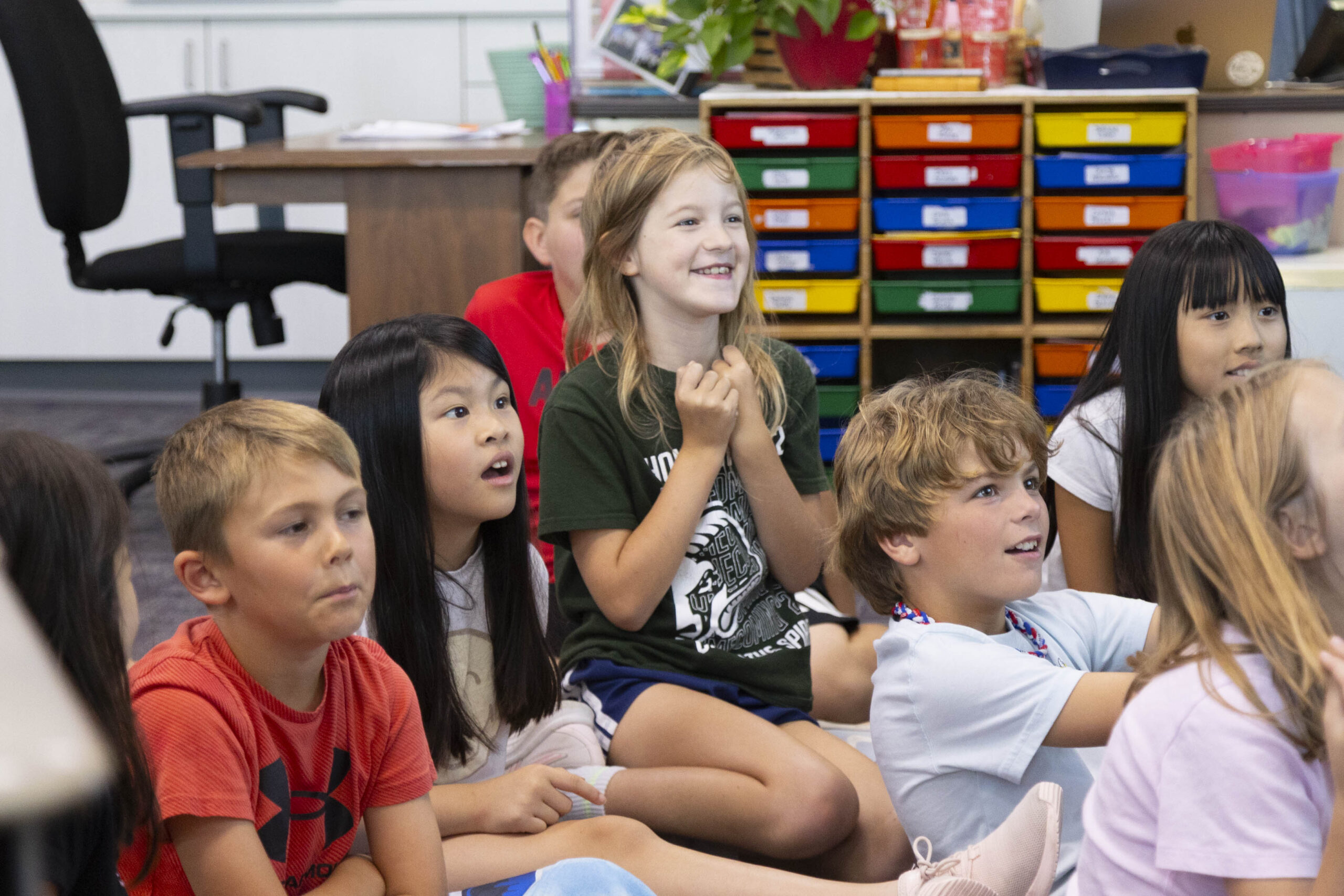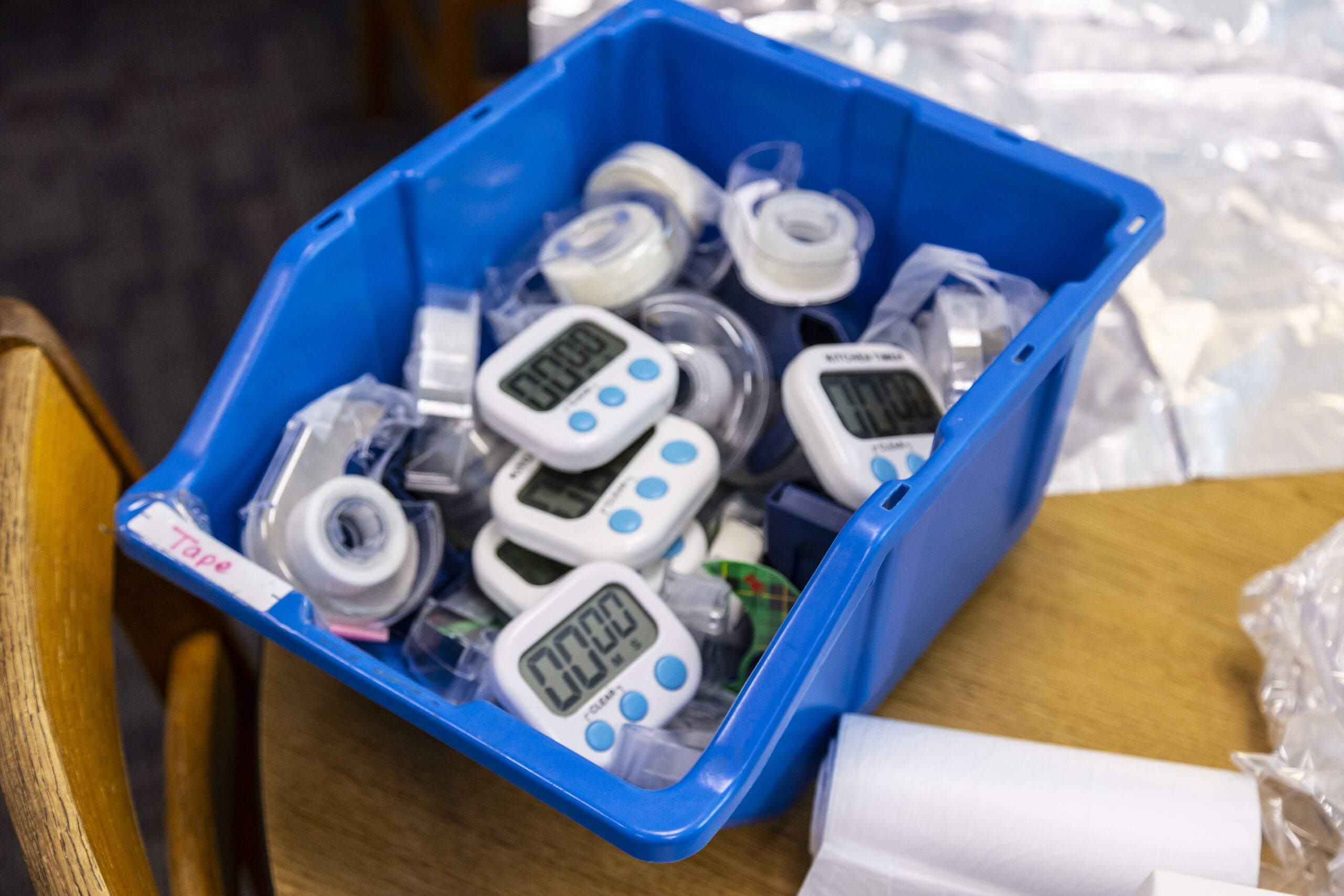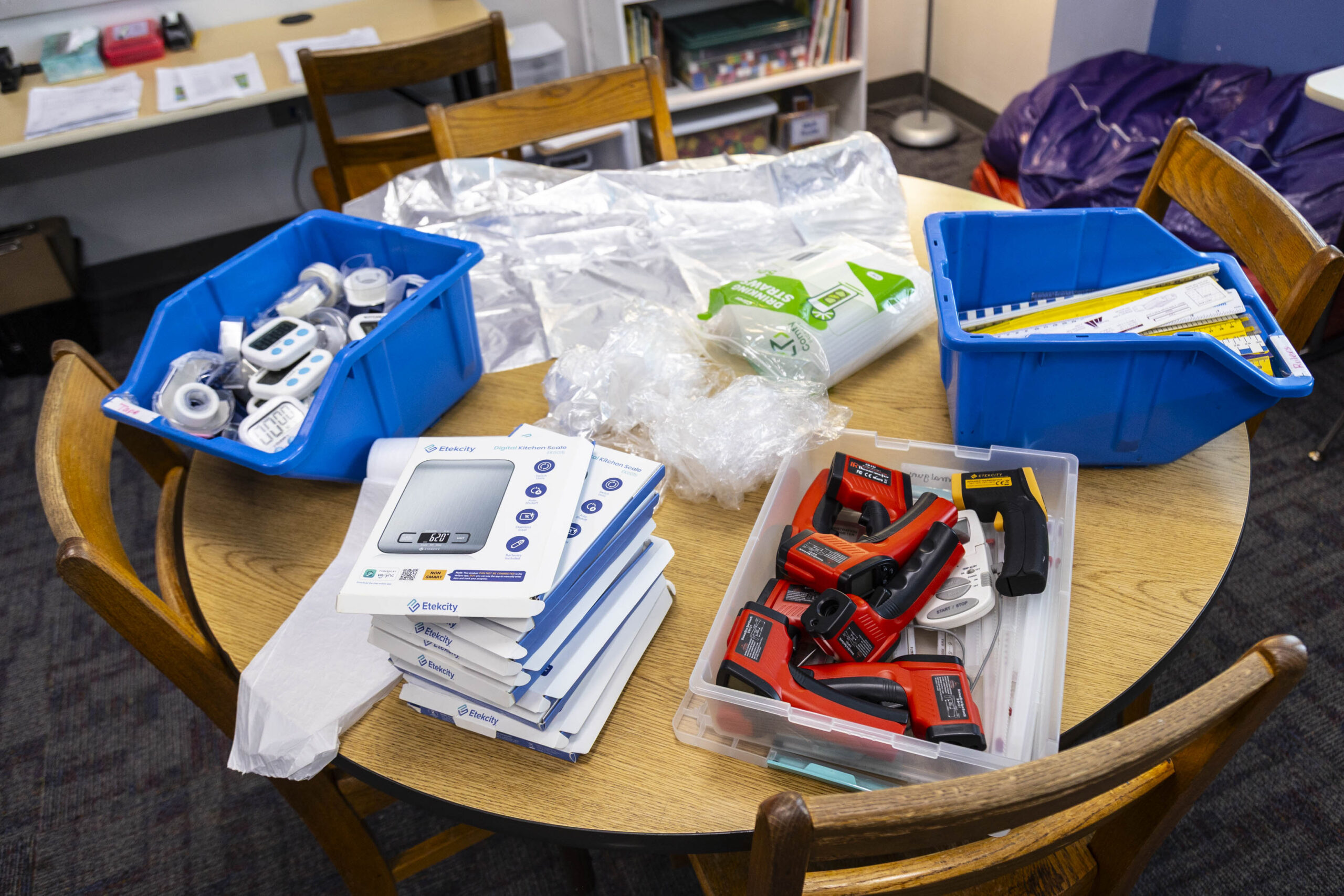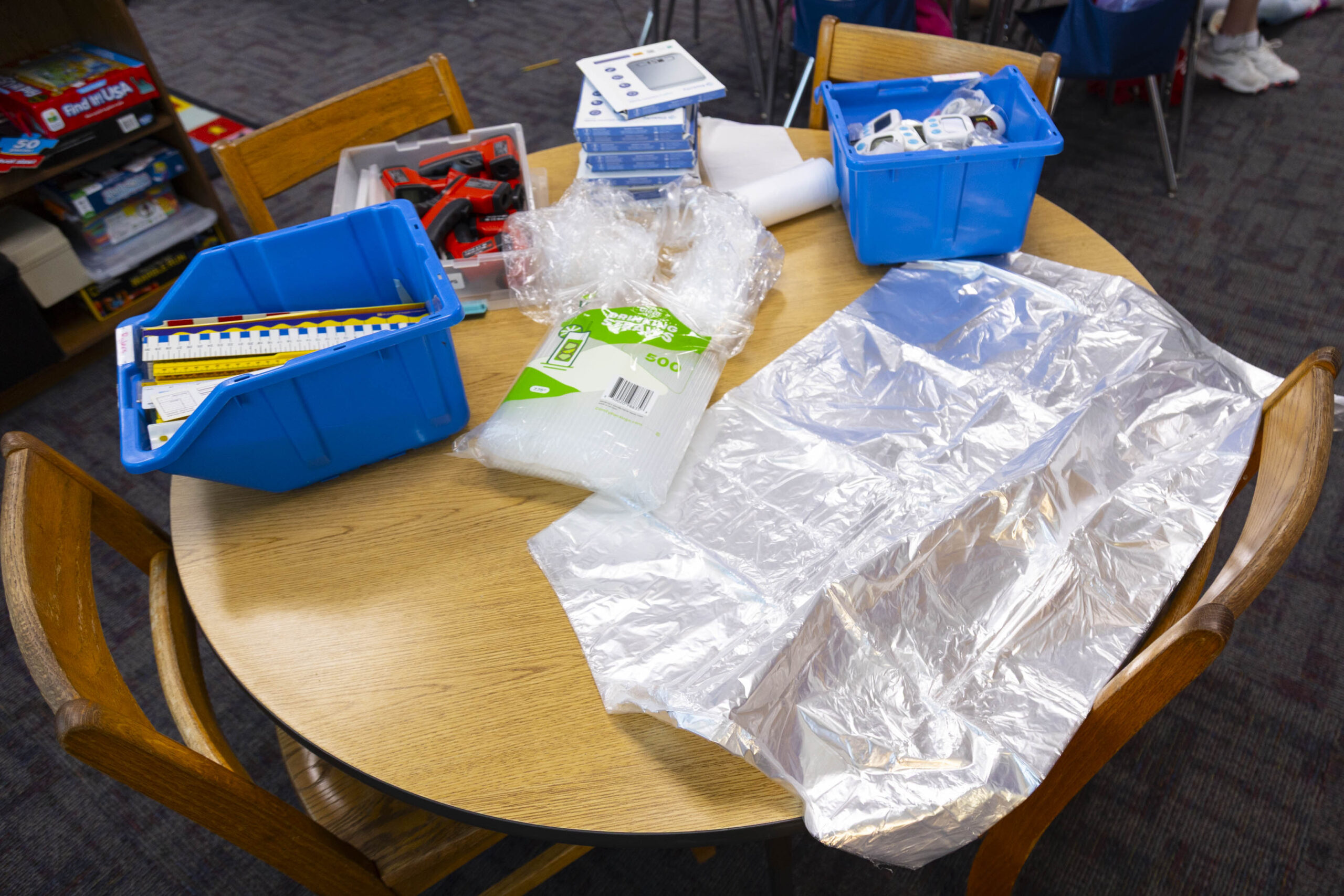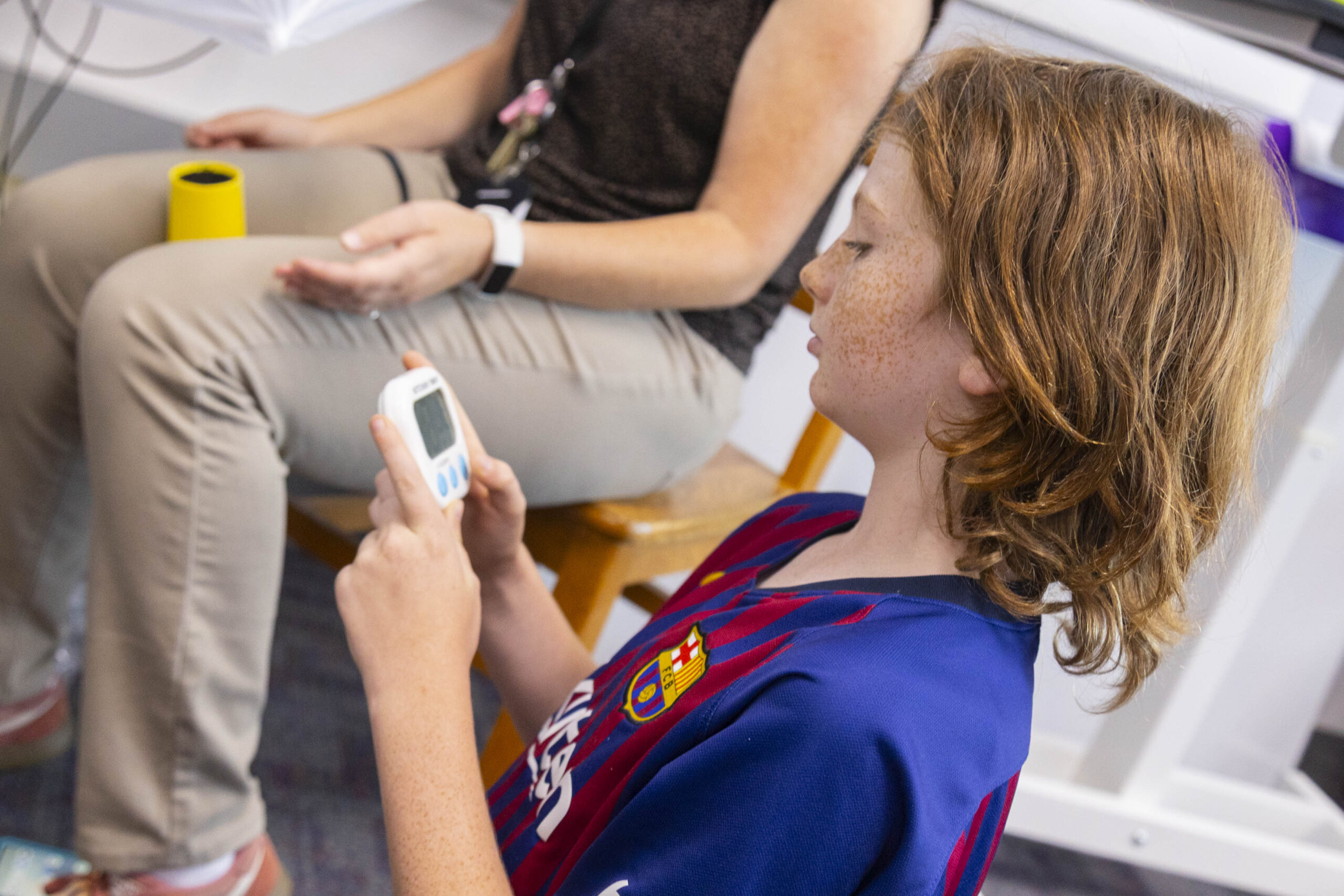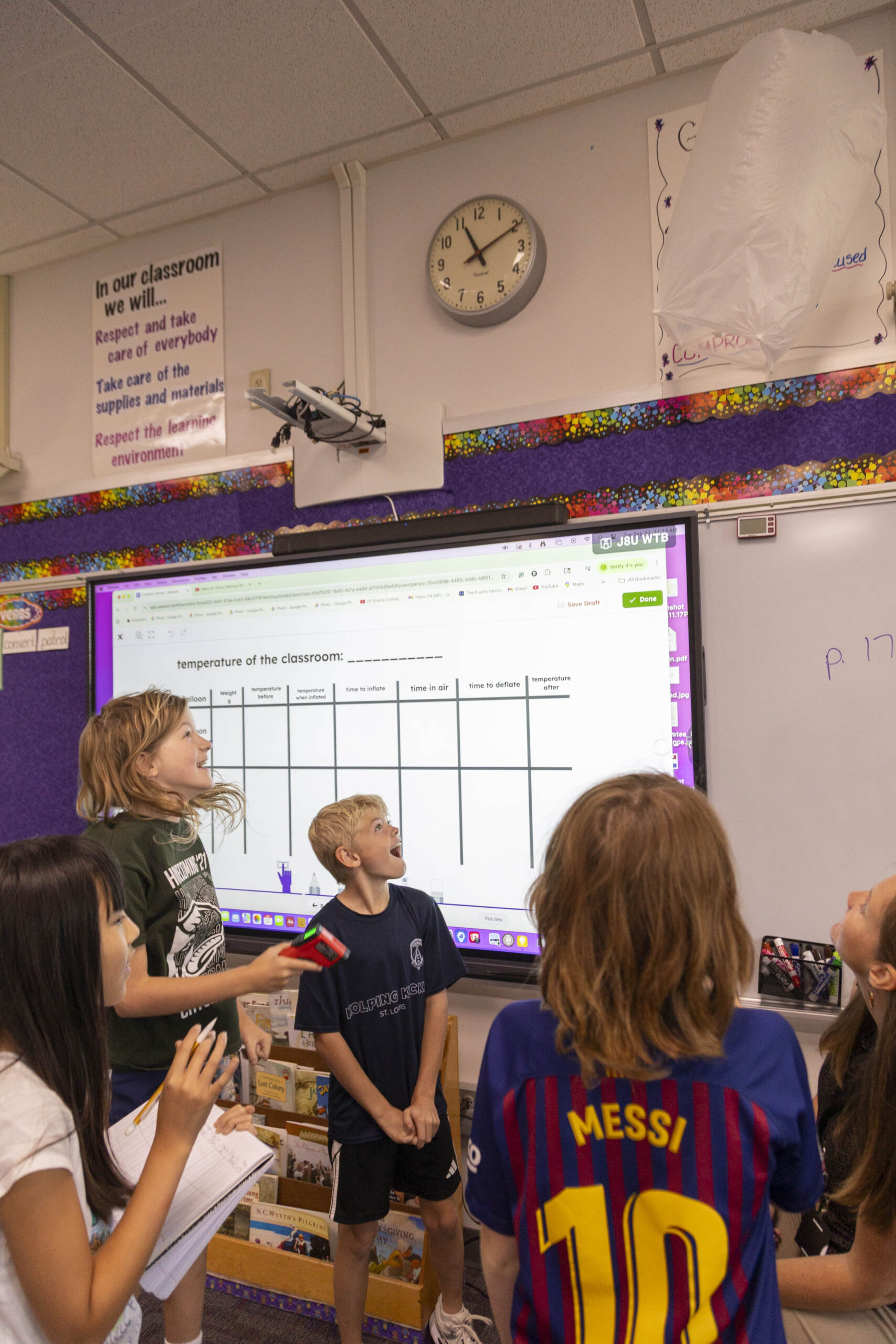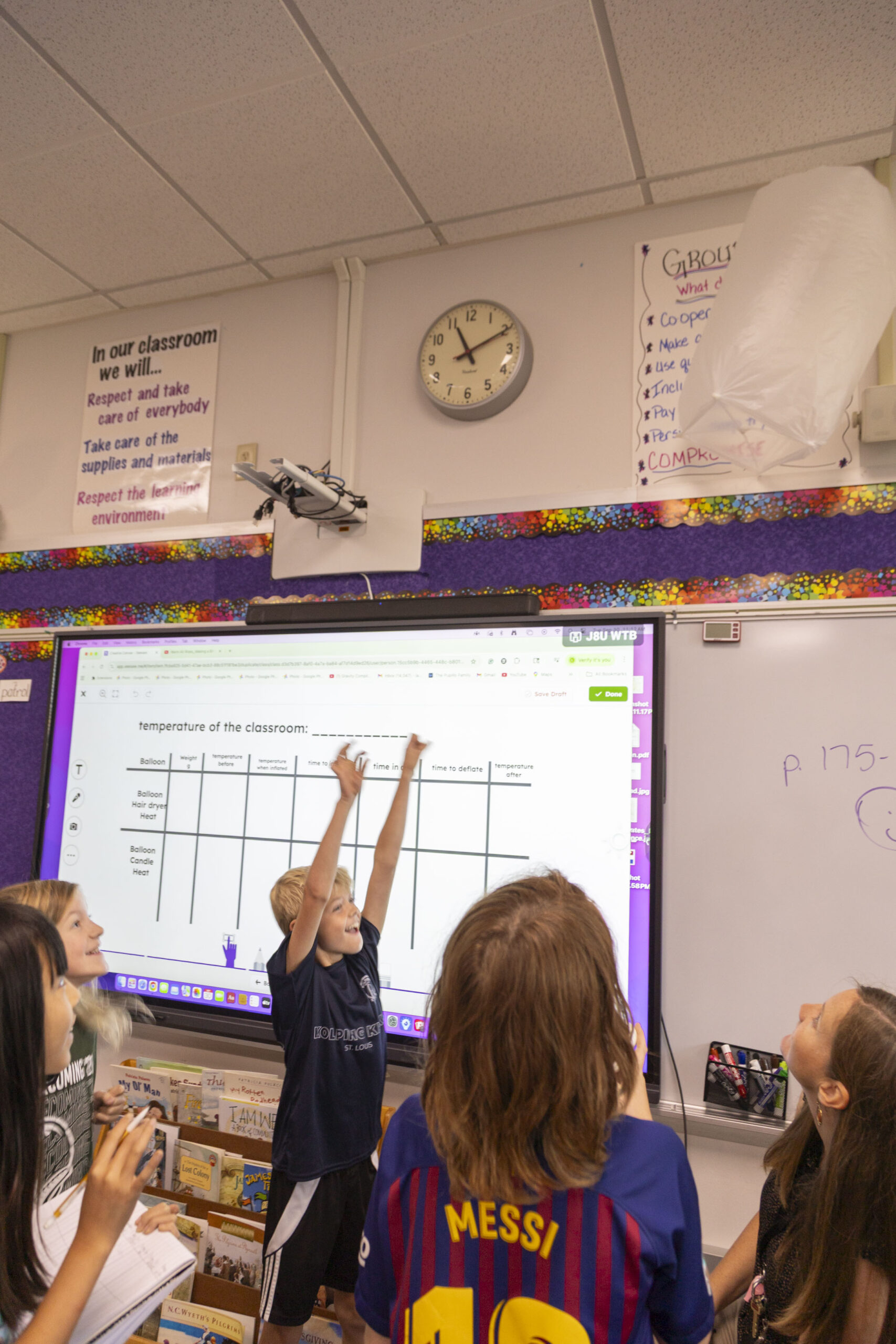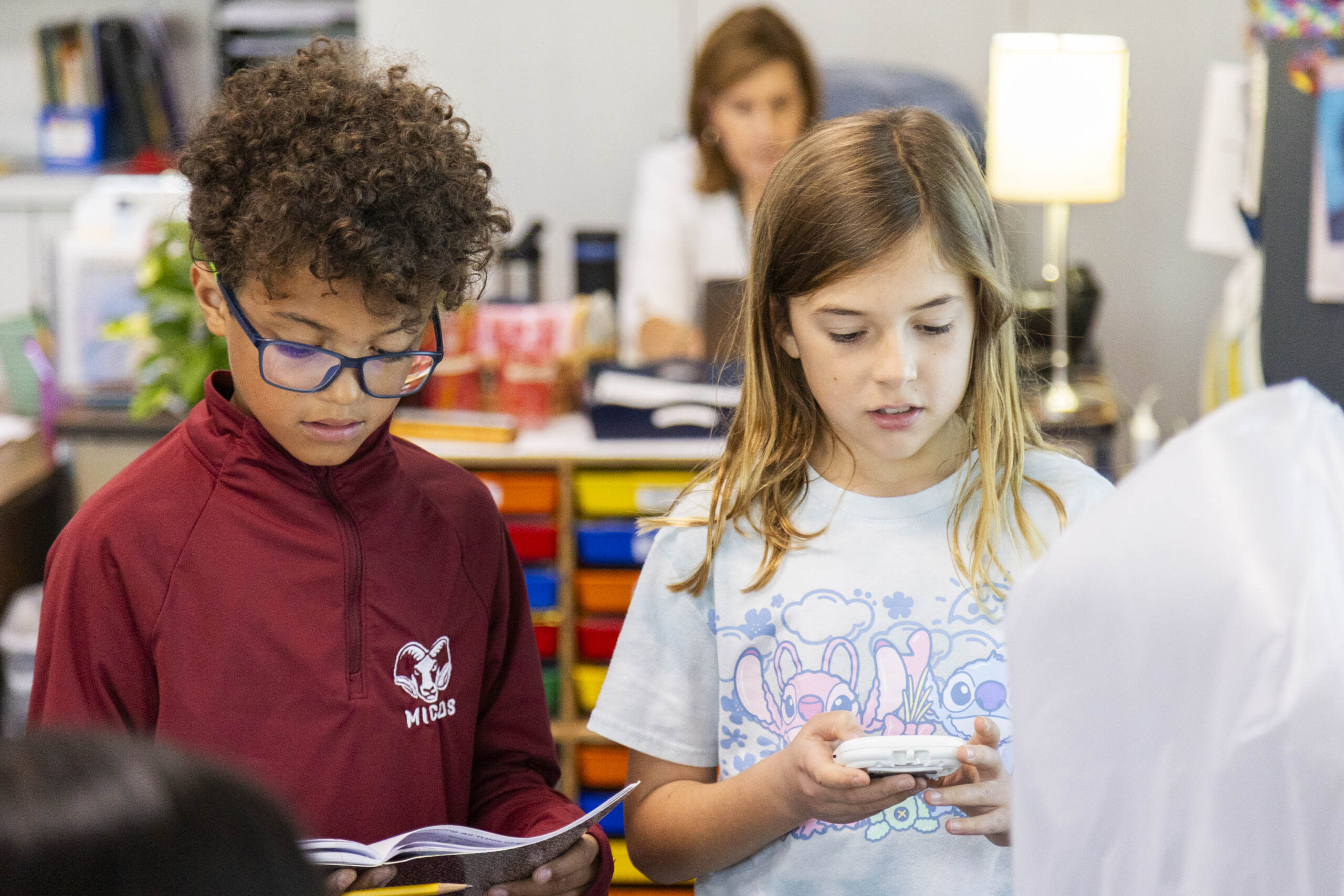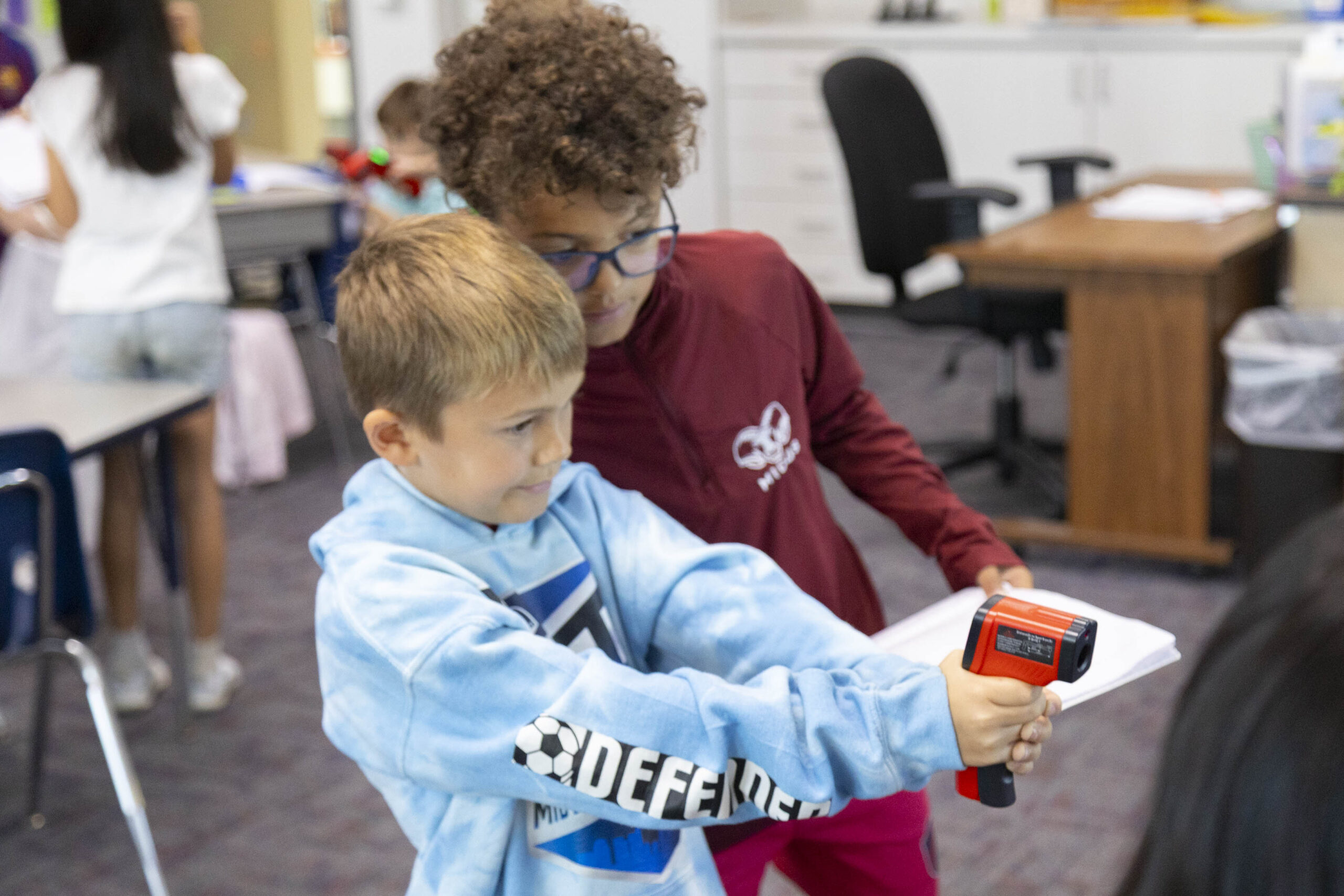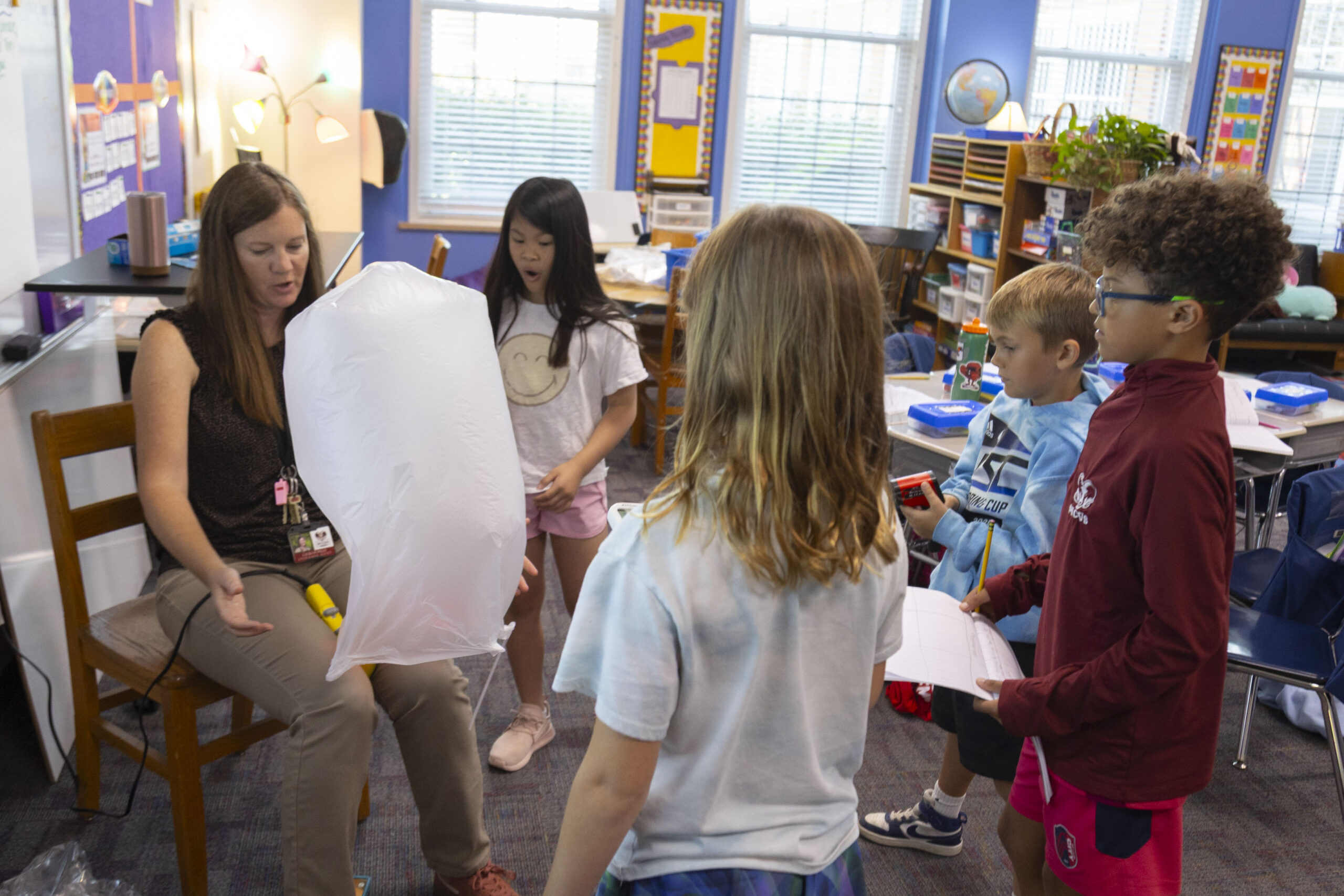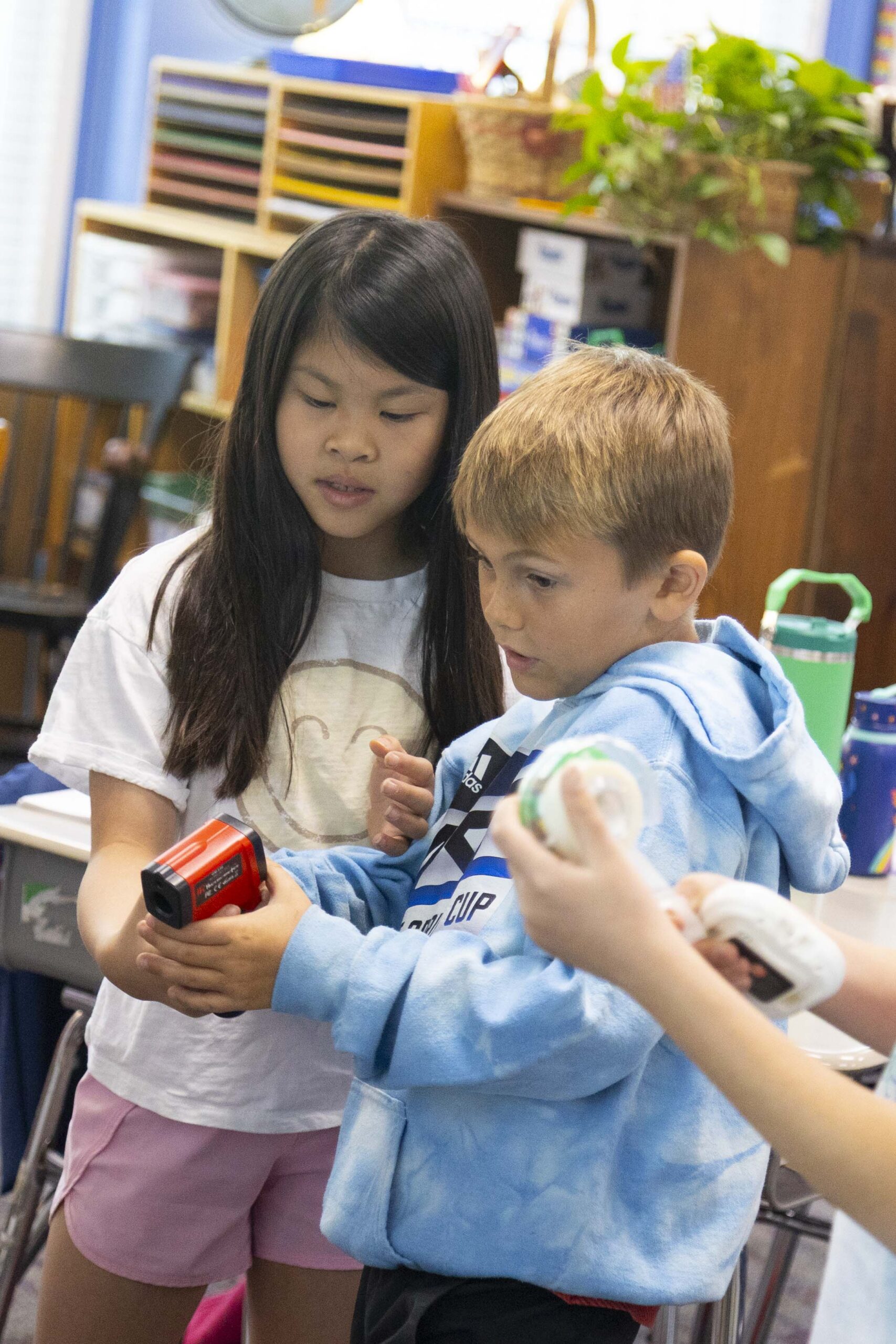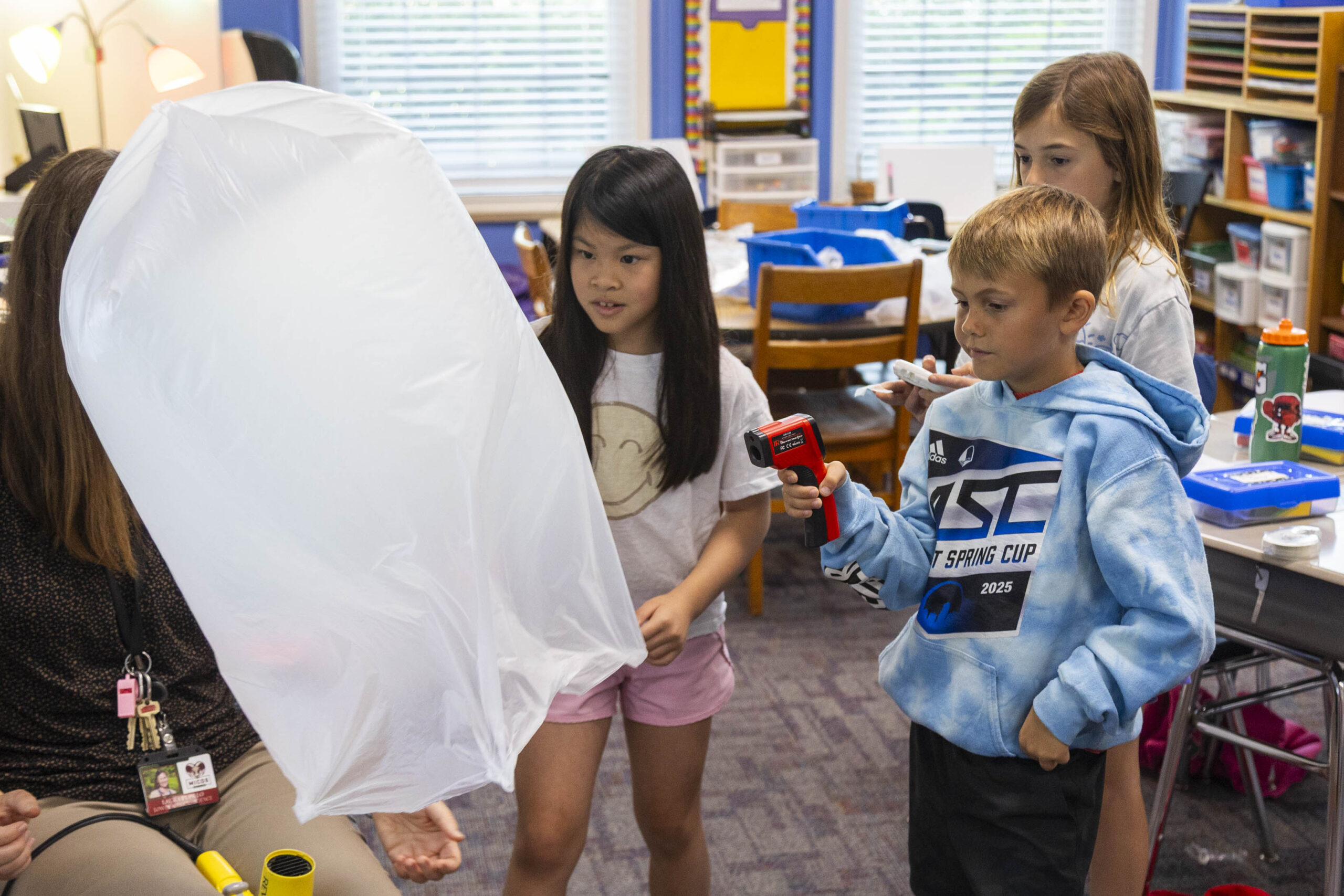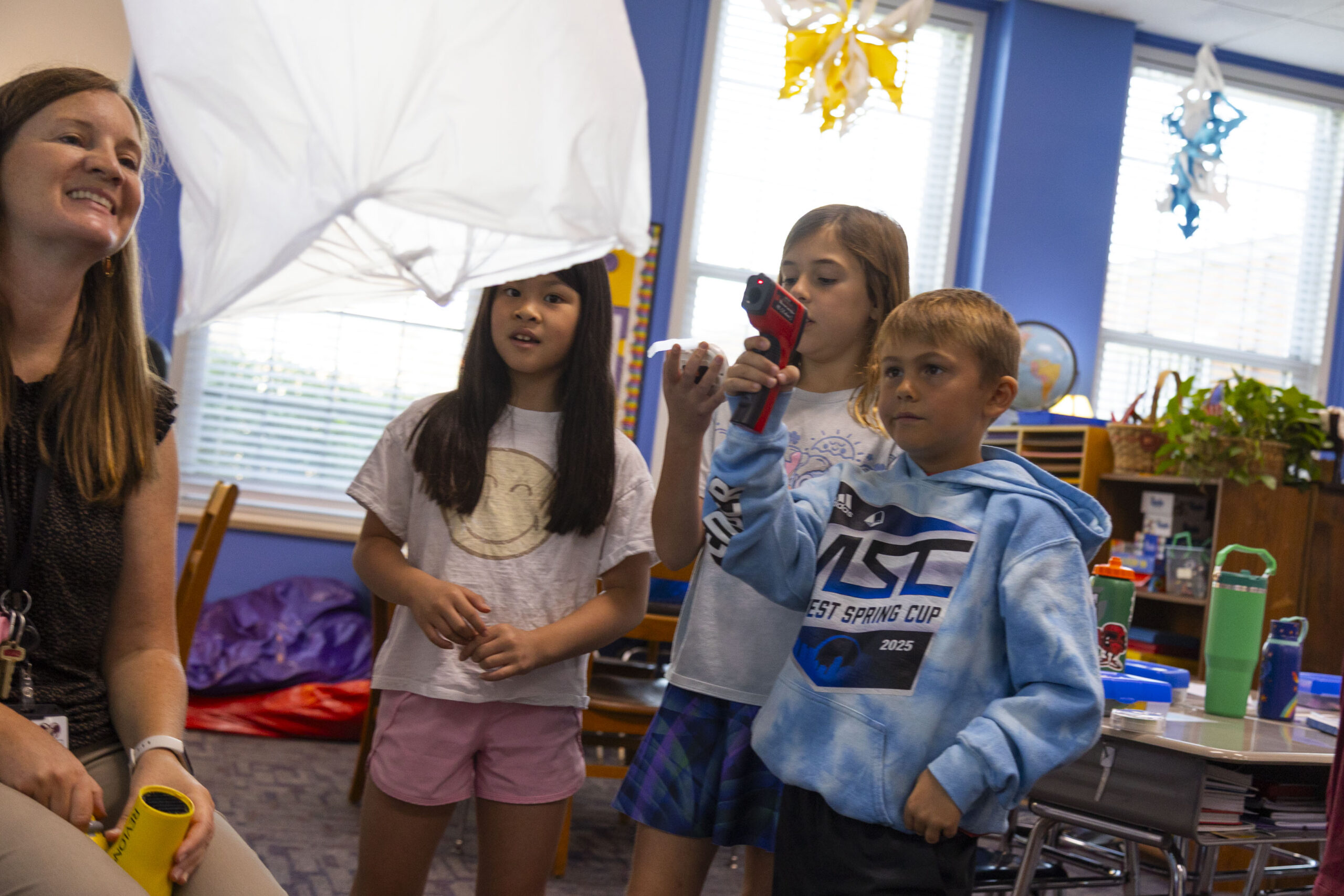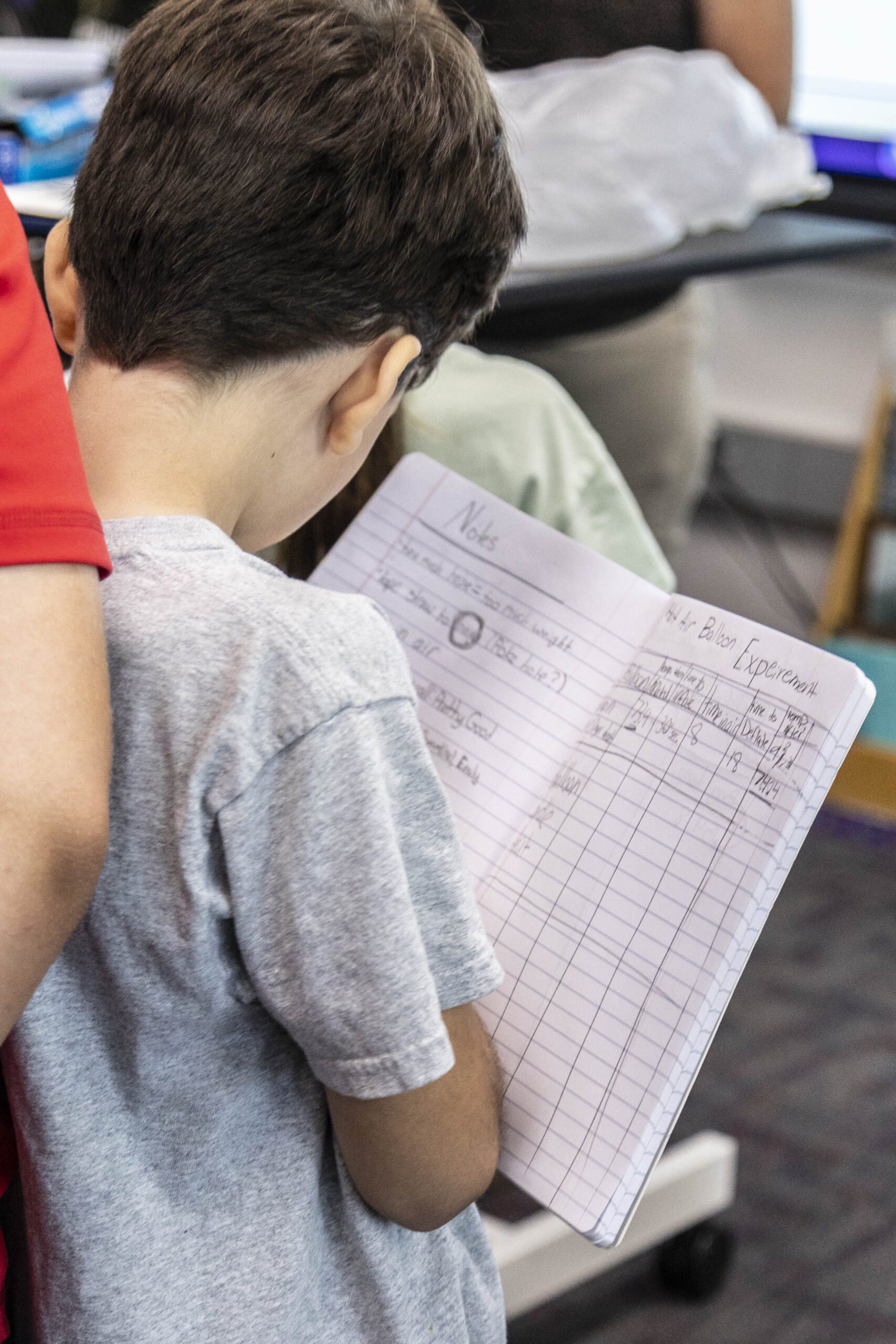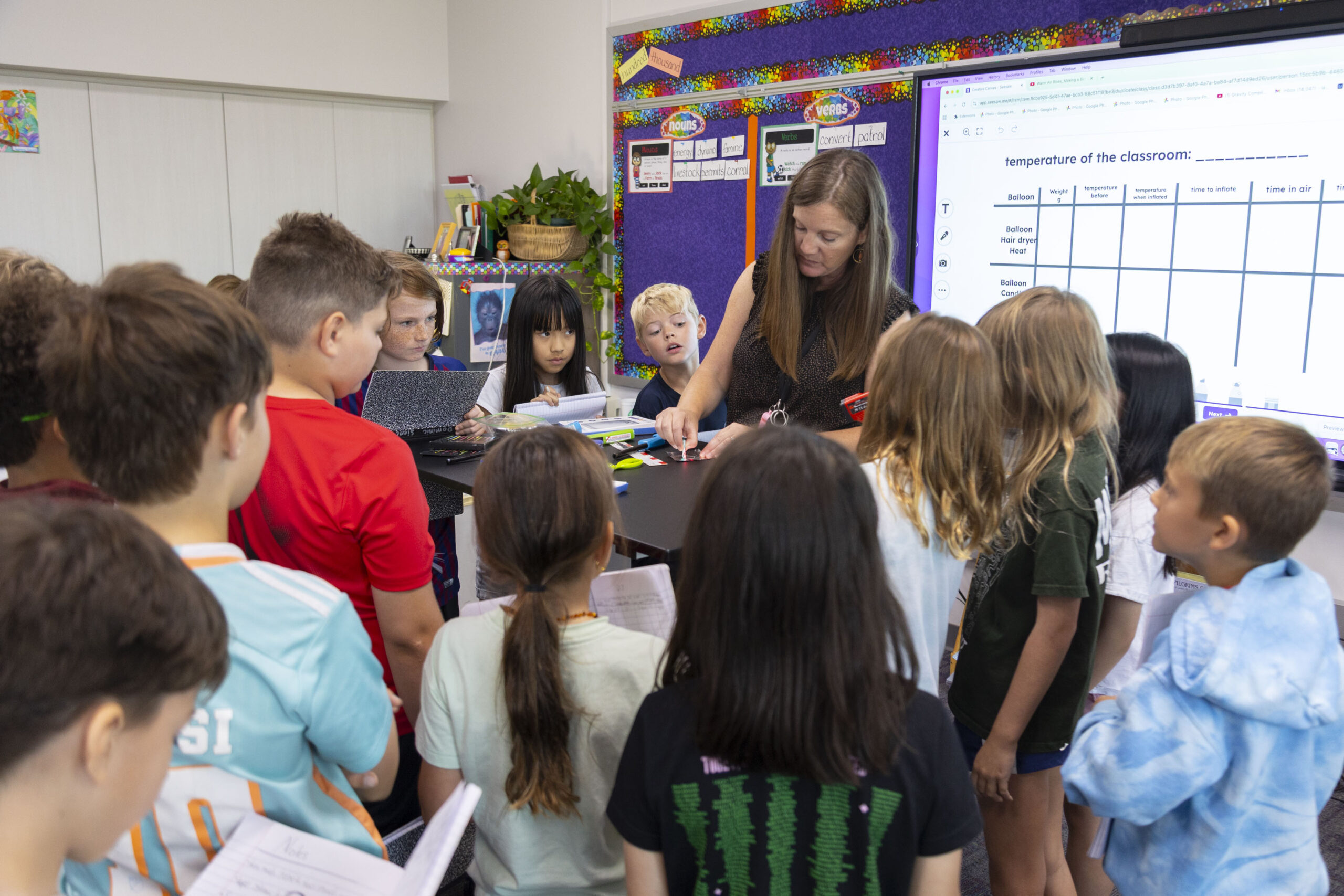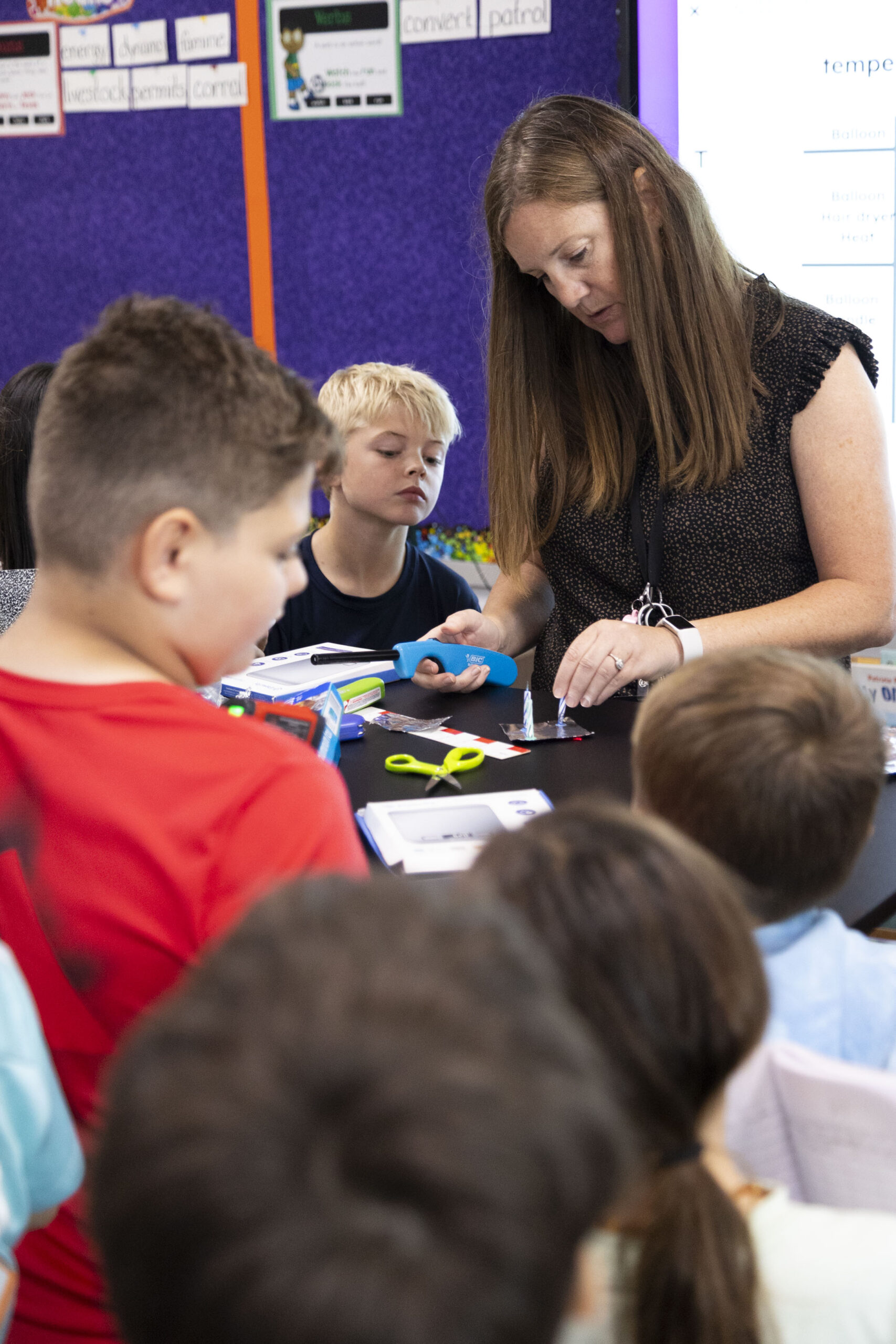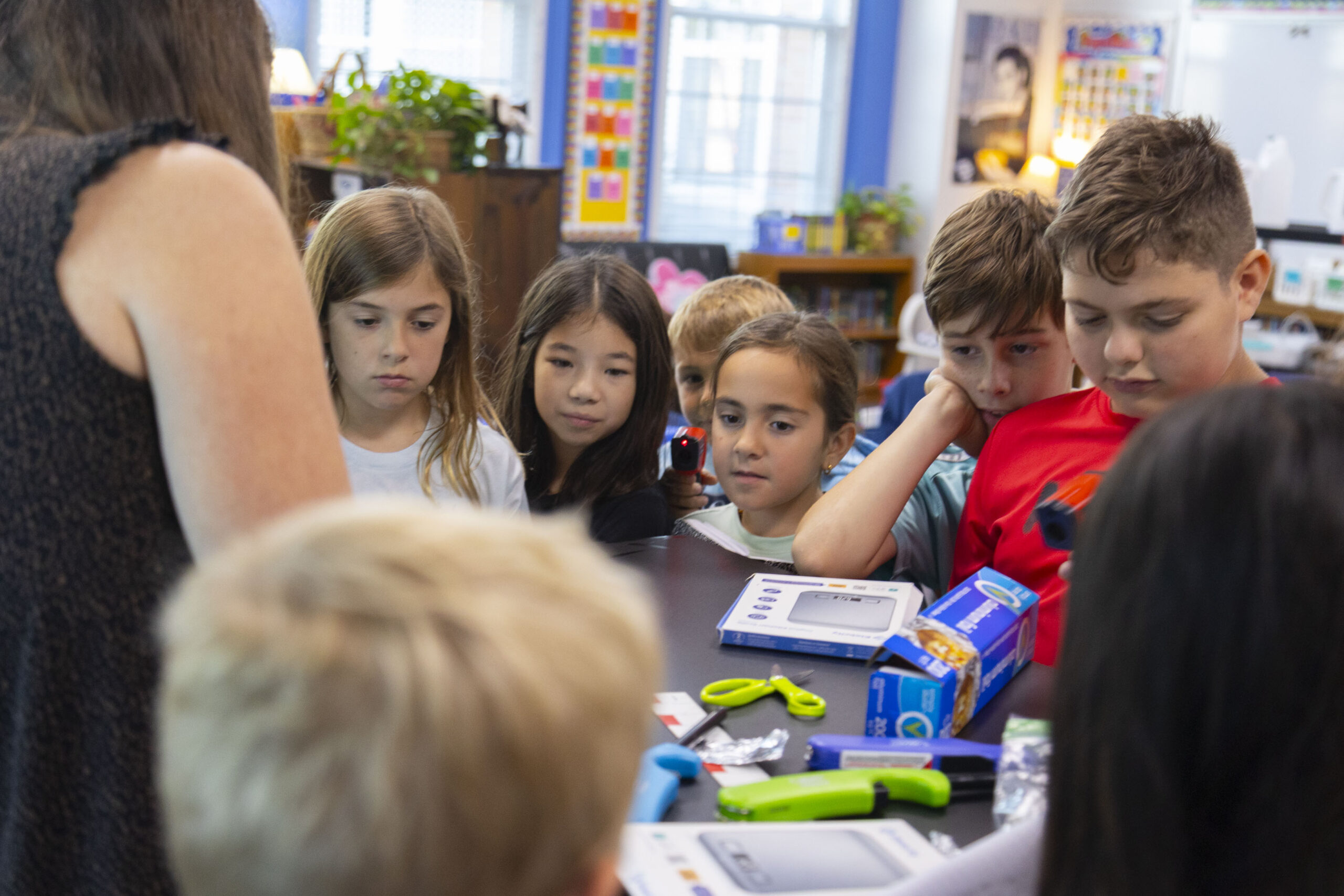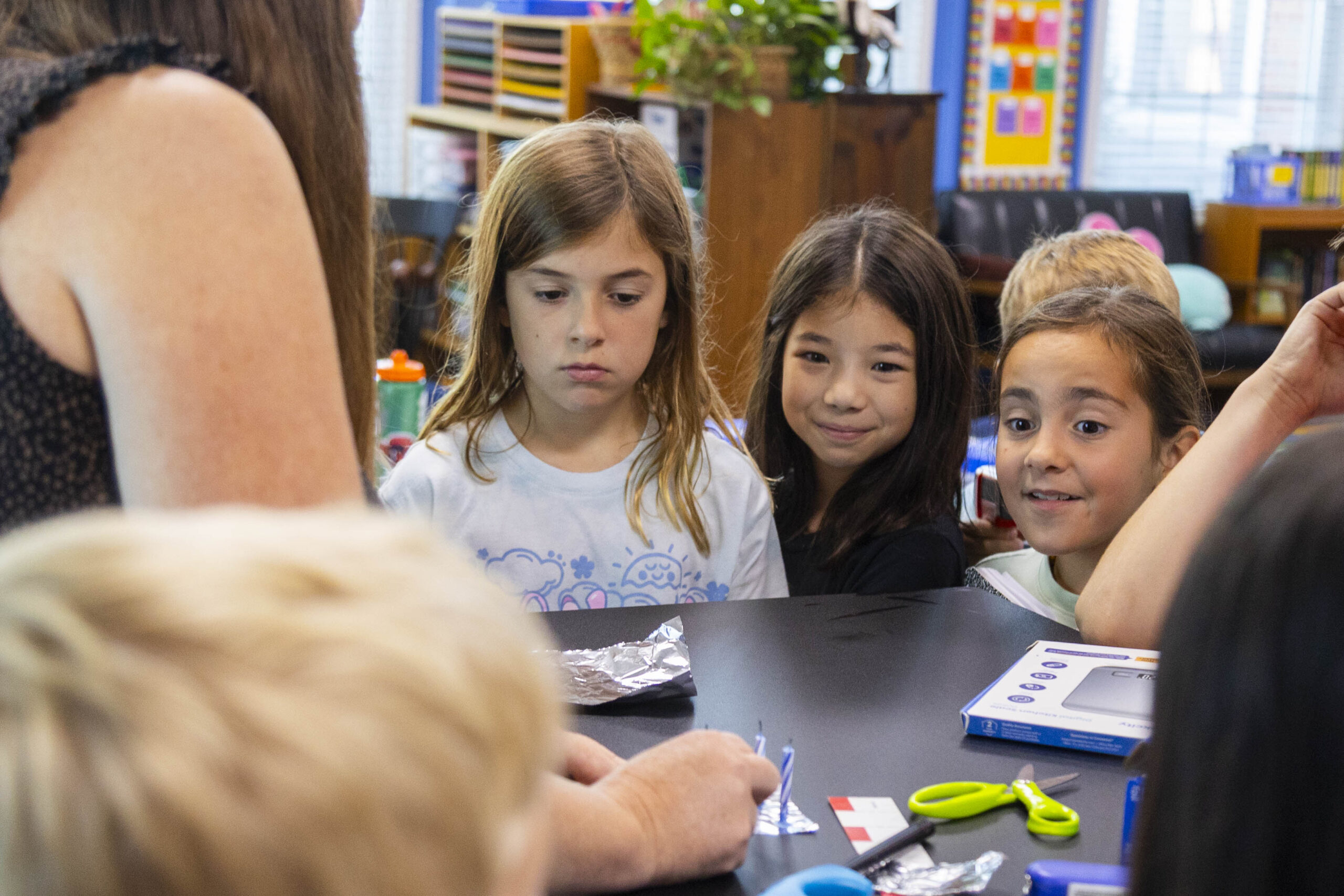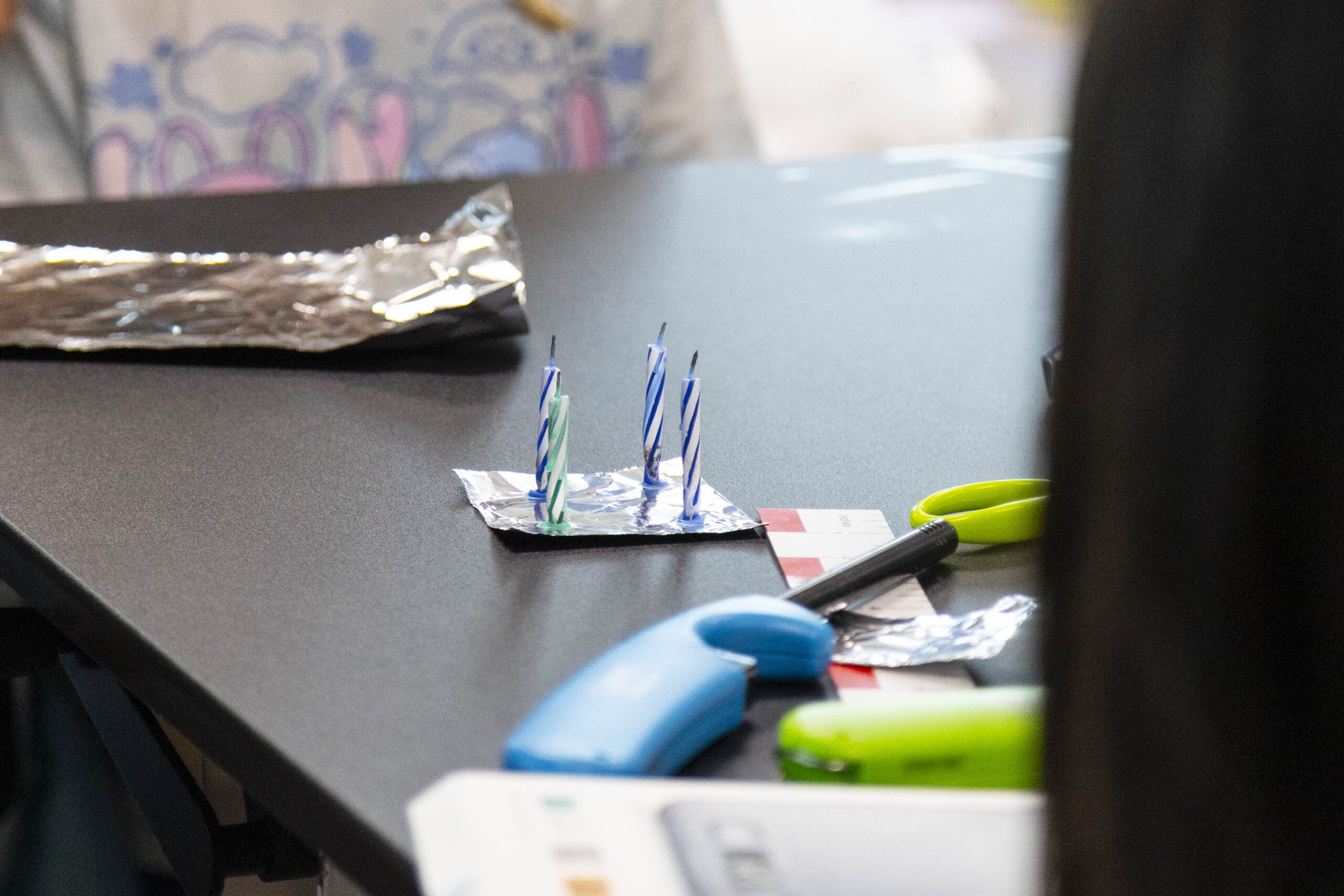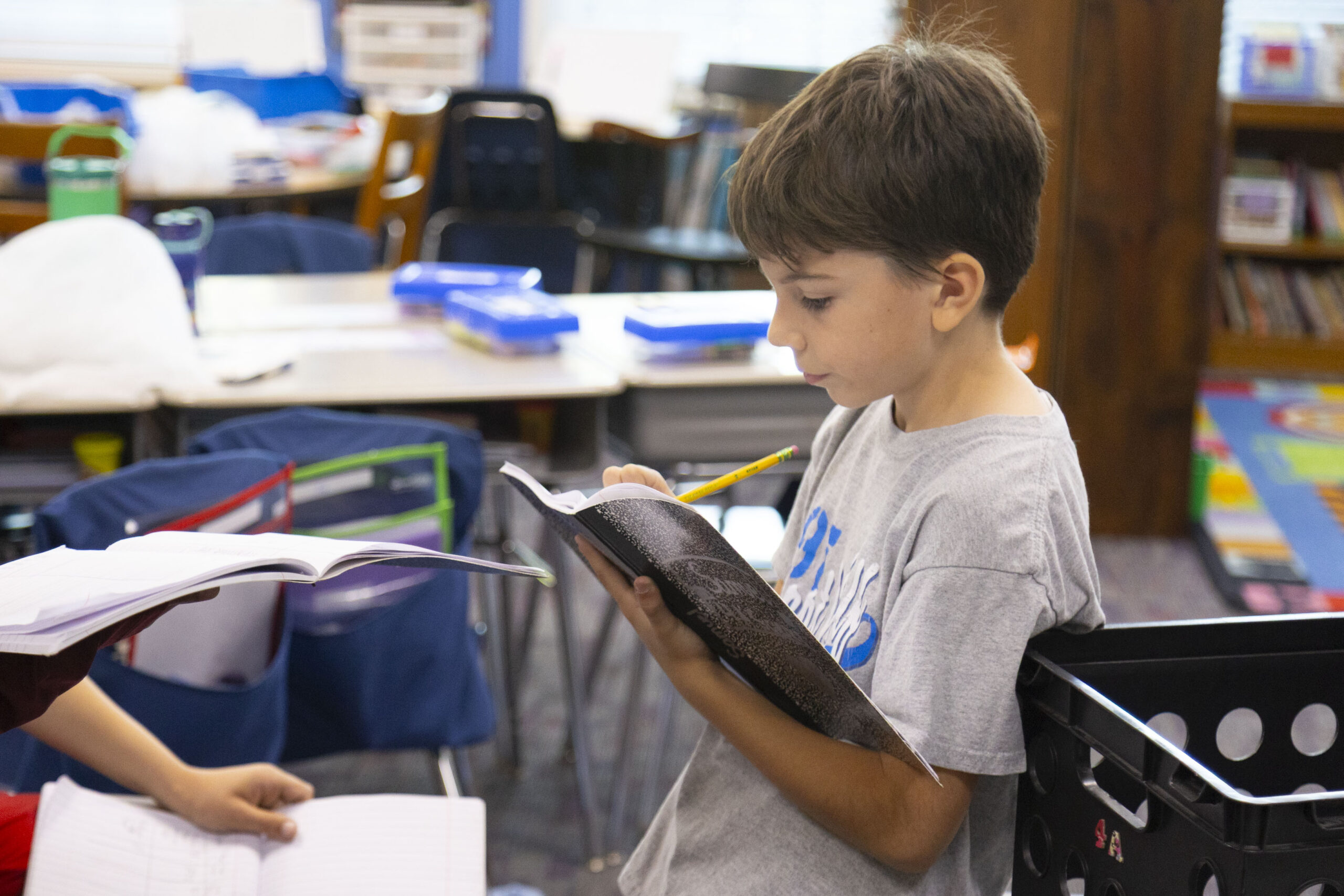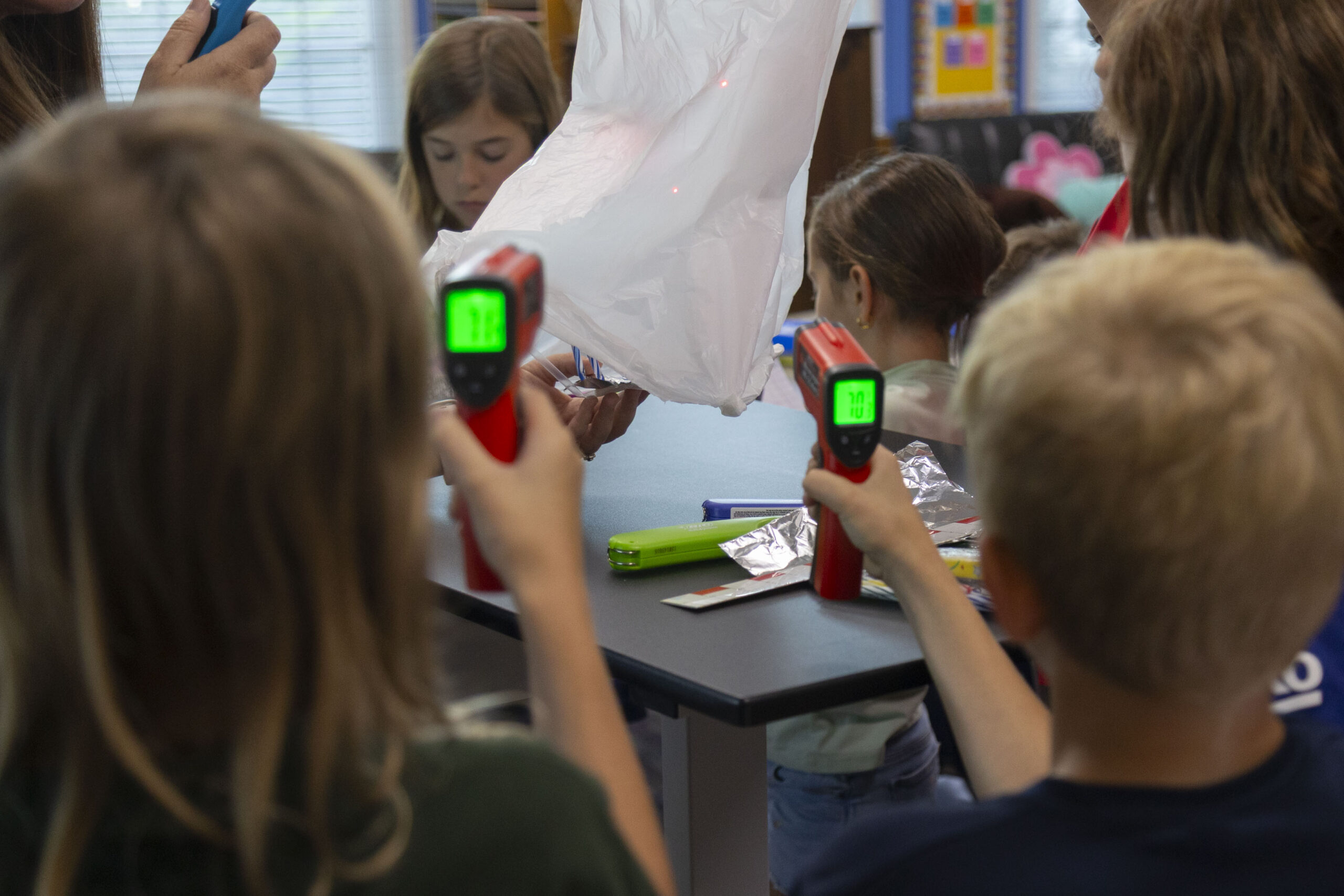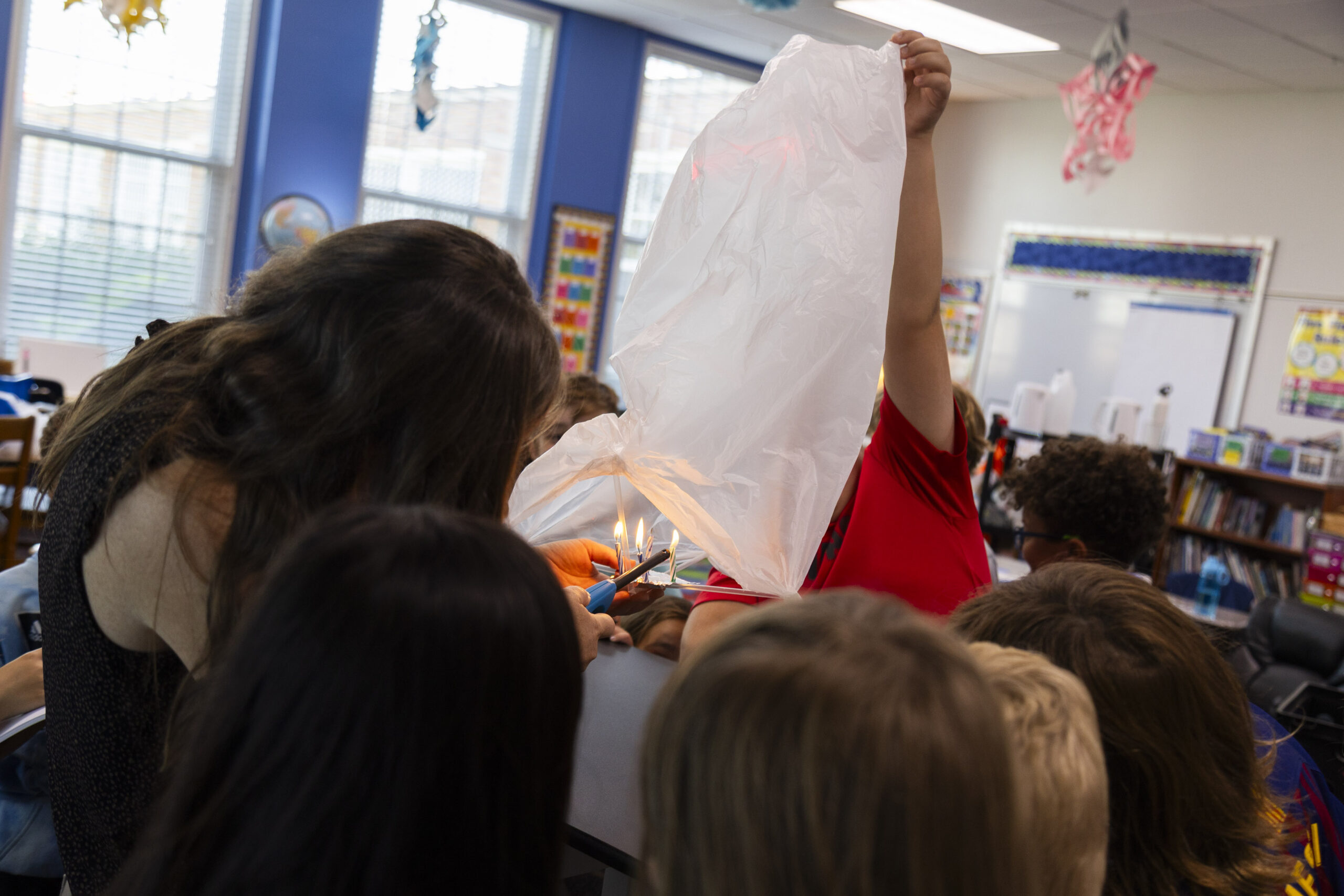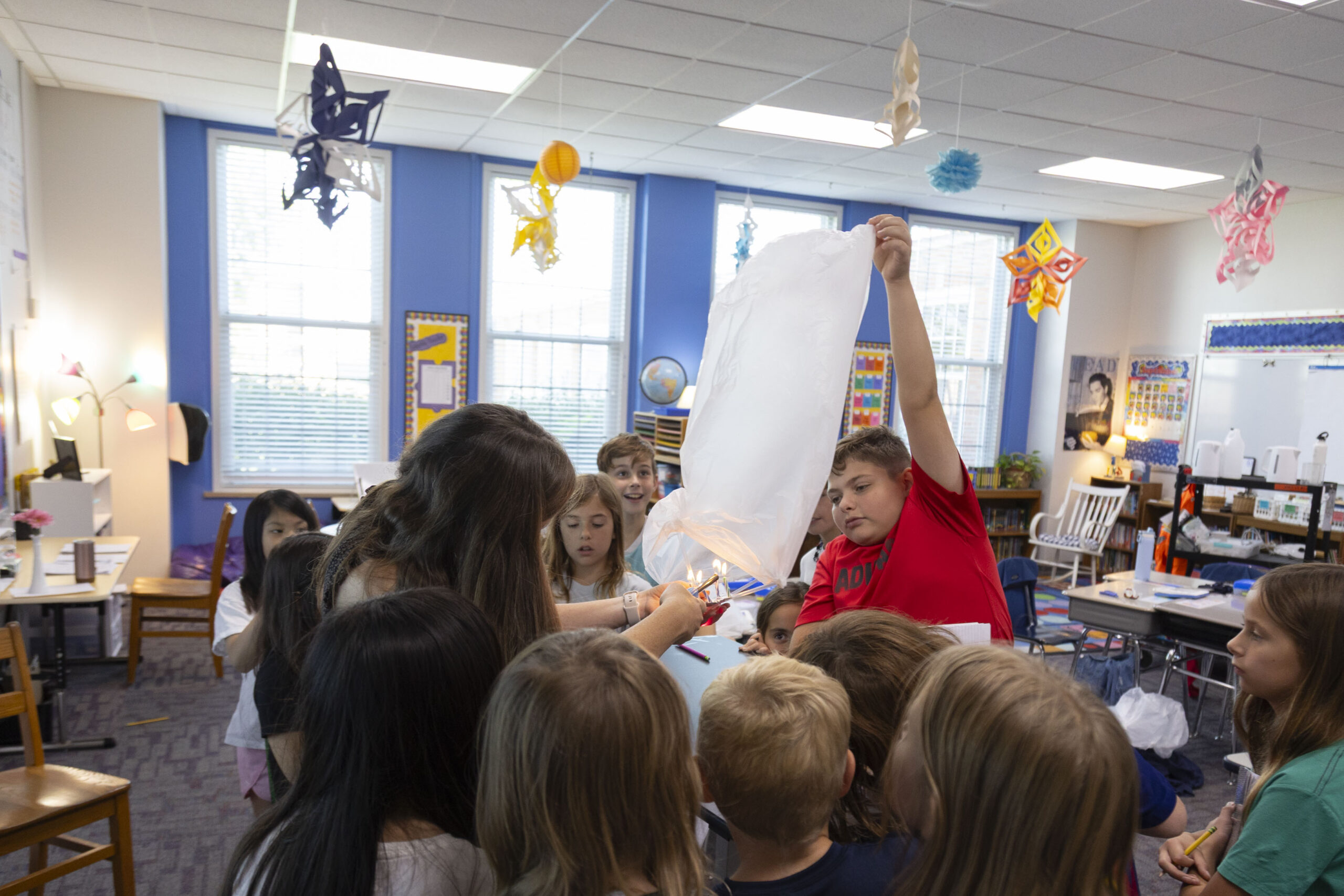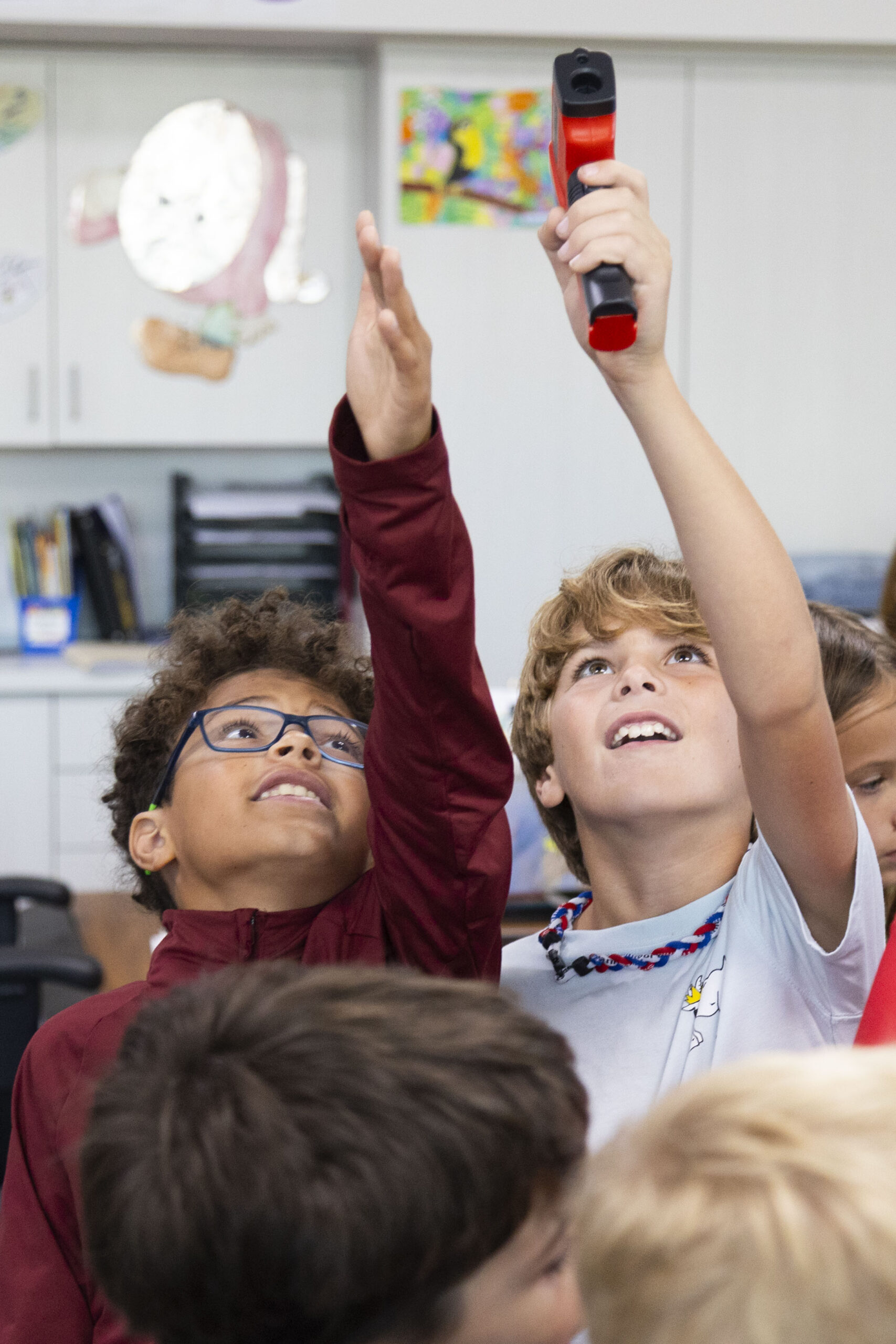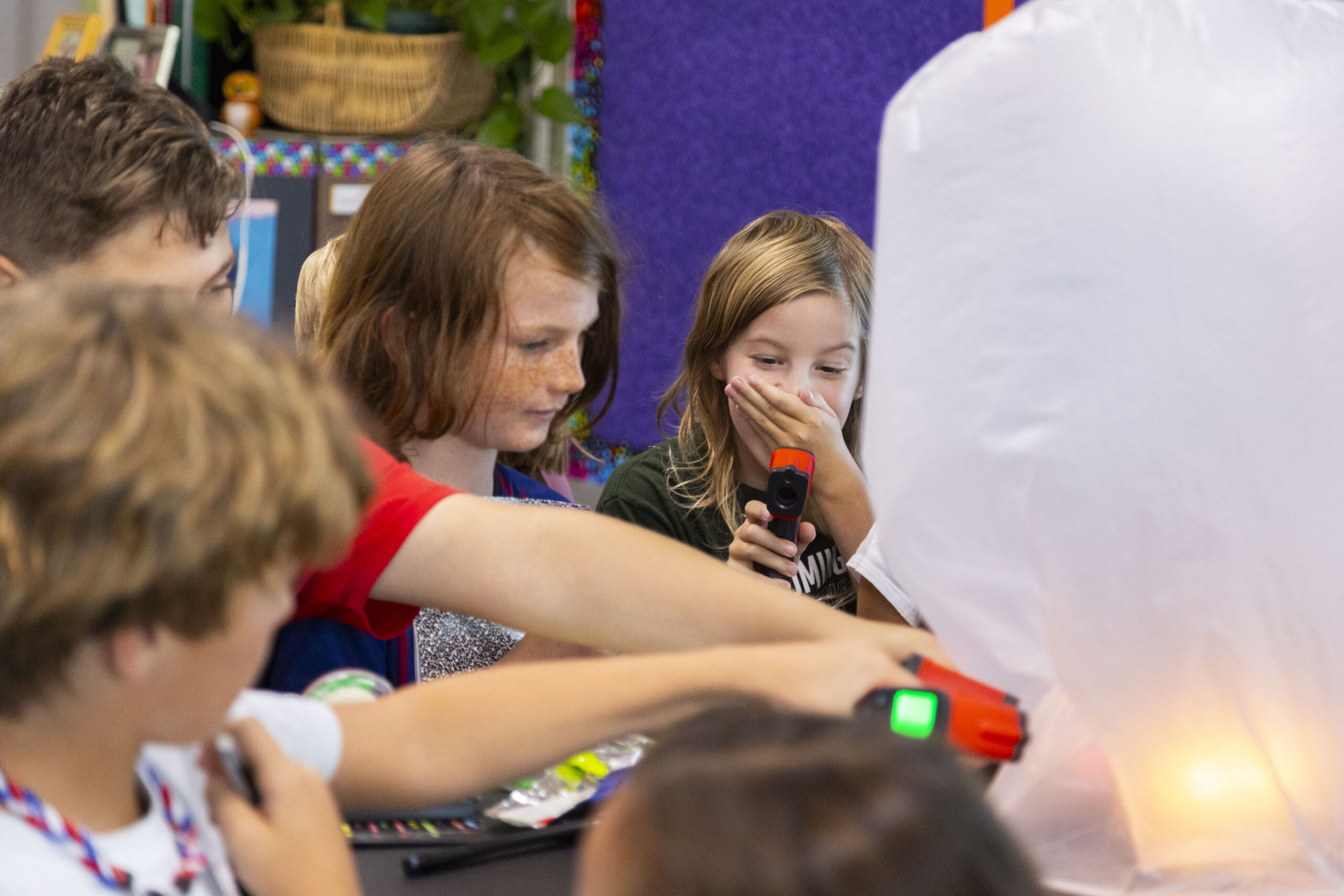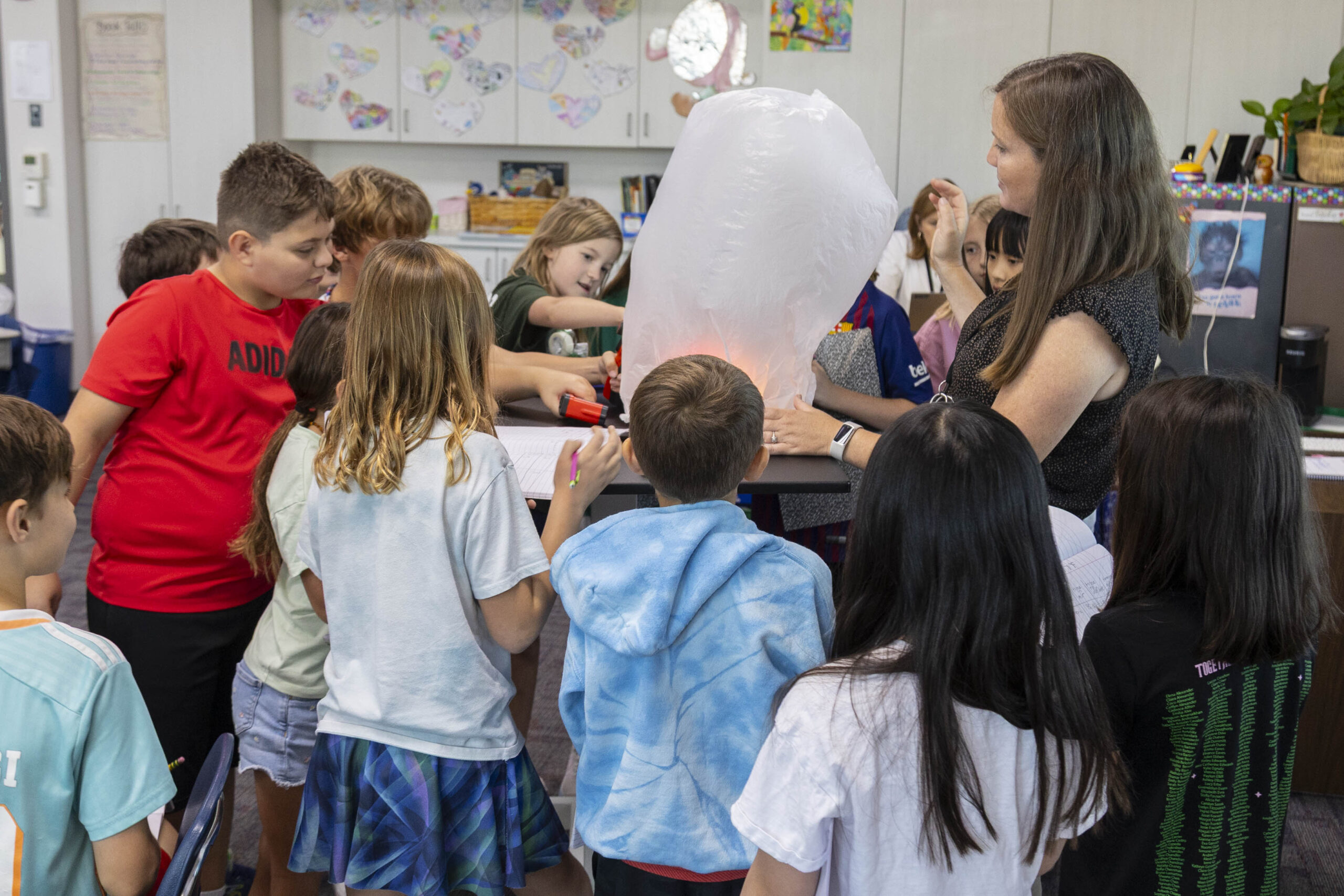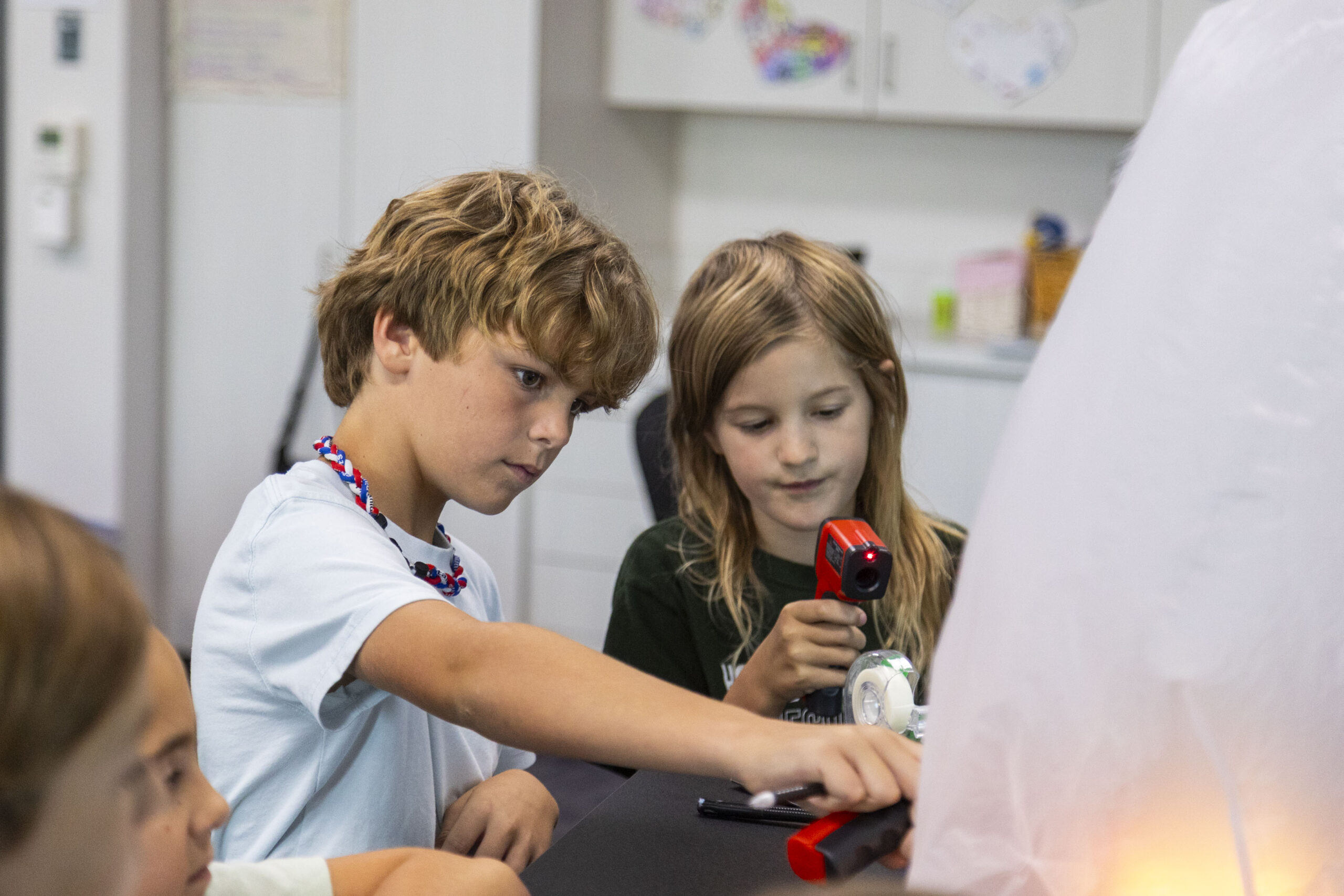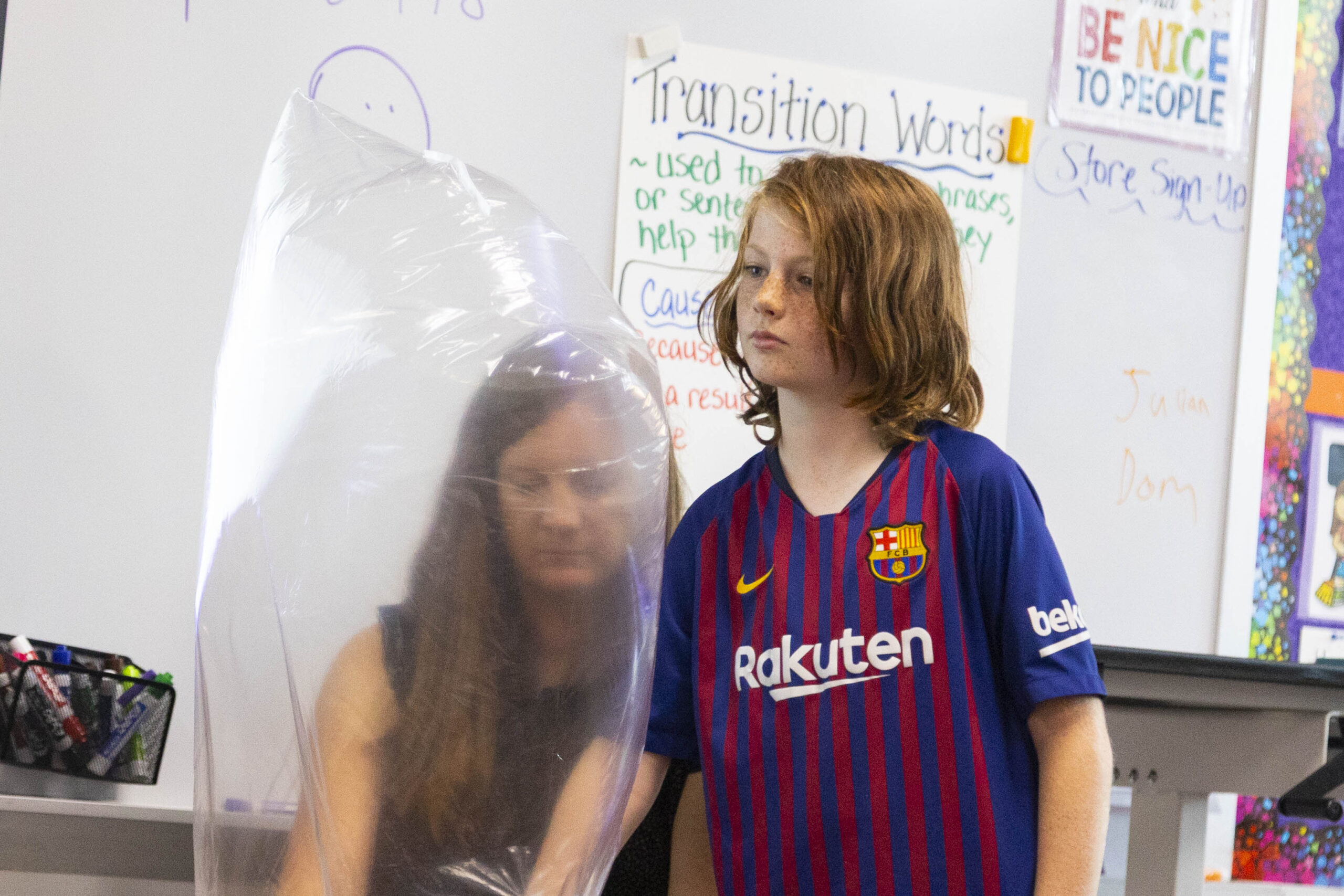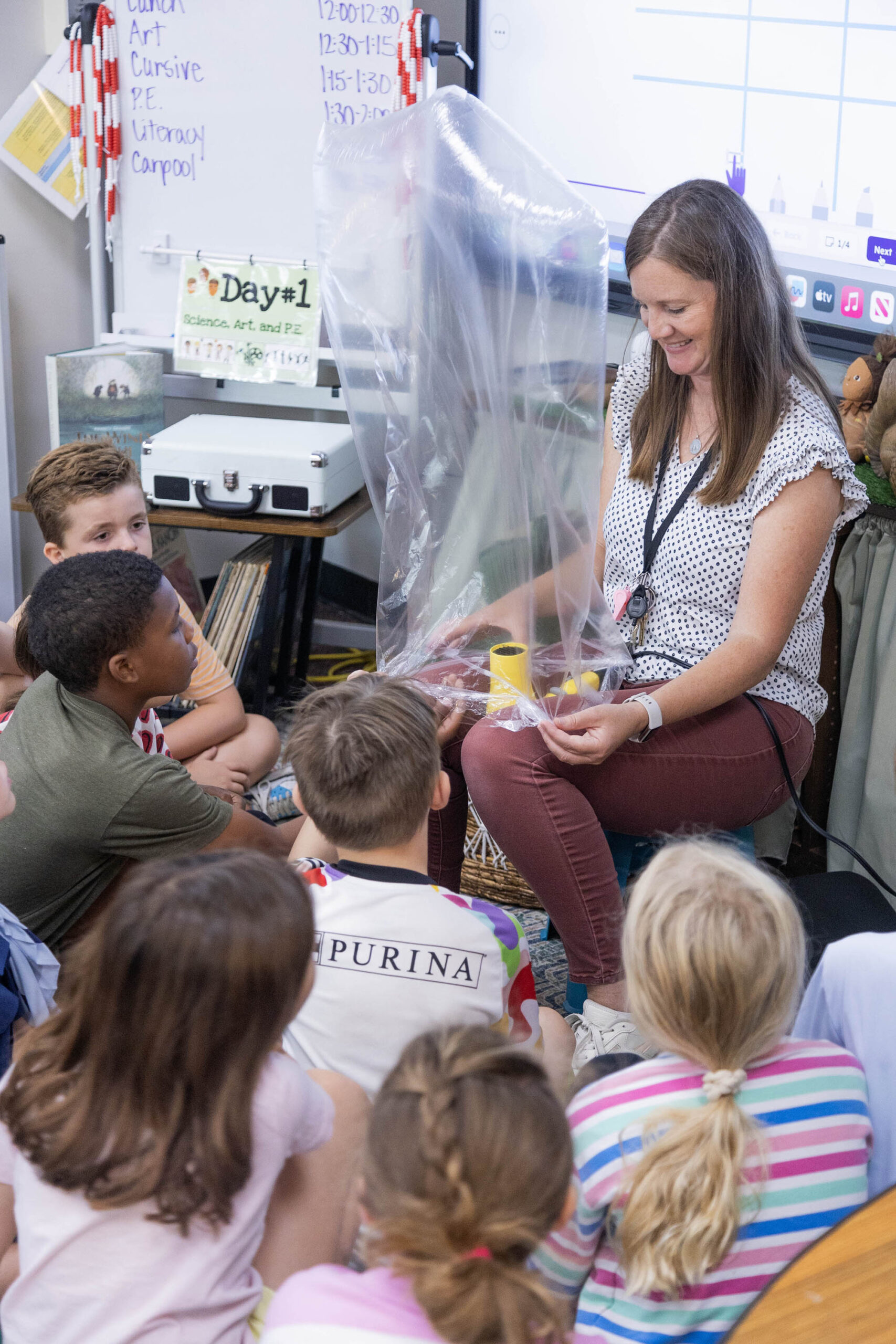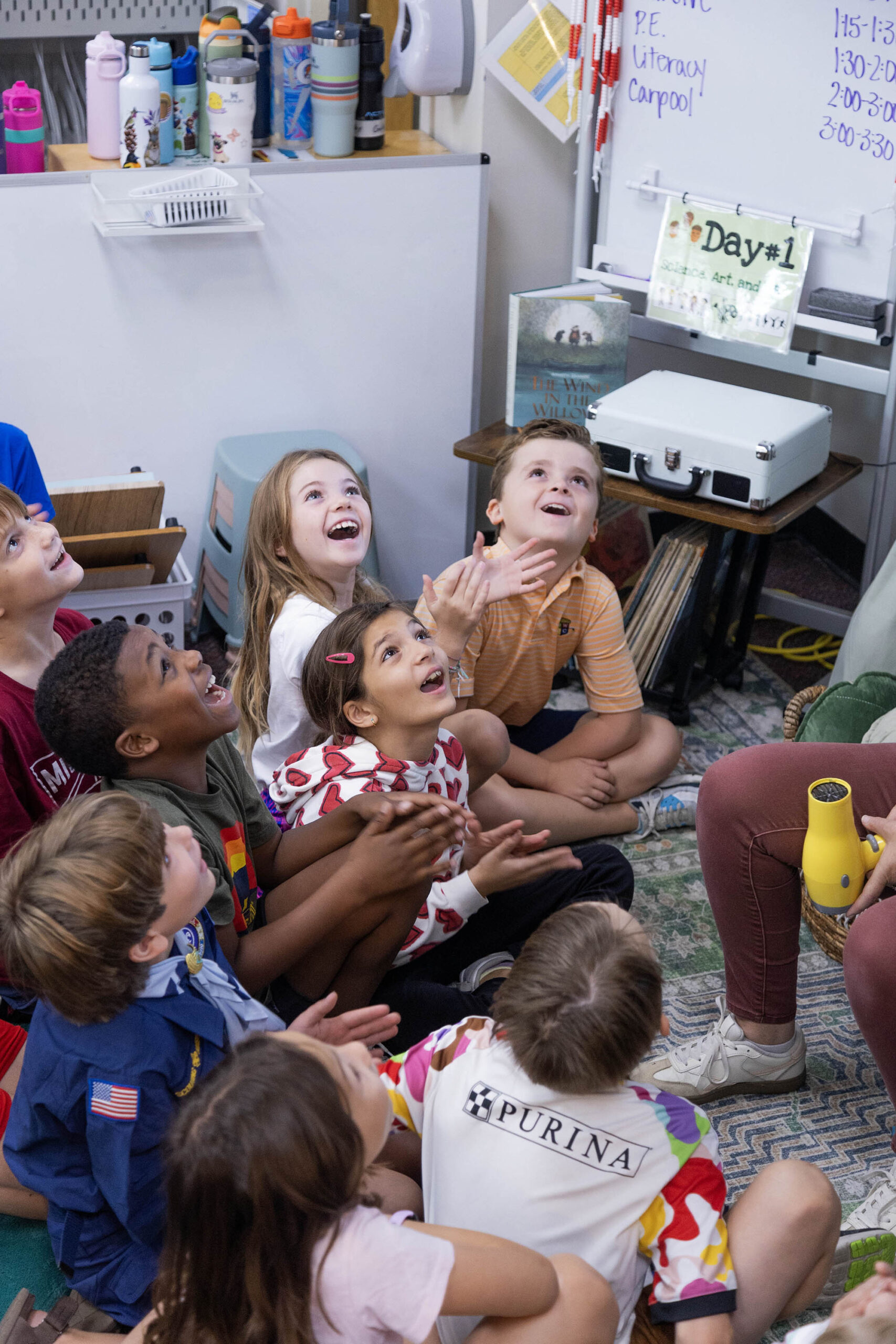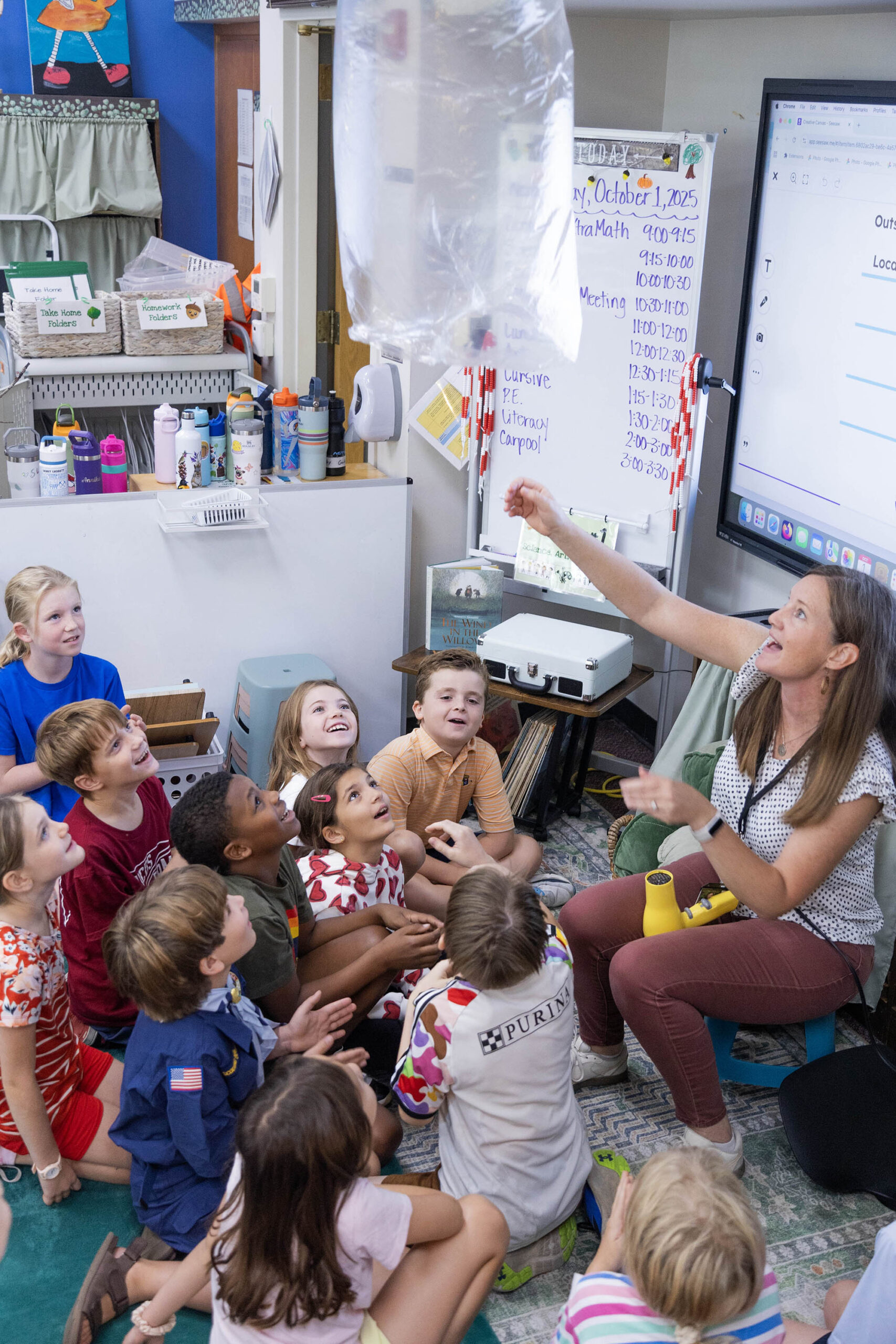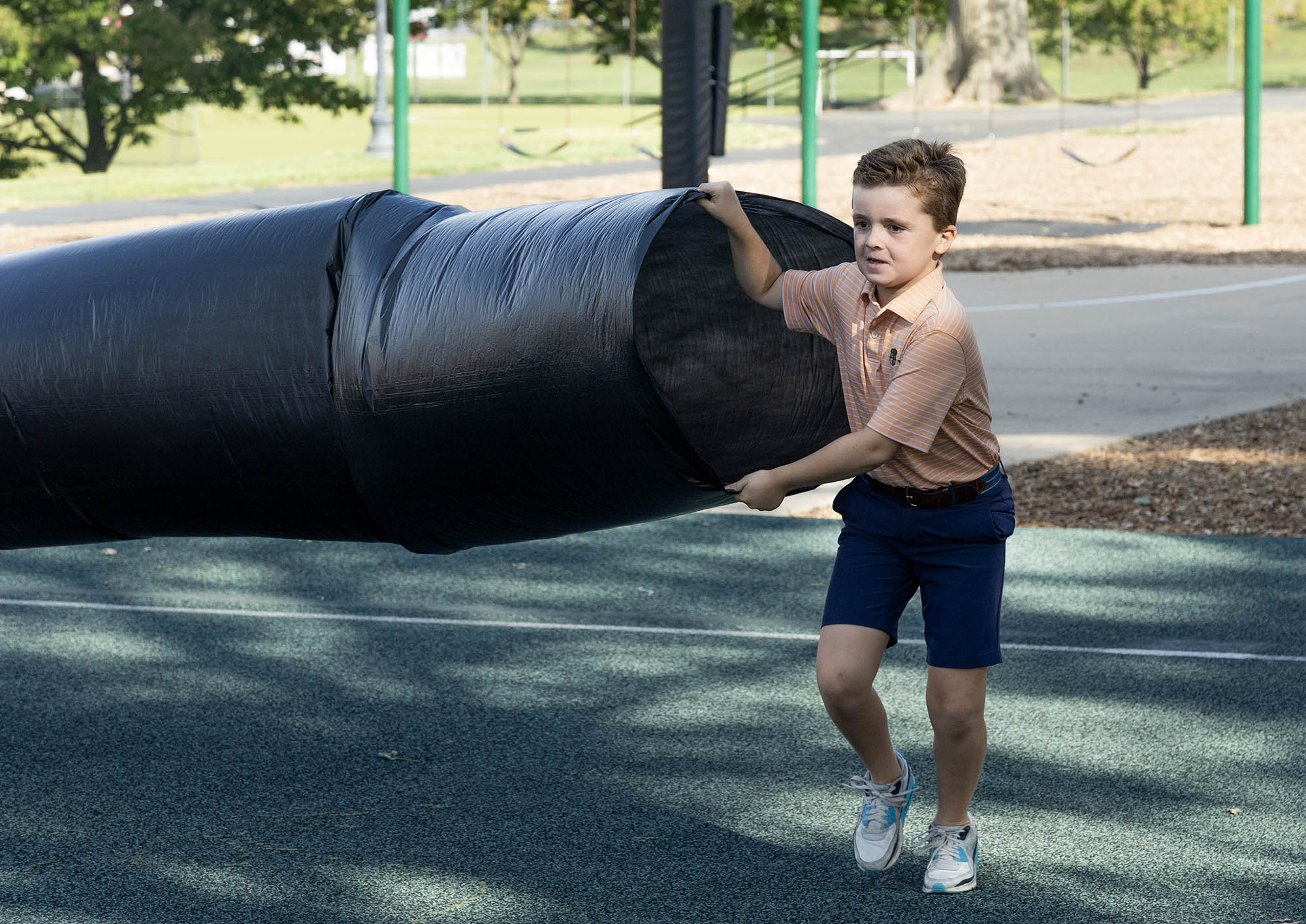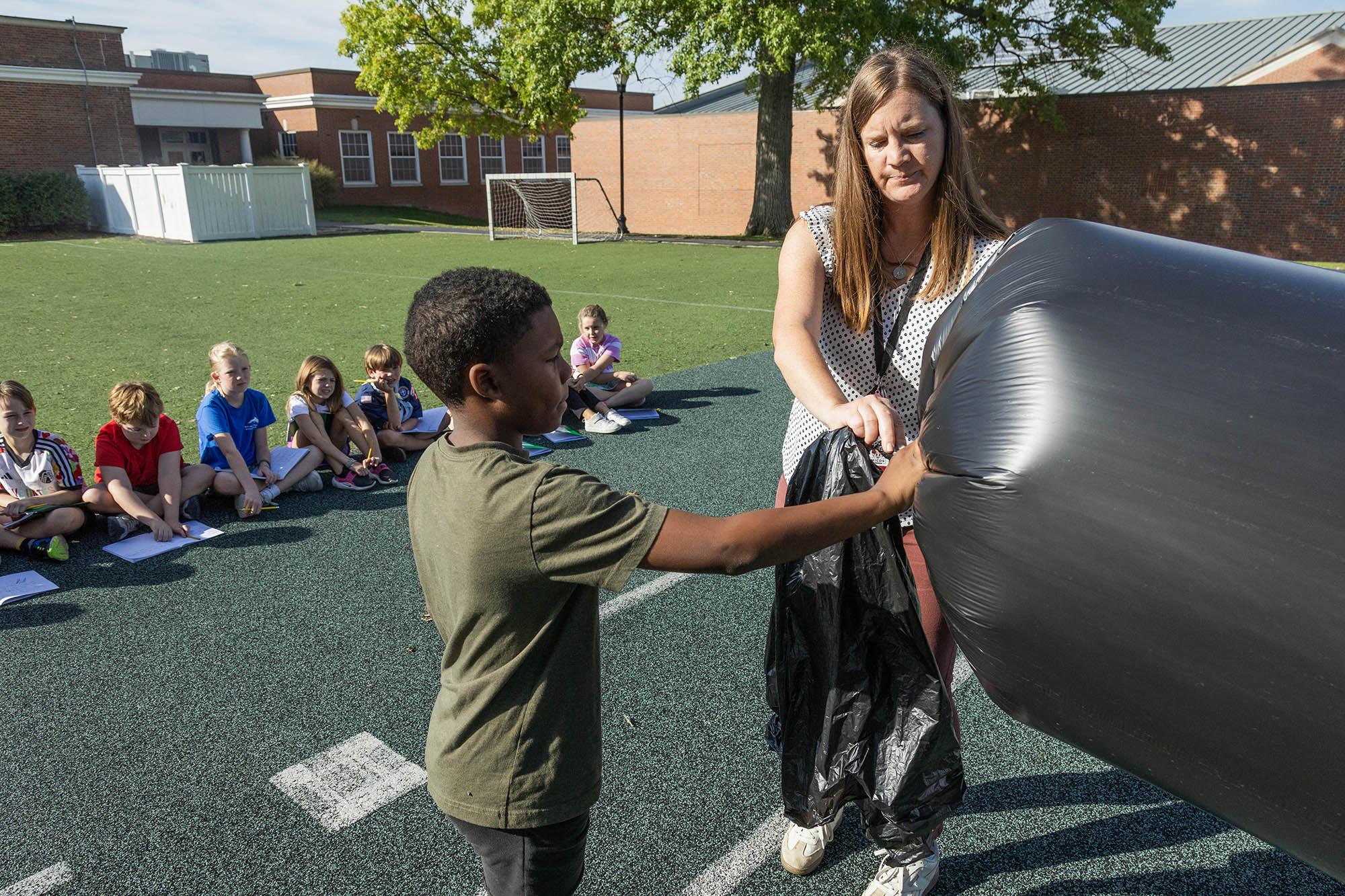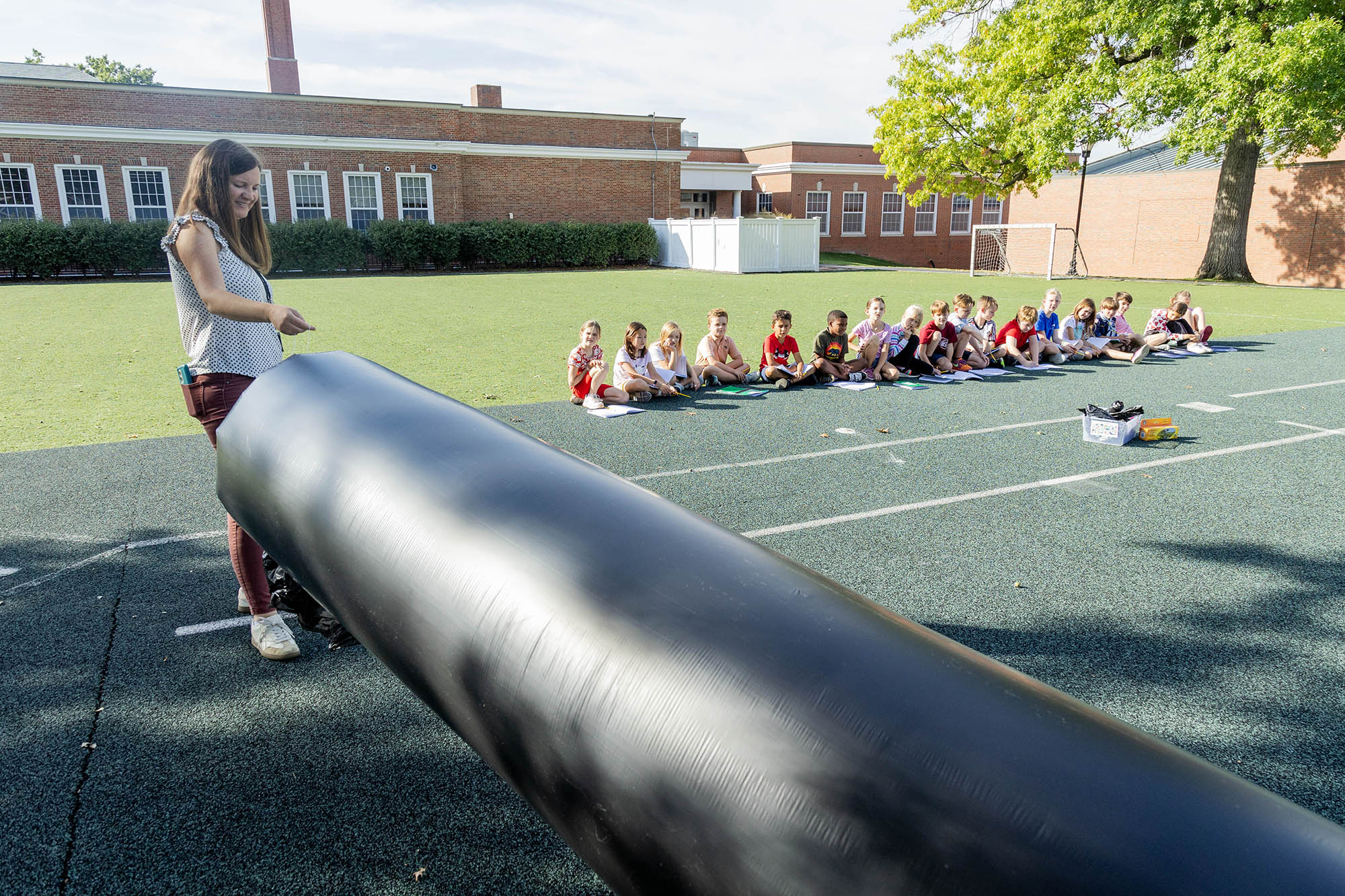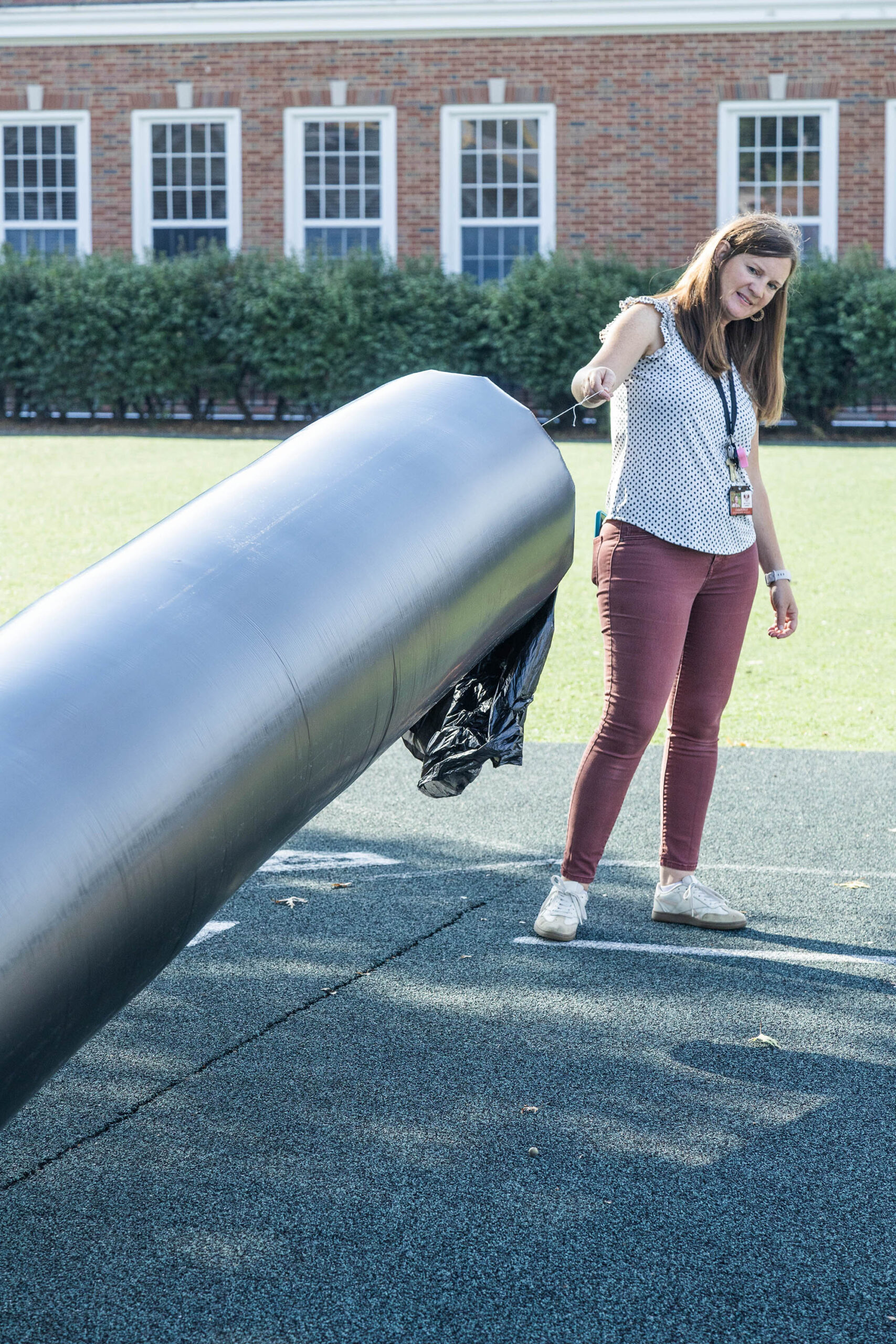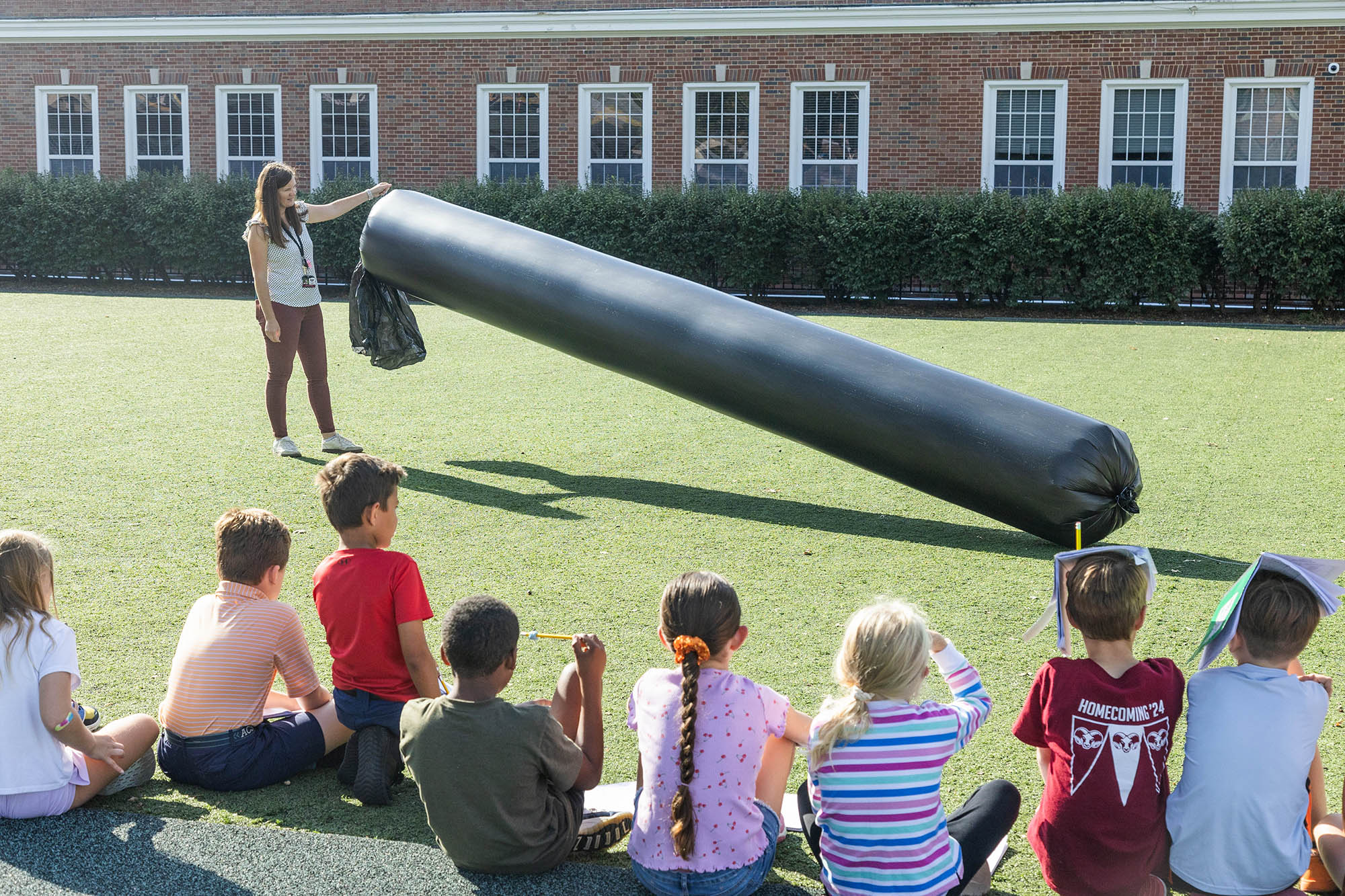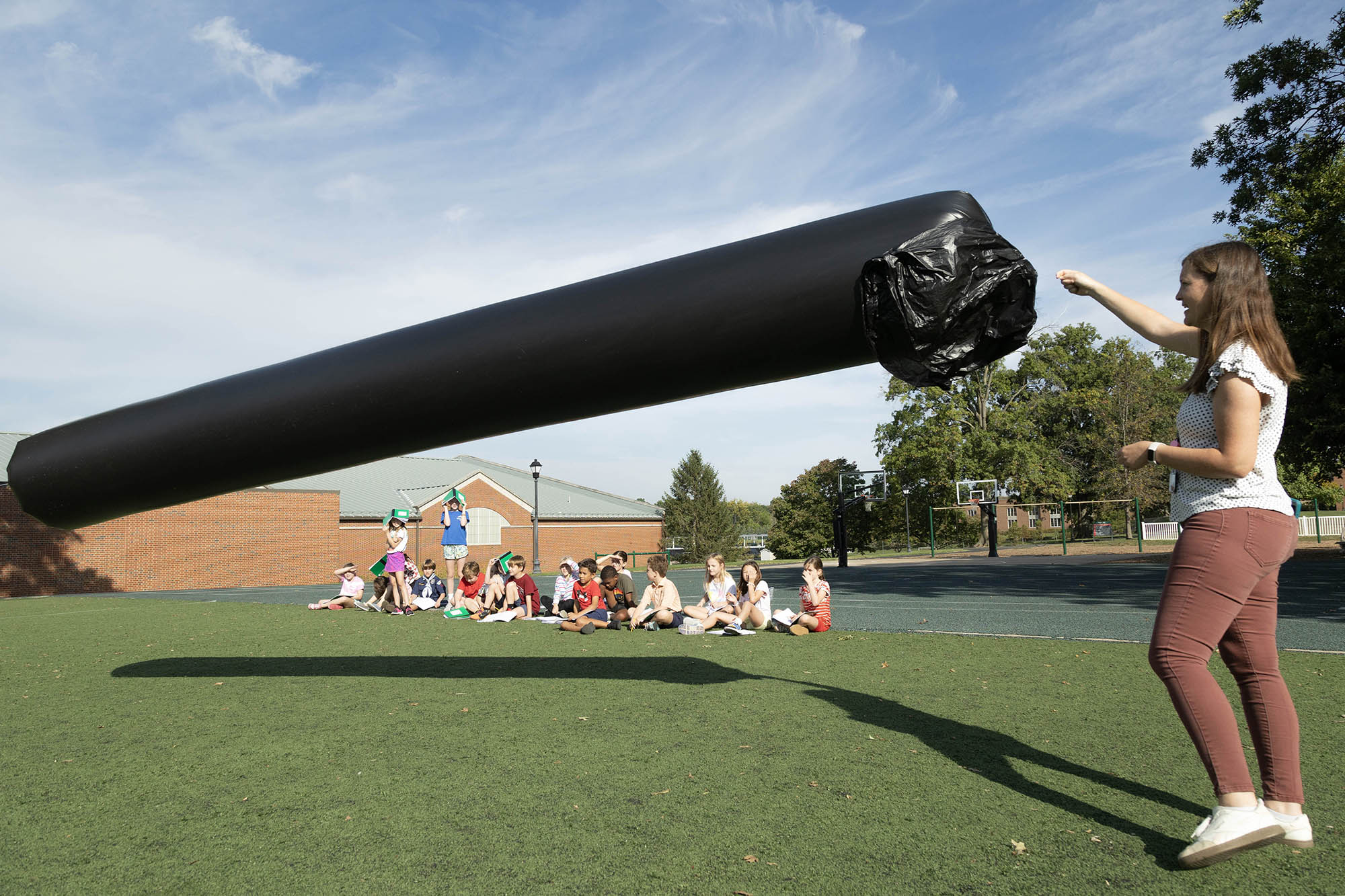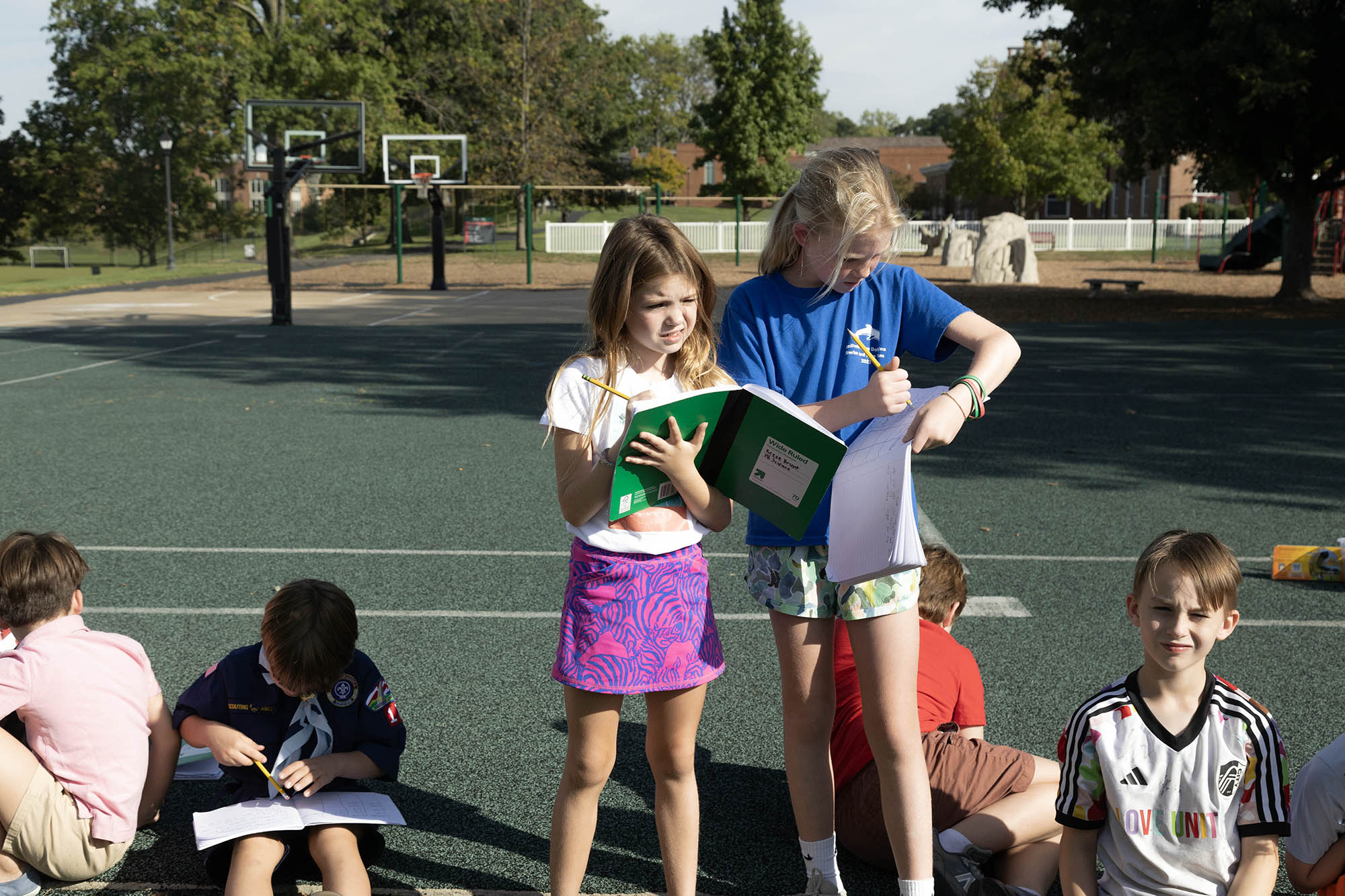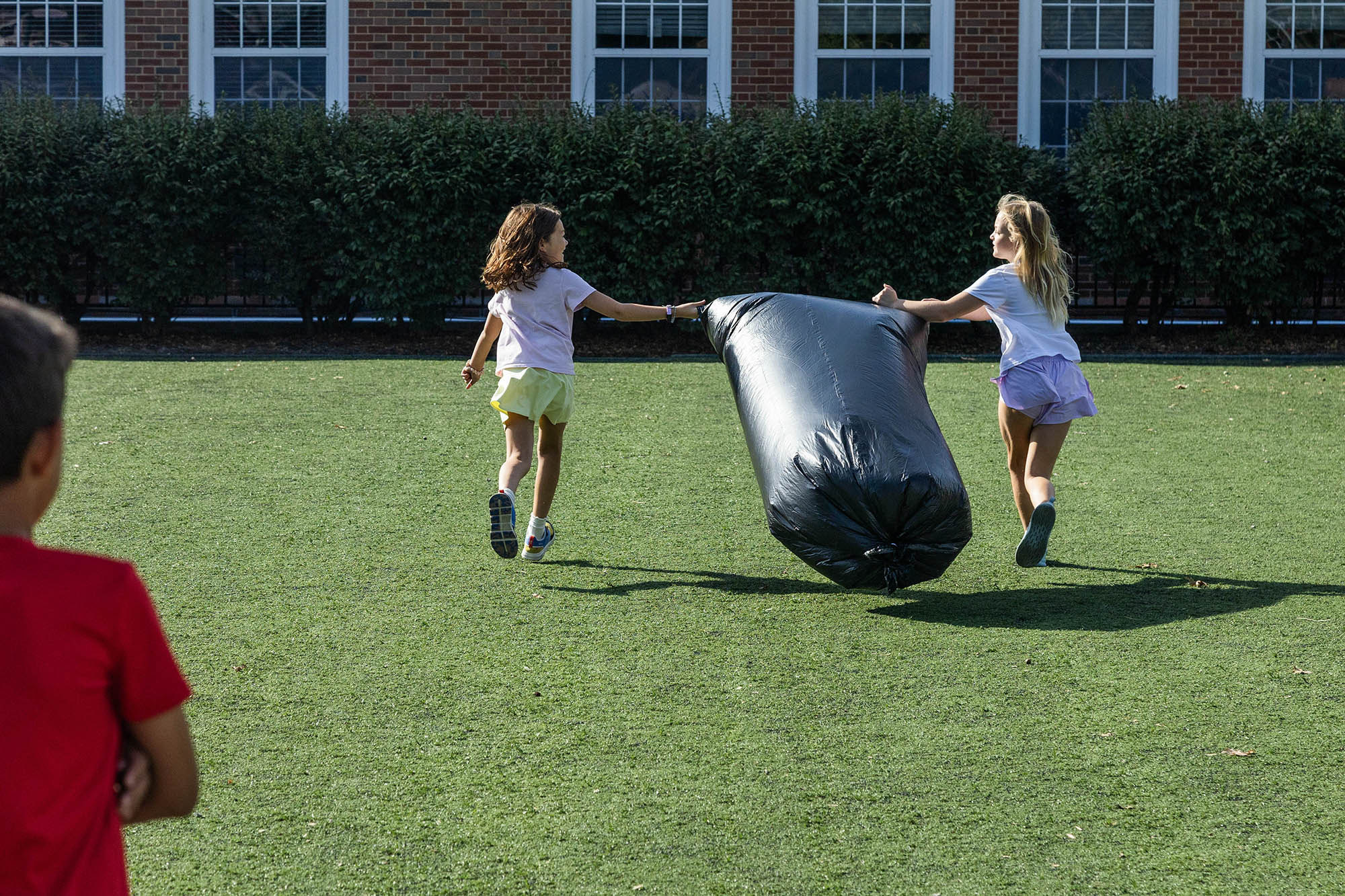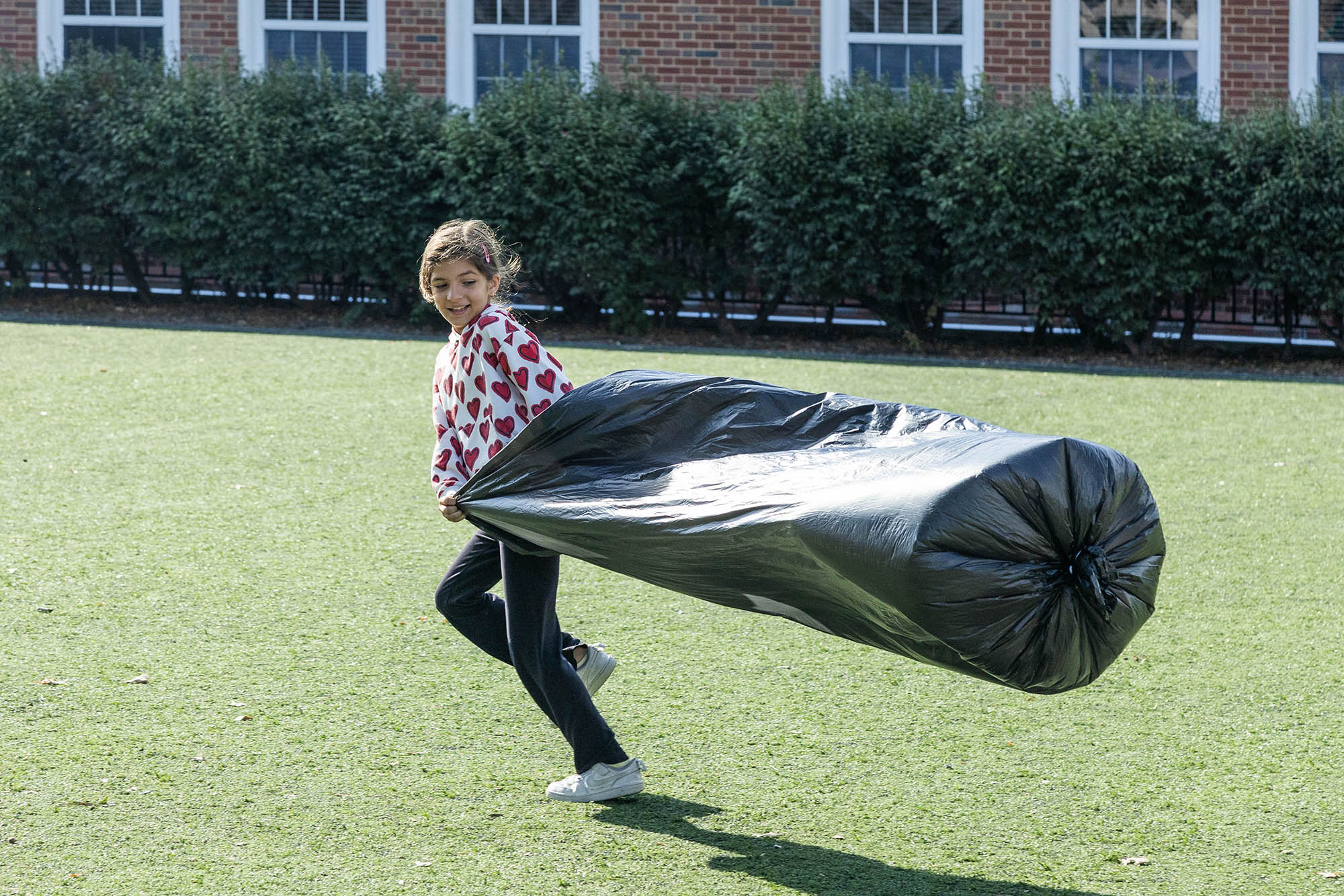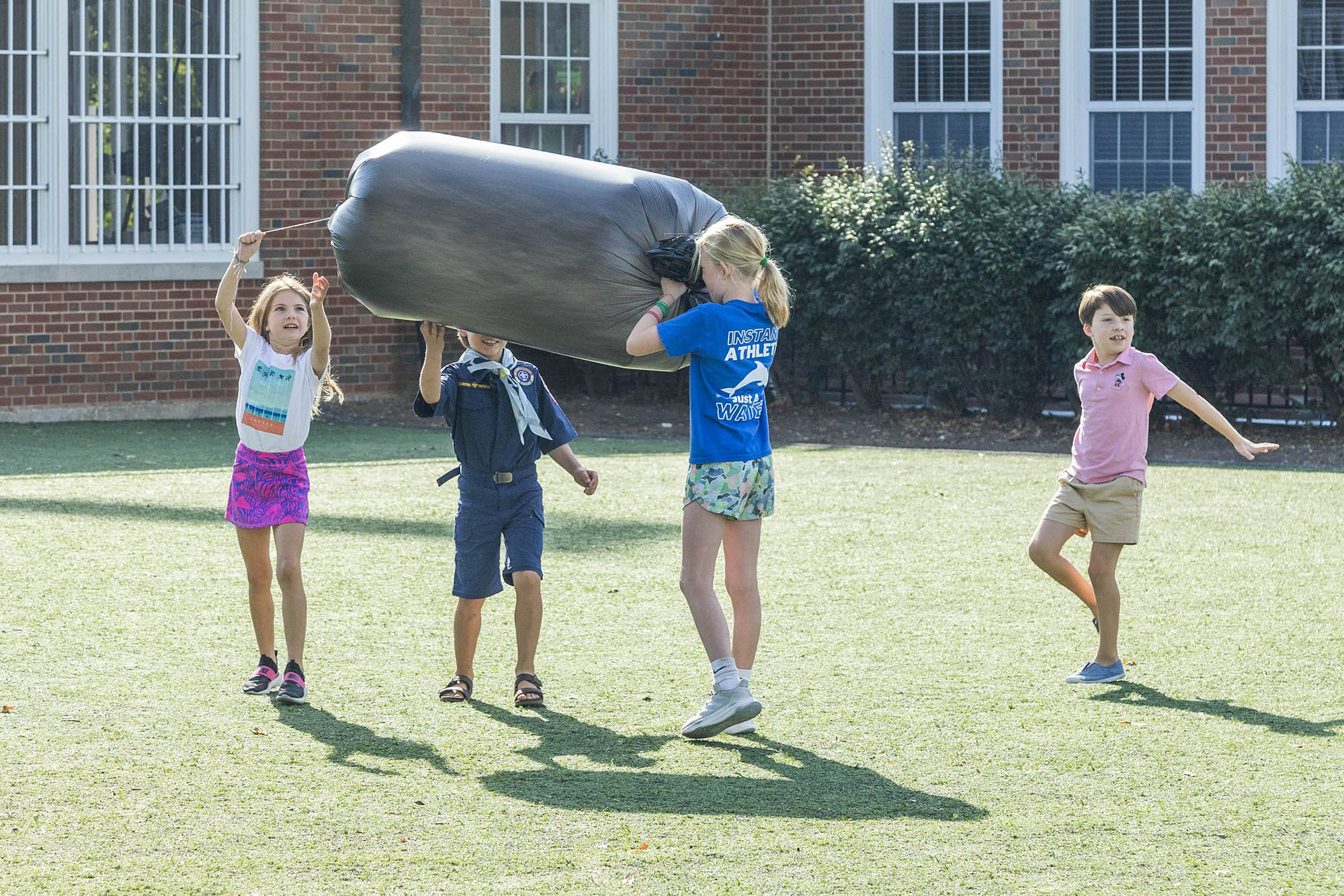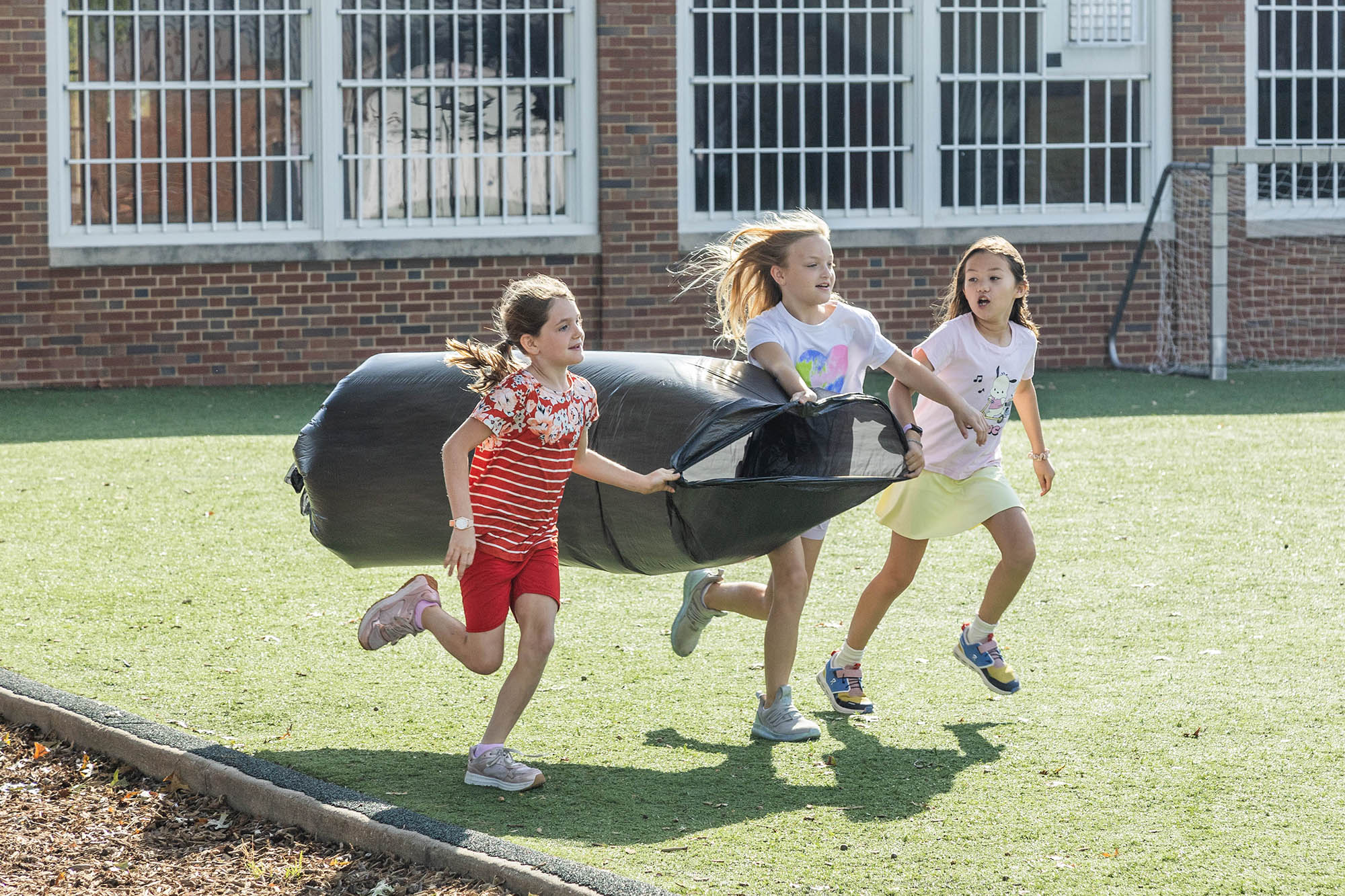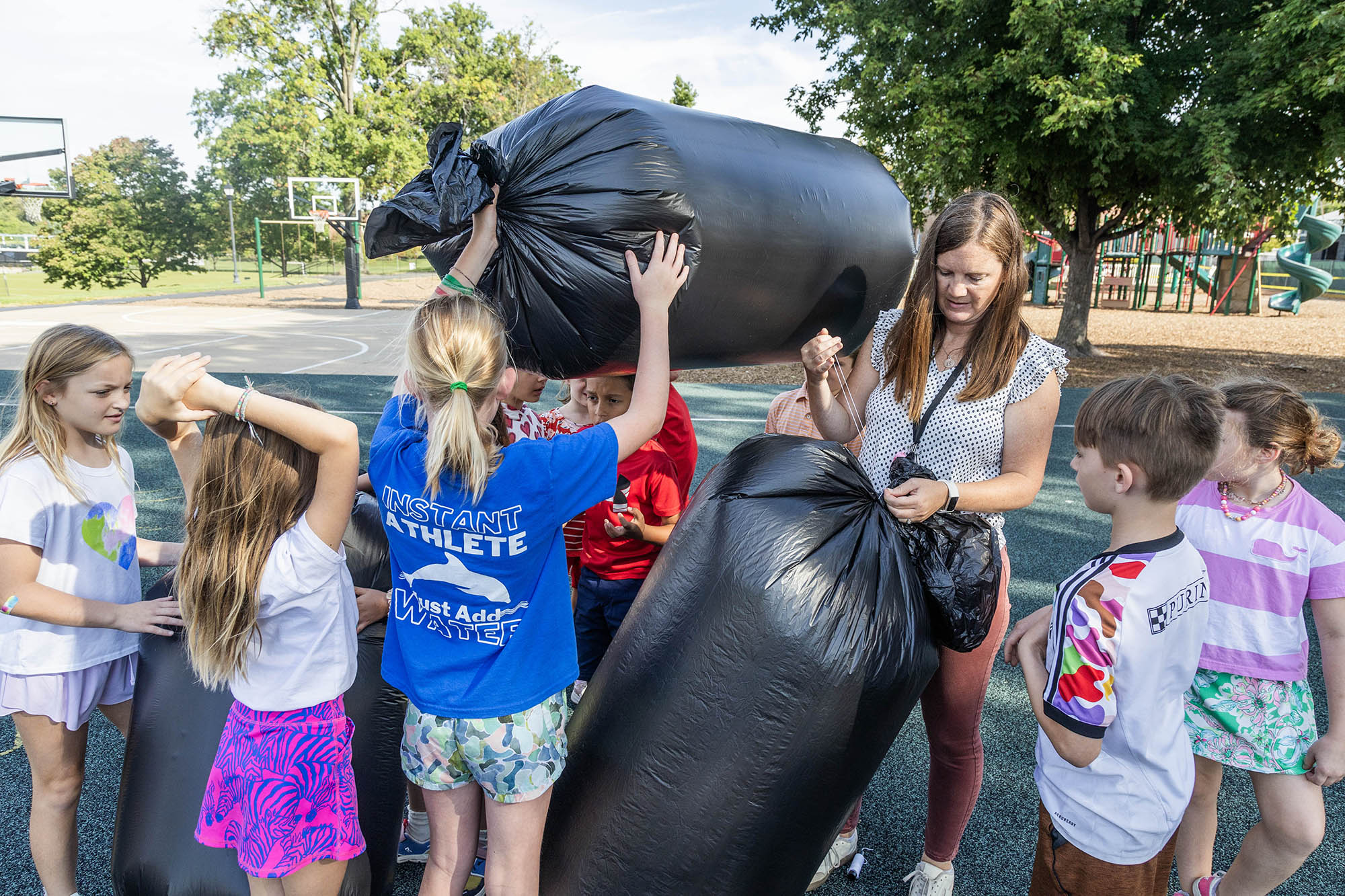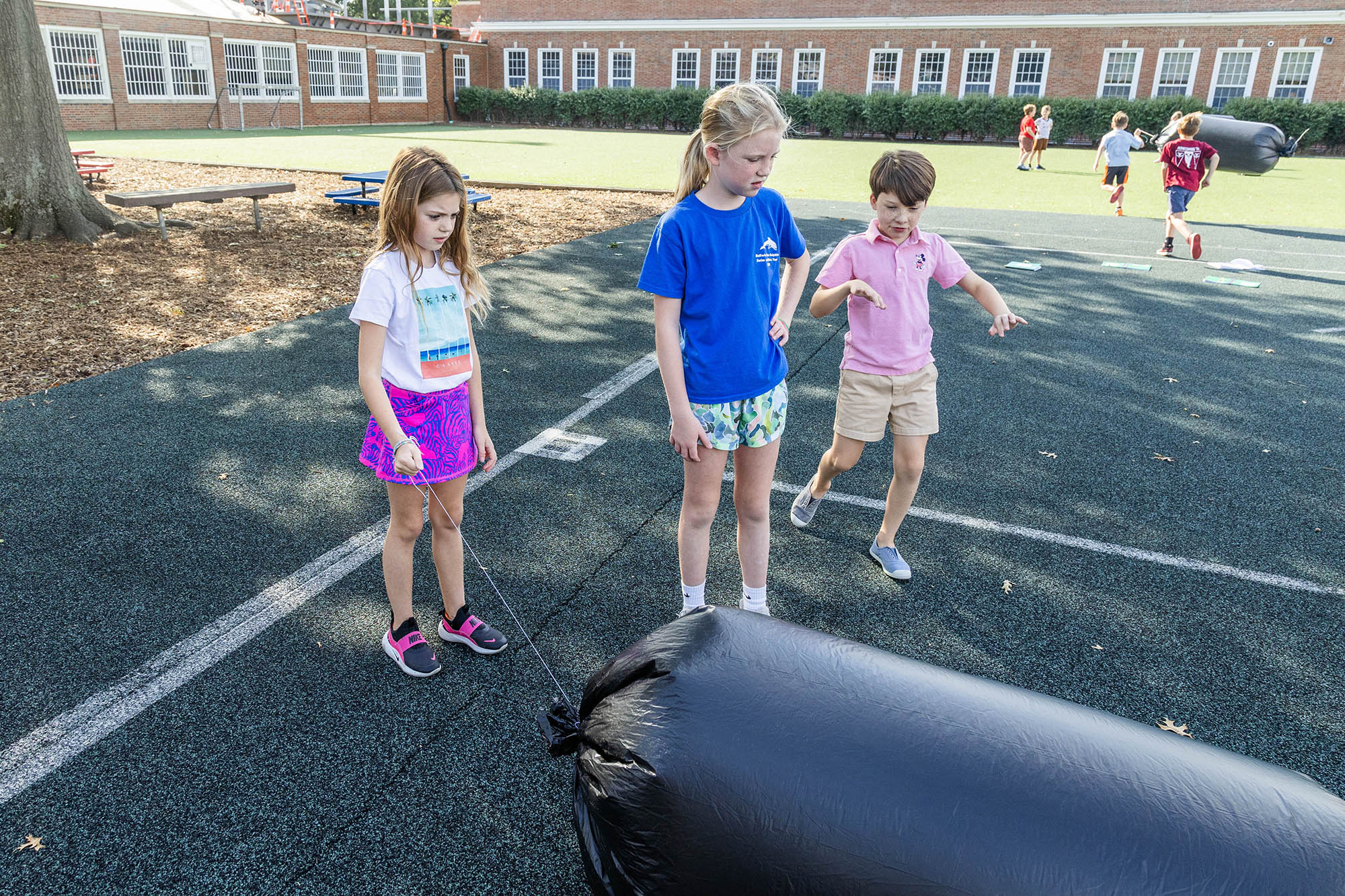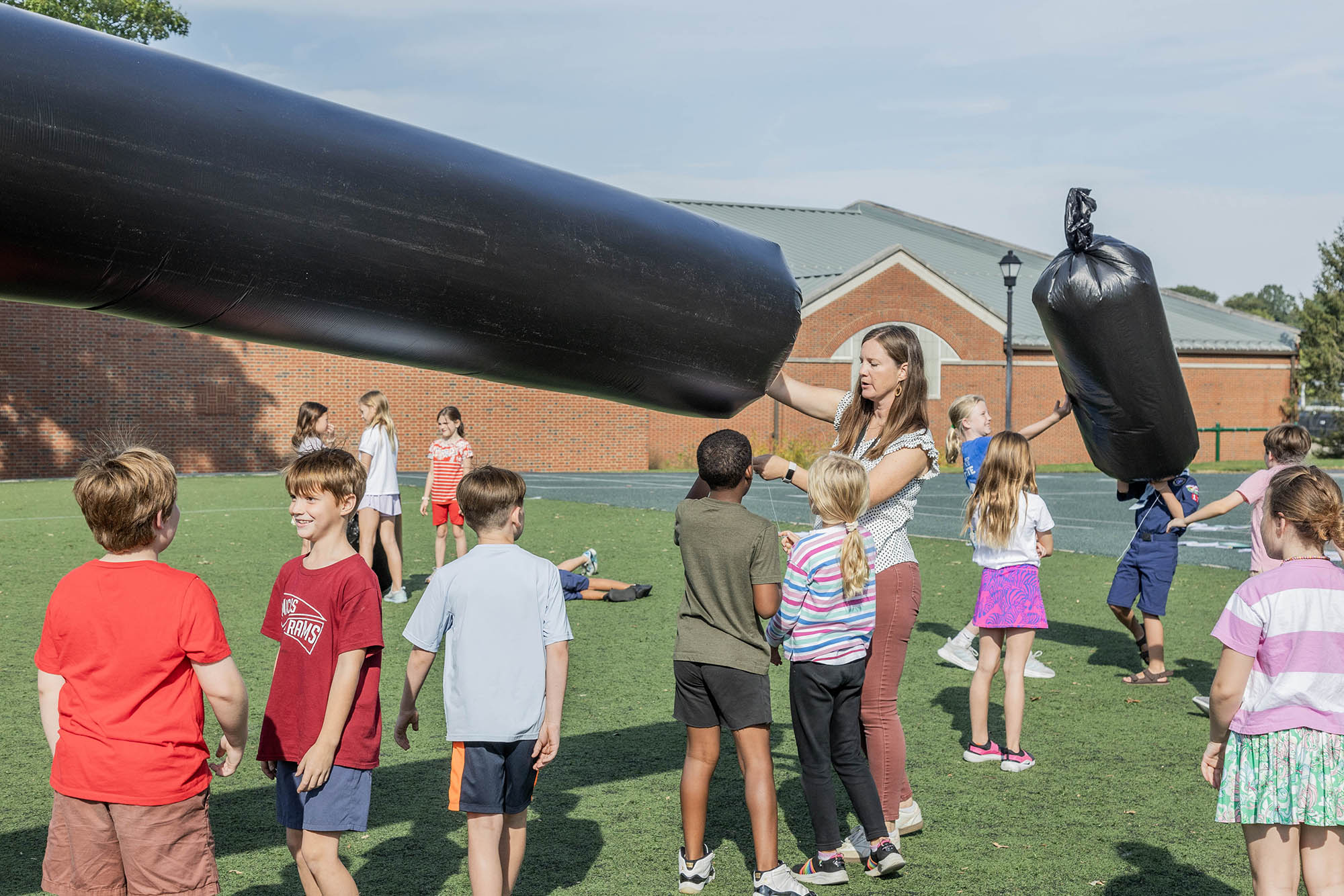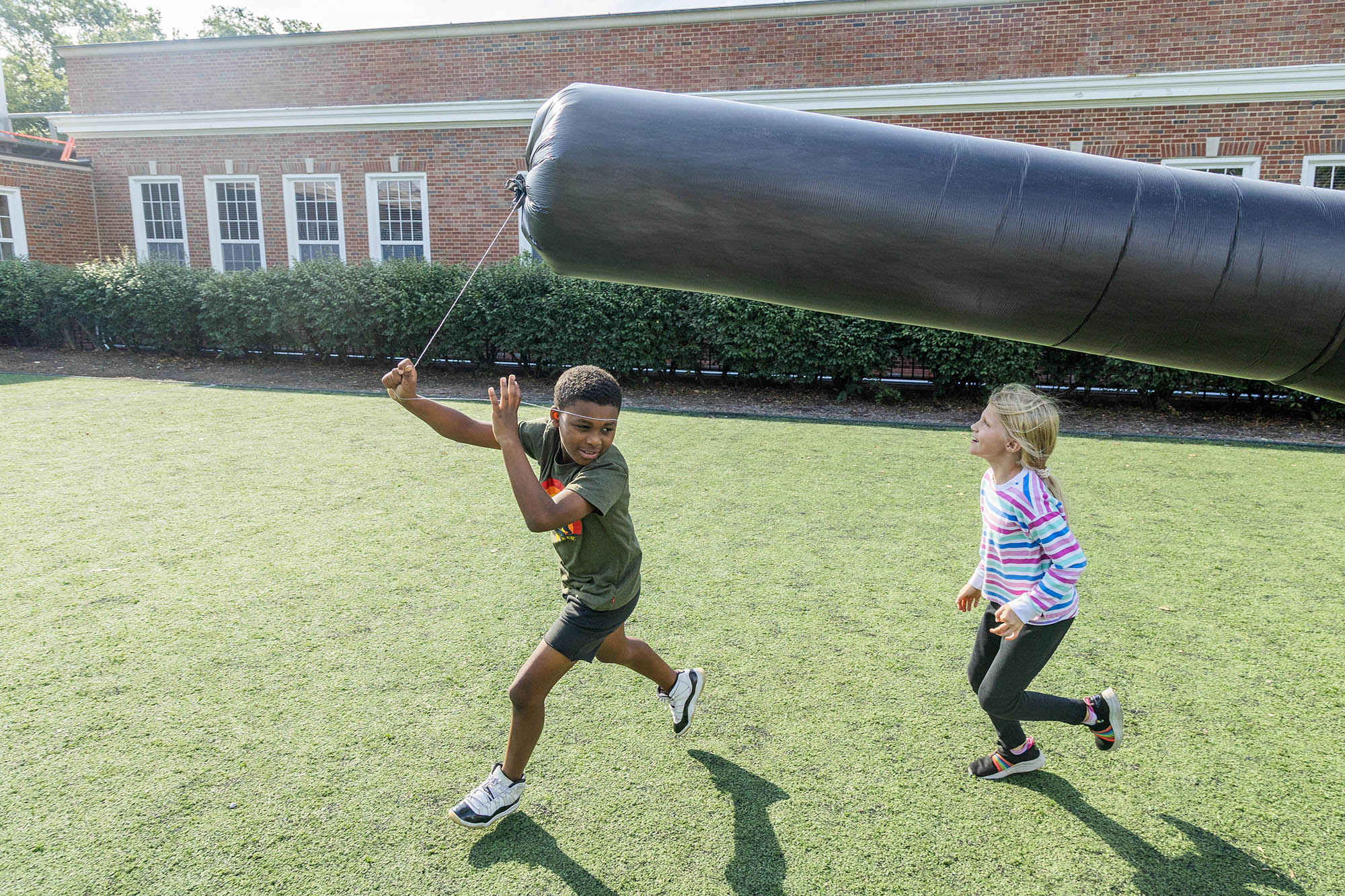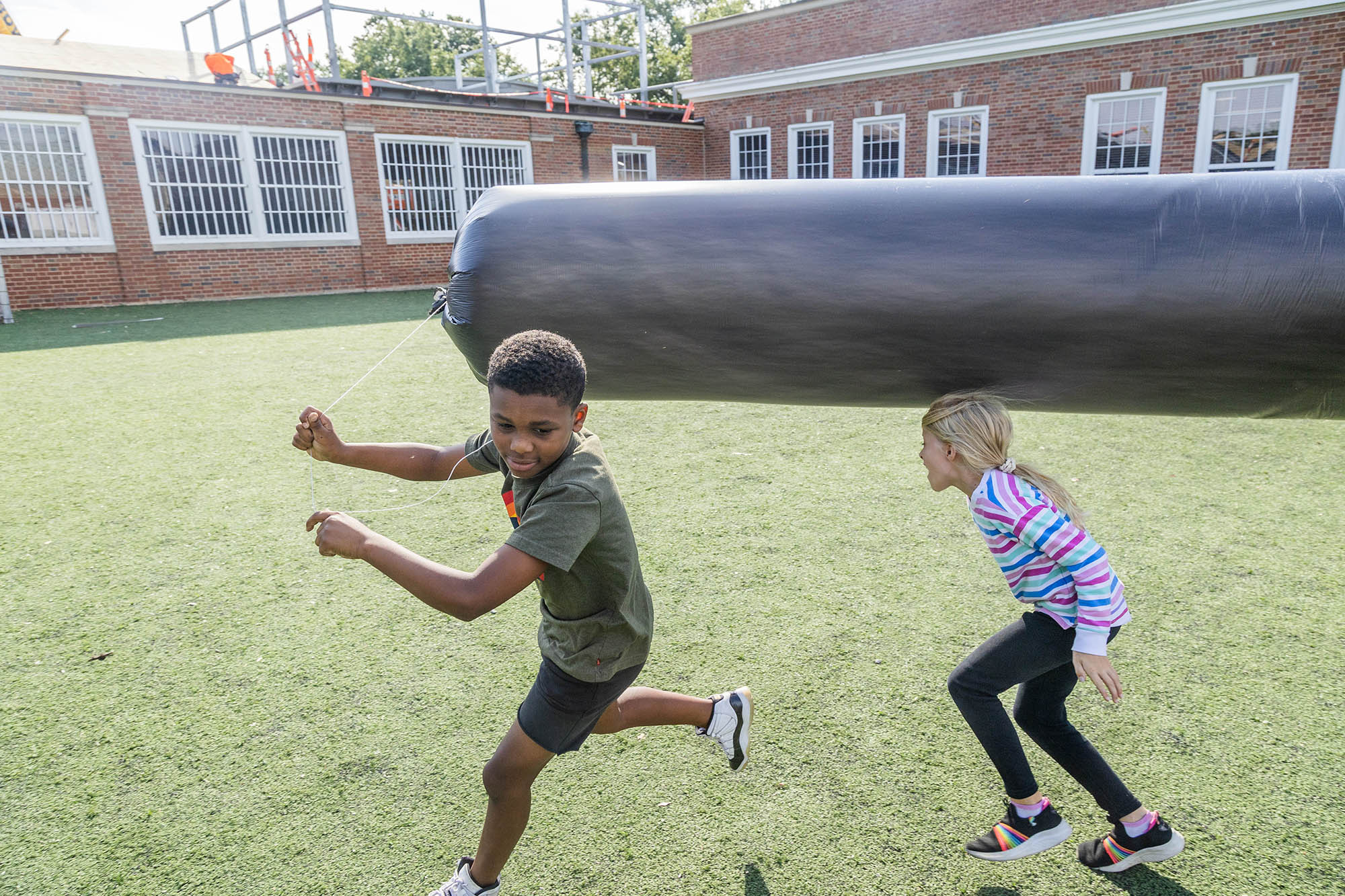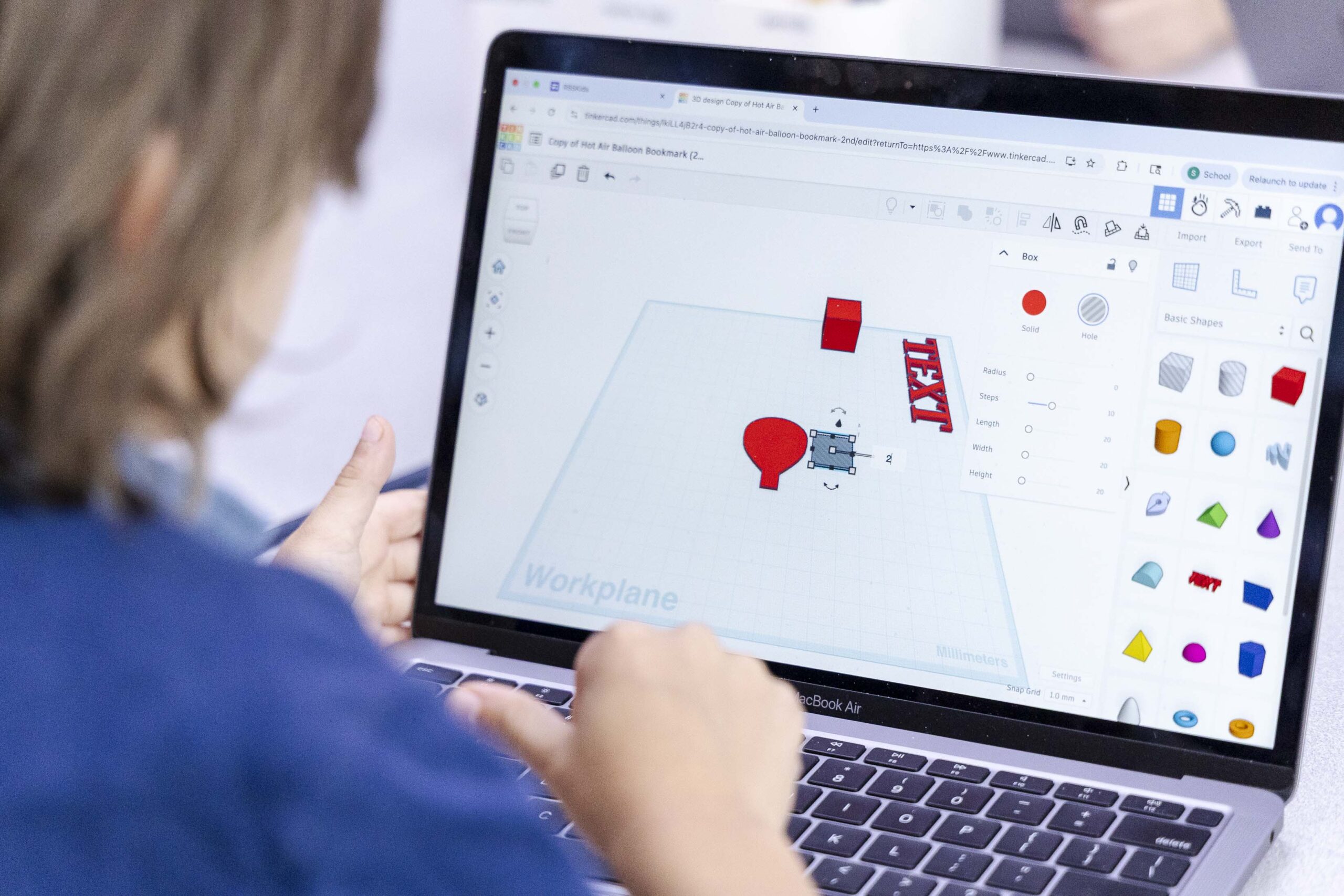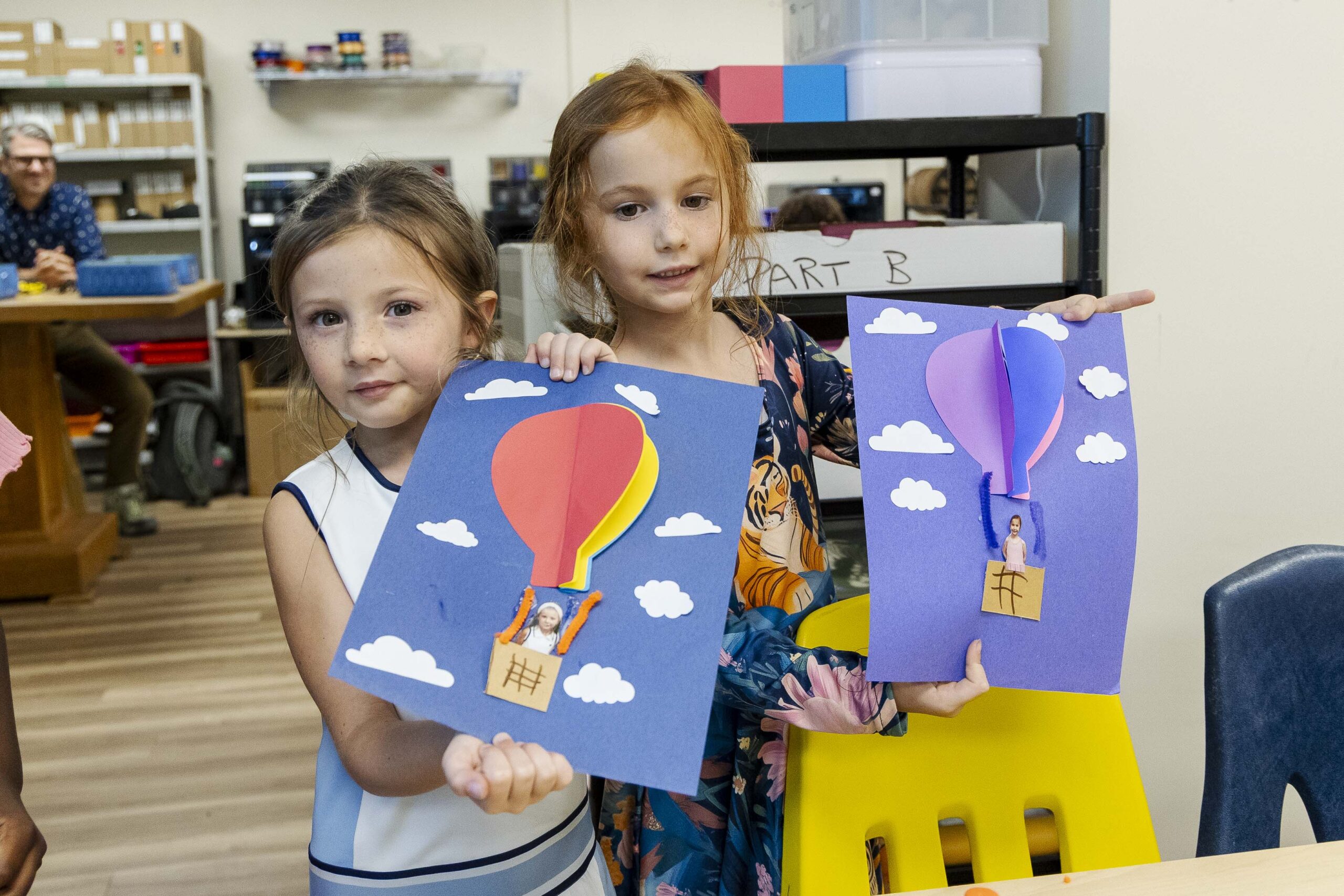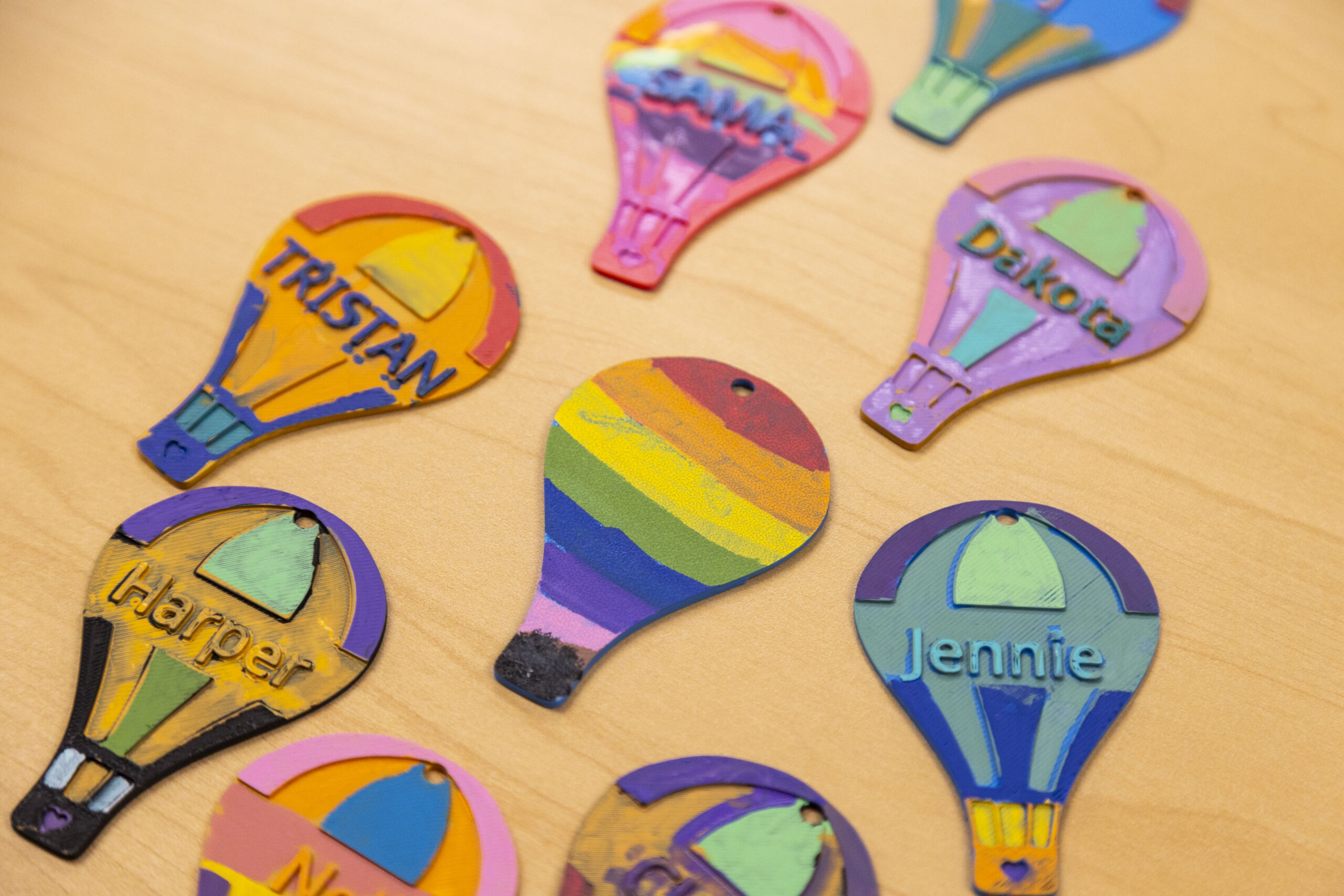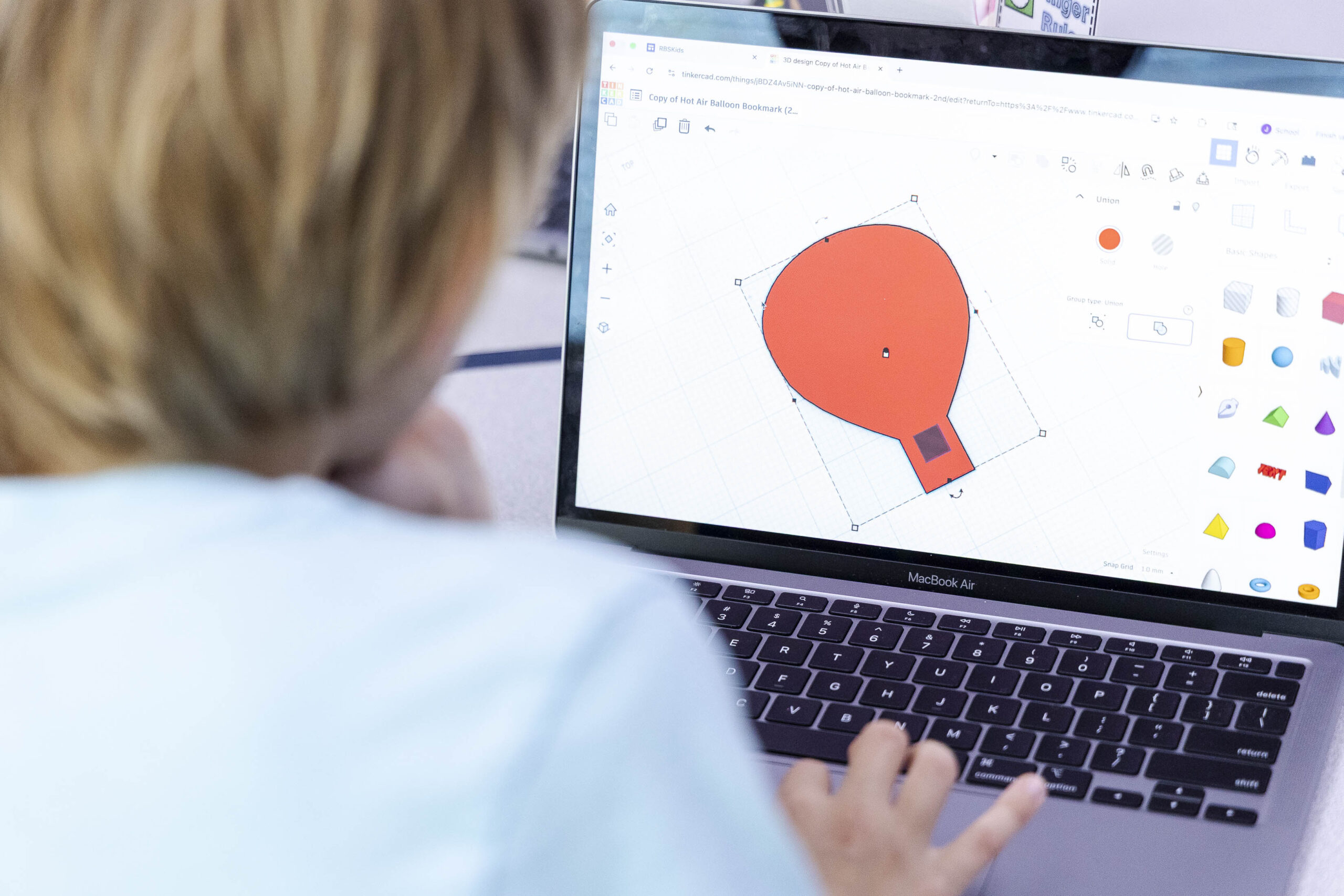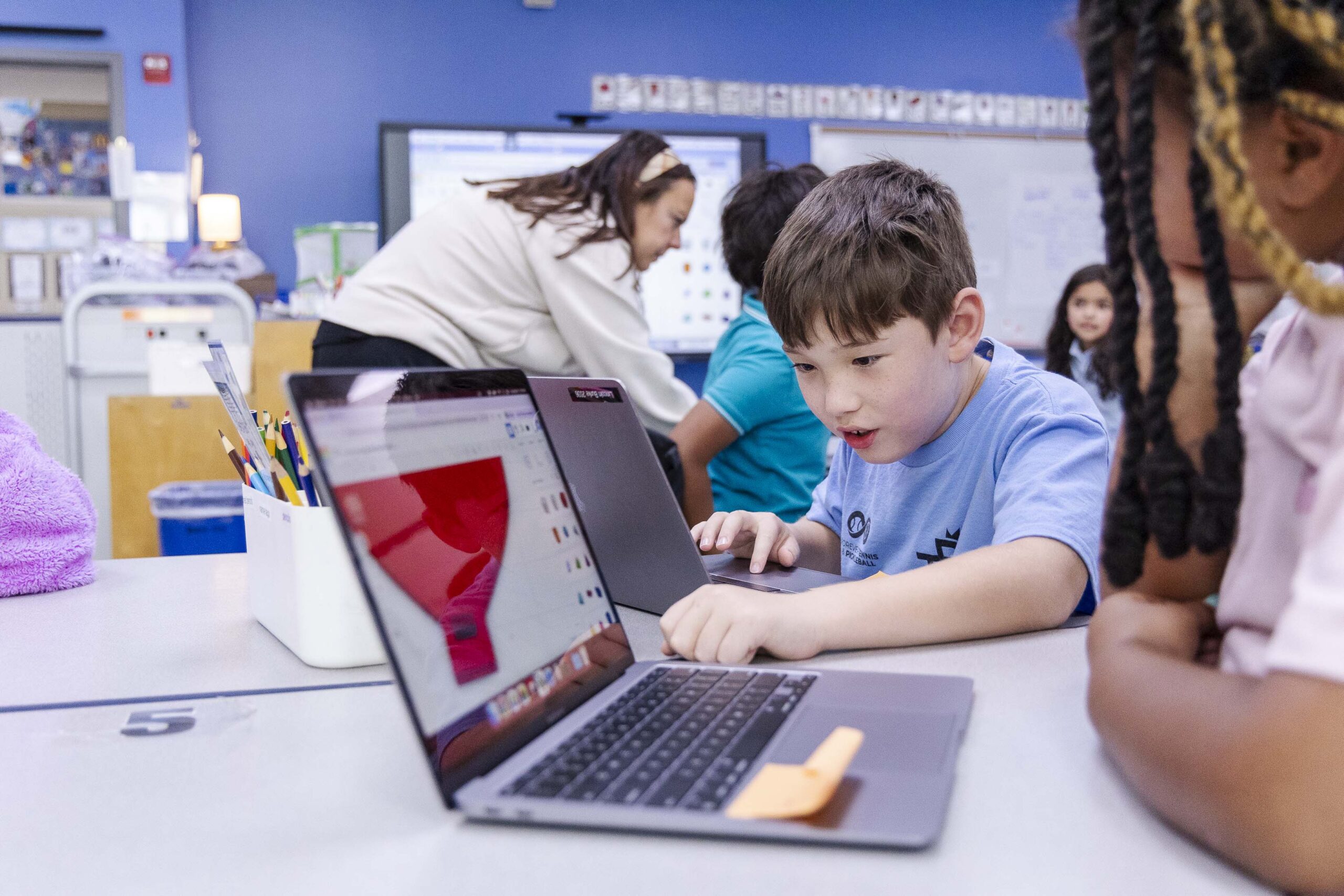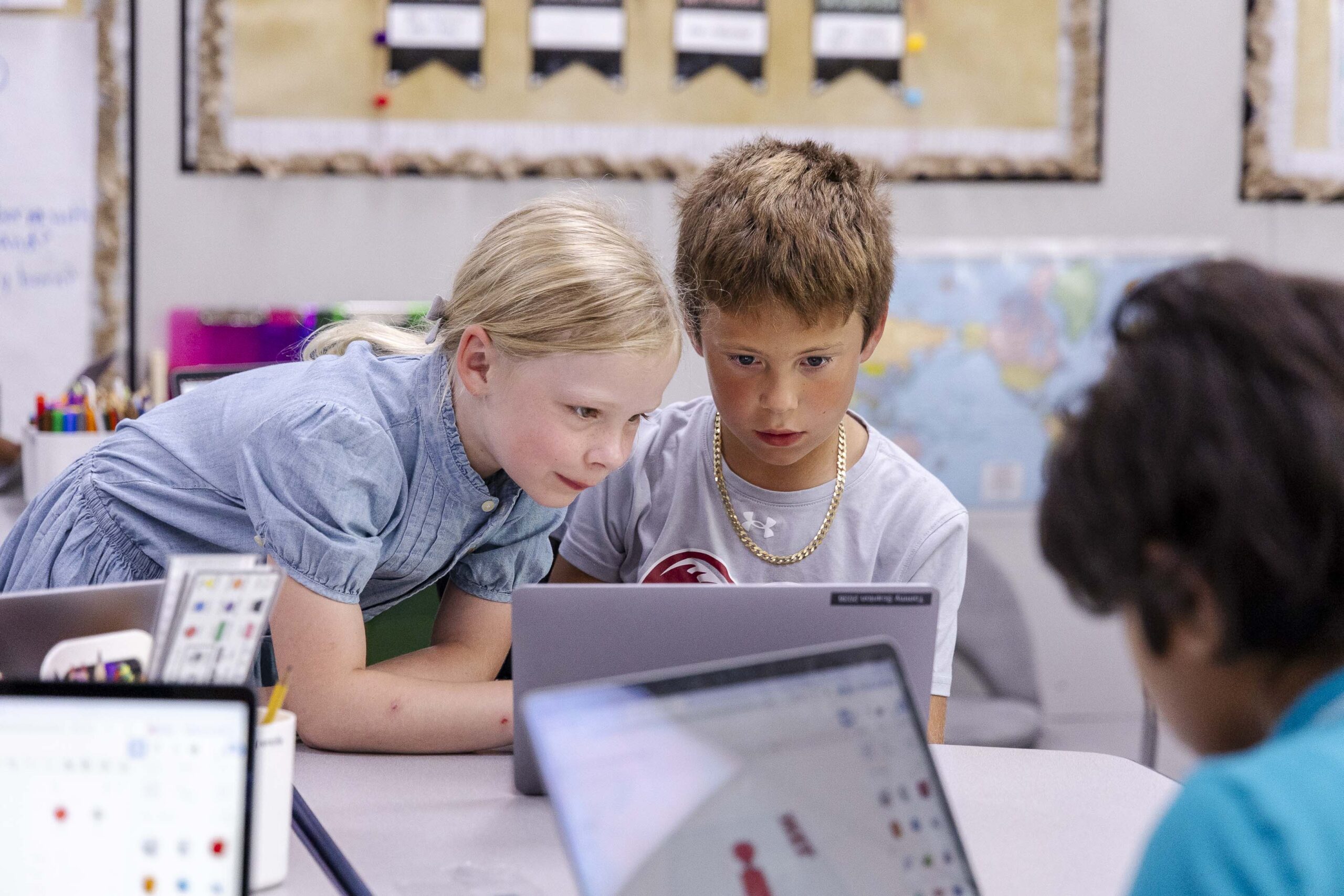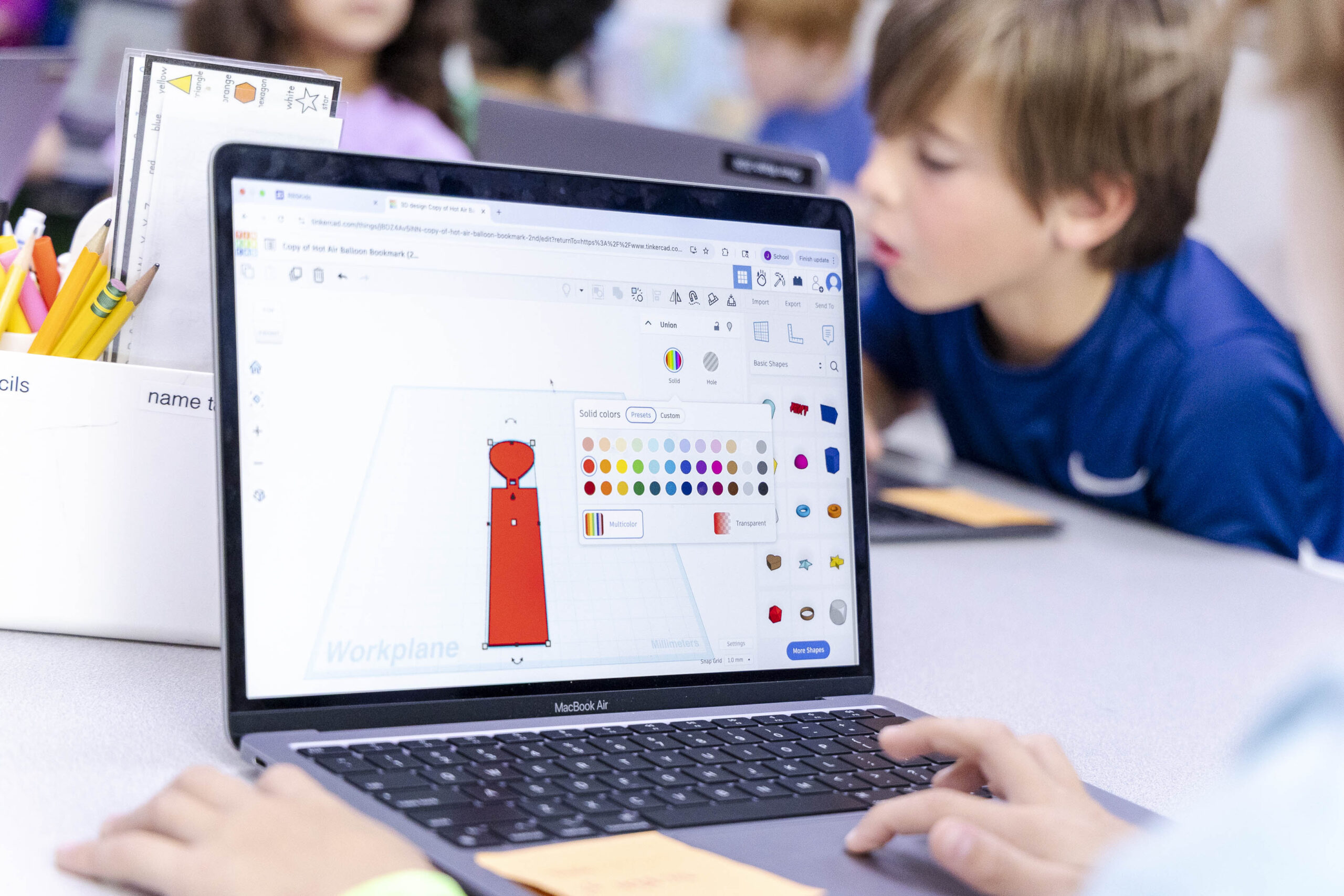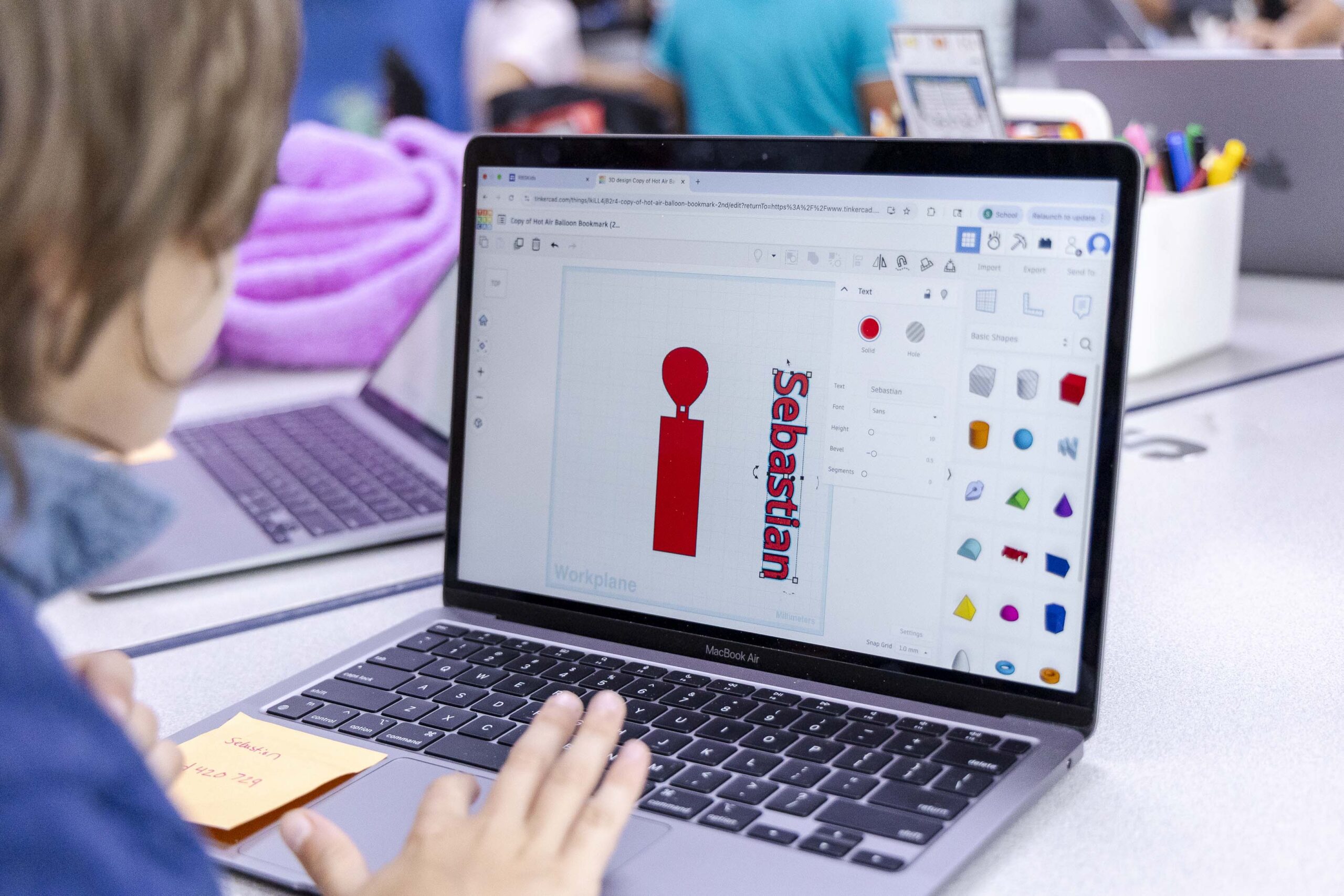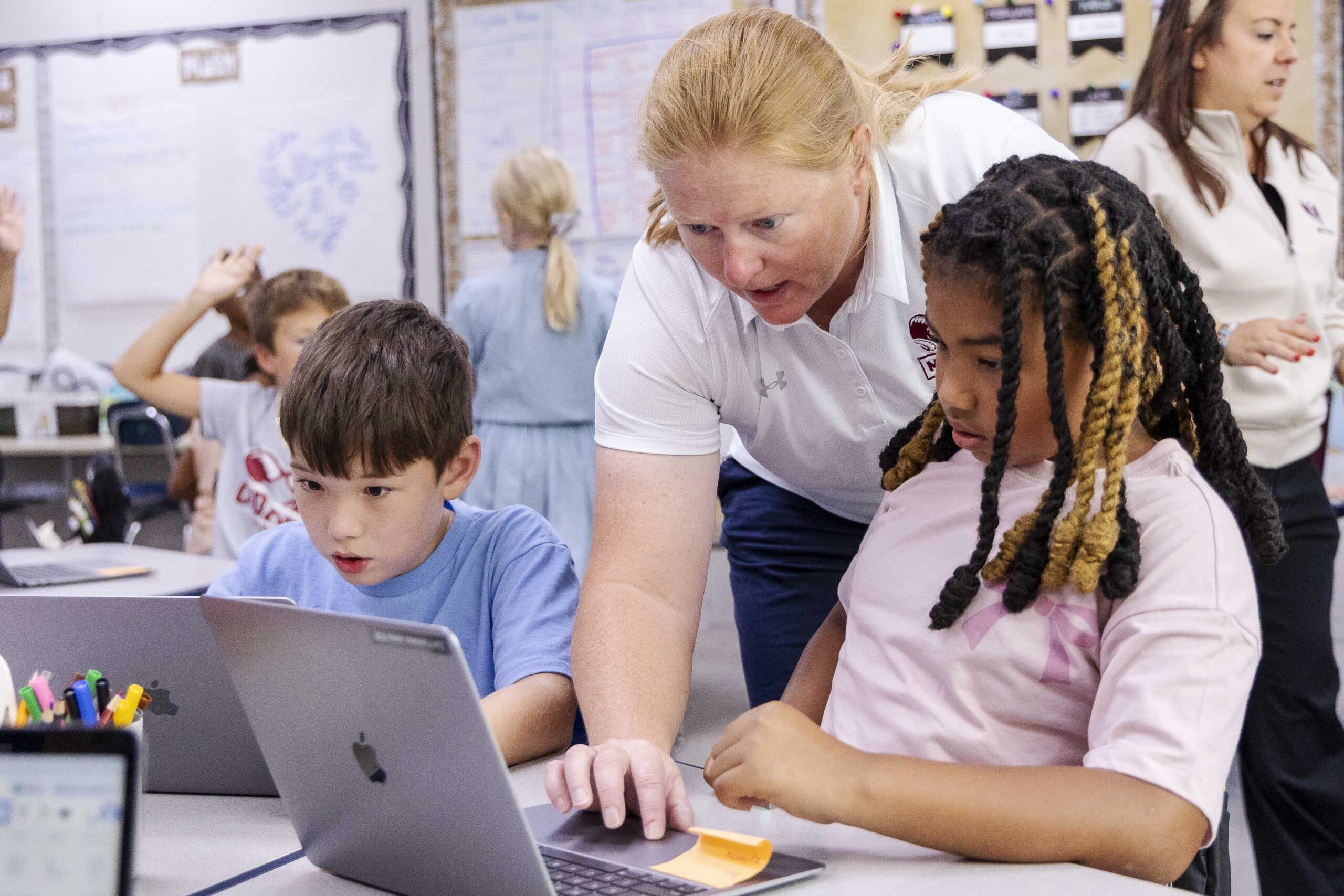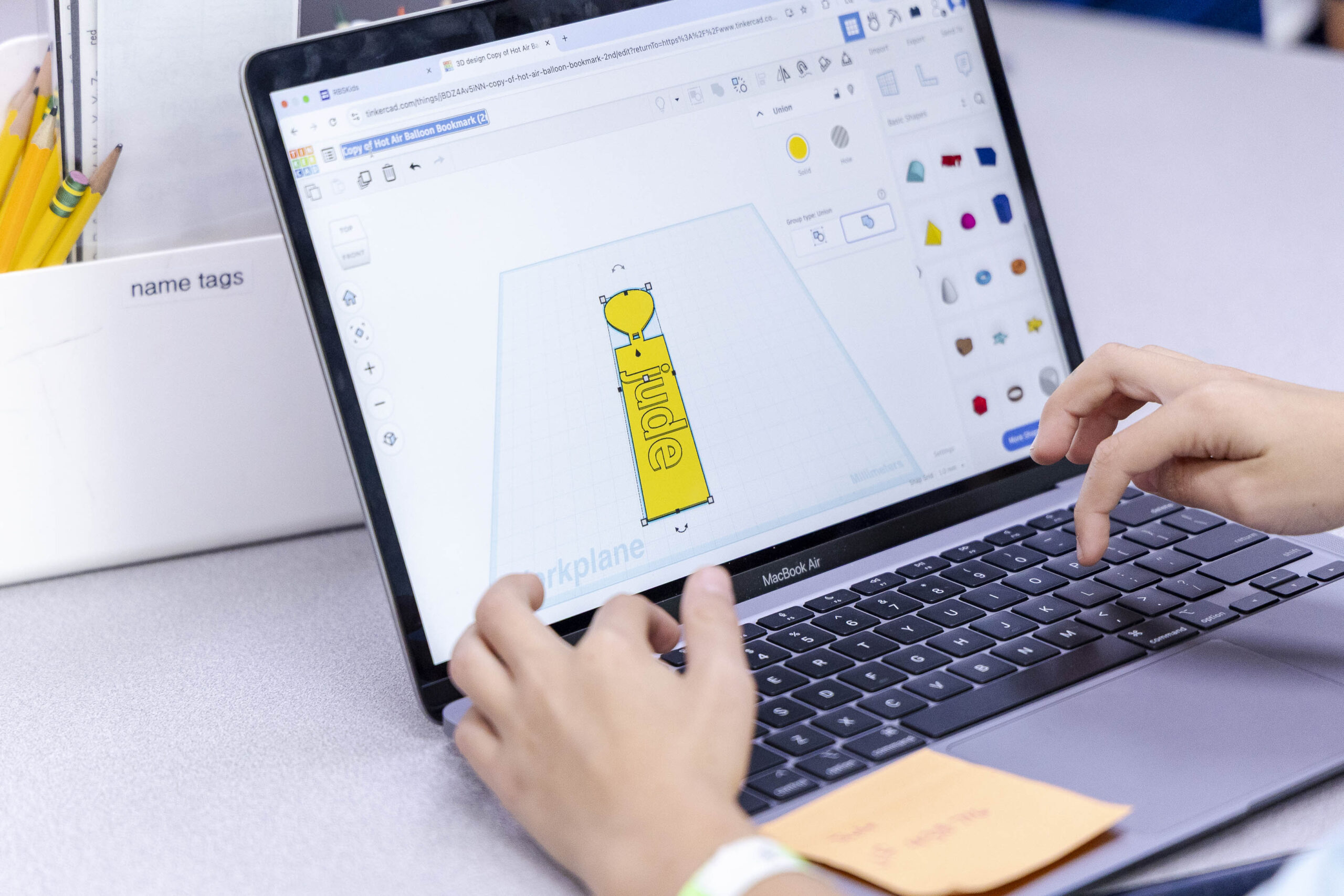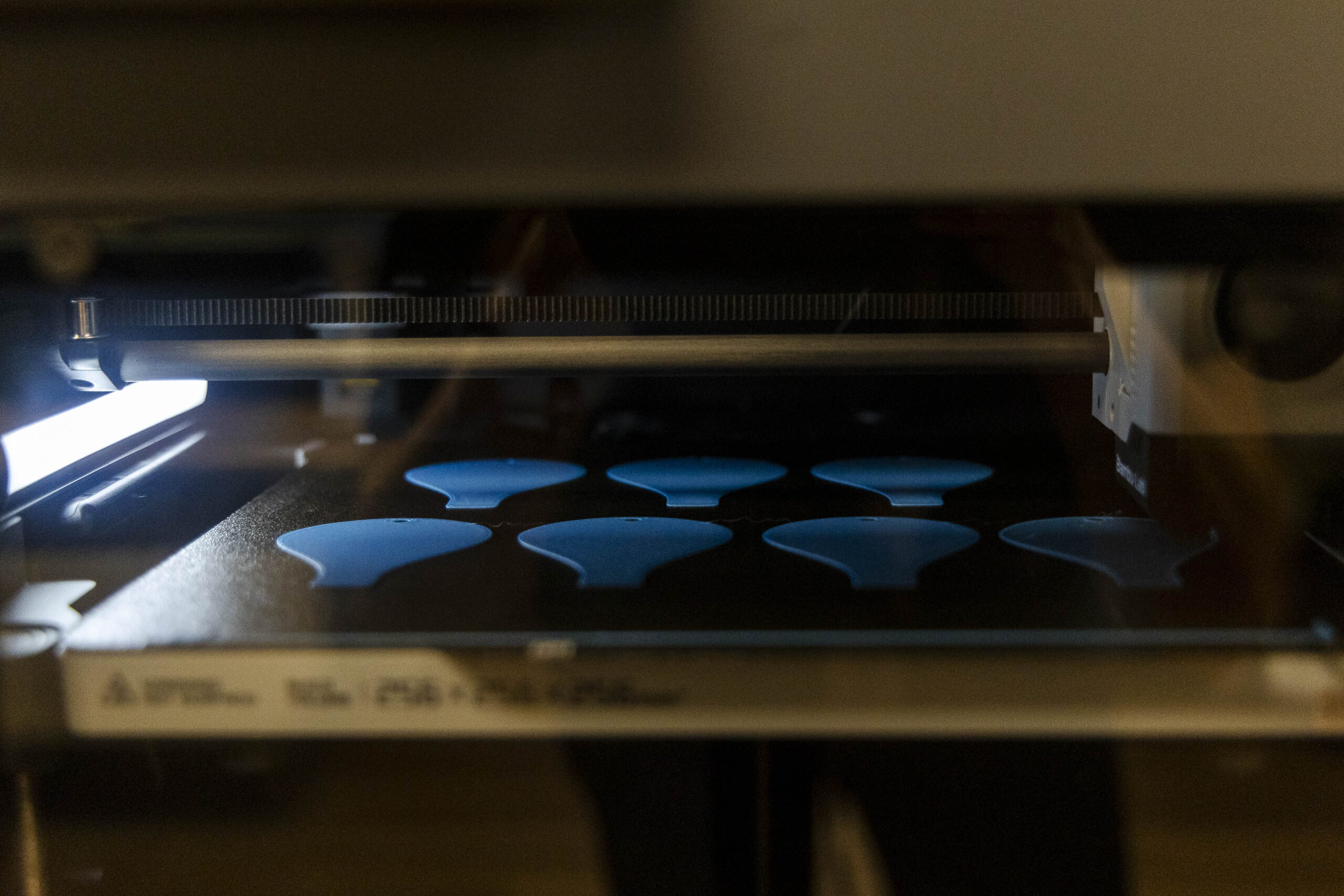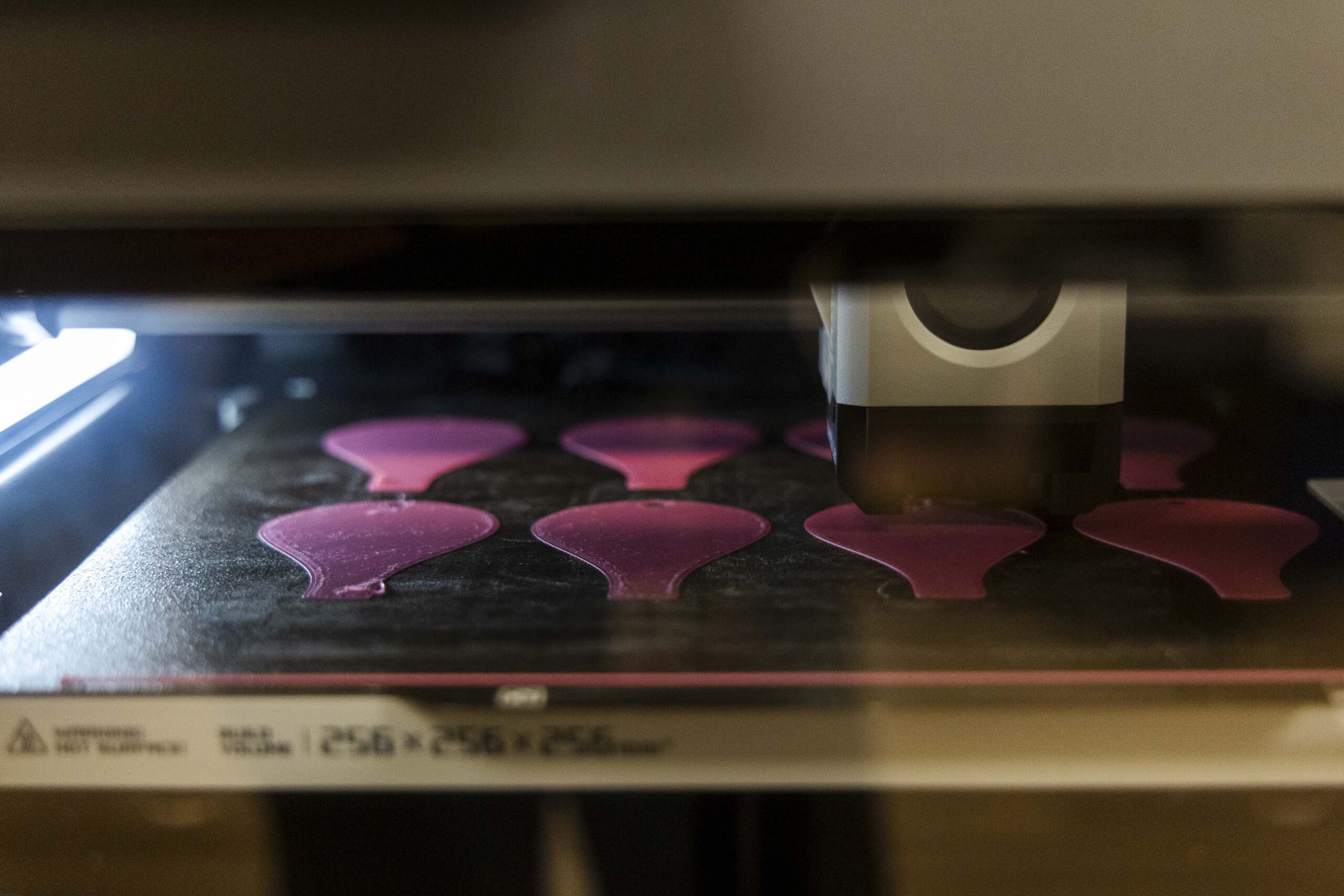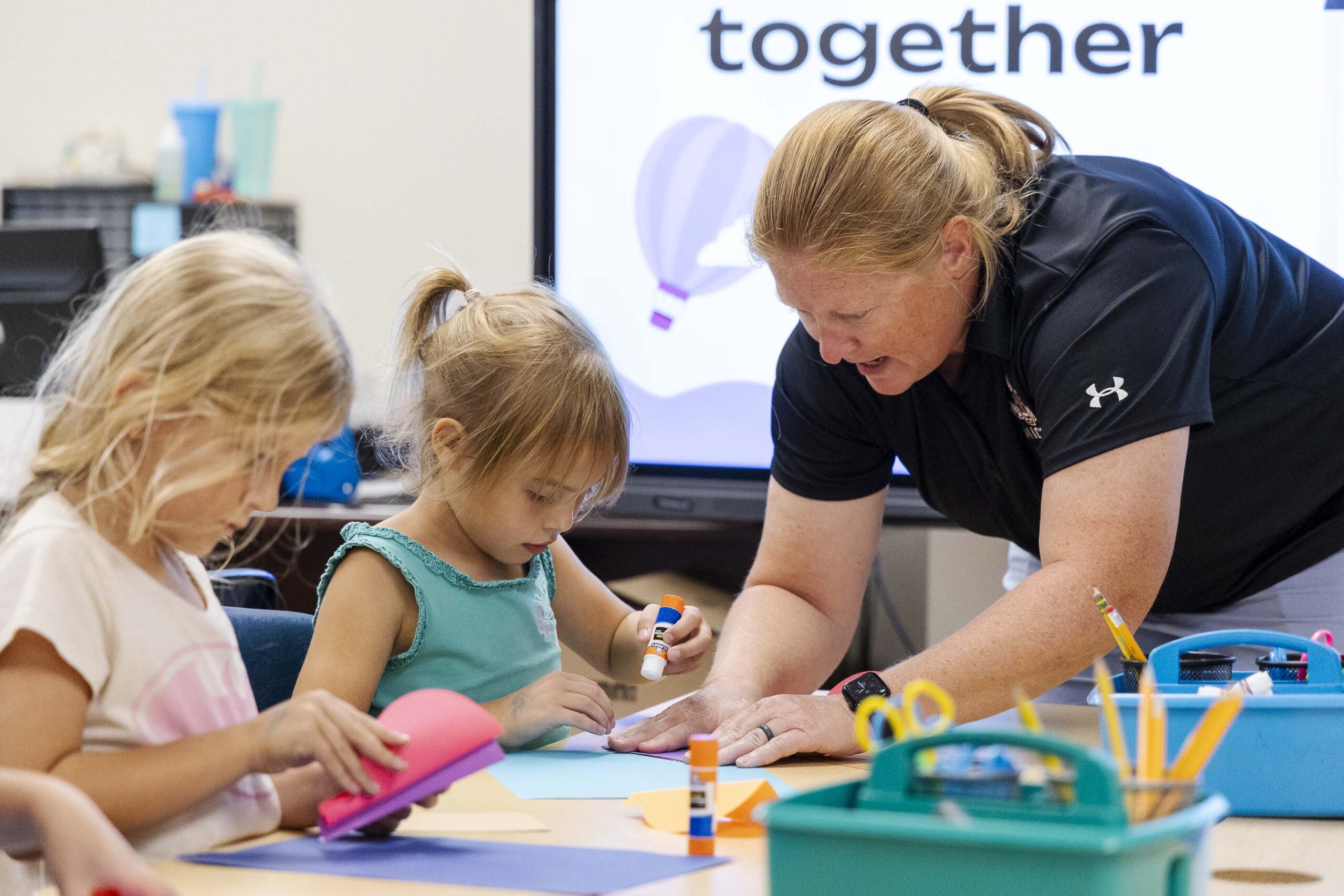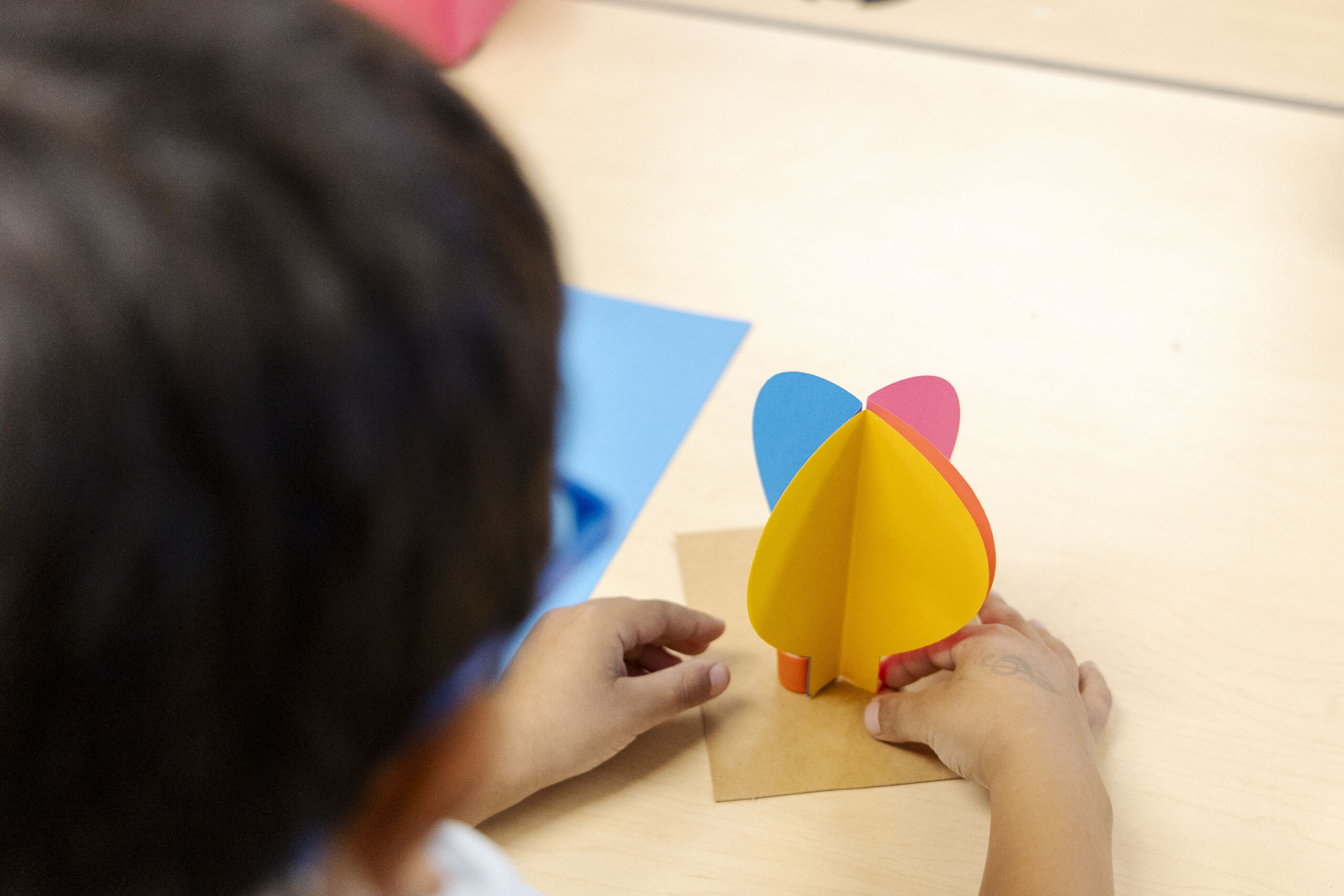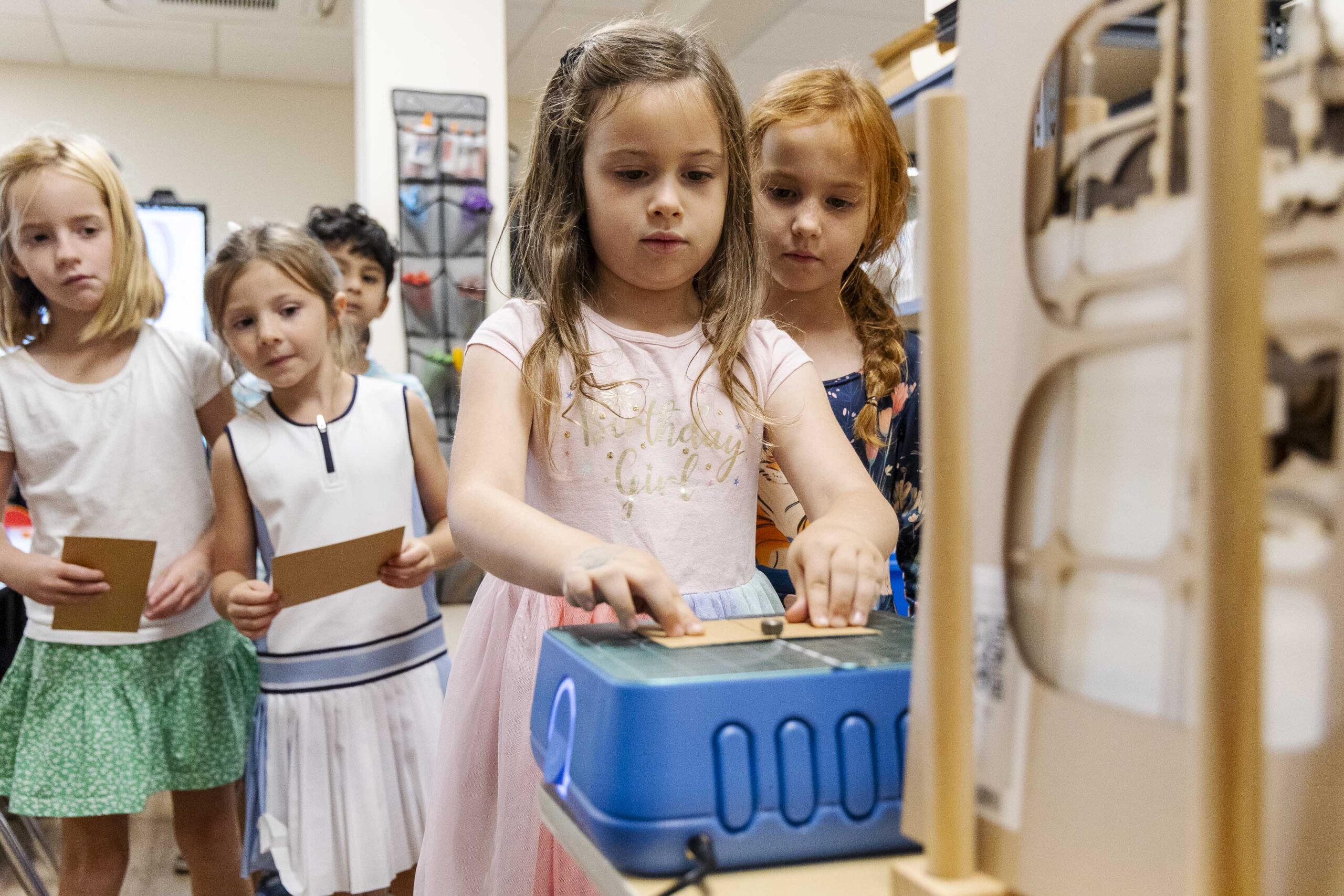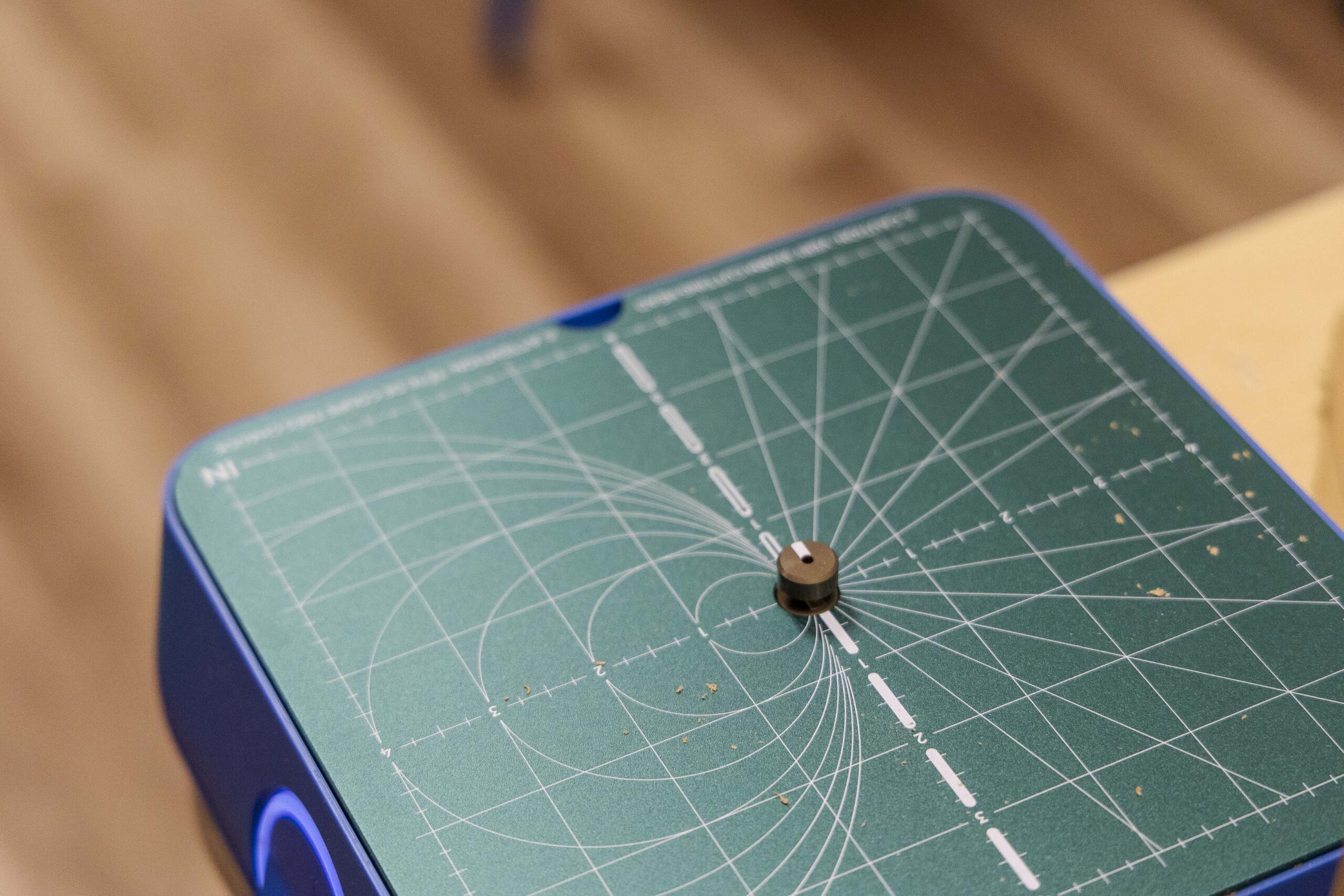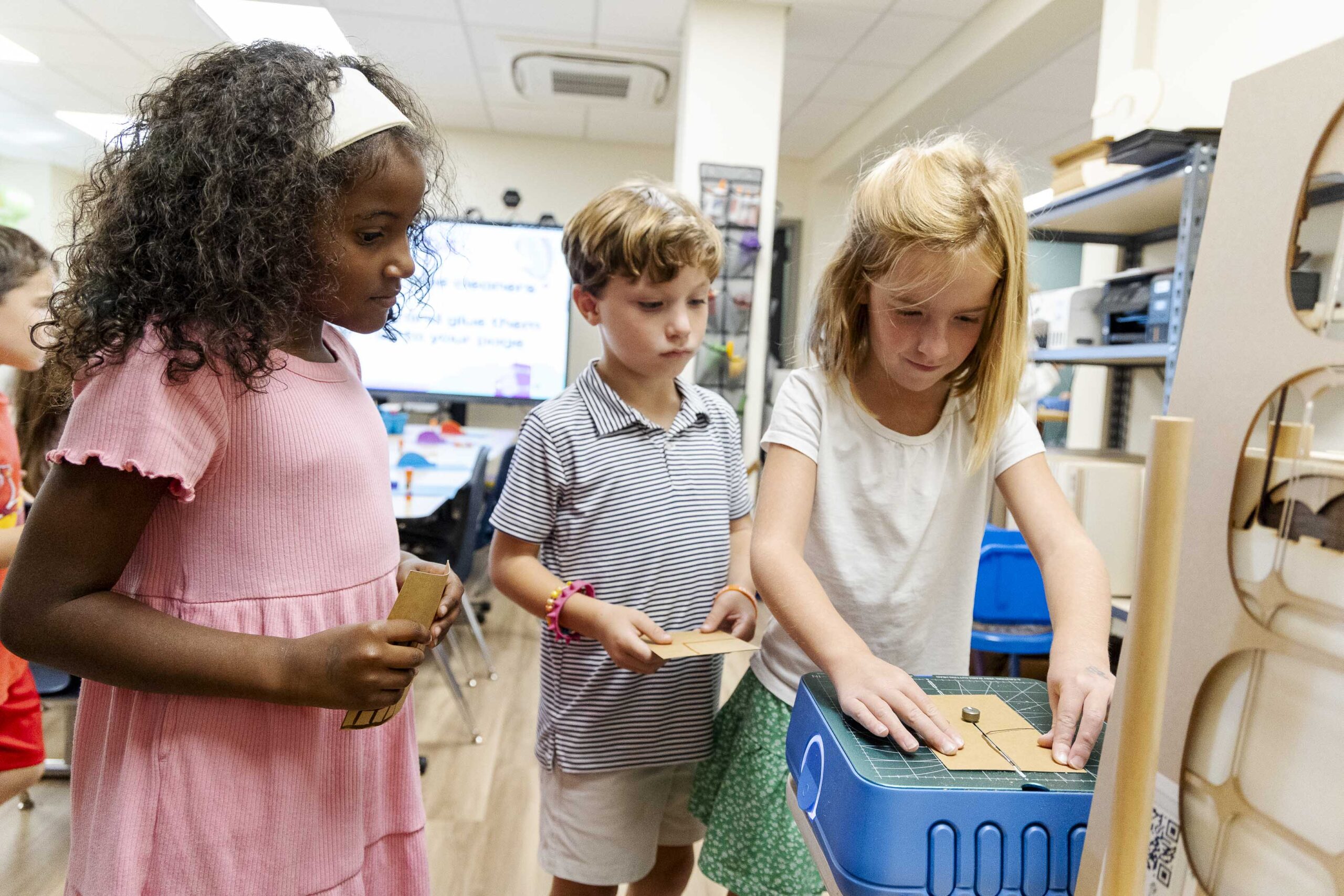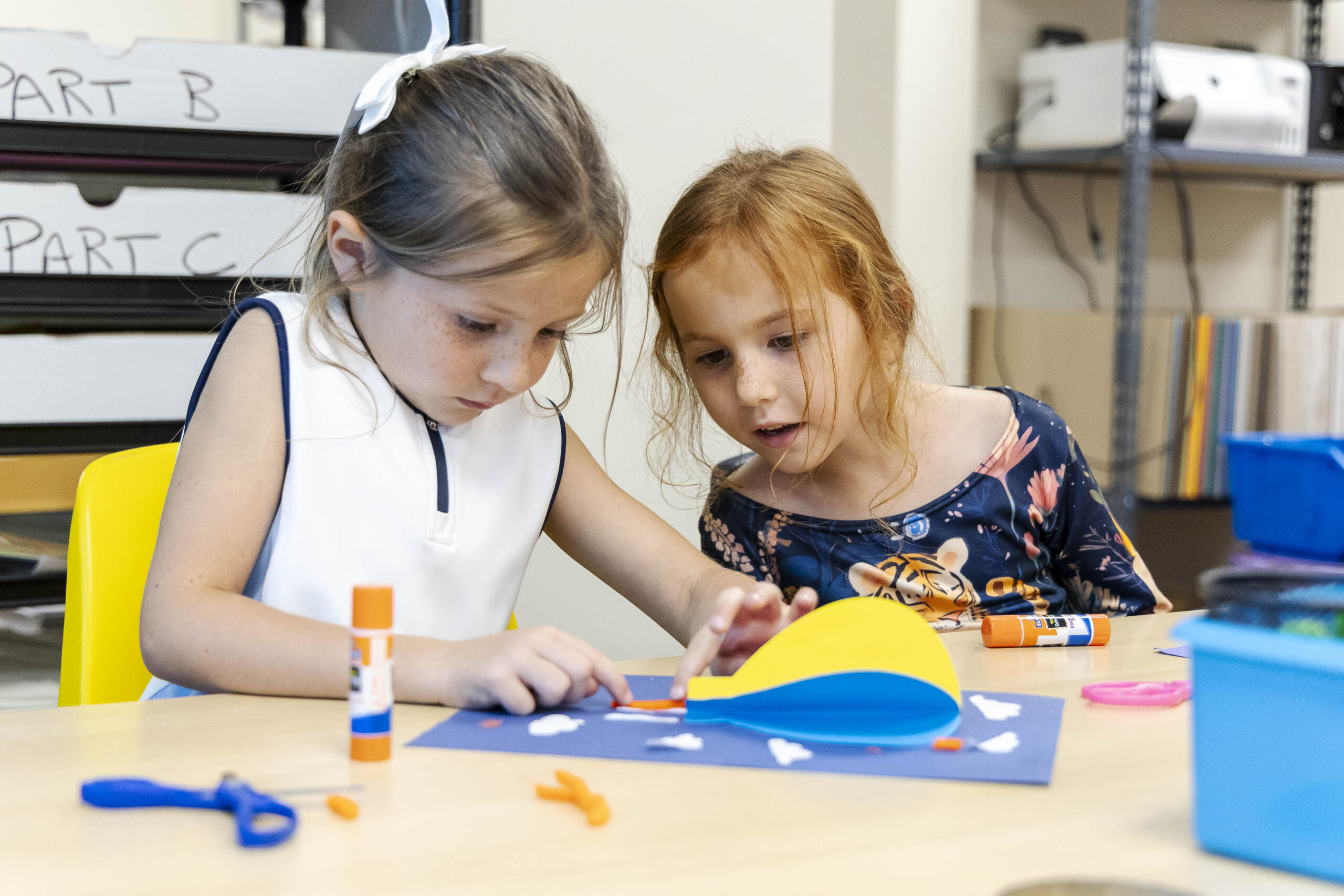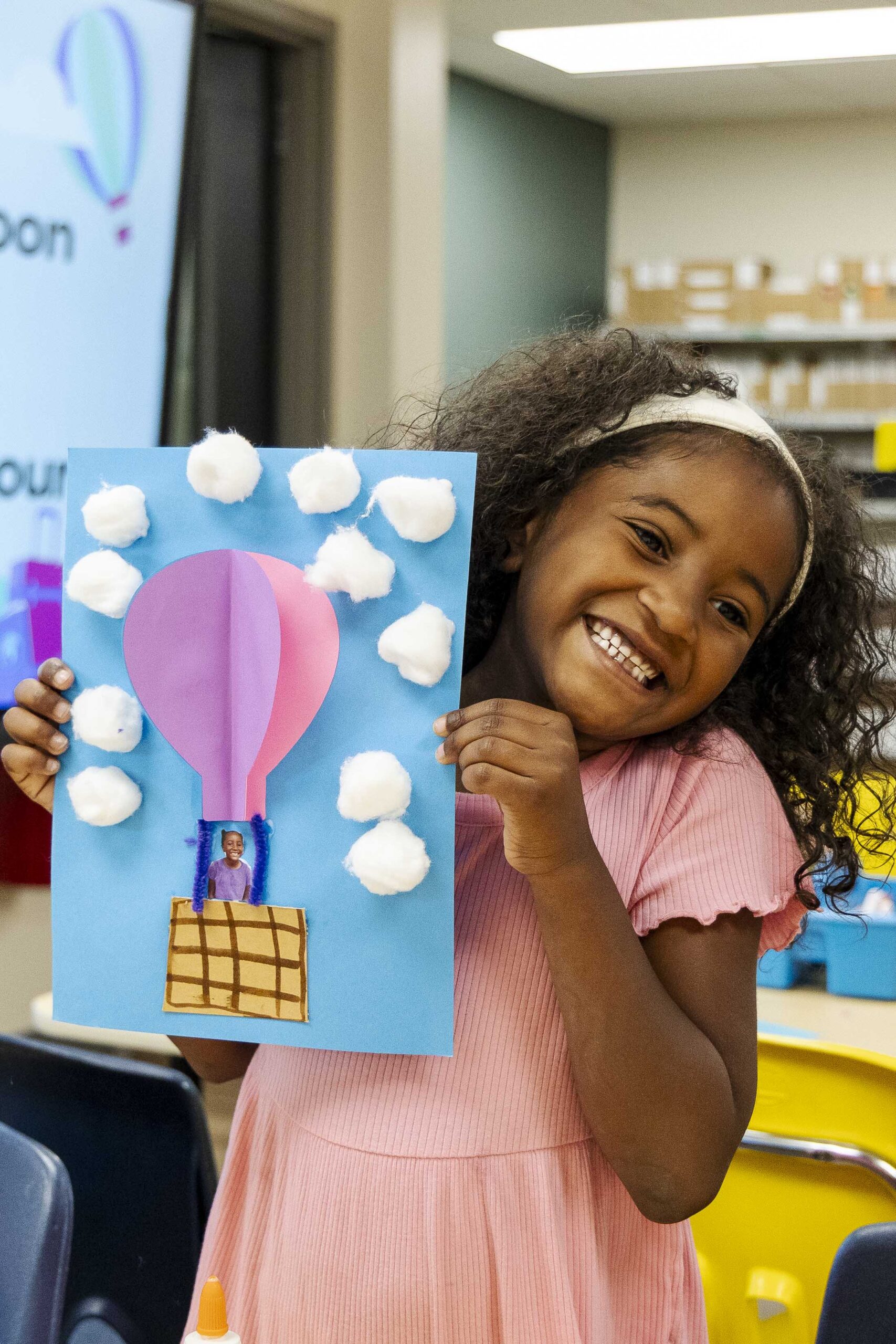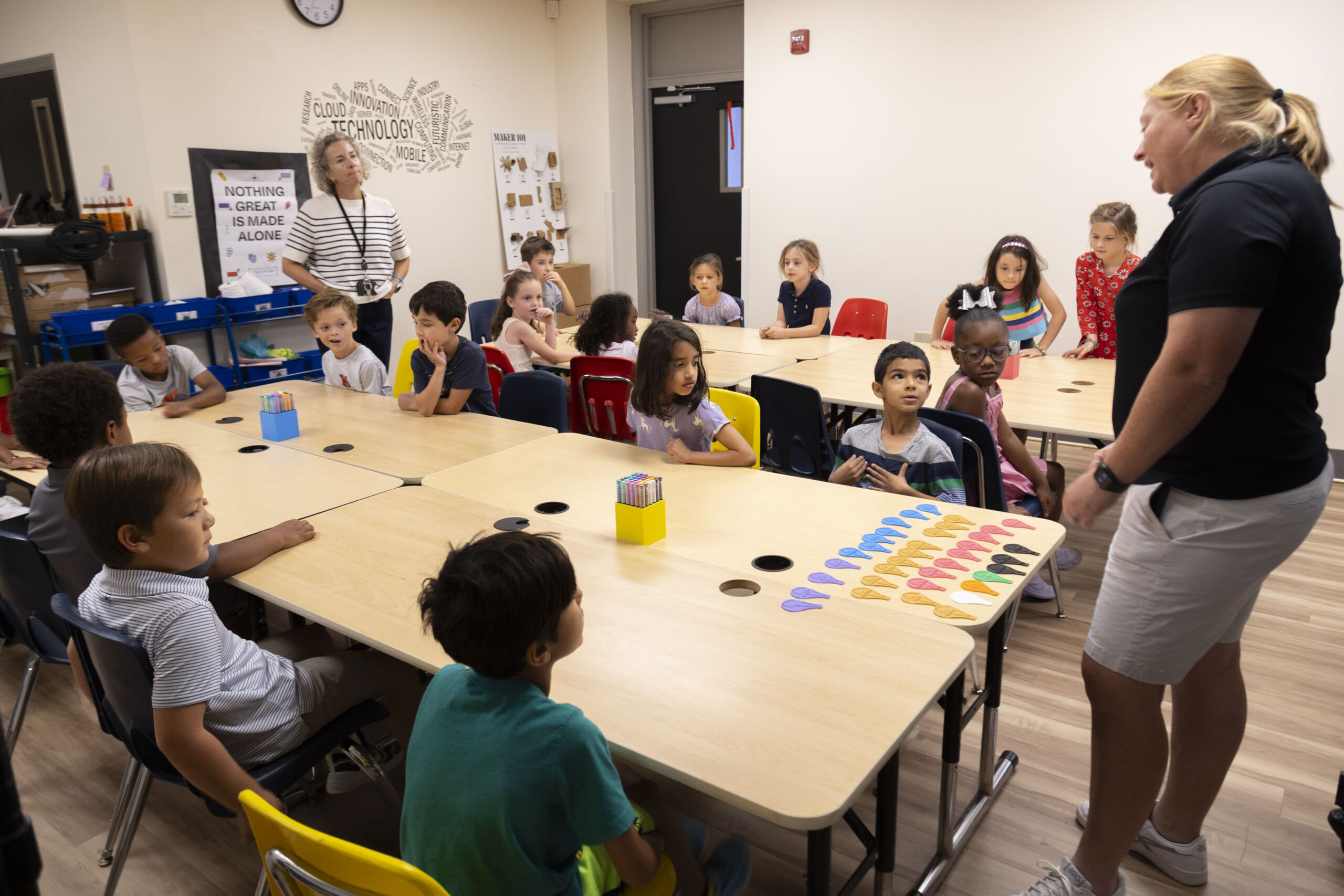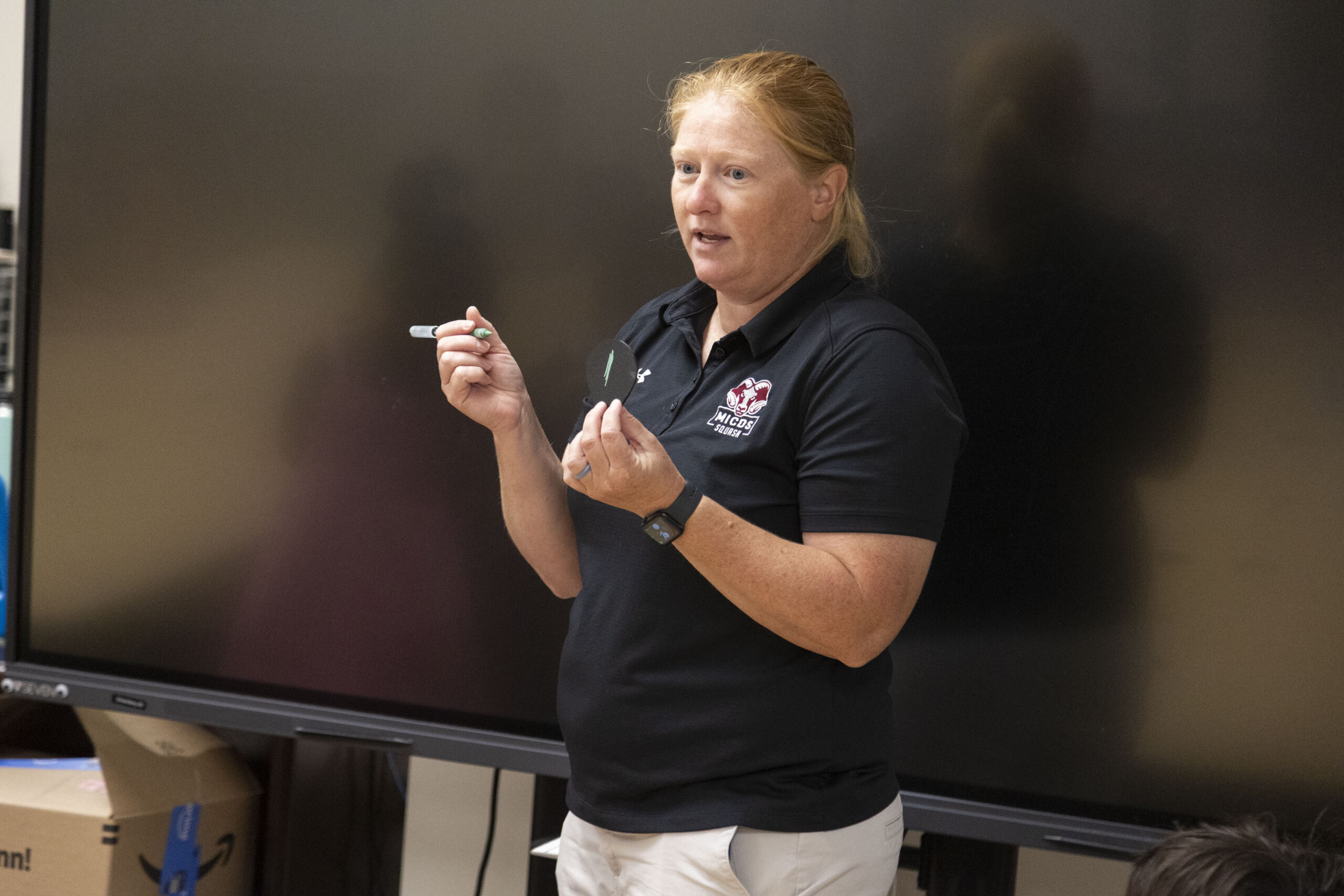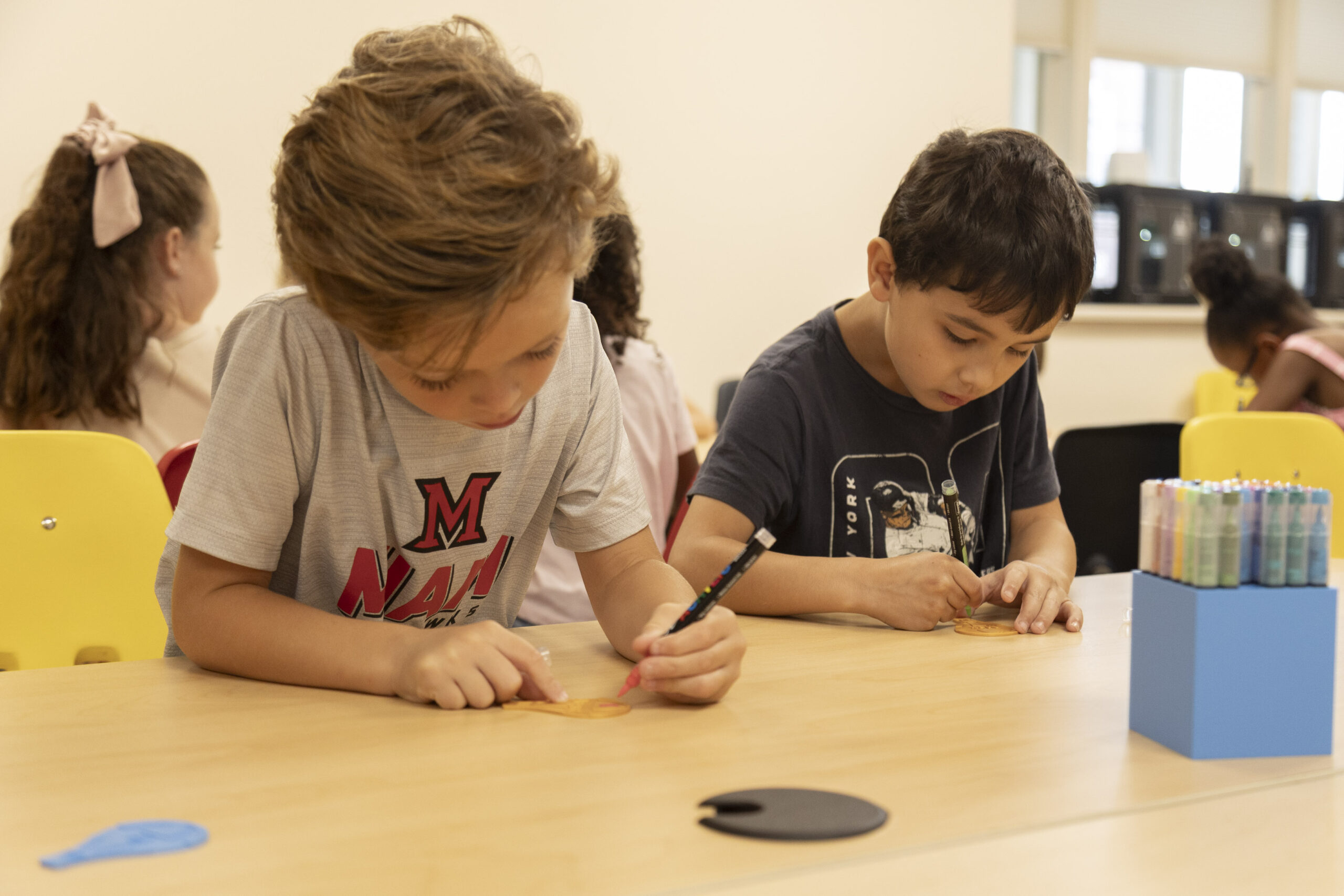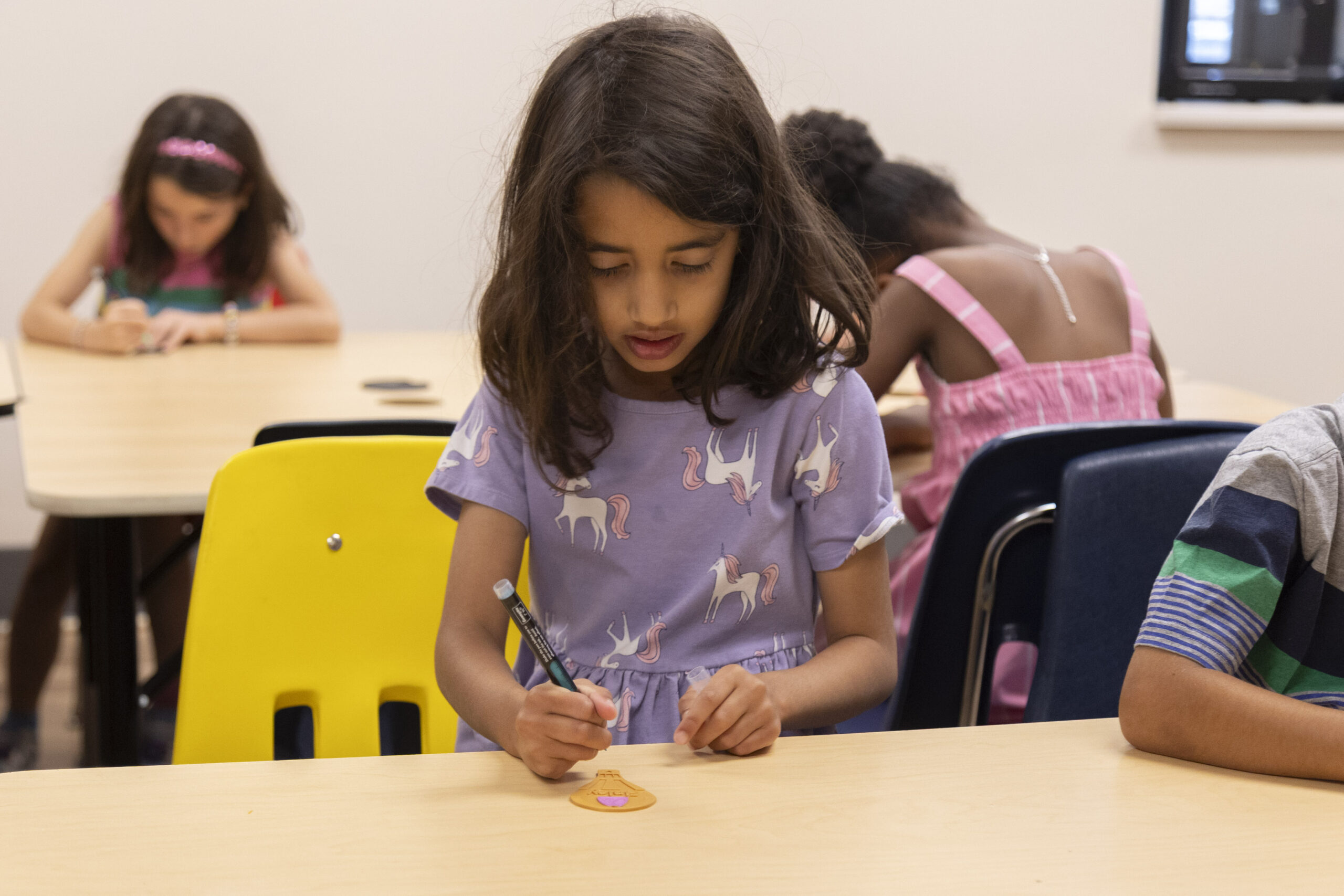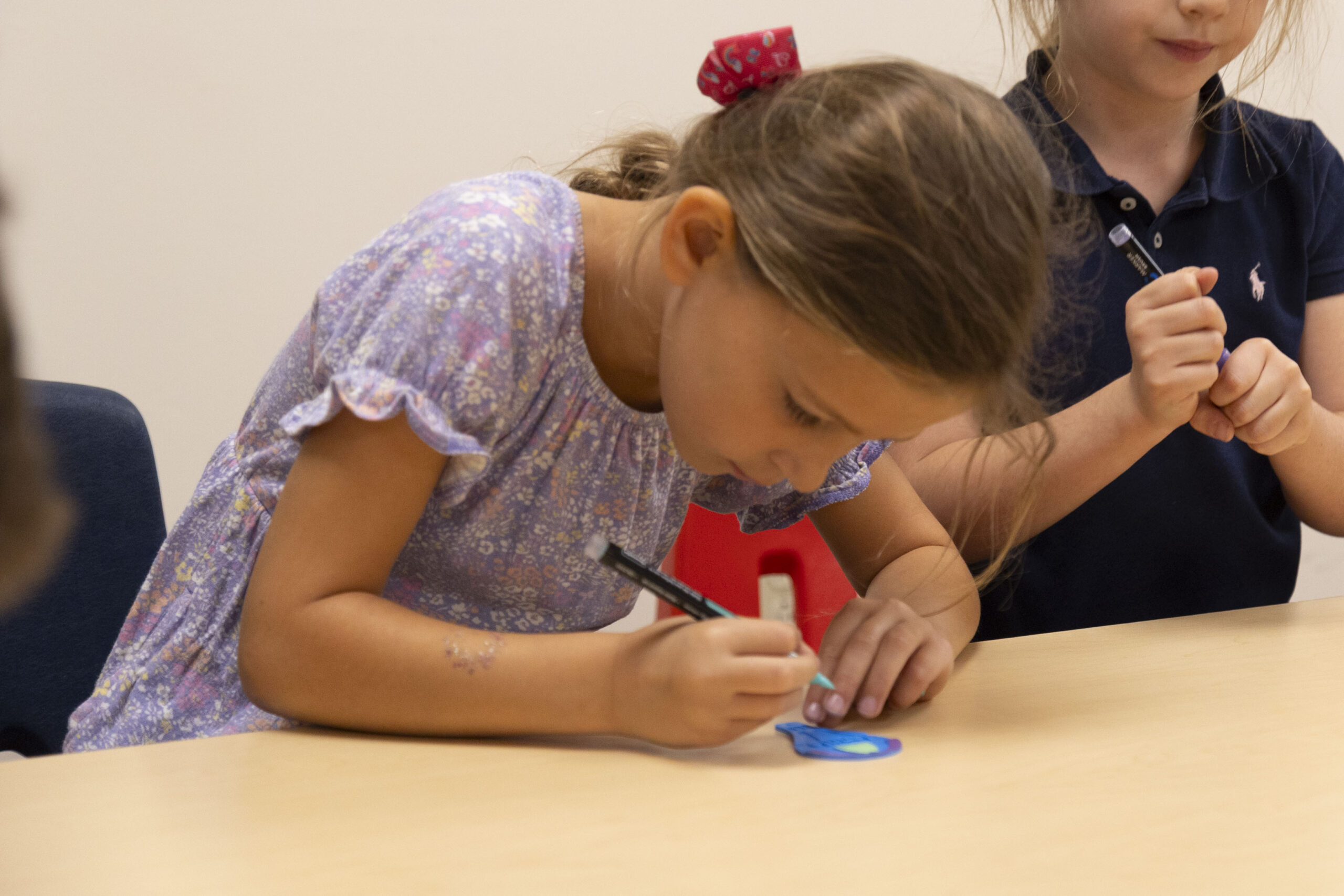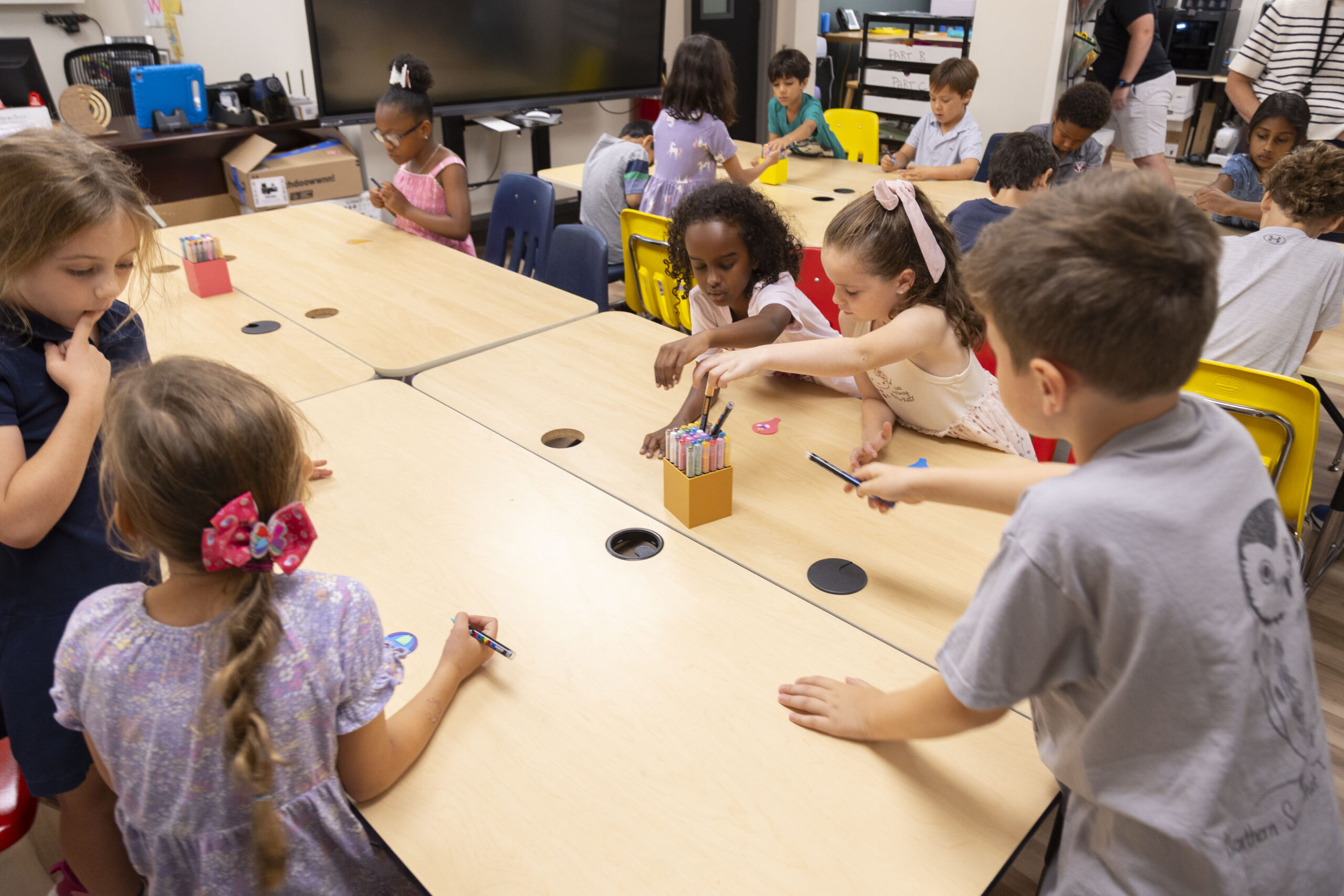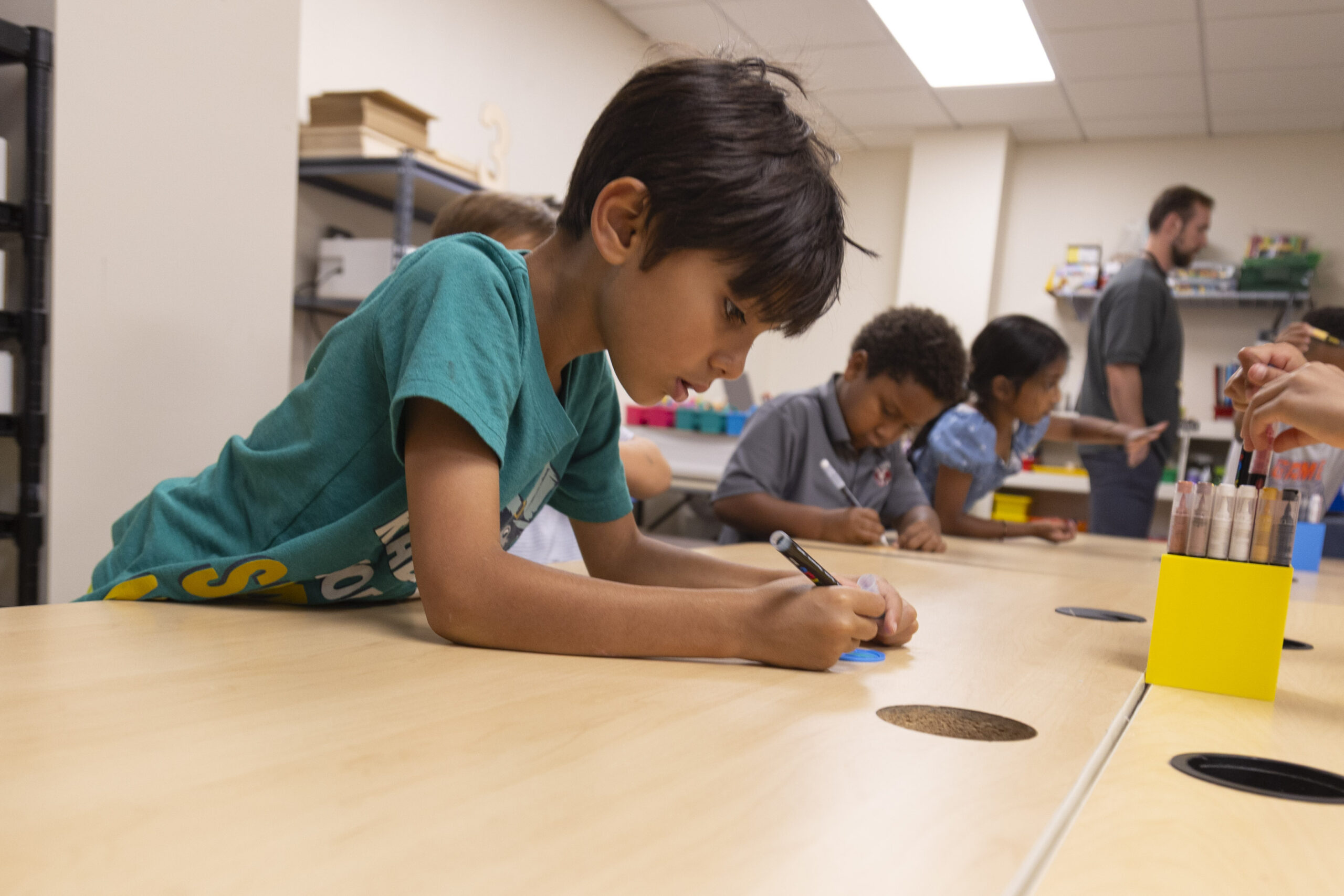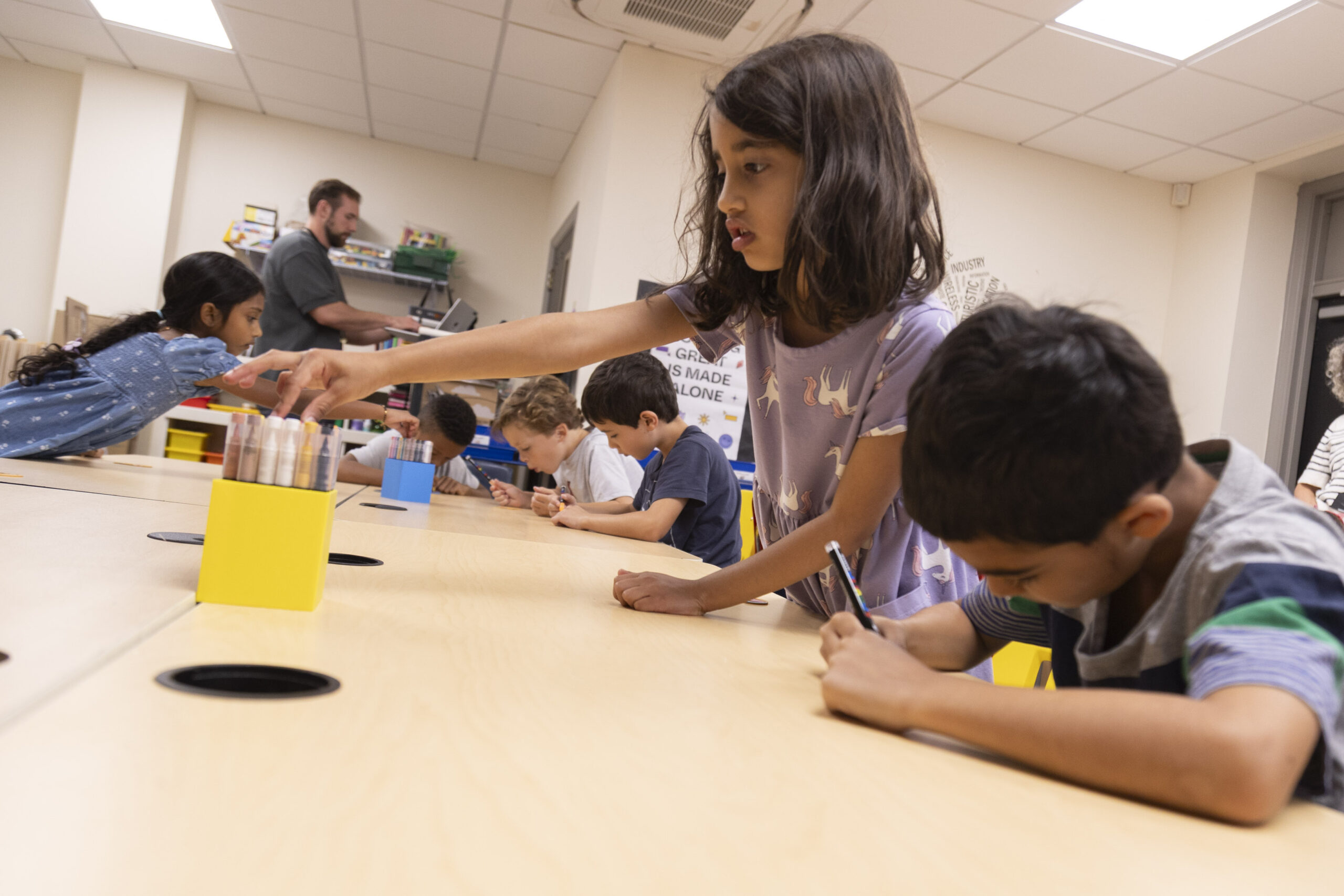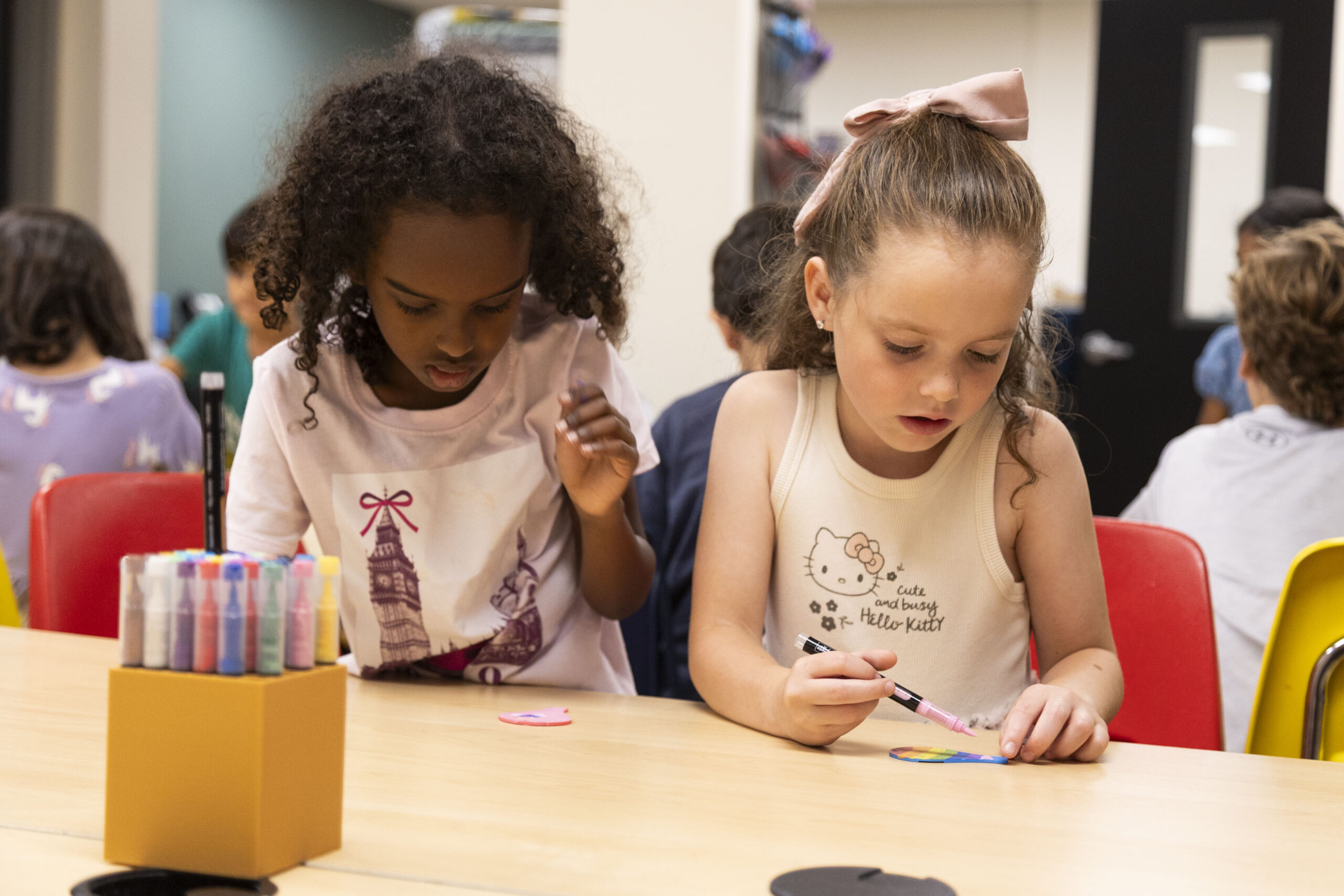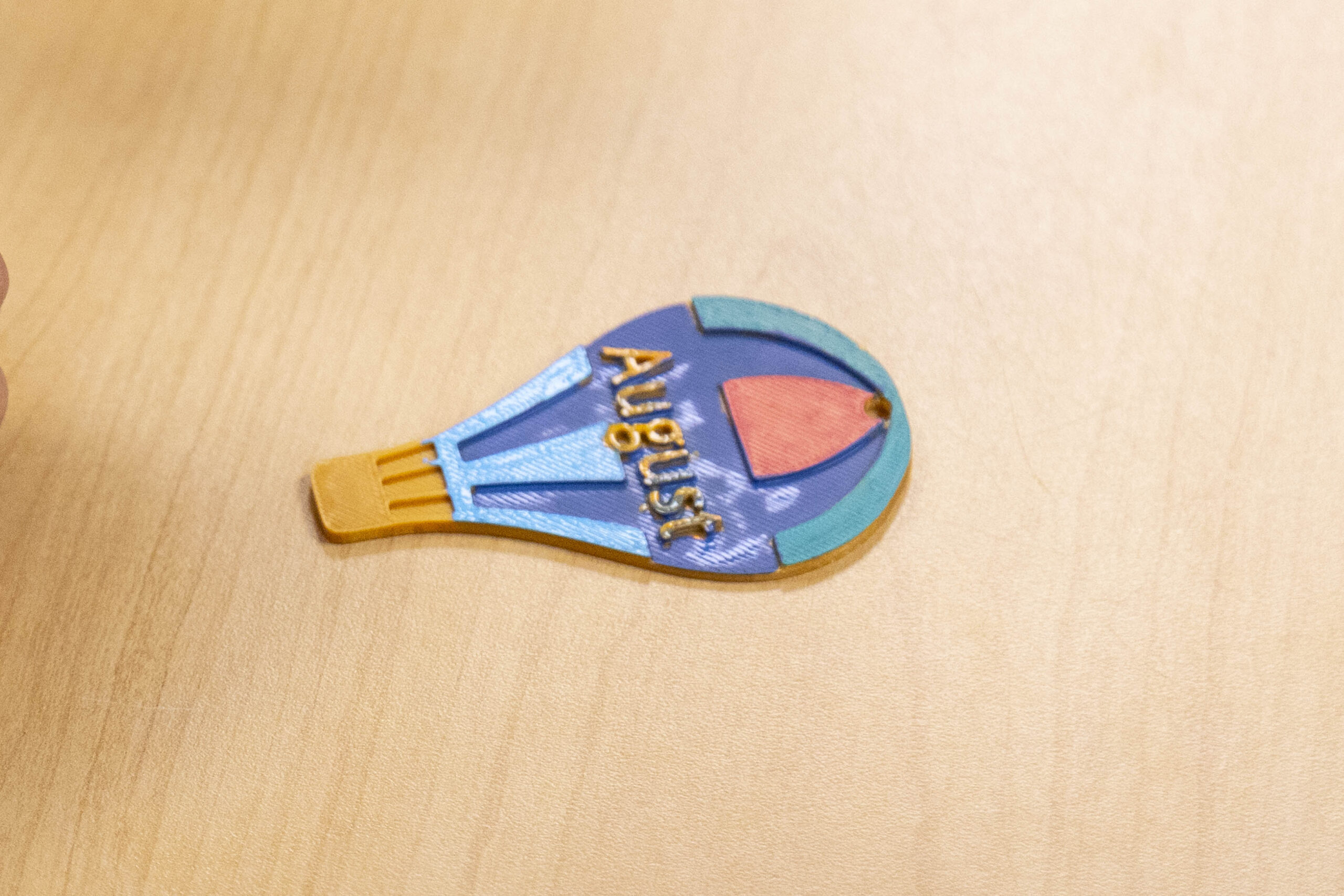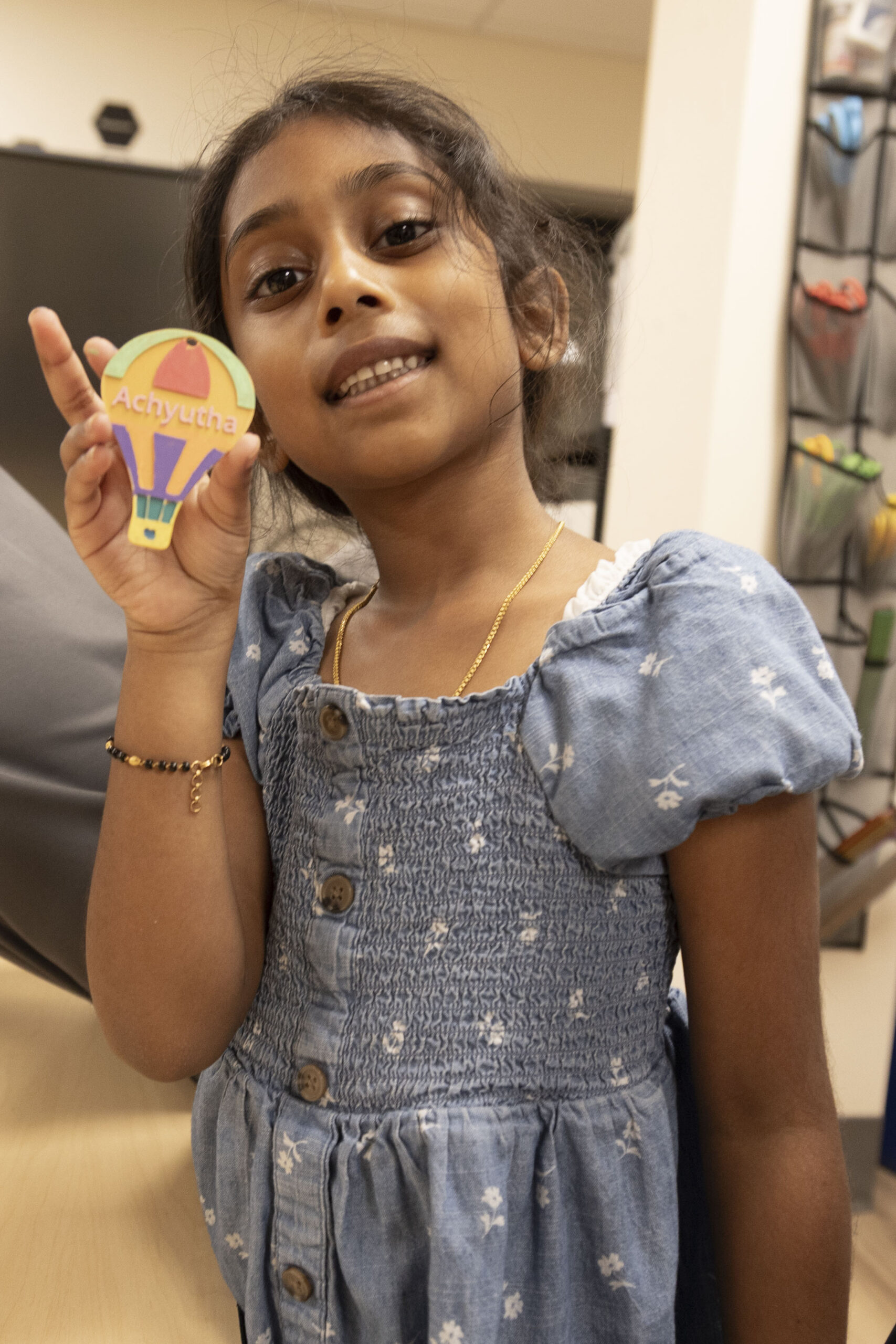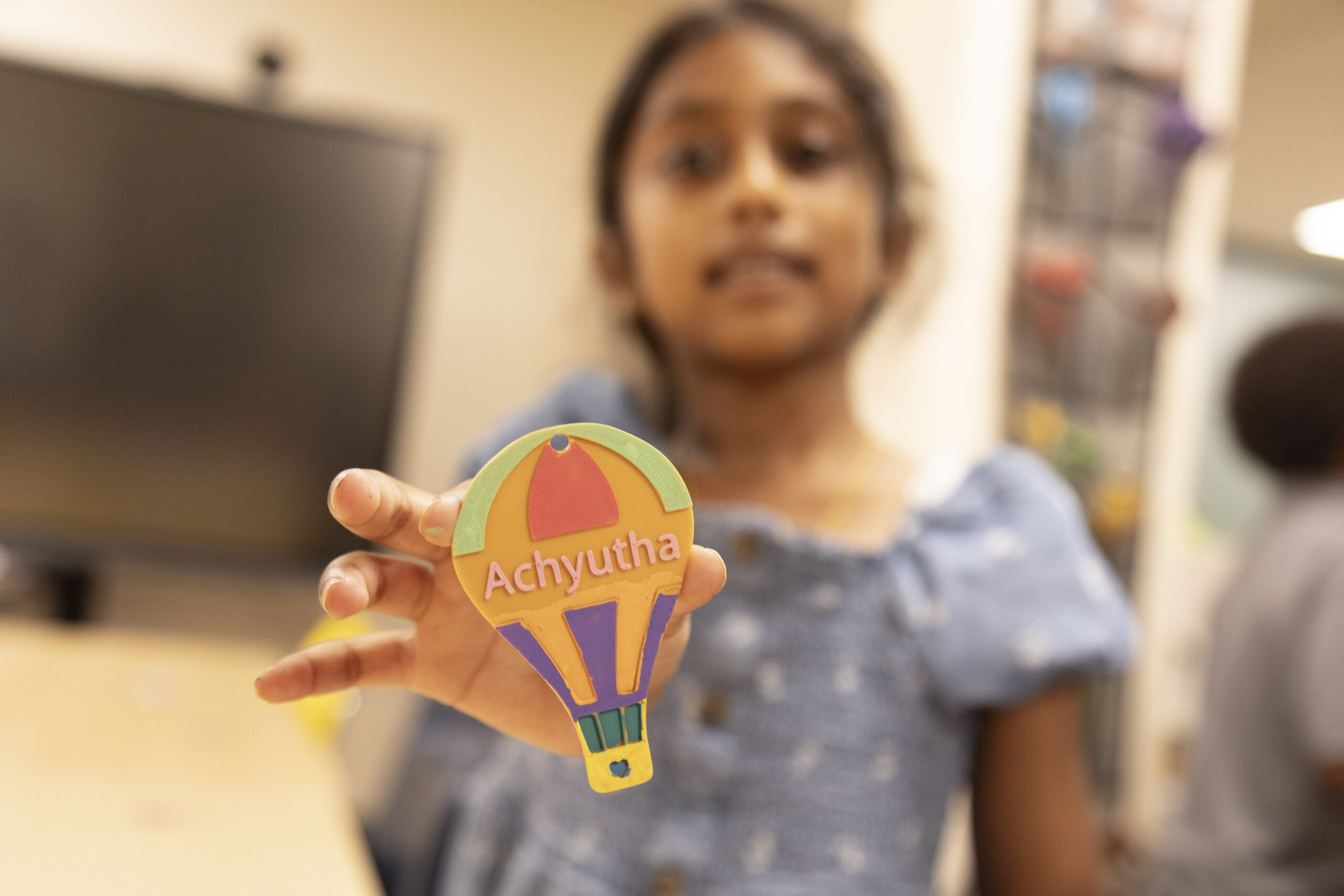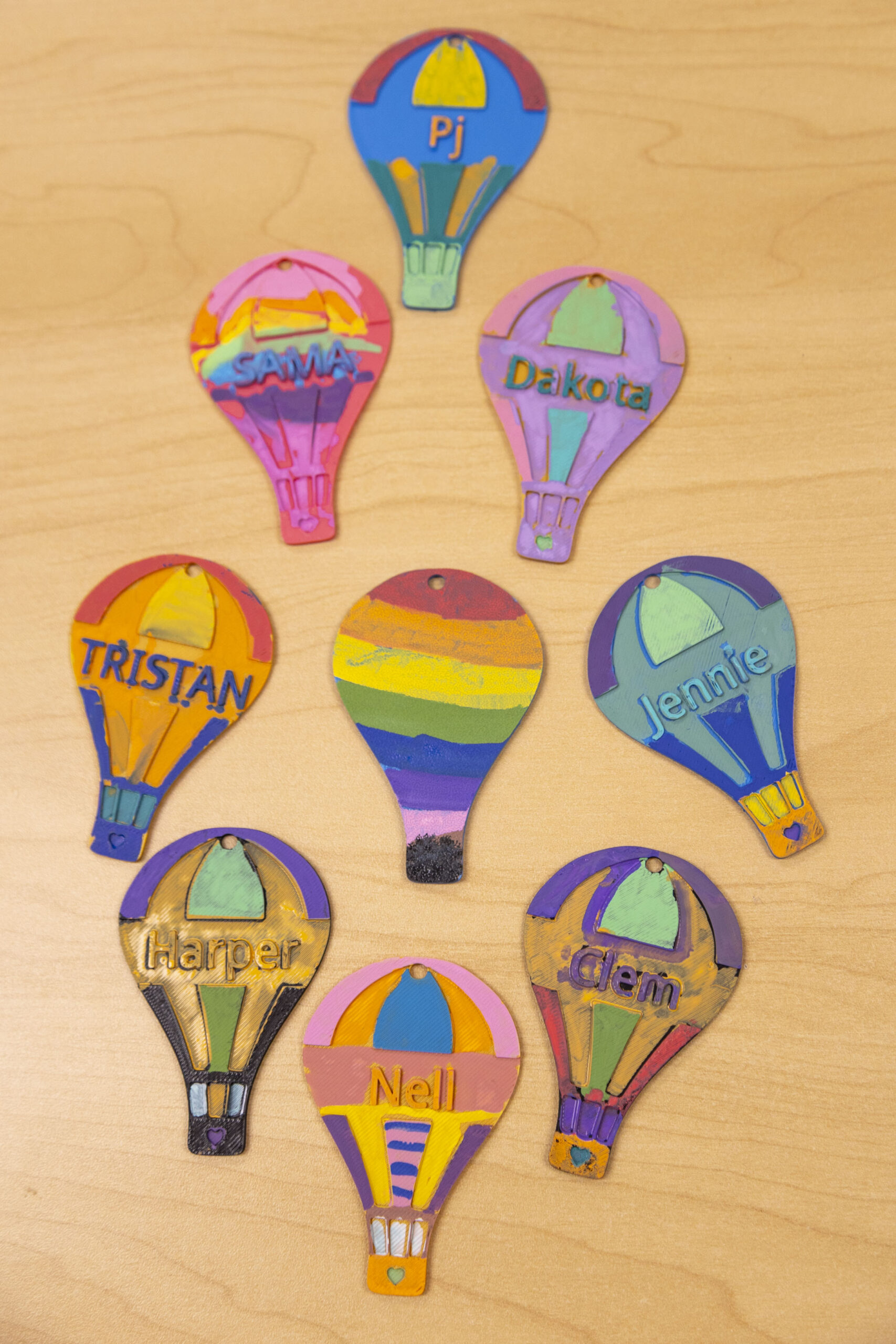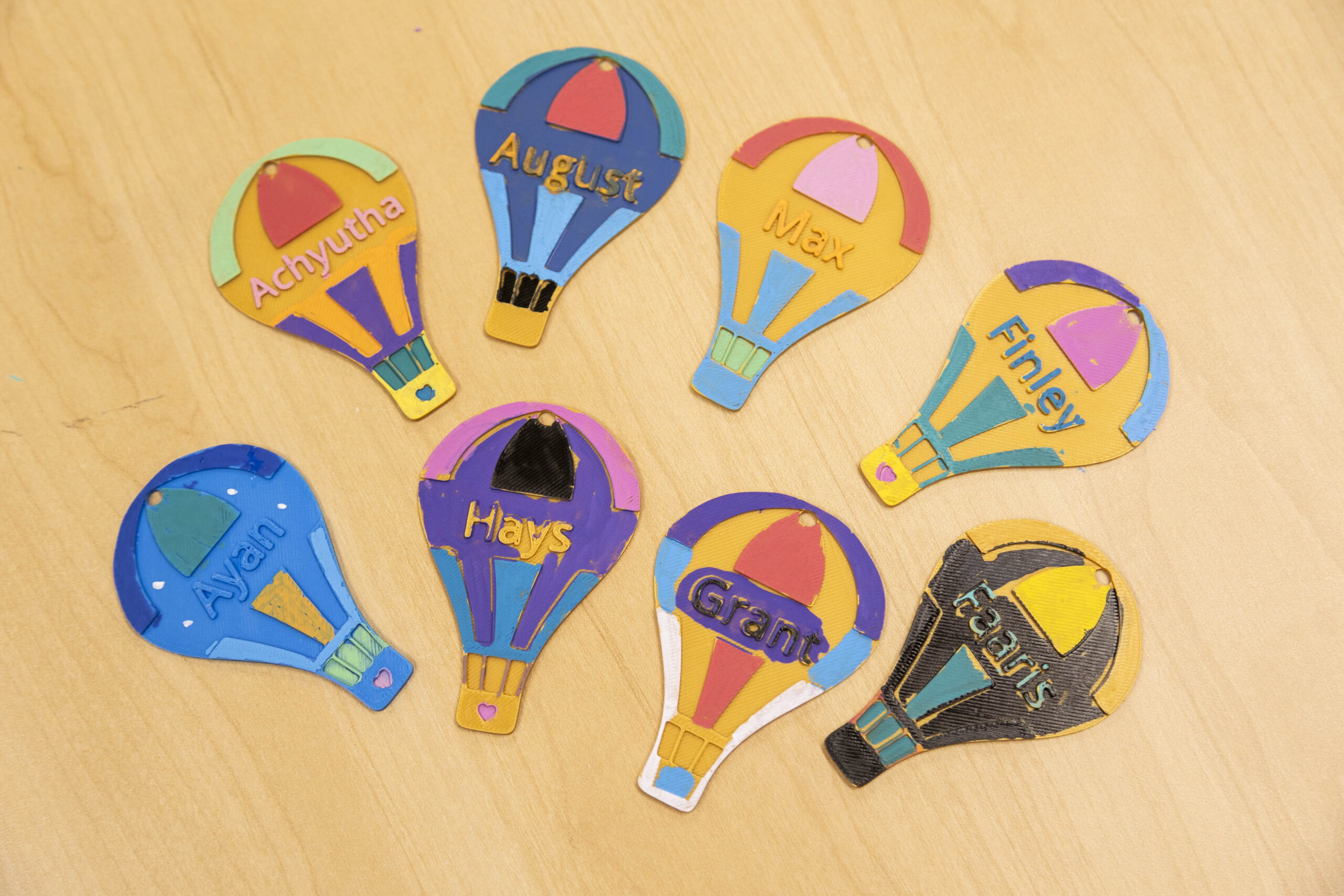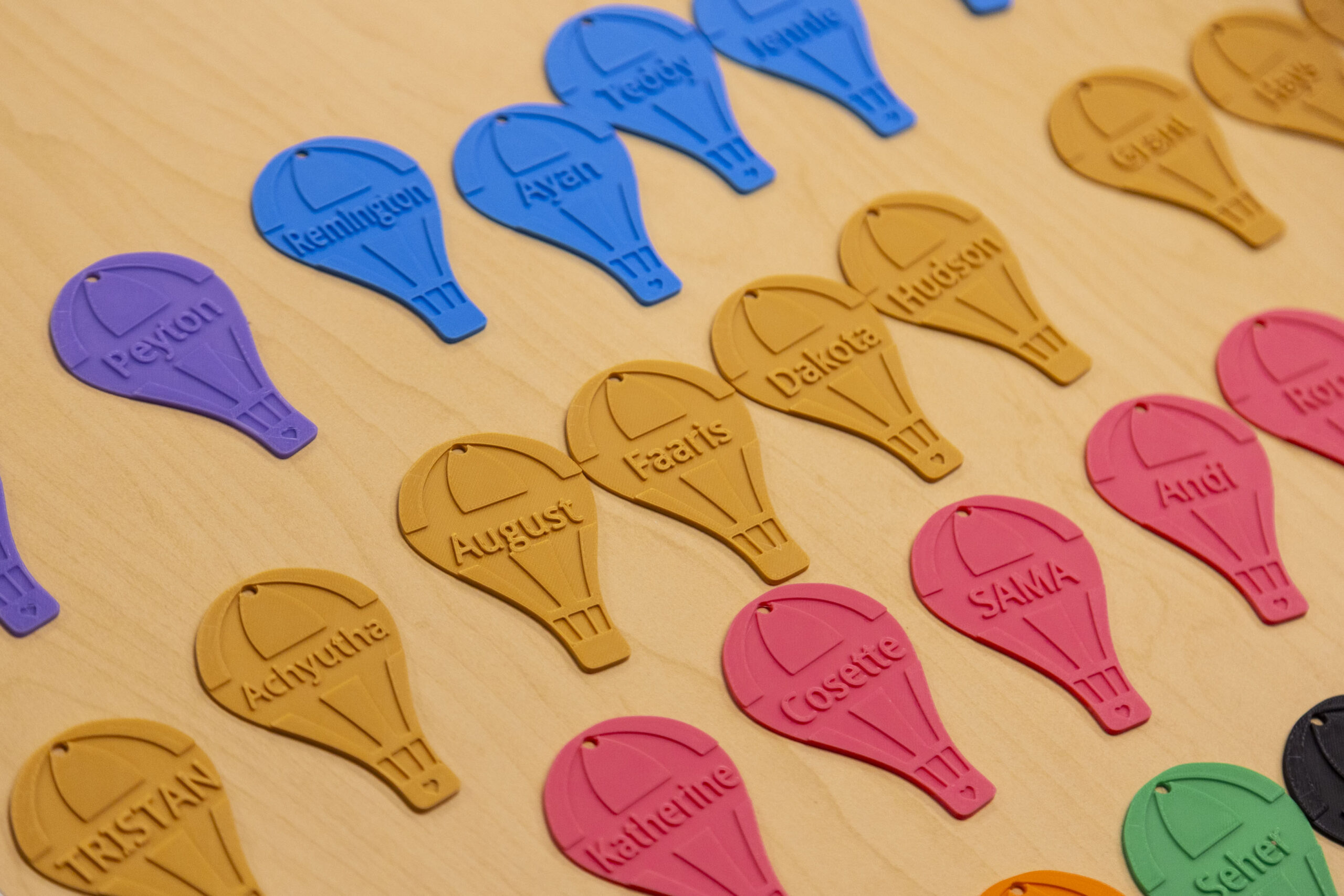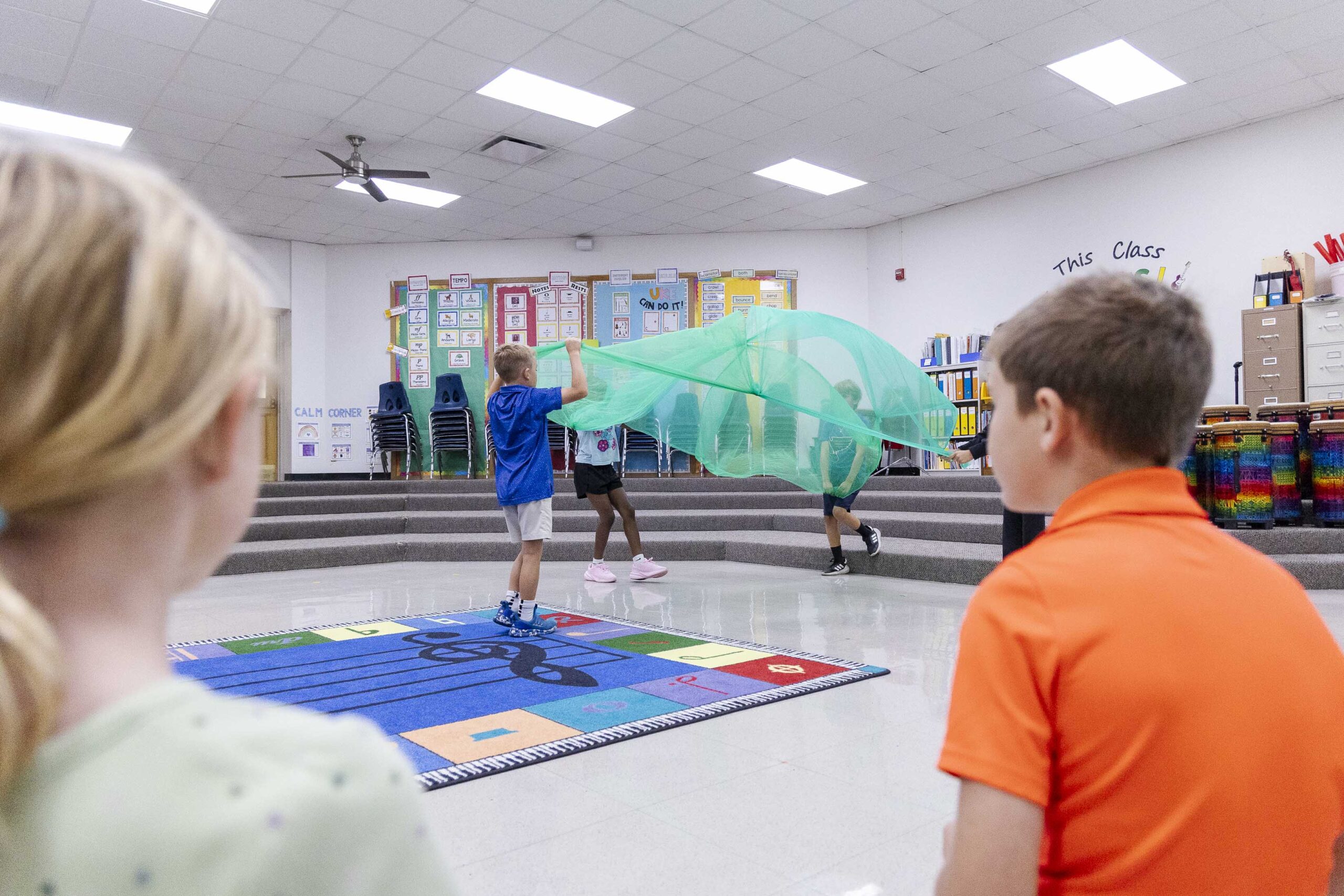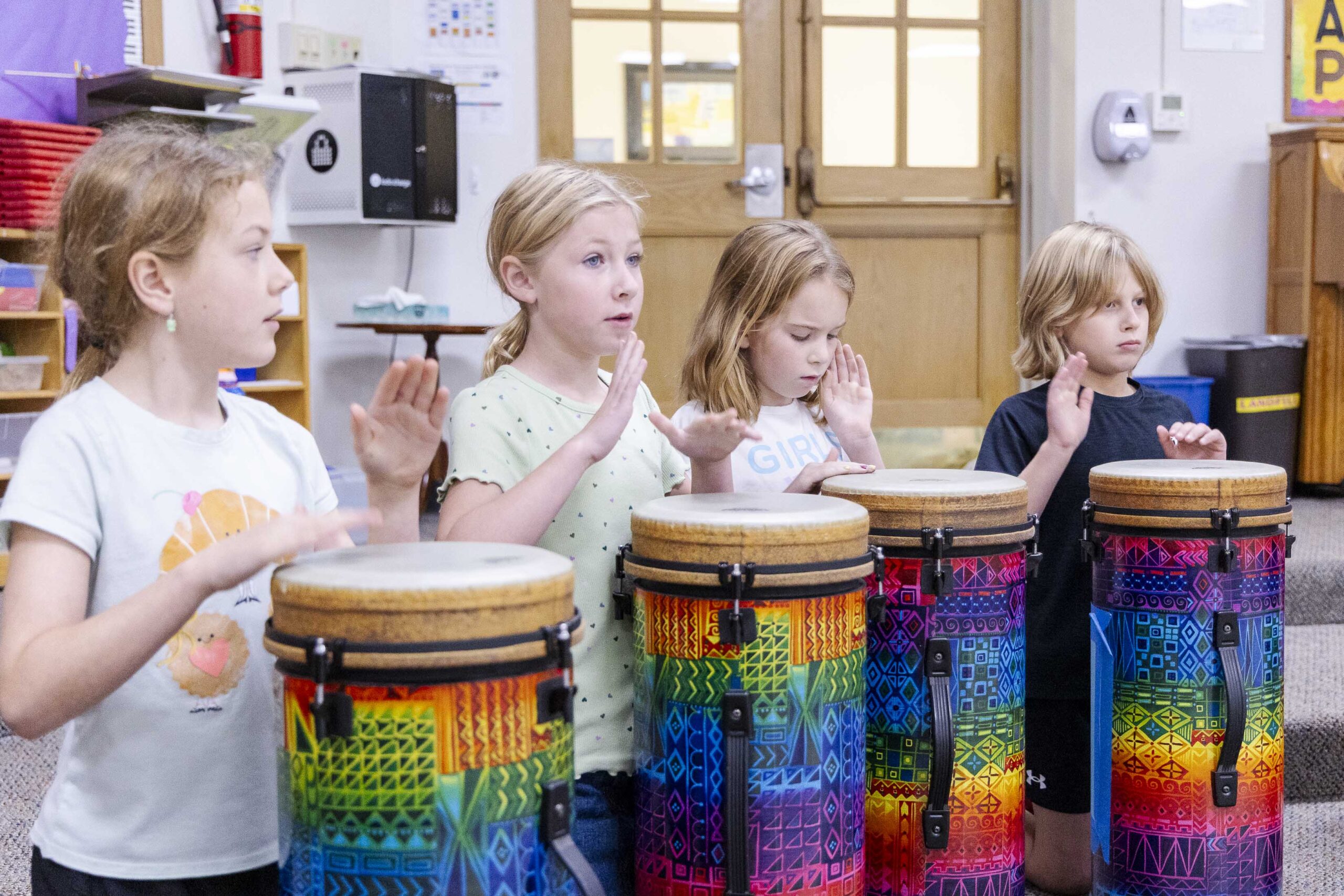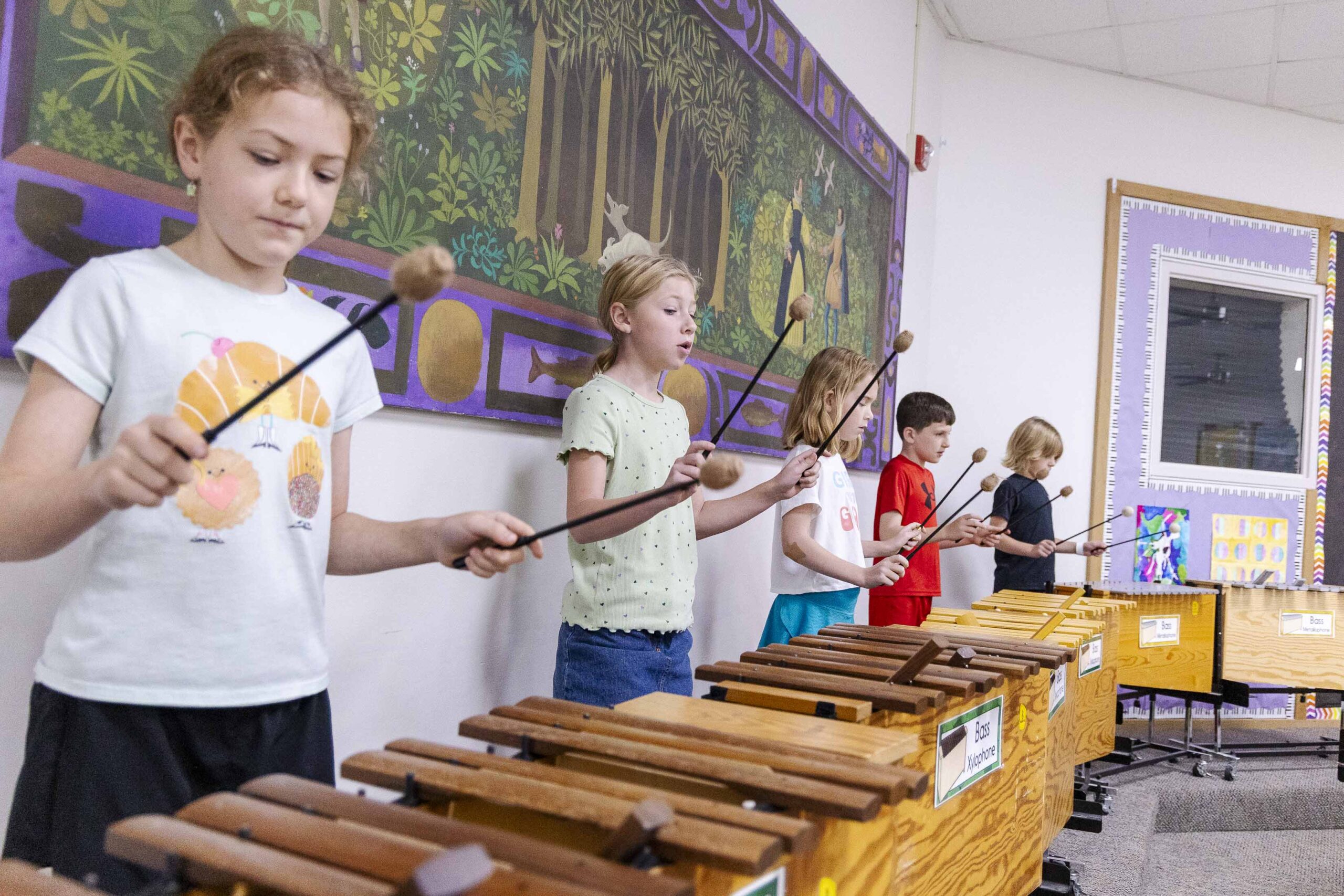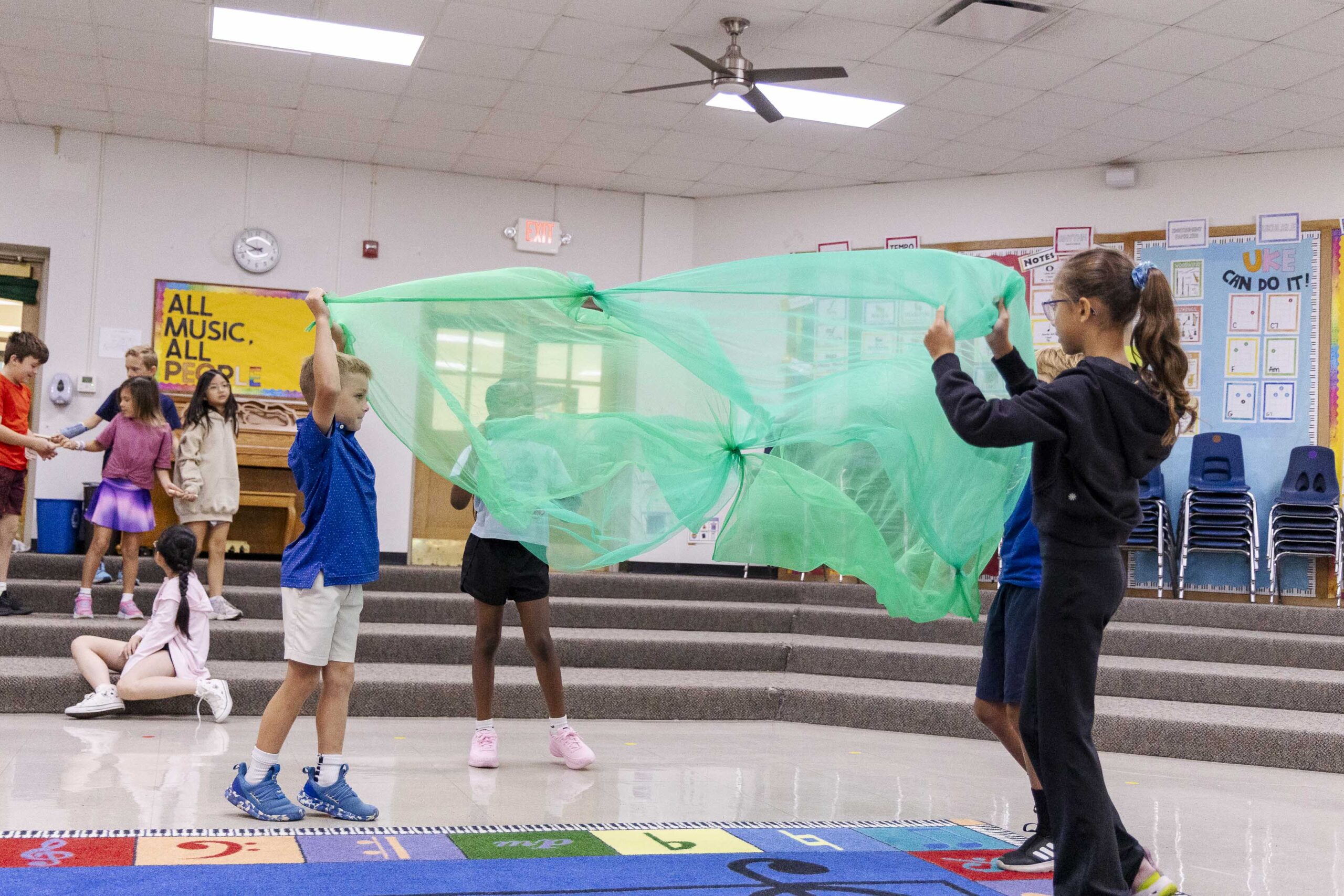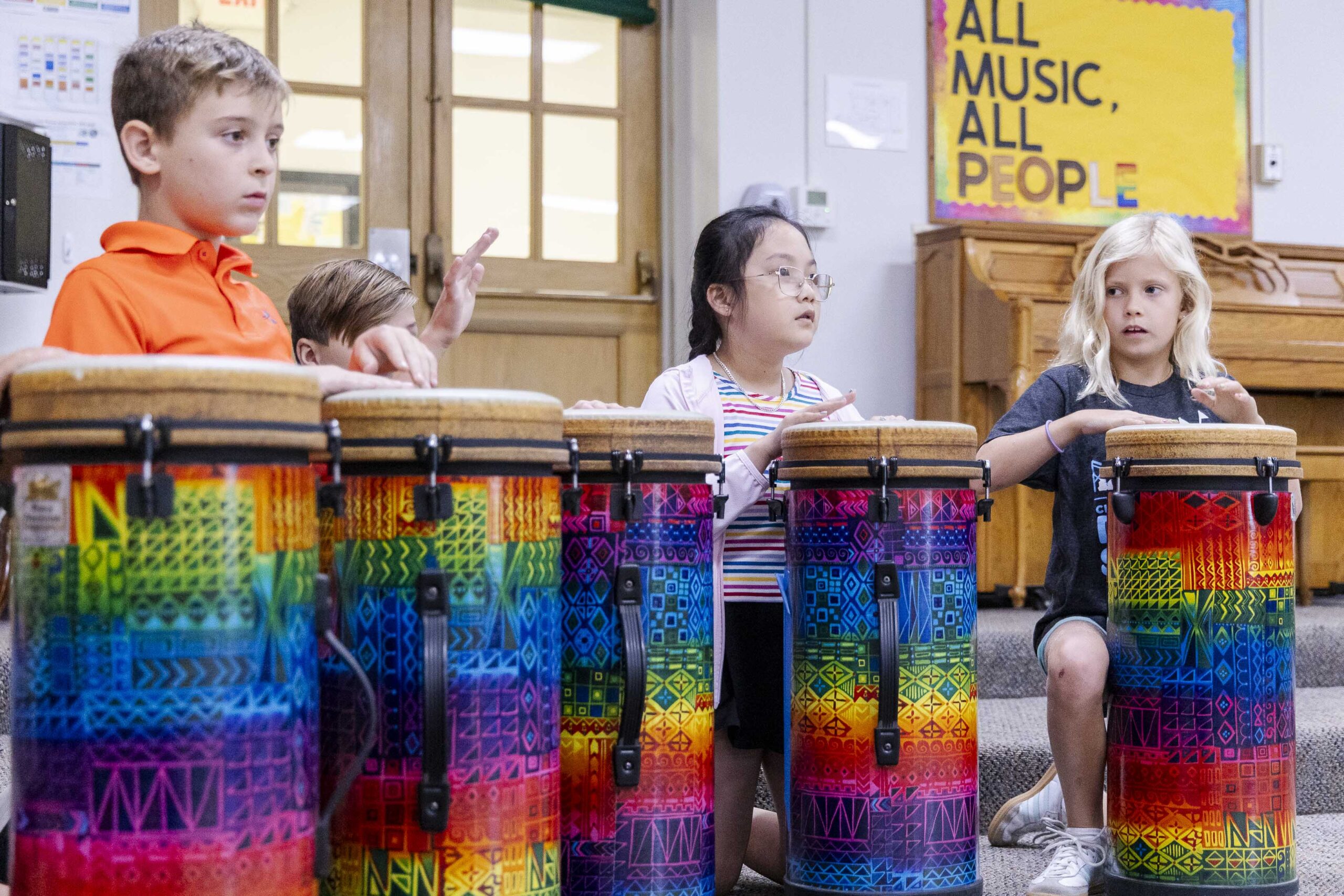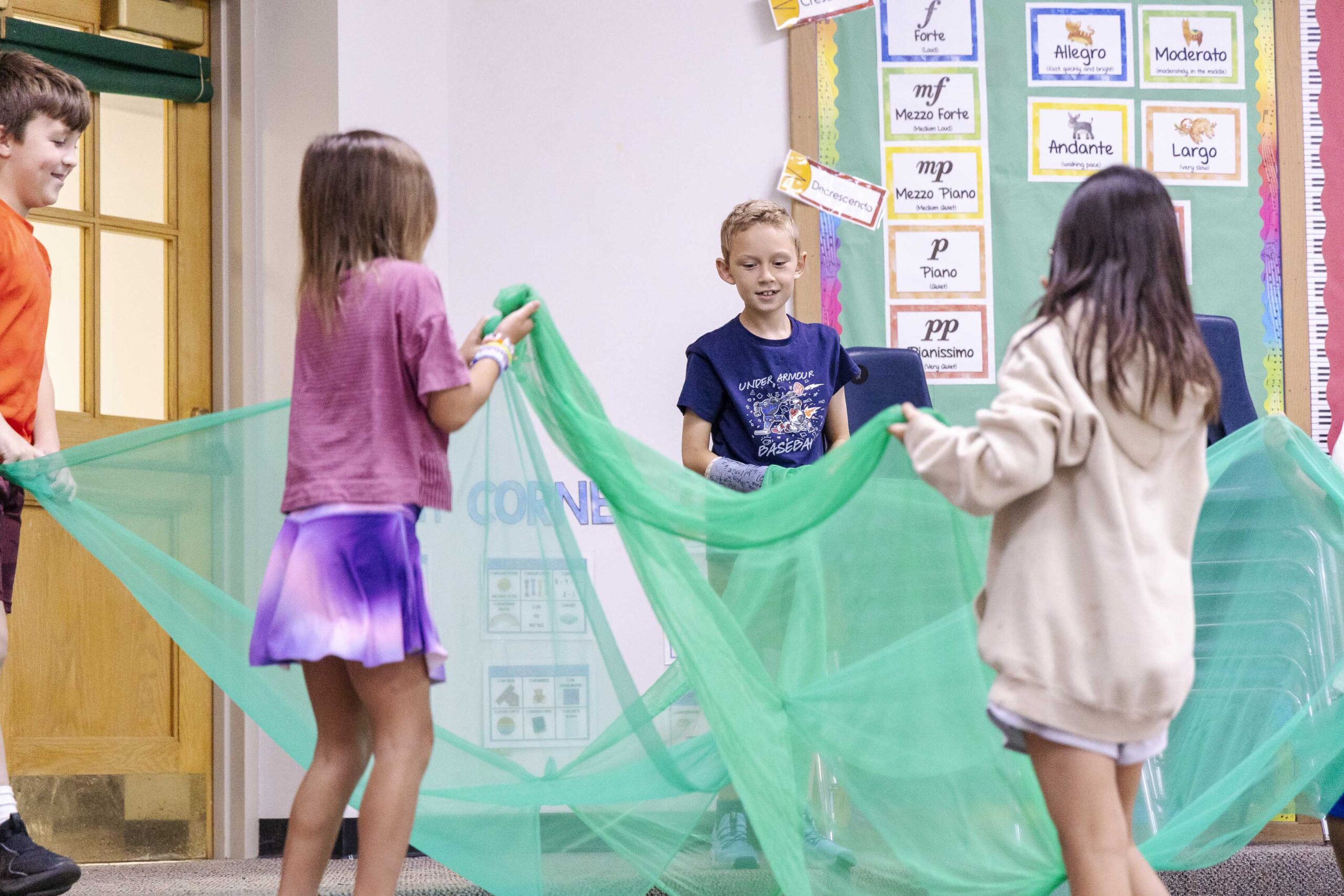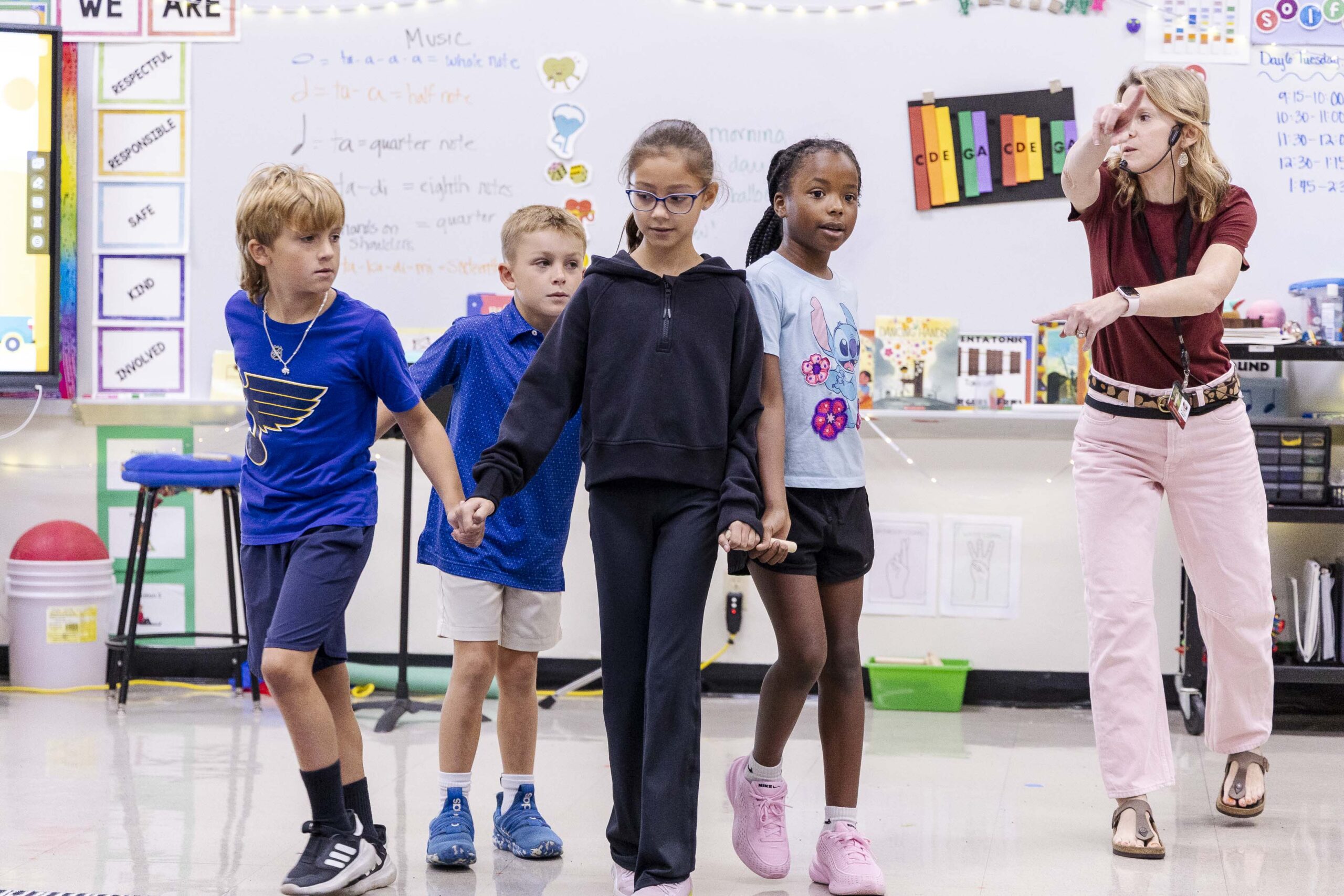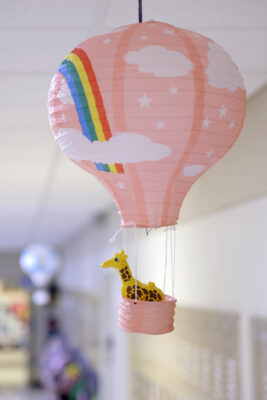 “In a hot air balloon race, it’s not really about who finishes first,” said Susie McGaughey, Lower and Middle School Counselor at a Lower School assembly. “They go at their own pace. They’re all trying to reach their own spot, in their own way. Just like you when you’re working on your own goals.” Her remarks on growth and the individual student journey laid the perfect foundation for this year’s first interdisciplinary focus: Hot Air Balloon Week. The theme not only encouraged students to rise at their own pace but also launched them into a week of hands-on learning across all subjects.
“In a hot air balloon race, it’s not really about who finishes first,” said Susie McGaughey, Lower and Middle School Counselor at a Lower School assembly. “They go at their own pace. They’re all trying to reach their own spot, in their own way. Just like you when you’re working on your own goals.” Her remarks on growth and the individual student journey laid the perfect foundation for this year’s first interdisciplinary focus: Hot Air Balloon Week. The theme not only encouraged students to rise at their own pace but also launched them into a week of hands-on learning across all subjects.
To kick things off, a special traveler with a love for hot air balloons landed on campus for a visit. Jason Henry, author of Up, Up, and Away, joined an assembly and read from his book, a true story about the first hot air balloon, and discussed his research, writing, and illustration process.
Students learned that just like the inventors in his book, everything starts with an idea. Mr. Henry’s message to the students was to dream big, experiment, and not give up!
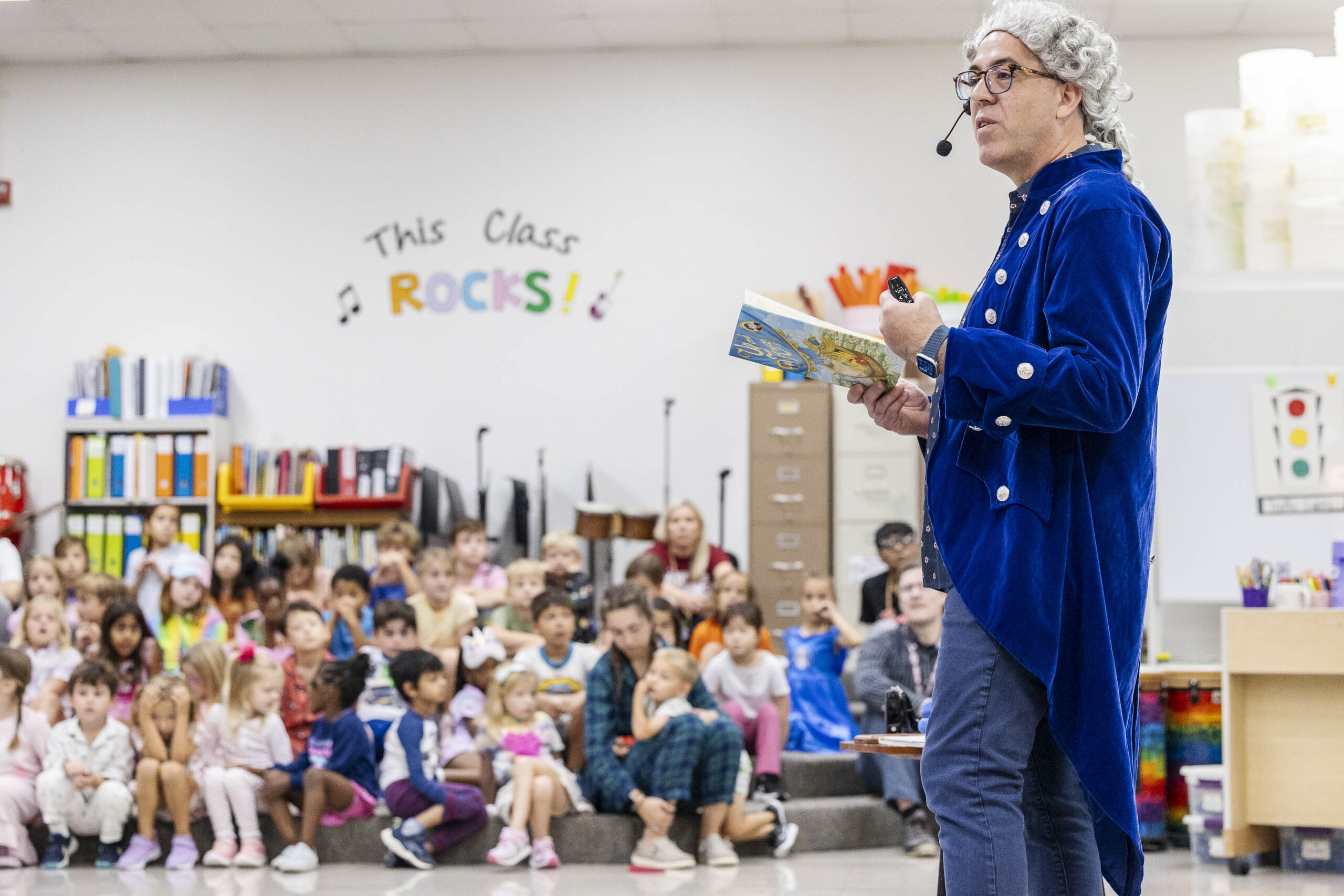
What followed was a week filled with activities across all disciplines centered around hot air balloons.
Language Arts
In addition to daily read-alouds of books about hot air balloons, faculty introduced The Writing Revolution‘s Single Paragraph Outline (SPO), with the help of Lower School Literacy Coordinator Liz Crowder. Students practiced building well-structured, coherent paragraphs by creating an SPO as a class, using topic sentences about hot air balloons. This exercise focused their analytical thinking and reinforced the week’s content knowledge with a clear structure that simplifies the writing process.
Library
In addition to a curated selection of lofty books for each classroom, Lower School Librarian Thomas Buffington and Library Assistant Nicole Liebman created a custom hot air balloon LibGuide with resources such as games, informational content about the Great Forest Park Balloon Race and the Albuquerque, New Mexico International Balloon Fiesta, PBS videos, and resources from the Smithsonian’s National Air and Space Museum, which helped students understand the concept of buoyancy in both air and water.
Math
The core mathematical concepts of measurement, estimation, and graphing took flight during Hot Air Balloon Week. JK-12 Science Department Chair Paul Zahller and JK-12 Math & Computer Science Department Chair Diane Broberg brought hands-on math concepts to the Lower School, connecting classroom skills to real-world flight challenges.
Third graders explored graphing and elevation activities, plotting the journey of a balloon as it rises and descends. First graders practiced essential estimation skills by collaborating to estimate how many base ten cubes could fit in a large hot air balloon basket. Each student then worked independently on a miniature version to make their own estimate and later determine the accuracy of their predictions.
Physical Education
In P.E., teachers Susan Orlando and Jim Lohr unfurled classic parachute games to demonstrate physics. Working together, students raised the parachute to create a buoyant, rainbow-colored “envelope” that simulated a balloon flight. The highlight was experiencing the sensation of being enclosed within the large, giggly, wiggly canopy as a memorable lesson in the dynamics of a hot air balloon.
Art
Before Mr. Henry’s visit, Lower School Art Teacher Sarah Garner engaged students in several art activities focused on hot air balloons to ensure they would have plenty of art displayed in the hallways for his visit. From watercolor resist techniques and personalized hot air balloons colored with oil pastels, to sunset landscapes and papier-mâché relief sculptures, the walls were peppered with images of these lofty air-filled vessels.
Science
The science of hot air balloons had its moment in the sun during science time! Lower School Science Teacher Laura Pupillo designed several demonstrations and experiences for students to learn how air temperature affects buoyancy, elevation, and other related concepts.
Using a hair dryer to fill a plastic bag with warm air, students saw firsthand that hot air is less dense than cold air and naturally rises. They made connections between heat energy, air density, and buoyancy, and related these principles to how real hot air balloons lift off the ground.
Fourth graders took it a step further and worked in teams to engineer their own bags. This hands-on activity illustrated energy transfer, which is how heat moves from one place (the dryer) to another (the air in the bag). After testing the bags with a hair dryer, students added birthday candles to see how the heat from the candles also filled the bag with warm air. The balloon slightly lifted off the table, creating excitement among the young engineers. After blowing out the candles, students observed how the balloons deflated as they lost the warm air.
Third-grade students experimented with solar balloons on the playground. They tested variables like shade vs. sun and the size of the solar balloons to see which balloon in which space would rise the fastest. Students used solar balloons to observe how the sun’s energy heats the air, making it expand and rise. They connected this to convection currents, the process that drives wind, weather, and temperature patterns in our atmosphere. This activity linked renewable energy and natural heat sources to real-world science phenomena.
JK through second-grade students explored what happens when a bottle with a balloon is dipped into hot water and icy cold water. Students discovered that warm air takes up more space, and the balloon contracts when it comes into contact with cool air. They observed how heating and cooling can create movement, connecting this concept to the phenomenon of hot air balloons rising and falling. This simple demonstration helped build an understanding of air pressure, temperature, and the behavior of gases.
Students in the first grade worked on learning the parts of a hot air balloon and discussed the materials a balloon envelope is made from. They connected qualities of hot air balloons and parachutes, and engineered their own parachutes to test on the MAC landing. Through parachute experiments, students explored the balance between gravity pulling down and air pushing up, and how the shape and surface area of the parachute affect its speed, leading to the concept of aerodynamics. The more they learned and tested, the more they were able to improve their parachute designs.
Makerspace
Lower School Coordinator of Instructional Technology Robyn Williams created several age-appropriate activities for students.
In Senior Kindergarten, students crafted 3D paper hot air balloons, using the Cricut machine’s precision cuts to create the main balloon body and intricate details, such as paper clouds. They explored diverse materials, incorporating cotton balls, pipe cleaners, and other craft supplies to bring their creations to life. Adding a final personal touch, students used the Chompsaw machine (a kid-safe power tool used for cutting cardboard and other thin materials) to cut out their balloon basket before placing a miniature photo of themselves inside as the pilot.
First graders customized their own hot air balloon keychains using Tinkercad, introducing them to the principles of 3D modeling. After successfully 3D printing their digital designs, they further personalized the keychains using acrylic paint pens to add color and a unique personal touch.
Second-grade students tackled a more complex design challenge, learning how to combine and manipulate three distinct shapes in Tinkercad to create custom 3D-printed hot air balloon bookmarks. This project introduced students to techniques for combining shapes. They personalized their finished bookmarks by adding their names to the design and applying paint after printing, connecting digital design with physical customization.
“Hot Air Balloon Week was the perfect theme to integrate our Makerspace tools into hands-on learning,” said Williams. “Across all three grades (SK-2), students focused on fundamental design skills. What I loved most was seeing each student take the basic template and add their own touch of creativity, resulting in unique designs.”
Music
Lower School Music Teacher Dr. Katy Nichols led students through a unit that explored the annual balloon launches in St. Louis and Albuquerque, New Mexico’s International Balloon Fiesta. They learned and sang a song in 6/8 time about hot air balloons and, in small groups, enacted scenes of balloon riders with large canopy scarves, along with a chase crew, who had to meet up with their hot air balloon as it traveled. All of which was accompanied by students on drumming instruments and bass xylophones.
Spanish
In Spanish, Lower School Teacher Soledad Villagomez led students through vocabulary as part of a Brain Break during class:
- Respira como un globo (“Breathe like a balloon”)
- Cierra los ojos (“Close your eyes”)
- Coloca una mano en el pecho y otra en el estómago (“Put one hand on your chest and the other on your stomach”)
- Inhala y exhala en completo silencio (“Inhale and exhale in complete silence”)
Students enjoyed a follow-along video to learn the “balloon breathing” technique, which helped them relax and focus for the numerous balloon activities throughout the week.
By exploring the science and art of these uplifting flying machines all week, students experienced firsthand that no matter their pace or path, the most important thing is to keep rising.
